You are using an outdated browser. Please upgrade your browser to improve your experience.

Live fully in Vietnam
Vietnam opens its door widely to welcome visitors all around the world! Starting from 15th August 2023, Vietnam extends e-visa validity to 90 days and unilateral visa exemption will be valid in 45 days! We are more than happy to welcome you all here and admire our stunning landscapes, free your soul on white sandy beaches, experience our unique and beautiful culture and meet the people in the most friendly country. Particularly, to indulge in our scrumptious cuisine at Michelin rated restaurants or to join us in outstanding mega culture, music, sports and tourism events! Let’s live to the fullest in Vietnam!
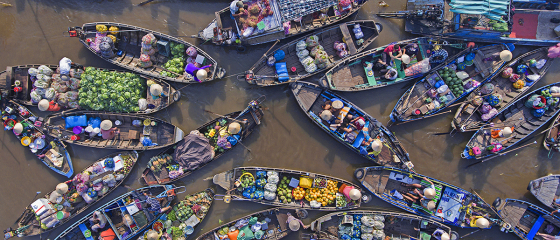
City Breaks
Can Tho: A glimpse of river and garden
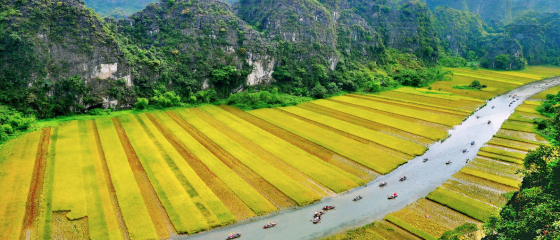
Virtual travel to Trang An Landscape Complex
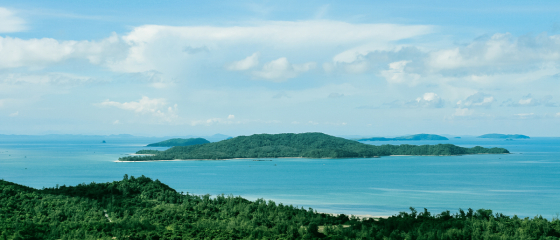
Go green in Co To
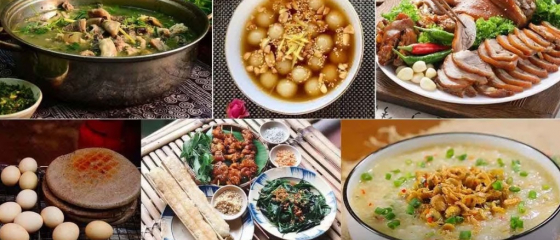
Local unpacked: One of a kind cuisine of Ha Giang karst plateau
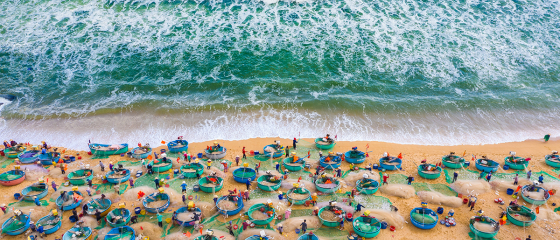
Special daily tours at the Grand Prix of Binh Dinh 2024
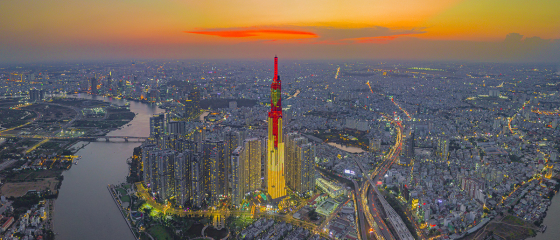
10 Tourist spots not to be missed in Ho Chi Minh City
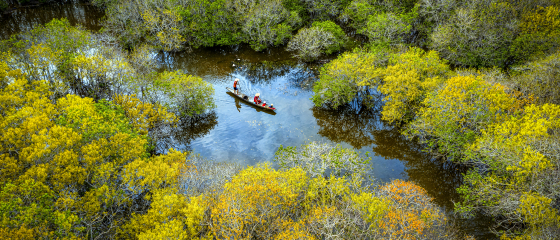
Ru Cha Mangrove Forest: A sleeping beauty of Hue
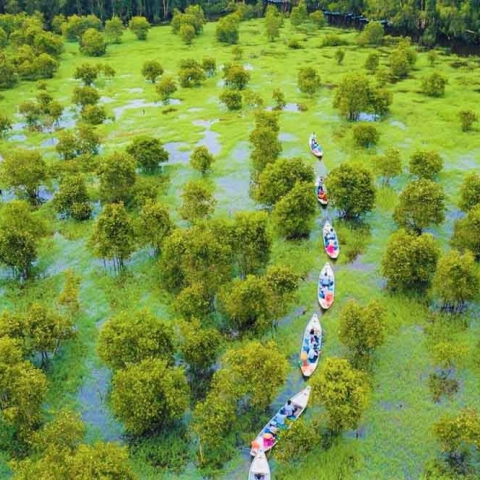
Lost in green wonderland in Tra Su Cajuput Forest
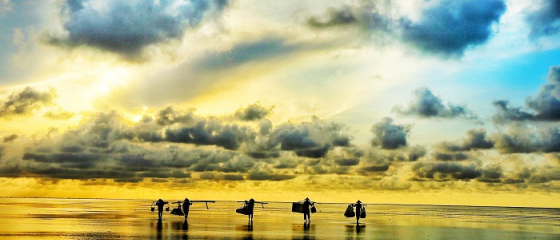
The infinity waters of Quang Lang Beach
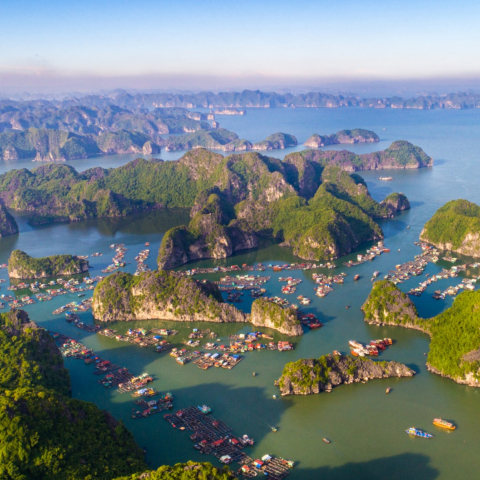
Halong Bay - Cat Ba inter-provincial World Heritage Site: Trending destination in Vietnam
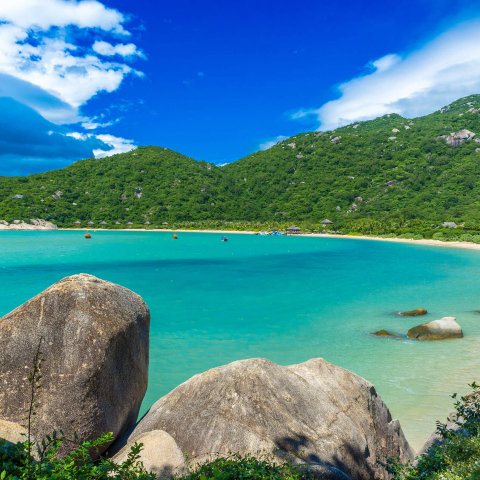
Nha Trang Best Beaches for a Sustainable Vacation
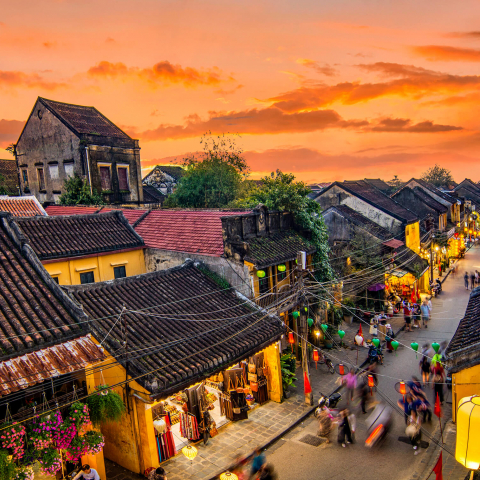
Explore the food of Hoi An
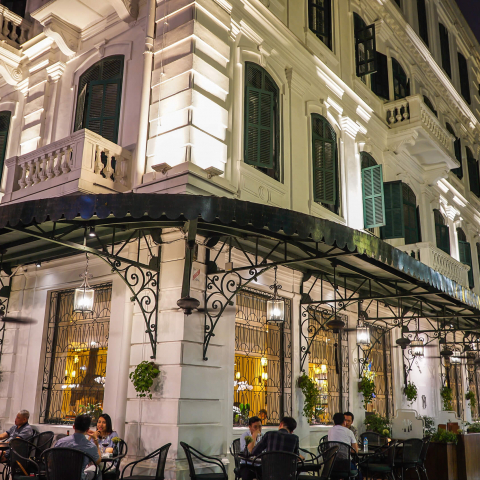
Comfort Meets Culture at Hanoi's Luxury Hotels

Outdoor & Recreational
Binh Dinh - a hot spot for festival goers in 2024

Enjoy the "Fast & Furious" F1H2O World Championship in Binh Dinh
Check out upcoming events in Vietnam
must-see sites
Take a 360-degree tour of some of the country's most compelling natural wonders and cultural attractions right here.
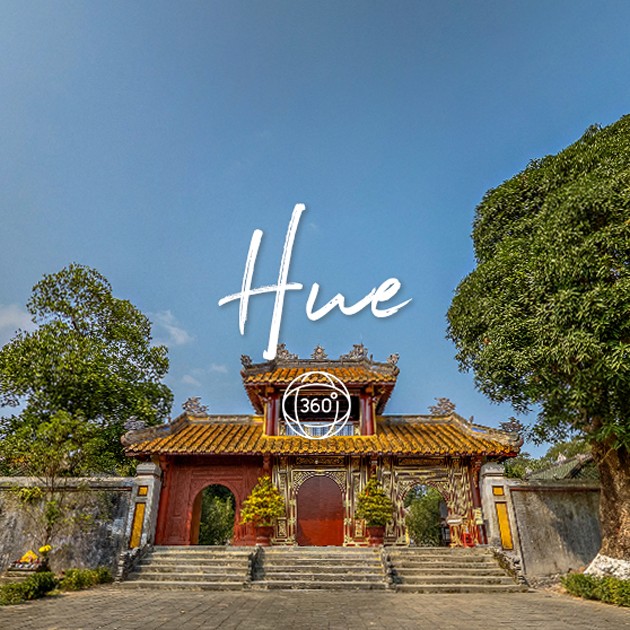
travel tips
Prepare for your trip with these practical articles
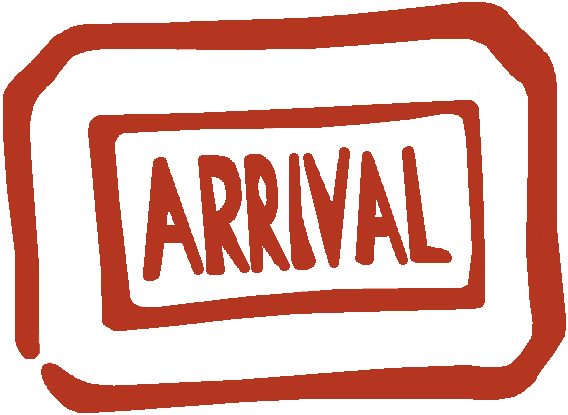
Vietnam through the lens of international news
Find out the reasons why Vietnam is worth to visit

TasteAtlas food rankings are based on the ratings of the TasteAtlas audience, with a series of mechanisms that recognize real users and that ignore bot, nationalist or local patriotic ratings, and give additional value to the ratings of users that the system recognizes as knowledgeable….
- TasteAtlas
Full article

Booking.com
Spring has finally arrived, bringing with it the perfect opportunity to venture out and explore the world.
- Booking.com

Travel Weekly
Visiting the South-East Asian country reminds Thompson Travel’s Sharon Thompson of the wonders of travel…
- Travel Weekly
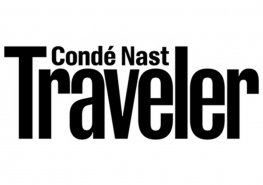
Conde Nast Traveler
To get you started on your next fairy tale adventure, we’ve rounded up 50 of the most beautiful small towns in the world.
- Conde Nast Traveler
share your story
Tag your best #LiveFullyinVietnam moments on Instagram
SHARE YOUR STORY
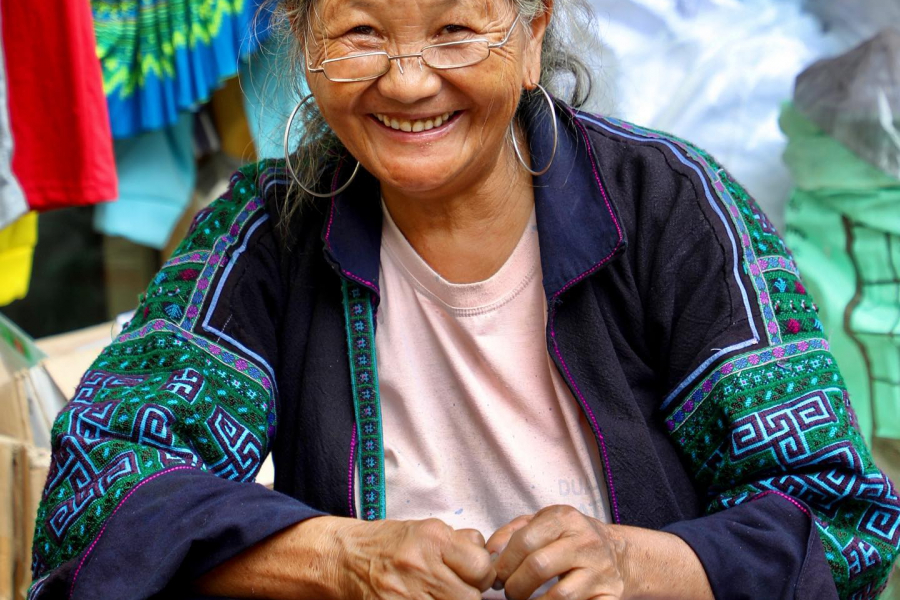
Create an account
Already have an account? Click here to sign in
By clicking submit, you agree to our Privacy Policy and Terms of Use
Sign in with your social accounts
Sign in with your email
Forgot password? Click here to get it back
Don't have an account? Sign up here
Forgot Password
The entered email has subscribed for Vietnam Tourism monthly newsletter
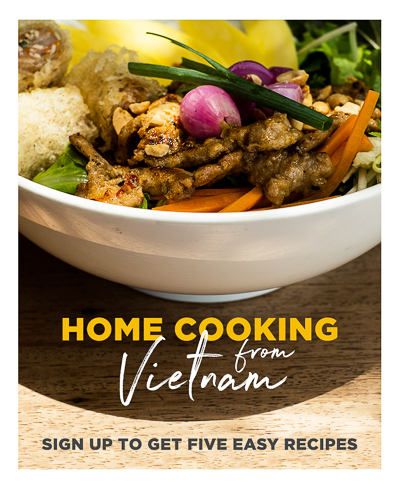

TRAVEL to VIETNAM – Tips and Information Guide (2024 Edition)
Everything you need to know about travel to Vietnam in our comprehensive 2024 Vietnam travel guide.
We get it. You’re wondering what the absolute best destination to travel in Southeast Asia is.
You’ve spent hours researching.
Talked to friends.
Scoured the internet for blogs.
Watched YouTube videos.
And you’ve finally realised something.
Without a doubt, Vietnam is the place for you.
And trust us, as a couple that have travelled the world for over a decade, we think you’ve made the right decision.
There’s a reason Vietnam is our all-time favourite country…
From the tropical coral reefs of Nha Trang to the northern mountains of Sa Pa, travel to Vietnam is one of the most adventurous yet culturally empowering experiences you can have.
One moment you will find yourself haggling for banh mi deep within Saigon and later that day you could be watching a breathtaking sunset from the Mekong Delta.
Vietnam is more than a country. It’s an experience.
You’ll find yourself immersed among street food vendors cooking up exotic cuisines such as pho along streets with stores selling suits and ties.
Or you’ll be cruising the waters of Halong Bay while monkeys jump from island to island.
Or you might find yourself trekking to the highest peak in Vietnam, Fansipan soaring to over 3,100 metres!
Not into adventure activities? Homestays are the perfect way to spend your day as the monsoon rains fall across the endless snaking rivers of the Mekong.
Vietnamese hospitality is unrivalled and is something that you should experience once in your life, so what are you waiting for? Say good morning Vietnam! And go get lost!
So we’ve convinced you to travel to Vietnam? Awesome!
Now check out the basic information about the country in our Vietnam travel guide.

25 BEST Things to Do in Hue, Vietnam (2024 Edition)
The perfect vietnam itinerary for 1, 2, or 3 weeks, canyoning in dalat – what it is really like, travelling in vietnam: at a glance.
Here are the basics about travel to Vietnam.
OTHER MAIN CITIES:
Ho Chi Minh City (Saigon), Da Nang, Hue
Vietnamese Dong (see current exchange rate ). 1USD approximately = 23,000 dong. 1 beer = 30,000 dong ($1.30USD)
ENTRY / VISA:
Travellers from most countries in the world are required to have visas. In most cases these can be obtained upon arrival for either 3 or 6 months. For information about your specific visa requirements click here.
Vietnam is fairly safe for travellers. Petty theft tends to be the biggest concern and always be on the lookout for taxi scams. Also of concern are minor auto/motorbike accidents. This is one place it’s great to have travel insurance when visiting.
ELECTRICITY:
220 Volt at 50Hz. Power plugs – Type A: 2 vertical pins, Type C: 2 round pins, Type F (also known as Schuko plug): 2 round pins (Be sure to get your universal travel adapter before you leave)
TRANSPORTATION:
Intercity travel is possible by plane, train and bus. Within cities, towns and villages you can expect to get around on bicycle rickshaws, motorbike taxes, taxis and bus.
Don’t Forget to Pack the Most Important Thing: Travel Insurance !
TOP 5 TRAVEL EXPERIENCES IN VIETNAM
With so much to see and do in Vietnam, it really is hard to pick the top experiences.
However, we think that to truly appreciate Vietnam you need to plan to do these 5 activities during your visit.
Take the Overnight Train from Hanoi to Sapa
Said to be one of the most eye-opening train rides in the world, as you pass through lush forests, rice paddy fields on your way to the Vietnamese – Chinese border.
Book your train ticket here .
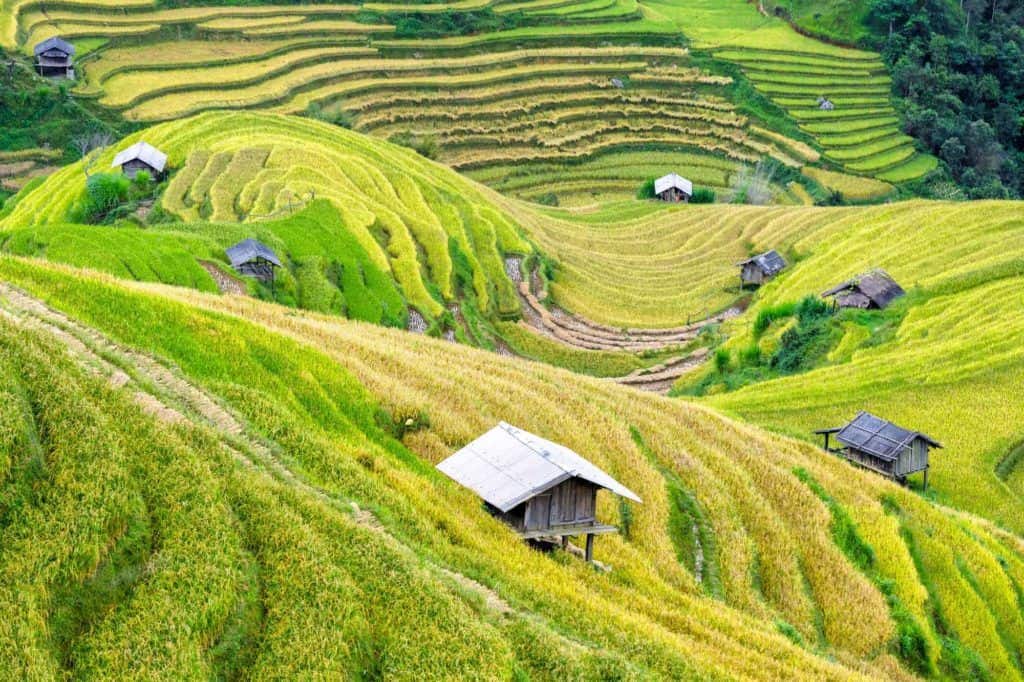
Hike Through the Rice Terraces of Sapa
Explore the area with the local hill tribes. Stay with them during your trek. And enjoy the beautiful terraced countryside for which Sapa is known.
Here’s our full post about trekking in Sapa .
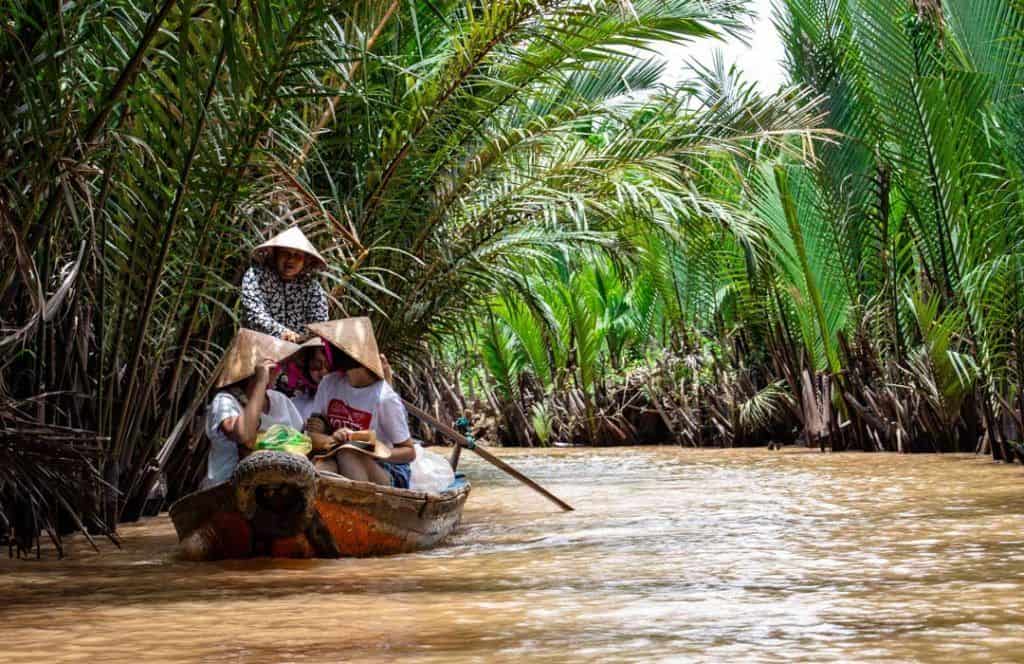
Cruise the Mekong Delta
Probably one of the ‘must do’s of Vietnam.’ The Mekong Delta is full of hidden gems including floating markets, friendly locals and late afternoon storms.
Book a multiday tour of the Mekong Delta
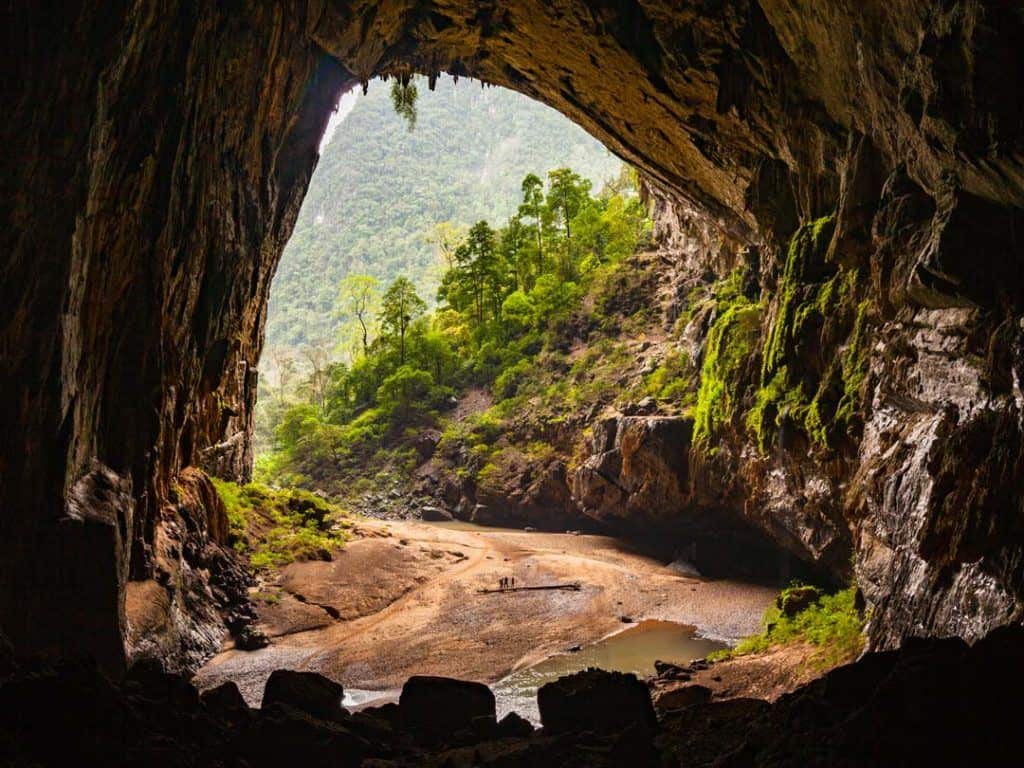
Go Caving in Phong Nha
Caves there can fit a 747 plane in it. They are massive and spectacular. This is an adventure you will never forget.
Book your Phong Nha cave tour
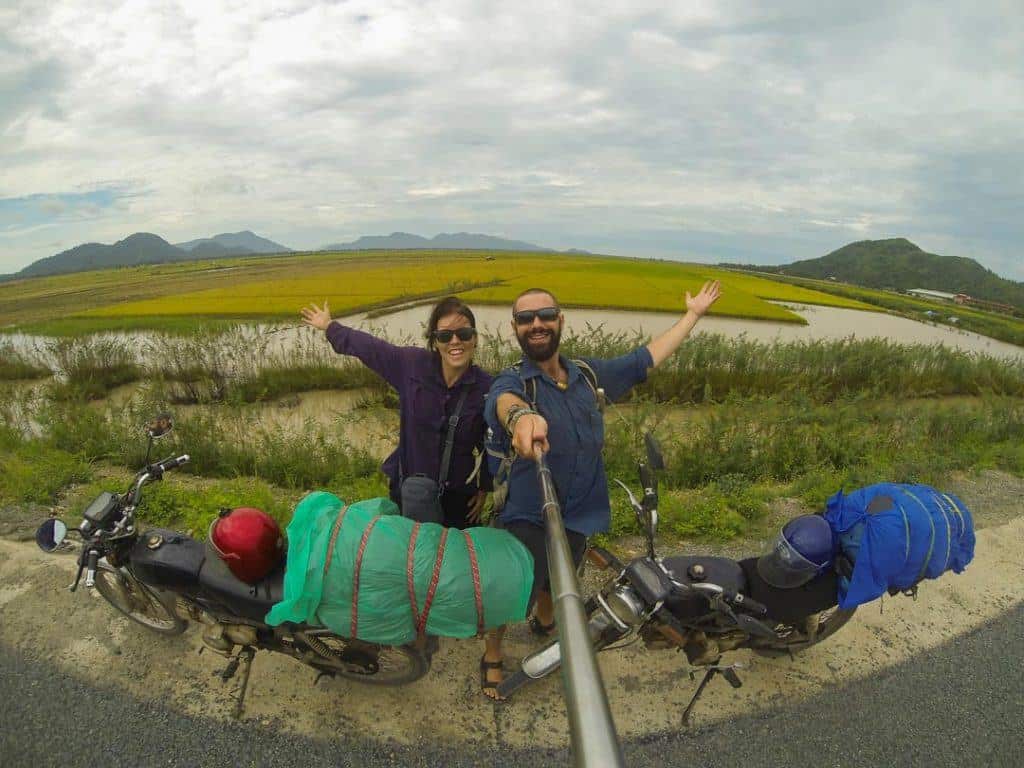
Ride a Motorcycle
Yes, that’s right! Hiring a motorcycle or scooter is a must. But maybe do it out on the country roads. Opt for the famous ride to the mountain village of Dalat, or pretty much anywhere throughout the country.
Read about how to ride through the famous Hai Van Pass
Other Things to do in Vietnam
Learn to cook Vietnamese food . Eating delicious Vietnamese food is one thing. Eating it after you’ve learned to prepare it is another!
Scuba dive in Nha Trang. You may not think of Vietnam as a big scuba location, but there is some great diving to be had in Nha Trang.
Go canyoning in Dalat. Rappel, slide, jump and climb your way through canyons in this gorgeous place!
Explore the Marble Mountains in Da Nang. These beautiful mountains have been mined for marble for years and have incredible views and temples to visit along the way.
Sandboard down the sand dunes in Mui Ne. It’s like snowboarding, but down massive sand dunes! Enjoy this rush!
Visit the Giants Causeway in Ghan Da Dia. Half the world away from the Giant’s Causeway in Northern Ireland, be amazed at this unique geologic structure .
Visit the Cu Chi Tunnels outside of Ho Chi Minh City. No trip to HCMC is complete without touring these historic tunnels that were used during the war.
Conquer the Hoi An Pass on a motorbike . This is known as one of the most beautiful sections of highway in the world. Enjoy!
Explore the world’s biggest cave . We have a special connection with Hang Son Doong as it is where we were engaged. Make your own special moment too!
Climb the highest mountain in Indochina in Sapa. Fansipan is over 3,000m above sea level and offers incredible views along the way to the top!
BE SURE TO CHECK OUT THESE OTHER AMAZING THINGS TO DO IN VIETNAM
READ MORE...
A First-Timer’s Guide to Trekking in Sapa
The 11 Best Things to Do in Da Nang, Vietnam (2024 Guide)
33 BEST Things to Do in Vietnam (Epic 2024 Guide)
10 BEST Things to Do in Ninh Binh, Vietnam (2024 Guide)
Scuba Diving In Nha Trang – Is It Worth It?
BEST PLACES TO VISIT IN VIETNAM
There are plenty of amazing places to visit in Vietnam. Depending on your interests, trip duration and time of year you will find plenty of things to do during any length of stay.
When slurping a bowl of pho in a local market or exploring an ancient temple, it’s easy to feel like you’ve stepped into a time machine in Ho Chi Minh City.
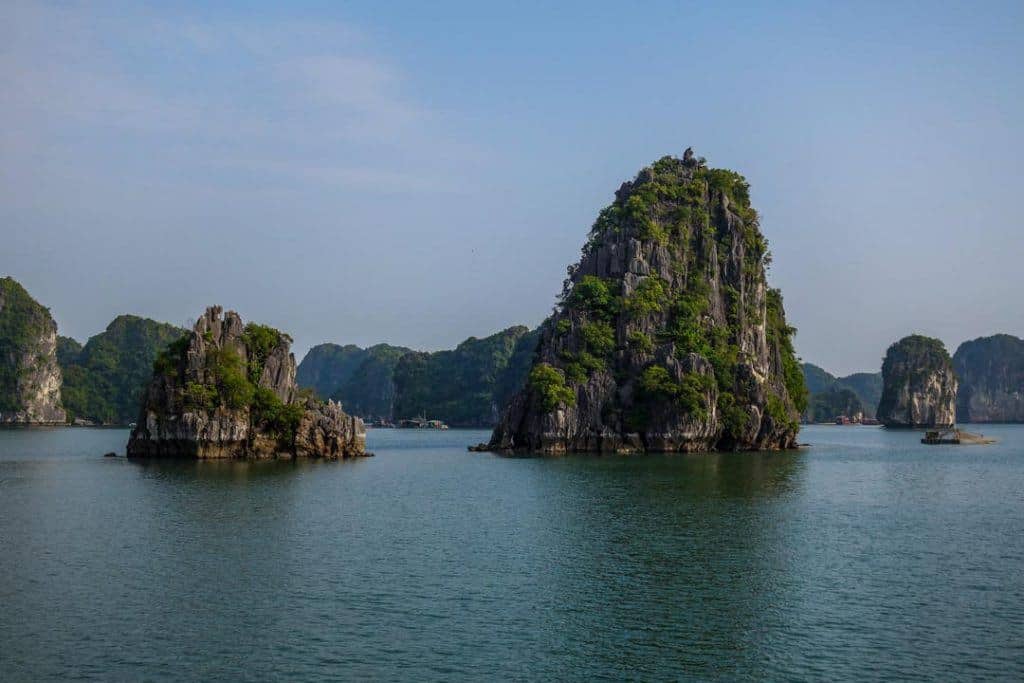
A collection of over 3,000 limestone islands providing endless kayaking opportunities. Take the time to relax aboard a boat or venture to Cat Ba National Park for mystical waterfalls!
Book your tour of Halong Bay
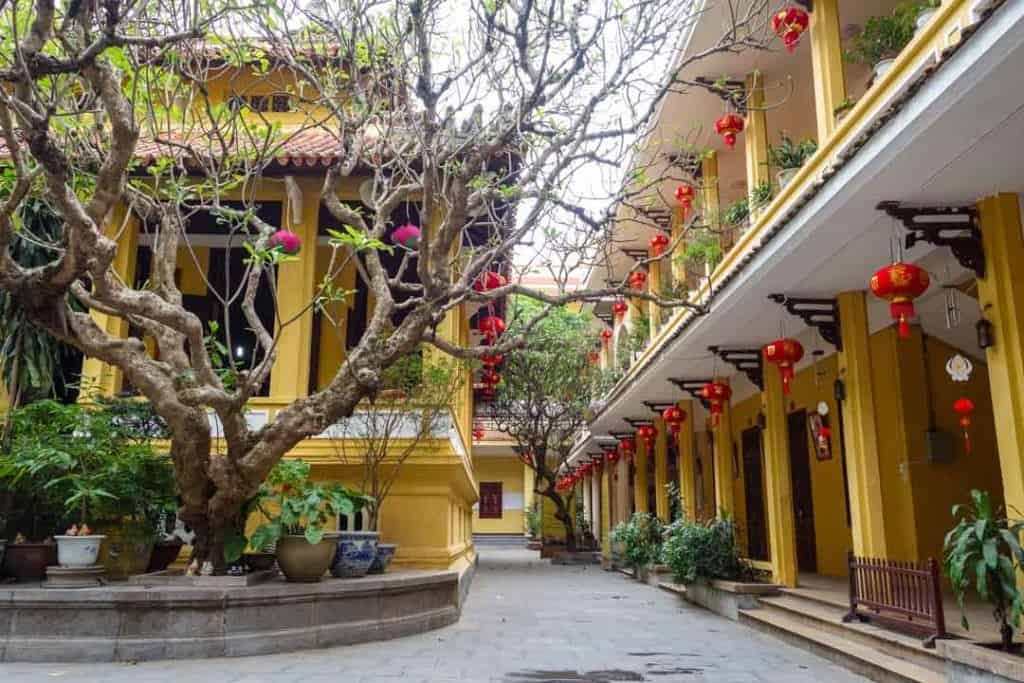
The capital of Vietnam is also one of the most ancient capitals in the world. The history of Hanoi is rich, devastating and full of legends. This mystical city is also known for its cuisine, silk, buzzing nightlife as well as cultural diversity.
Plan your 3-day Hanoi itinerary
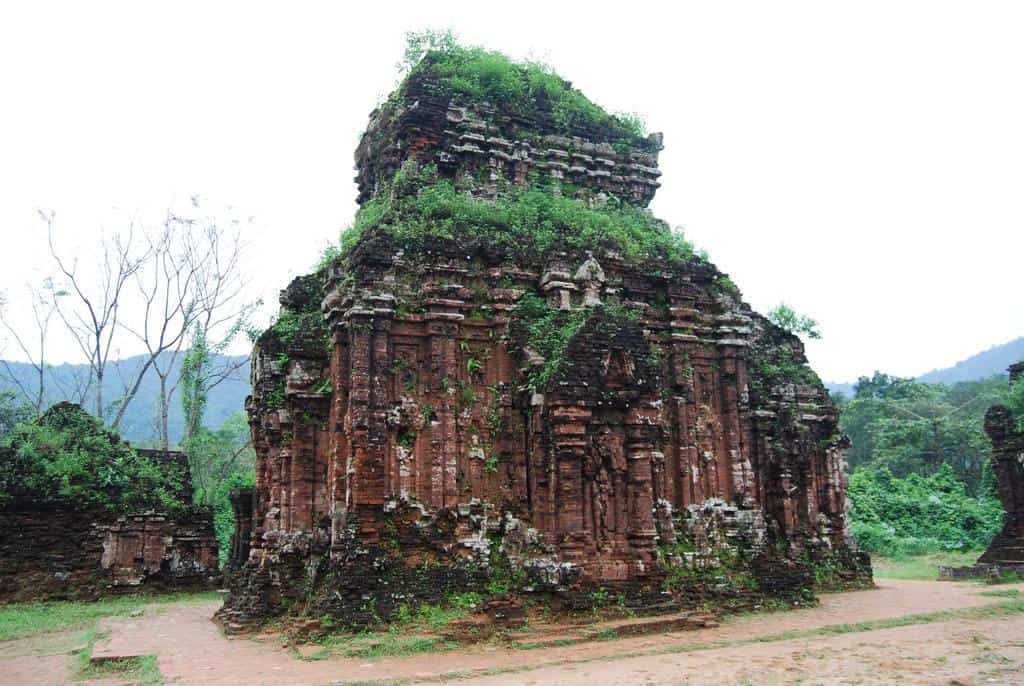
My Son Temple
Ancient temples dating back 1,000 years give a culture understanding into Vietnam’s past all while showing the scars of the war.
Book an early morning tour of My Son
For more information on specific things to do in the top places to visit in Vietnam, reference our following city travel guides:
Ho Chi Minh City:
* Ho Chi Minh City Itinerary * Day Trips from Ho Chi Minh City
* Hanoi Itinerary * Day Trips From Hanoi
Dalat Hoi An
Da Nang Hue Ninh Binh
BE SURE TO CHECK OUT THESE OTHER AWESOME PLACES TO VISIT IN VIETNAM.
BEST VIETNAM TRAVEL ITINERARY
We’ve put together a few Vietnam itineraries that are sure to leave you wanting for nothing at the end of your visit.
There are so many amazing things to do in Vietnam that planning an itinerary for your travel can be a little overwhelming.
Even though the country is one united nation, you can think of it geographically as being divided into a northern and southern region.
So depending on how much time you have, you may want to explore the northern region, southern region or the entire country.
Of course, no one-size-fits-all plan will suffice. But if we were to head back to Vietnam these are the top places and things that we would want to do!
1-Week Vietnam Travel Itinerary Highlights
Most people spend at least a month went hey travel to Vietnam. But if you had just one week, or were willing to split a few weeks between the northern and southern regions, this is how we’d spend our time!
Northern Vietnam
- Fly into Hanoi
- 2 nights – Hanoi
- 2 nights – Halong Bay or Bai Tu Long Bay
- 2 nights – Sapa
- Alternative to Sapa – 2 night in Hue
- Fly out of Hanoi
Central Vietnam
- Fly into Hanoi or HCMC. Get a local flight down to Dong Hoi
- 3 nights – Phong Nha
- 2 nights – Hue
- 2-3 nights – Hoi An
- Fly out of Da Nang to either Hanoi or HCMC to leave
South Vietnam
- Fly into Ho Chi Minh City
- 2 nights – Ho Chi Minh City
- 2 nights – Mekong Delta
- 2 nights – Dalat
- 1 night – Mui Ne
- Fly out of Ho Chi Minh City
READ MORE: Check out this post for more details on our Vietnam travel itinerary .
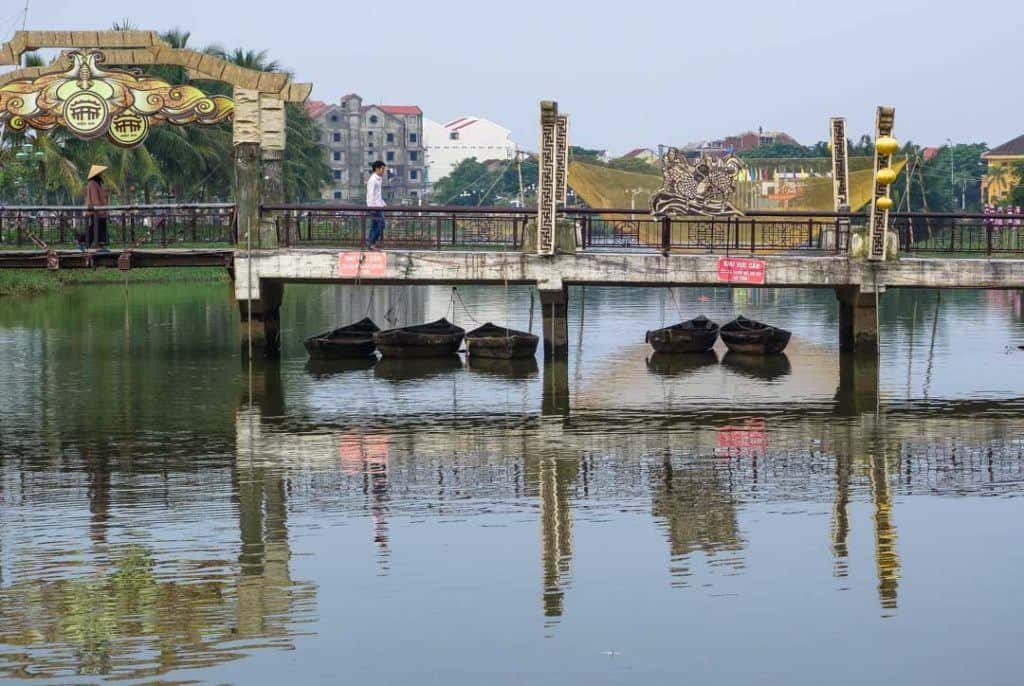
VIETNAM TRIP PLANNING
Best time to visit vietnam.
The best time to travel to Vietnam really depends on what you are looking for in terms of weather, scenery and budget.
Peak season occurs from mid-December through to February. But expect prices to double during this time. The low season is perfect for those on a budget.
- Low Season – April to June, September to November
- Shoulder Season – December to March
- High Season – July & August
Northern Vietnam – The best months to travel Northern Vietnam are April to May or September to October. There are mostly sunny days and the rain has stopped.
The weather gets really cold from December to March and is not suited for hiking or sailing a junk boat in Halong Bay that time of year.
Central Vietnam – The best months for travel to Central Vietnam are January to June. There are heavy rains in October and November and the really hot months are from May to August.
Southern Vietnam – The best months to explore Southern Vietnam are January to April where conditions are beautiful.
You really can travel the south at any time of the year. Just note that from May to November there are afternoon downpours.
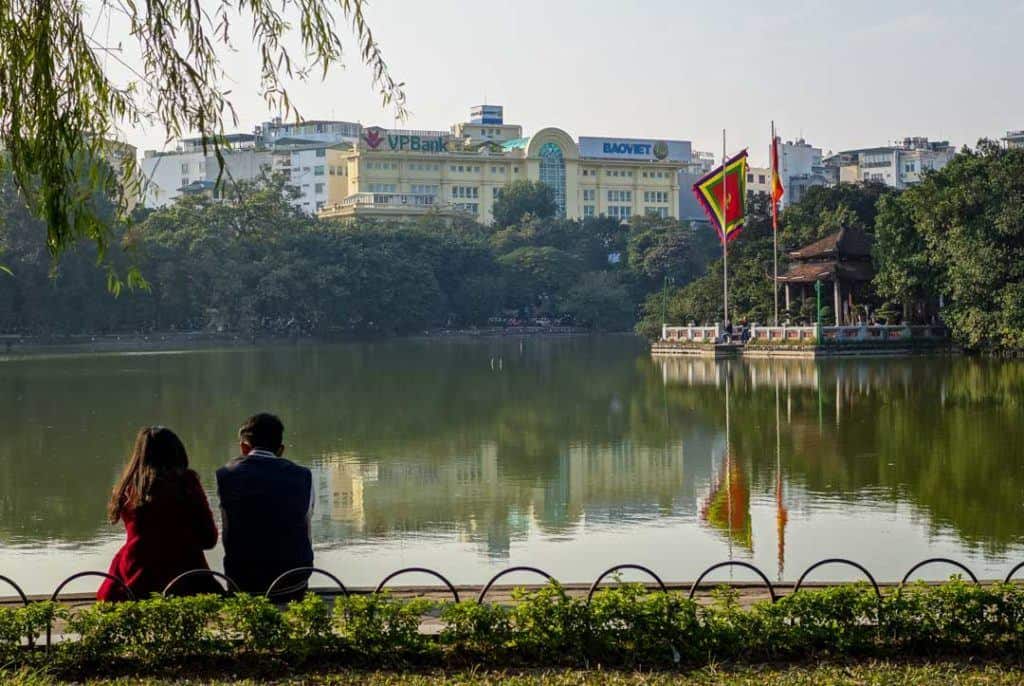
VIETNAM TRAVEL BUDGET GUIDELINE
Vietnam is a cheap country to travel if you want it to be, this all depends on what your budget is like. Our advice is always over-budget when making plans, and if you come home with money, it can go towards your next trip. All prices below are in USD per day.
Budgeting Tips
To make your money go further here are a few tips:
- Eat street food as often as possible. You can usually fill up for $1-2USD.
- Travel in groups when possible. Staying in hostels will lead to making friends. And with friends, you can split transportation costs and barter on other expenses.
- Negotiate taxi fares before taking the ride. Vietnamese taxi drivers are notorious for flexible fares that tend to fall int heir favor. Don’t be afraid of a little negotiation.
- Drink bia hoi . Sure it’s not the more delightful beer. But it is shipped in fresh each day, it’s cheap and it’s what the local drink.
- Take in the sights for free. Do a little research and walk the streets on your own. You’ll also find there are a number of free tours and other opportunities if you ask around.
- Sleep on overnight busses for longer trips. Combine the transportation and accommodation line items of your budget and save a few dollars.
But there are a few things you should know about the different budgets at which you can choose to travel.
Note: Budgets shown as Single Traveller / Couples per day.
Budget Traveller ($35 Single / $50 Couples)
If you are on a backpacker budget and planning on staying in dorm rooms, getting street food, drinking a few nights of the week, I would budget for about $35 a day.
A single hostel bed can be $5-$8 per person. A budget basic private room is $15-$20. A street food meal can be $1-$2. A bottle of beer is about $1- $1.50 and a bia hoi is $0.20 per cup. This is not the nicest beer. But it is passable and you get to make new friends when drinking it.
Walking or taking public transport will keep your budget down. There are many free things to do, you just need to think outside the box.
Mid-Range Traveller ($100 Single / $120 Couple)
If you have a little more cash in your budget your travels in Vietnam will become a lot more comfortable.
A nicer hotel is definitely affordable.
There are restaurants where you will pay more than the street food price. But the food is definitely of nicer quality (most of the time). The local beer can get a little too much sometimes so you will be able to enjoy an international beer or wine.
For the attractions you are most interested in, get a guide and learn more about the history of the country. You’ll be able to commit much more of your budget to do things rather than cutting corners just to stay alive.
Luxury Traveller ($90+ Single / $120+ Couple)
You don’t have to have that much more to enjoy a luxury trip to Vietnam. With a few more dollars in your budget, a nicer hotel is definitely affordable. Eat and drink anything you would like at virtually any restaurant.
You can hire transportation without having to haggle. And you can pretty much do any tour you would like to do when visiting any part of Vietnam.
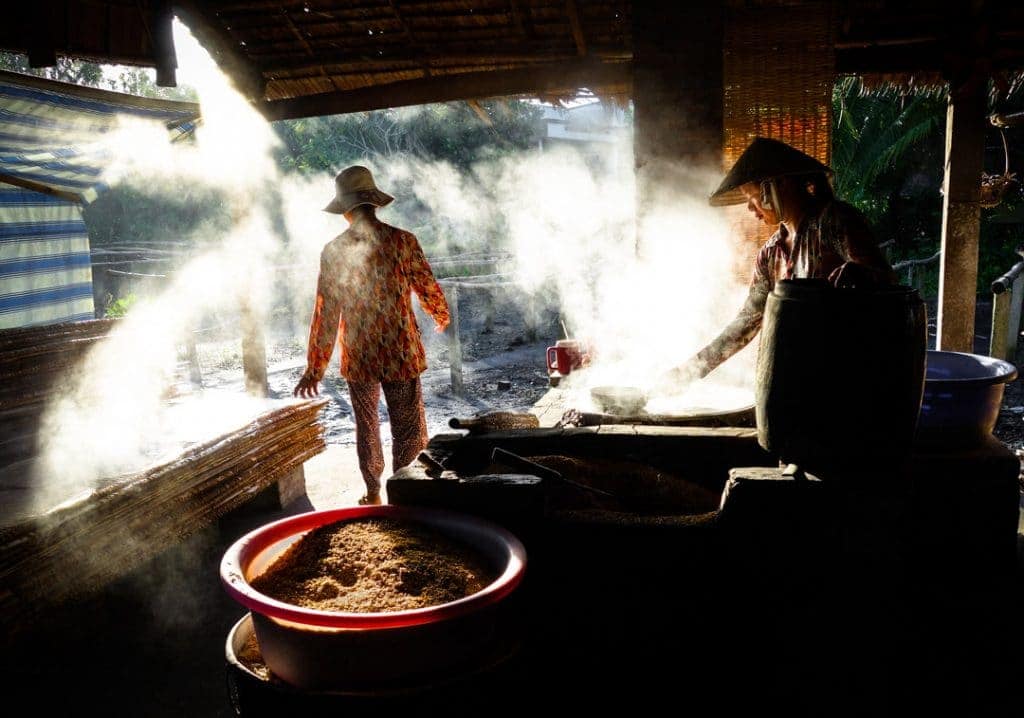
GETTING TO AND AROUND VIETNAM
Entry requirements.
Most travellers are required to have visas when travelling to Vietnam, which can typically be arranged upon arrival. You are typically allowed to stay for 3 – 6 months, depending on nationality.
For information about your specific visa requirements click here
Additionally, Vietnam has introduced an electronic visa (e-visa), which costs $25 USD and is granted for single entry visits for up to 30 days.
You no longer will have to apply through an agent to get an invitation letter or queue at the airport immigration for hours waiting to receive your visa upon arrival.
Apply in advance here .
Once you are approved, all you need to do is print the visa out and present it on entry to Vietnam. Don’t lose this e- visa print out as you will need this during your travels in Vietnam.
Hotels will ask for it on check-in at the accommodation and travel agents may ask for it if you are booking flights.
Also, print out your travel insurance as well. Immigration will ask for this also as they want to know you are covered if you fall ill or get injured during your stay.
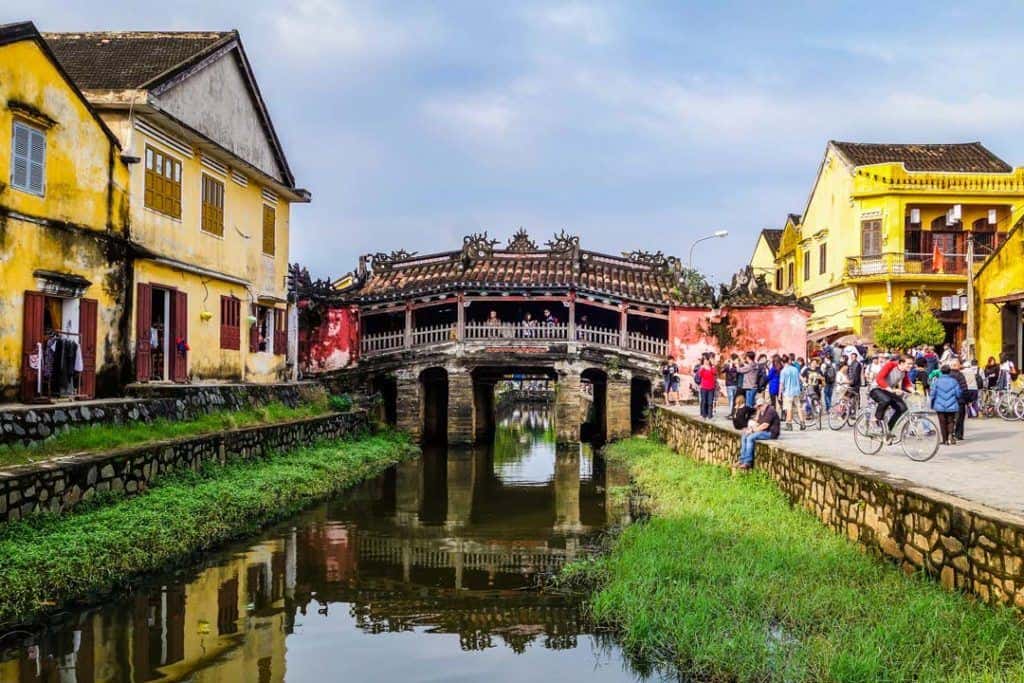
Getting to Vietnam
There are a number of different ways to travel to Vietnam, depending on where you are coming from and how you like to get around with transport.
There are a lot of different airlines that fly to Vietnam from all over the world. There are two major international airports in Vietnam: Tan Son Nhat Airport (SGN) in Ho Chi Minh City in the south and Noi Bai Airpot (HAN) in Hanoi in the north.
Direct flights to Vietnam from Australia, Europe and North America are still limited, but it is improving. You will most likely have to book a flight with a stopover in either Hong Kong, Bangkok, Kuala Lumpur, Seoul or Singapore.
There are many domestic airports scattered among the country. Vietnam Airlines is Vietnam’s national carrier. We have flown with them several times and they are amazing.
You can cross into Vietnam by train from China, all the way from Beijing to Ping Xian. This is the Dong Dang Crossing which is 160km from Hanoi.
After you have crossed the border hop on a train to Hanoi. Don’t buy the direct ticket from Beijing to Hanoi. It works out cheaper to buy your ticket from Beijing to Ping Xian then cross the border and purchase another ticket from Dong Dang to Hanoi.
If you do the train trip from Beijing through to Hanoi, it will take 36 hours so it is best to book a sleeper. Make sure you have your visa organised before getting to the border.
You can bring your own food and drinks for the train or purchase them from the cafeteria on board. There are squat toilets on board and areas to store your luggage.
You can get to Hanoi or Ho Chi Minh City through either the Cambodia, Laos or China borders. There is a route from Vientiane (Laos) to Hanoi, and one from Siem Reap or Phnom Penh to Ho Chi Minh City.
Most travel agents in Vientiane, Siem Reap or Phnom Penh will sell the tickets or at your accommodation. You can also get a minivan from Guangzhou through to Hanoi.
Make sure you have your visa ready. The border crossings by land may not be set up as well as others.
If you want to book any of your bus trips online rather than trying to deal with travel agencies in the country, you can do so on the popular website Bookaway .
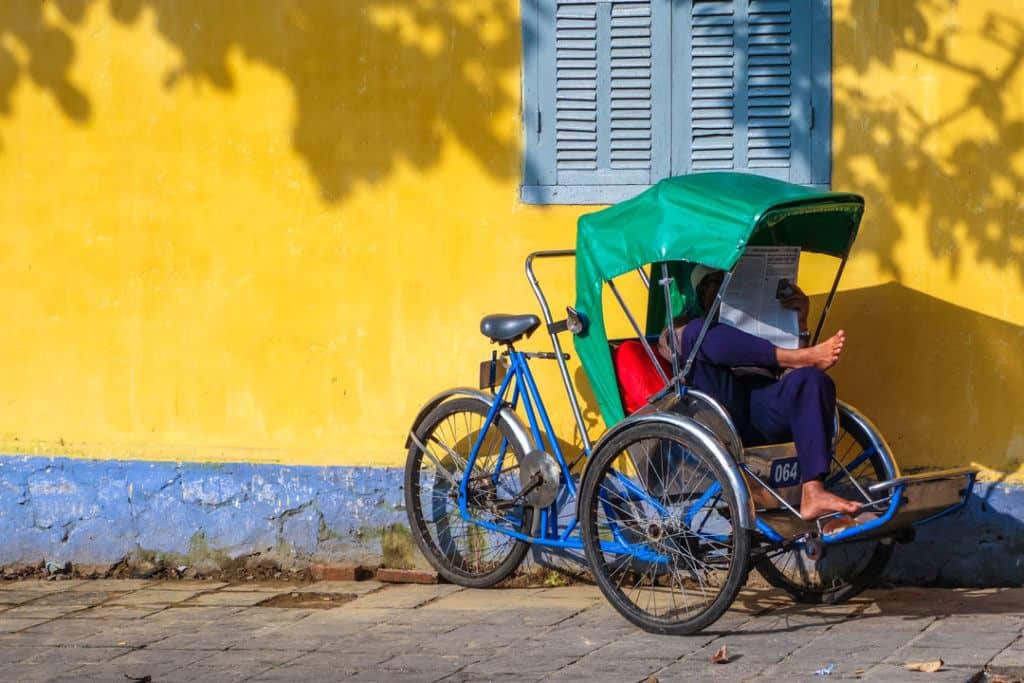
Getting Around Vietnam
Getting around Vietnam is surprisingly easy. Public transport goes everywhere, and there are plenty of moto-taxis that are happy to take you to the places that public transport won’t reach.
Travelling by Air
The fastest way to get around the country, of course, is by air. There are many domestic airports all over the country and you can fly in from major cities.
You can get cheap flights within the country through VietJet Air and Vietnam Airlines. For the best deals head directly on the airline’s website.
Travelling by Taxi, Tuk Tuk Or Mototaxi
When you are in the cities and town catching a taxi, tuk-tuk or moto-taxi can be the best way to get around. For taxi companies, look for the biggest and most reputable companies as you can be ripped off.
For the tuk-tuks, ask your accommodation the average price to your destination so you can agree on a price with the driver.
We recommend Uber and Grab (car or motorbike) which you can use an app and get the price.
Travelling by Bus
It is possible and advisable to travel by bus throughout Vietnam. Busses inside of cities can be complicated and should be a last resort.
However, when travelling long distances in Vietnam busses are a great option. This is especially true if you take night busses and sleep during the ride.
Travelling by Motorbike
We think travelling by motorbike is the best way to see Vietnam if you have the time. Buy your own motorbike and ride the length of the country. Or you can choose one area and explore Northern Vietnam or South Vietnam.
Here’s our post to help guide you on how to buy a motorbike in Vietnam .
Travelling by Train
Taking the train is a great way to get around the country. They are great for overnight journeys as the trains have bed cabins.
In Vietnam, there are many places with roadwork that can last for years. So trains can be the best way to go.
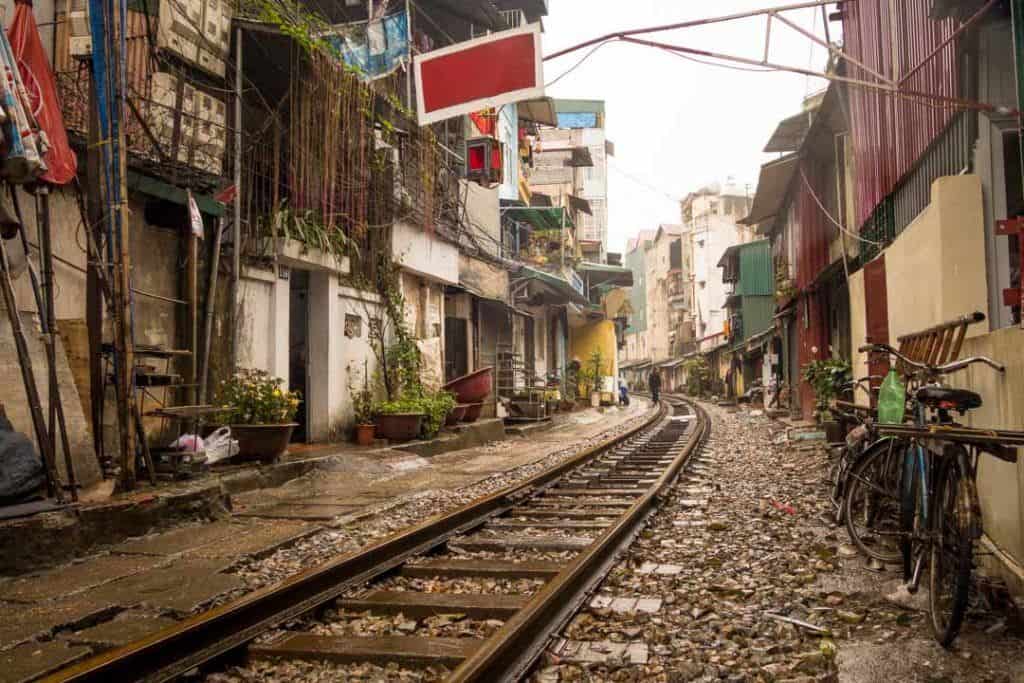
APPS AND TECHNOLOGY
We know you’ll absolutely love travelling in Vietnam. But technology has made it easier, more affordable and safer to travel than ever.
Here are a few apps we think you should definitely acquaint yourself with prior to your travels:
Grab – Use this app to catch a ride from any metro area in Vietnam.
XE Currency – Transfer, monitor and calculate currency as the need arises. This app may not be totally necessary as you are typically tied into rates the banks charge for services. But it is handy to have around.
Express VPN – This will protect your sensitive information wherever you travel – not just in [Country]. Be sure to have this to keep your online information secure as you travel.
iTranslate – Even if you don’t know more than a handful of Vietnamese words, iTranslate will help you communicate as you travel in Vietnam.
WiFi Finder – With this app, you no longer have to guess whether the next place on your itinerary has WiFi or scramble across town looking for hot spots.
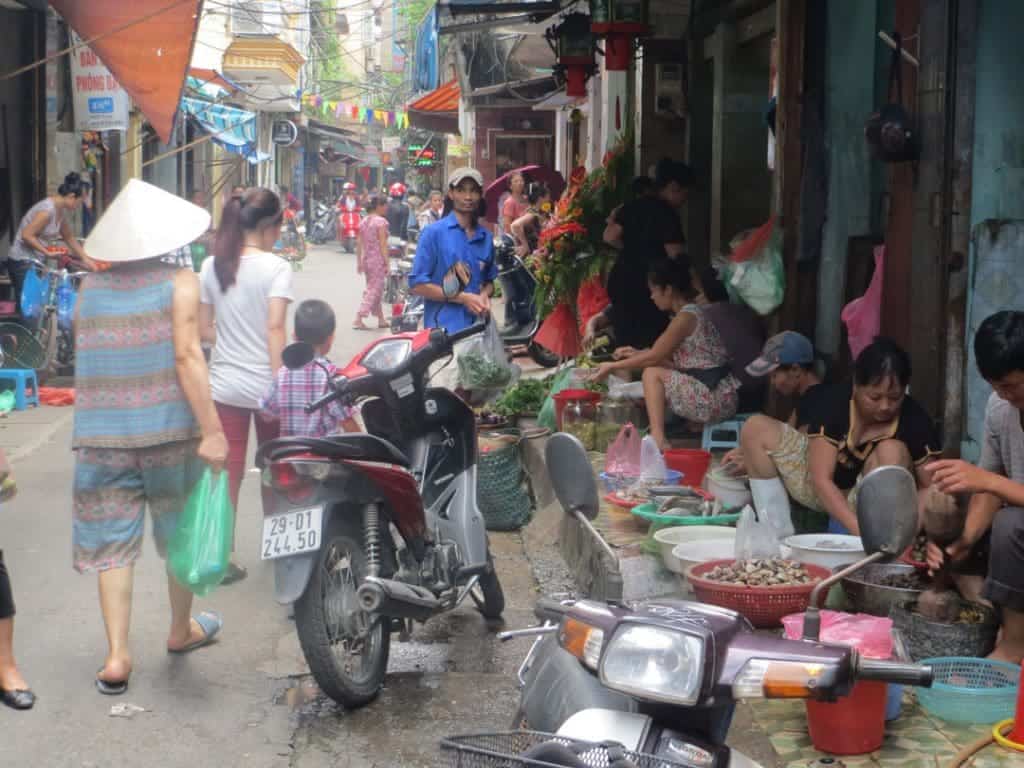
BEST THINGS TO EAT IN VIETNAM
When you travel to a foreign country one of the new and most exciting things you will experience is the food. There are so many amazing food choices in Vietnam, and Vietnamese food is delicious.
Here are a few of our favourites.
Goi Cuon: This is a rice paper packed with greens, coriander and various combinations of minced or shredded pork, shrimp or crab. It will be served with a sweet and sour sauce or a delicious homemade peanut sauce.
Sometimes to make the experience even better, you get to hand roll them yourself. This was our favourite dish.
Banh Mi: With this one, it will be different in every corner of Vietnam. This is a baguette sandwich that is filled with meat, greens, pata, pickled vegetables, soy sauce, cilantro and sometimes an omelet.
The meat filling will be roasted pork belly, grilled pork loin, barbecue pork, boiled chicken, or a fried egg.
Pho (pronounced ‘fur’): This flat rice noodle soup is either light beef or chicken broth flavoured with coriander and ginger with spring onions and bits of meat (chicken, pork or beef).
It is a dish you can have any time of the day and is delicious, but it can be hit and miss in some places. If you have an average one, please do try it again. We ate pho a lot for breakfast and never got sick of it.
Bun Cha: This is a Hanoi specialty and it is deliciously addictive. Bun Cha is served with grilled fatty pork over a plate of white rice noodles. It will be served with a sauce.
It will all be served separately and you combined everything together. You can ask for some little fried spring rolls on top too. It is so delicious!
Coa Lau: Hoi An is the best (and only authentic) place to try this one. as the noodles are made using water from a special well in town.
It is chewy rice flour noodles with Chinese barbecue pork, bean sprouts, croutons and fresh herbs in a delicious pork-based gravy.
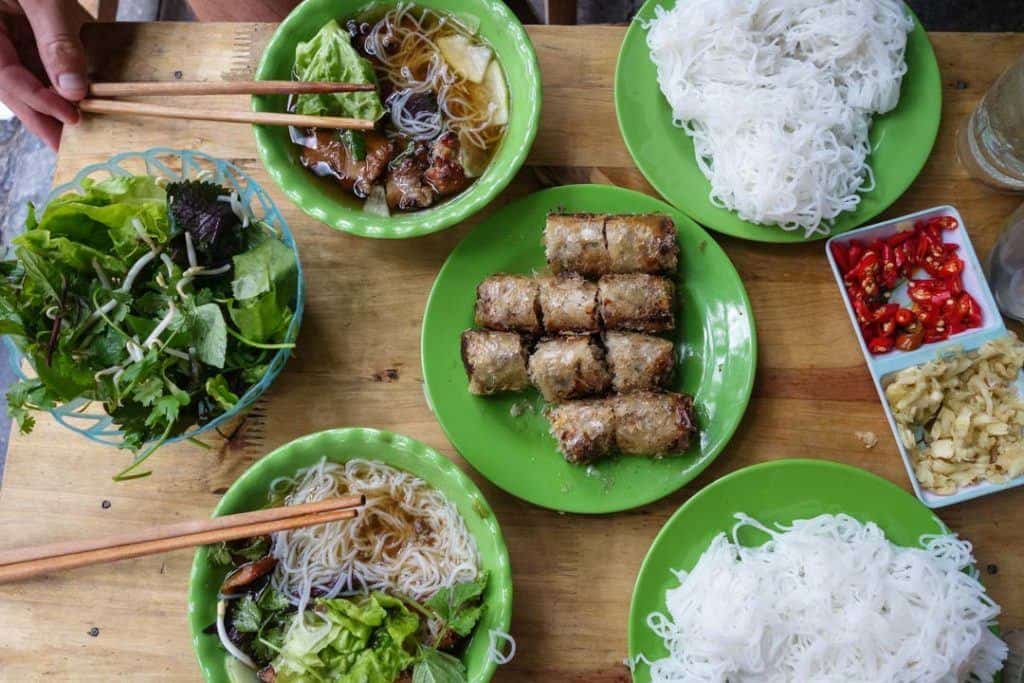
PLACES TO STAY IN VIETNAM
There are accommodation options for all budgets in Vietnam. You can stay in a shared dorm for $5 USD per night, or a luxury hotel for over $300 USD.
The accommodation standards can vary in each destination.
For example, we got a really nice hotel in the middle of nowhere when we were on our bike for $12 a night. But we would not find a place like this in Hanoi, Hoi An, HCMC or Hue for less than $25.
NOTE – In Vietnam, the accommodation will keep your passport for the duration of your stay. This is to do with the government. Officials will randomly come around and check hotels and hostels.
If they do not have the ID or passport of every person staying there, the accommodation will be fined. The accommodation will keep your passport in a safe. If you are unsure just ask, “do you lock my passport up?”
Types of Accommodations
Vietnam is wildly popular among backpackers. Because the costs are generally incredibly low, budget travellers flock to the country.
This means that there are lots of great hostel options when looking for accommodations in Vietnam.
Whether you are busy spending all your time exploring and are just looking for a cheap place to crash for the night or want to make friends along the way, you will find most of what you are looking for in a variety of hostels throughout Vietnam.
Because costs are generally lower in Vietnam than in most parts of the world your quality of life can go up quite a bit when you travel to Vietnam.
One way you can upgrade your travel experience is by booking rooms in hotels instead of beds in hostels. For a few dollars more you’ll get vastly more space and privacy.
In some towns and villages, hotels are your only option.
But generally, these are very reasonably priced. You can expect to spend USD$20-30 for a decent hotel room in most cities, towns and villages across Vietnam.
Another good option in recent years is AirBnB, and there are more and more amazing places popping up to stay in Vietnam for very affordable prices every day.
As is typical in many destinations where Airbnb accommodations are available, you’ll likely find great value and a little more personal space with an Airbnb stay.
If you’re looking for an awesome place to stay, we personally love using Airbnb. If you’ve never used the platform before, sign up using this link to get USD$35 off your first booking .
Our Favorite Places to Stay in Vietnam
We travelled from the south to the north and stayed in many different places. Here are a few accommodation options we highly recommend.
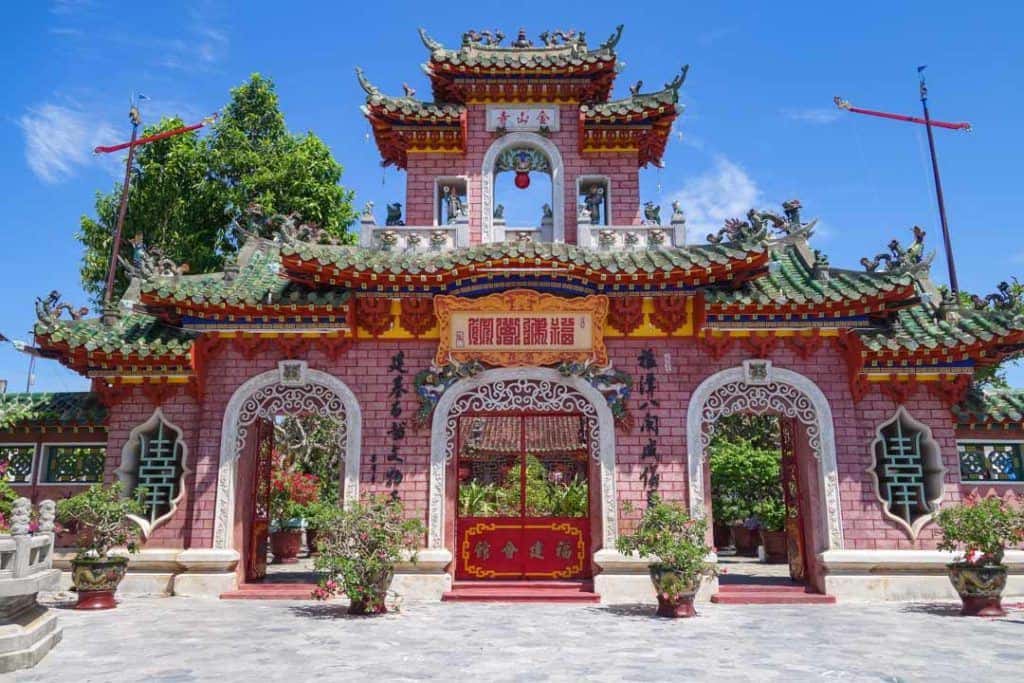
VIETNAM TRAVEL TIPS
The Vietnamese people are friendly, welcoming and hospitable towards travellers. It is a great destination to travel to in Southeast Asia.
The people are very respectful and would like the same back from you. Here are a few things that you should know before going to Vietnam.
GENERAL VIETNAM TRAVEL TIPS
While we have many basic travel tips we suggest you use when travelling to Vietnam, there are also plenty of Vietnam-specific tips that will make your visit the best it can be.
Here are a few we recommend you consider as you plan your trip to visit Vietnam:
Please show respect to their religious beliefs and their cultures . You are travelling to someone else’s country. They have different religious beliefs and cultures in your home. Please respect them.
Watch your belongings. Vietnam is a safe country but unfortunately, there still is petty theft. Whether you are at a restaurant or on a bus always watch your belongings.
Beware of the counterfeit tour agencies . Unfortunately, there are plenty of these around, especially in the main tourist areas. Book through the main owner or operator or any of these tours that we recommend .
Do not drink the tap water. The locals don’t even drink the water. There is bottled water available everywhere. Popular tourist restaurants will usually have on their menu that they wash their salad and veggies in sterilised water and make tea, coffee and soup from that too.
Carry toilet paper everywhere . There are toilets available in restaurants or in public but there may not be toilet paper. Most of the time you have to pay for the public toilet and they may give you some toilet paper, but don’t count on it. Always have your stash.
Toilet paper goes in the bin . DO NOT put the toilet paper in the toilet. Please put it into the bin provided. Vietnam’s sewerage systems are not built for much more than human waste so toilet paper and other items will just clog up your toilet.
Embrace the “bum gun “. Next to every toilet in Vietnam, there is a water hose. This is not to wash down the floor. This is to clean yourself up after you do your business. Don’t be disgusted by this. Embrace it.
Vietnam is bigger than you think . This country is huge and many people underestimate it. Vietnam is about 1,650 kilometres long from north to south. The distance on buses and trains is long so be prepared.
Take note of the Vietnamese money . It will be a new currency for you so do take a look at it before you go out spending. There are more zeros in it than you might be used to (1USD = 23,000 Dong)
Always take photos when you rent a scooter . Renting a scooter in Vietnam is something everyone does. It is a great way to get around and see all the attractions. But where you rent it from can get you into trouble. Whenever you rent a scooter take photos of the bike or else might end up with a crazy expensive bill.
Always wear a helmet. Always . Please wear a helmet. The roads are crazier here than they are in your country. The rules are different and road conditions are not the best. A quality helmet could save your life in an accident.
Make sure you have travel insurance . We tell people who are going travelling, “if you can’t afford travel insurance, you can’t afford to travel.” You do not know what is going to happen while you are away and knowing you are covered will put your mind at ease.
Be confident when crossing the road . The roads in Vietnam are crazy. Crossing the road can be daunting but you need to be confident. Do not walk backward or hesitate. Walk slowly and watch the traffic coming towards you. They will all move around you.
Take your shoes off before entering a temple or a person’s home . It is a custom that stems back to ancient times and a big part comes back to cleanliness. The ground is used for chatting, dining and even sleeping.
Cover your shoulders and knees when entering a temple . This is common in most religious sites. There are always signs suggesting visitors dress ‘appropriately.’ Shoulders and knees should be covered. If it is a hot day and a t-shirt is too sticky, carry a scarf for when you visit to cover your shoulders.
Keep a low profile . Do not be loud, raise your voice in aggression or show off. Do not show dramatic affection publicly like kissing. Save it for the hotel room
Ask for permission before taking a photo of someone . This is polite and ensures you are not intruding on them. The people are not there for your entertainment. If they say no, smile and thank them anyway.
Do not take photos of anything to do with the government or military. This is a big NO in any country and can end up with you in jail.
Do not touch someone on the head . The head is the most important part of the body. Touching someone’s head who you don’t know is like saying you are more important than they are.
Place your chopsticks across the top of the bowl when finished . Don’t have your chopsticks hanging out of the bowl, and don’t point them at anyone when they are resting on the plate.
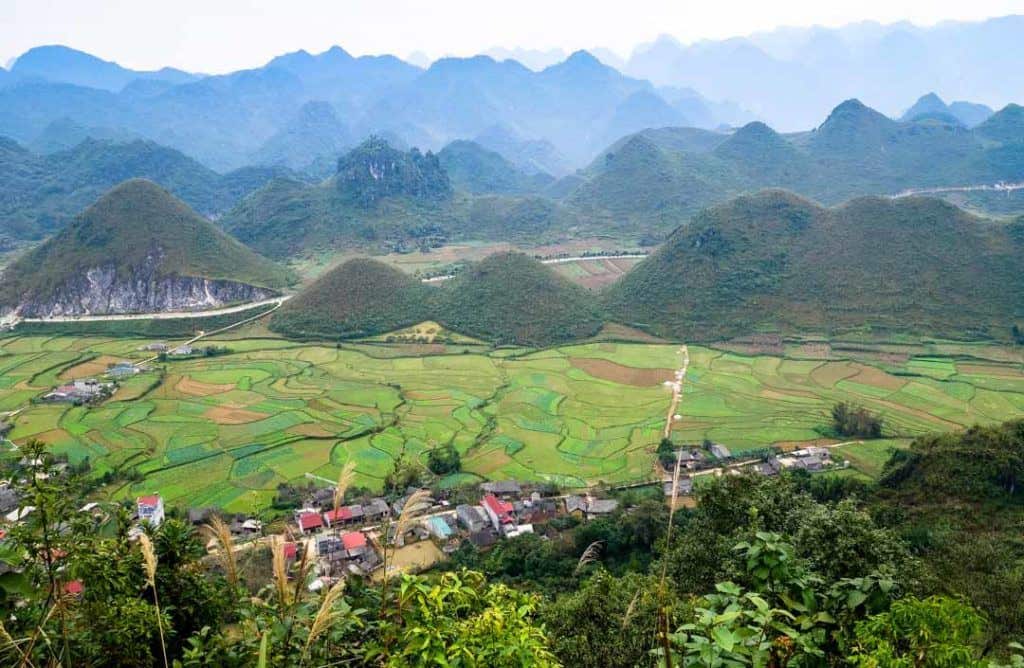
VIETNAM PACKING LIST
We always travel with a core packing list wherever we go. And when it comes to Vietnam, many factors will affect what else you need to bring along with you.
Check out our travel essentials and be sure to add any of the other additional items listed below.
Important Note! Before you book any international trip, we honestly recommend getting travel insurance. You never know when things will go wrong, and medical bills can add up quickly if you get sick or injure yourself overseas.
Our personal recommendation based on our own experience is World Nomads .
TRAVEL INSURANCE. SIMPLE & FLEXIBLE.
Which countries or regions are you traveling to, what’s your country of residence, enter traveler’s age, staying safe in vietnam.
Vietnam is extremely safe, apart from the one major danger which is the roads. They are crazy, even more so if you try to ride 10’000km around the country on motorbikes as we did!
Aside from that, common sense will keep you safe.
Here are a few reminders of what common sense when travelling in Vietnam means:
As you saw above, Vietnam is extremely safe. We did not feel unsafe once in the 7 months we were there (excluding the roads).
This doesn’t mean you can completely let your guard down though, and petty theft does happen in this country, although it’s not common.
Some tips for protecting your things:
In other words, use common sense and you’ll be fine.
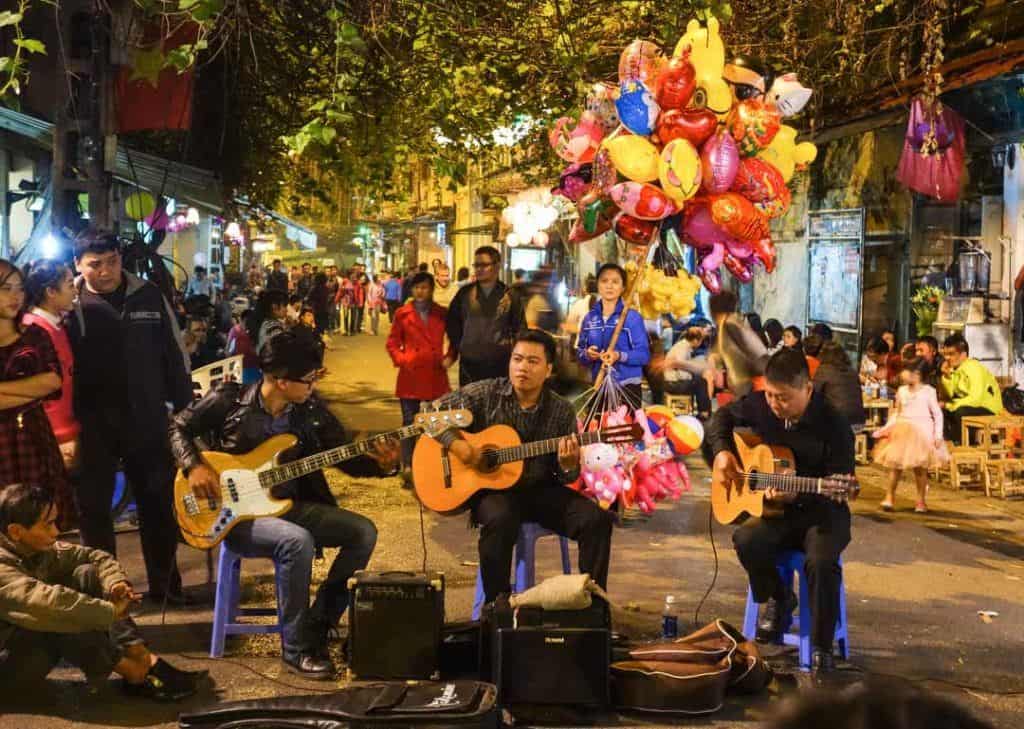
STAYING CONNECTED IN VIETNAM
Staying connected with friends and family (and work) when travelling in Vietnam is important. But if you don’t know how to connect you can find yourself greatly inconvenienced or spending too much money.
We feel like your money will go a lot further if you consider a few options.
Purchase a SIM Card
Picking up a SIM card has become the quickest and typically most affordable way to stay connected in Vietnam or any country for that matter.
If you have an unlocked phone you can use a 4G SIM card to connect to the cellular networks in Vietnam. From there you can cast a hot spot if you need to crank out some work on your computer or want to connect a tablet.
This 3G/4G SIM card is a great and affordable option for a SIM card if you are flying into Vietnam.
Rent a Portable WiFi Device
Alternatively to a SIM card, particularly if you don’t have an unlocked phone, you can rent a portable WiFi device during your travel to Vietnam.
This device will be delivered to you when you arrive in Vietnam and will provide 4G service for less than USD$5 per day.
You’ll be able to connect anywhere you can find service across the country, which will be most of the places you are likely to travel in Vietnam.
Access Free WiFI
Free is always best, if it is convenient. And there are plenty of places throughout Vietnam that will provide free WiFi in public spaces or at restaurants, cafes and hostels and hotels.
We recommend using the WiFi Finder app, which will help you locate WiFi anywhere you travel in Vietnam.
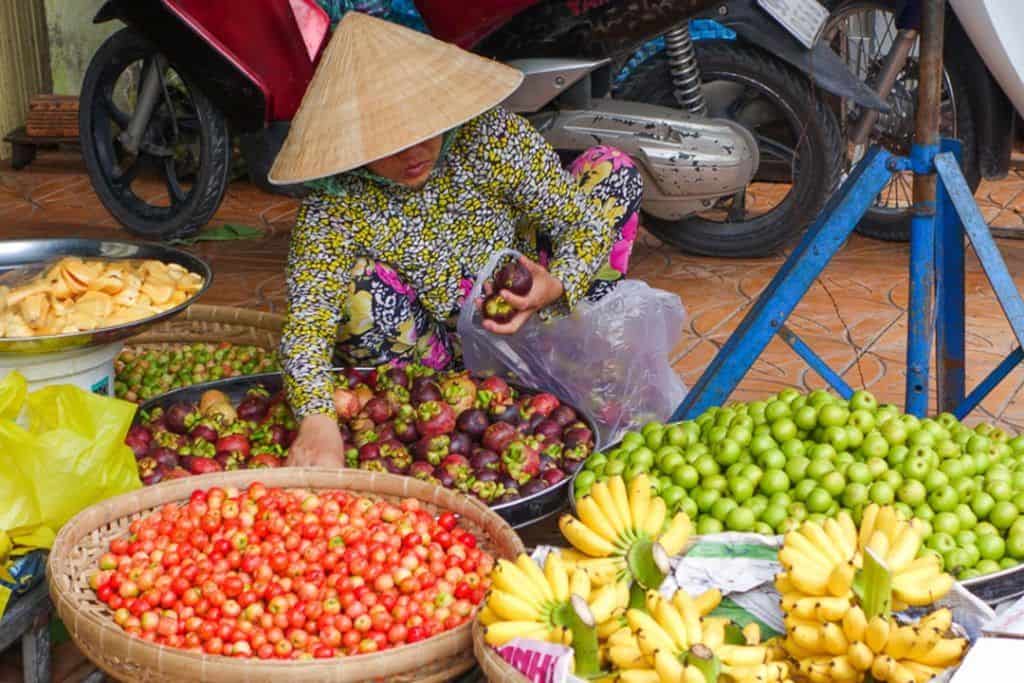
BE A RESPONSIBLE TRAVELER IN VIETNAM
We absolutely love Vietnam. And we love the idea that it will remain a beautiful and friendly place for travellers for years to come.
Here are a few tips specific to travel to Vietnam that will promote sustainable tourism in the country:
Use your own energy to get around. Walk or cycle through town as much as possible. Taking a cyclo-taxi is a close alternative if you don’t have the energy to propel yourself through the city. But this reduces the impact of taxis, busses and other forms of automotive transportation.
Mind your plastic . Plastic is everywhere in Vietnam. But using your own reusable bag for groceries and other shopping, carrying a reusable water bottle and having your own straw are just 3 of the many simple ways you can reduce the amount of plastic you use.
Shop local . Visiting the markets will be one of your top experiences when travelling to Vietnam. Support local vendors as often as possible, including in taking tours when available.
Be mindful of wildlife . Wildlife in the wild is great. But be mindful not to provoke, feed or otherwise molest wildlife. And never purchase any item made of or involving rare or endangered species.
Attempt to communicate in Vietnamese . You’re probably not going to be fluent as soon as you arrive in the country. But knowing a few phrases and doing your best to communicate with locals will show respect and earn trust and make your experience richer.
KEY VIETNAMESE TRAVEL PHRASES
You don’t have to be fluent in Vietnamese to have a great time when you travel to Vietnam. But it does help to know a few key phrases.
This will not only assist you in your travels but it will also show respect to the local Vietnamese people that you are doing your best to assimilate into their culture.
BOOKS TO READ ABOUT VIETNAM
Maybe you already know everything about Vietnam. Chances are you don’t!
But even if you are well-read, here are a few suggestions that might be worth your time while you’re on the plane to Vietnam.
The Quiet American (Graham Greene) – Originally published in 1956 and adapted for film twice, this story by Greene became an instant classic. Greene fictionalizes life in 1950s Vietnam as told by a British correspondent trying to understand the roots of the rising conflict set to occur.
At Home In The World (Thich Nhat Hanh) – World renown Vietnamese monk, Hanh reflects on lessons and stories in life from the Buddhist perspective.
Vietnam: Rising Dragon (Bill Hayton) – A piece of nonfiction that looks back on the Vietnam of old and attempts to projects its place in the future of Southeast Asia.
The Sympathizer (Viet Thanh Nguyen) – The Pulitzer Prize-winning book, allegedly influenced by The Quiet American , is told through the eyes of a double-agent during the Vietnam War who struggles to understand the minds and hearts of men engaged in war.
DISCLAIMER: Some of the links in this article are affiliate links, which means if you book accommodation, tours or buy a product, we will receive a small commission at no extra cost to you. These commissions help us keep creating more free travel content to help people plan their holidays and adventures. We only recommend the best accommodations, tours and products that ourselves or our fantastic editorial team have personally experienced, and regularly review these. Thanks for your support, kind friend!
Table of Contents
Read our vietnam posts, 20 amazing things to do in hoi an, vietnam (2024 guide), 14 incredible things to do in dalat, vietnam (2024 guide), the perfect 3 days in hanoi itinerary [2024 guide], 25 amazing things to do in hanoi, vietnam (2024 guide), the perfect 3 days in ho chi minh city itinerary [2024], the 8 best day trips from ho chi minh city (2024 guide), caves, zip lines and deep mud in phong nha, ganh da dia – vietnam’s own ‘giant’s causeway’, ba be national park – the lake, trekking and happy water, motorbiking the road from dalat to nha trang in vietnam, riding sea to sky: hue to hoi an by motorbike, getting a chinese visa in hanoi, vietnam.
Vietnam travel guide
This Vietnam Travel Guide is a comprehensive resource that offers essential information for travelers exploring this diverse country. It includes details on popular destinations, practicalities such as visas, currency, and language, as well as transportation options like taxis, buses, trains, and domestic flights. The guide also provides insights into the weather patterns month by month, allowing you to plan your trips accordingly. Furthermore, it offers cultural background and inspiration.
Destinations
Essential guide, getting around, vietnam weather by month.
- Inspiration
Vietnam is a country with a countless of destinations to explore, and this Vietnam travel guide highlights some of the most popular ones.
North Vietnam
Hanoi , the capital city of Vietnam, is known for its rich history, vibrant culture, and bustling street life. Visitors come to explore its charming Old Quarter, taste delicious street food, and visit iconic attractions like Hoan Kiem Lake and the Temple of Literature.
Sapa , located in the northwest of Vietnam, is renowned for its stunning terraced rice fields and ethnic minority hill tribes. Travelers flock to Sapa to trek through breathtaking landscapes, experience the unique culture of local communities, and witness the beauty of the Fansipan Mountain, known as the “Roof of Indochina.”
3. Halong Bay
Halong Bay , a UNESCO World Heritage site, is famous for its breathtaking natural beauty. Travelers visit this iconic destination to cruise along the emerald waters, marvel at the limestone karsts and islets, and explore hidden caves and floating fishing villages.
4. Ninh Binh
Ninh Binh , often referred to as the “Halong Bay on land,” captivates visitors with its stunning karst landscapes, ancient temples, and picturesque countryside. Travelers come to Ninh Binh to take boat rides through the Trang An Complex, explore the ancient capital of Hoa Lu, and enjoy the tranquility of the rural scenery.
5. Ha Giang
Ha Giang , located in the far north of Vietnam, offers adventurous travelers an off-the-beaten-path experience. Known for its dramatic mountains, winding roads, and ethnic minority communities, Ha Giang attracts visitors seeking epic motorbike journeys, trekking adventures, and cultural immersion in remote and pristine landscapes.
6. Mai Chau
Mai Chau , nestled in the peaceful valley of Hoa Binh Province, offers a serene escape from bustling cities. This rural destination is famous for its picturesque landscapes, traditional stilt houses, and warm hospitality of the Thai ethnic minority. Visitors can cycle through scenic villages, participate in local homestays, and enjoy traditional dance performances.
Central Vietnam
7. phong nha.
Phong Nha , is a paradise for nature and adventure enthusiasts. This UNESCO World Heritage Site is famous for its magnificent cave systems, including the world’s largest cave, Son Doong. You can explore the stunning underground wonders, go trekking in the lush jungle of the national park and kayak over the Son River.
Hue , the former imperial capital of Vietnam, is renowned for its historical significance and majestic citadel. Visitors come to Hue to explore its UNESCO World Heritage sites, including the Imperial City and the royal tombs, and to experience the city’s rich cultural heritage, traditional music, and delicious royal cuisine.
Da Nang , a coastal city in central Vietnam, is known for its beautiful sandy beaches, stunning bridges, and modern skyline. Travelers visit Da Nang to relax on its pristine shores, explore iconic attractions such as the Marble Mountains and the Dragon Bridge, and indulge in delicious seafood.
Hoi An , a charming ancient town, enchants visitors with its well-preserved historic architecture, lantern-lit streets, and vibrant riverside atmosphere. People flock to Hoi An to wander through its atmospheric alleys, shop for tailored clothing, immerse themselves in its lantern festival, and savor local delicacies
11. Nha Trang
Nha Trang, a coastal resort city, is famous for its turquoise waters, white sandy beaches, and vibrant underwater world. Travelers visit Nha Trang to relax on its idyllic beaches, enjoy water sports and island-hopping tours, and experience its lively nightlife and seafood dining scene.
Dalat , situated in the Central Highlands, is known as the “City of Eternal Spring” for its pleasant climate and picturesque landscapes. Visitors come to Dalat to escape the heat, explore its French colonial architecture, visit flower gardens and waterfalls, and engage in outdoor activities like hiking, biking, and canyoning amidst its natural beauty.
South Vietnam
13. ho chi minh city.
Ho Chi Minh City , the bustling metropolis of Vietnam, offers a captivating blend of modernity and history. Visitors are drawn to Ho Chi Minh City to explore its iconic landmarks like the Independence Palace and Notre-Dame Cathedral, indulge in vibrant street food, experience the vibrant nightlife, and immerse themselves in the city’s rich history and culture.
14. Mekong Delta
The Mekong Delta , a vast maze of rivers, canals, and lush green fields, is a unique region known as the “Rice Bowl” of Vietnam. Travelers venture to the Mekong Delta to cruise along its waterways, visit floating markets, witness traditional village life, and taste the fresh tropical fruits and local delicacies unique to this region.
15. Phu Quoc
Phu Quoc , a tropical paradise island, is renowned for its pristine white-sand beaches, crystal-clear waters, and stunning coral reefs. Visitors flock to Phu Quoc to relax on its picturesque beaches, explore its national parks, indulge in water activities such as snorkeling and diving, and savor the island’s fresh seafood.
16. Con Dao
Con Dao , a secluded archipelago, offers unspoiled natural beauty and a rich historical background. Travelers seek out Con Dao for its pristine beaches, lush forests, and diverse marine life, as well as to discover its haunting history at the former prison complex, Con Dao Prison. The island provides a tranquil retreat for relaxation, outdoor activities, and exploring its captivating landscapes.
Mui Ne , a coastal town, is renowned for its stunning sand dunes, vibrant kite-surfing scene, and serene fishing villages. Visitors come to Mui Ne to witness the dramatic landscapes of the Red and White Sand Dunes, engage in water sports, taste fresh seafood, and enjoy the laid-back beach atmosphere and stunning sunsets.
Off the beaten track destinations
Explore the off the beaten track destinations in Vietnam: Cao Bang , home to the stunning Ban Gioc Waterfall ; Mu Cang Chai , renowned for its breathtaking terraced rice fields; Quy Nhon , a tranquil beach town; Kon Tum, where you can discover the mountains and ethnic minorities of the central highlands. Experience the unspoiled beauty of Lan Ha Bay and Bai Tu Long Bay , the lesser-known siblings of Halong Bay. Visit Cat Ba, the largest island in the bay, and uncover the hidden gem of Ba Be Lake , the largest natural lake nestled in the jungle.
Health & Safety
When traveling to Vietnam, it’s important to be aware of certain health and safety considerations.
Mosquitoes are prevalent, especially in certain regions, so it’s advisable to use mosquito repellent and take precautions to prevent mosquito-borne diseases like dengue fever or malaria.
Road safety can be a concern, with chaotic traffic and different driving habits, so it’s recommended to exercise caution and use designated pedestrian crossings.
It’s advisable to avoid drinking tap water and instead opt for bottled or filtered water to prevent waterborne illnesses.
Additionally, practicing good food safety by eating freshly cooked or hot meals, avoiding street food stalls with questionable hygiene practices, and practicing proper hand hygiene can help prevent food-related illnesses.
It’s always recommended to consult with a healthcare professional or travel health clinic before your trip for personalized advice on vaccinations and health preparations.
Vietnam is generally a safe destination for travelers, with a low rate of crime targeting foreign visitors; however, it’s important to remain vigilant and take precautions against petty theft, such as keeping a close eye on personal belongings and being aware of common scams.
Money & budget
Vietnam’s official currency is the Vietnamese Dong (VND), and it’s advisable to carry local currency for most transactions as other currencies are not accepted. Banks and authorized currency exchange offices are the best places to exchange foreign currencies, but interestingly, gold jewelry shops often offer competitive exchange rates.
The average cost of a trip to Vietnam varies depending on your travel style. For budget travelers, a weekly average budget can range from $150 to $300, including accommodation, meals, transportation, and some sightseeing. Midrange travelers can expect to spend around $300 to $700 per week, while luxury travelers may have a budget of $700 and above per week.
In Vietnam, there is no tipping culture , and service charges are usually included in the bill. However, it’s appreciated to give small tips for exceptional service. ATMs are widely available throughout the country, but it’s important to note that there may be limits on the amount you can withdraw per transaction. Additionally, many local shops and restaurants may not accept card payments, so it’s advisable to carry enough cash for smaller purchases.
Internet & calling
Vietnam has a widespread availability of Wi-Fi networks, ranging from local restaurants and coffee shops to upscale resorts. As a customer, you can typically access these Wi-Fi networks for free.
However, to ensure a reliable internet connection and avoid dependence on Wi-Fi, it is recommended to buy a Vietnamese SIM card . SIM cards are affordable and convenient, allowing you to have internet access for various purposes such as navigating with Google Maps, using Google Translate, booking taxis through ride-hailing apps, or checking reviews on platforms like TripAdvisor. While there are several providers to choose from, Viettel is generally considered the best option for its coverage and reliability.
Electricity & socket adapters
The voltage in Vietnam is typically 220V, and the sockets commonly used have 2 pins , accommodating both flat and round pins. If your devices use a different type of plug, you can either bring a travel adapter with you or easily purchase one in Vietnam at one of the many convenient stores available.
Traveling to Vietnam
Before traveling to Vietnam, it is essential to check the visa requirements for your country. While a few countries, including 11 European countries, are eligible for visa-free entry , allowing a maximum stay of 15 days, those wishing to stay longer or coming from other countries such as the US, Australia, Canada, or New Zealand, must arrange a valid visa before their trip.
For most travelers, the e-visa is the recommended option, which can be easily obtained through the official website of the Vietnamese immigration. The e-visa process typically takes 3 to 4 working days, costs 25 USD, and allows a stay of up to 30 days in Vietnam.
Arrival options
Unlike major hub cities like Hong Kong, Singapore, Bangkok, and Kuala Lumpur, Vietnam doesn’t have as many international direct flights from the US, Australia, and Europe, often requiring a transit. It’s important to note that even when boarding your flight to Vietnam, you need to show a valid visa.
In addition to flights, Vietnam can be accessed by land borders from countries such as Cambodia, Laos, and China. Another option is entering Vietnam via a seaport. Fortunately, all of these entry options, including land and seaports, are possible with an e-visa.
Long distance
1. domestic flights.
Domestic flights in Vietnam are a great option for traveling within the country, offering convenience and affordability. With tickets that can be as cheap as $40 USD, it’s an excellent alternative to avoid long journeys by bus. Vietnam has three major airlines, namely Vietnam Airlines, Vietjet Air, and Bamboo Airways, providing extensive coverage to numerous domestic airports across the country, totaling around 21 airports.
2. Bus travel
Bus travel in Vietnam is a popular and extensive mode of transportation, with a network that connects every corner of the country. It is known for being very affordable, making it an economical choice for budget-conscious travelers. There are various options available, including day buses and sleeper buses, with different classes such as smaller limousine buses, VIP sleeper buses, normal sleeper buses, and mini vans. Opting for the luxury options may provide a more comfortable and enjoyable experience without a significant increase in cost.
3. Train travel
Train travel in Vietnam offers a unique and nostalgic experience, allowing you to soak in the scenic beauty of the country at a more relaxed pace. While trains may be slower compared to buses, they are generally considered a safer mode of transportation. Depending on your preference and budget, trains offer various options including hard seat, soft seat, and different cabin configurations such as 4 berth and 6 berth cabins. For popular routes like Sapa to Hanoi, there are tourist trains available, providing additional comfort for the journey.
4. Private transfers
Private transfers in Vietnam offer convenience and flexibility for travelers, as foreign tourists are not permitted to drive cars themselves. Renting a car with a driver allows for comfortable and hassle-free transportation, whether for airport transfers or exploring different destinations. Moreover, private transfers can be customized to include stops along the way, giving you the opportunity to create your own personalized tour or embark on a multi-day trip to discover the diverse landscapes of Vietnam.
Short distance
5. public transportation.
While public transportation options like the metro and buses exist in Vietnam, they are often underutilized by tourists. The metro system is still in its early stages of development, and communication barriers can make it difficult to navigate public bus routes. However, the biggest reason not to use public transportation in Vietnam is the way better alternative of using taxis.
Taxis in Vietnam are an affordable and convenient mode of transportation, offering door-to-door service for travelers. Additionally, taxi apps like Grab have gained popularity, providing an effortless way to book a taxi and communicate your destination, effectively overcoming any language barriers you may encounter.
Walking in Vietnam’s cities can be challenging as sidewalks are often in poor condition and occupied by parked motorbikes, forcing pedestrians to walk on the main road. Crossing roads can also be a daunting task, unless you come across a traffic light. Generally, Vietnam is not considered pedestrian-friendly in urban areas.
However, outside the cities, there are excellent opportunities for trekking in Vietnam , allowing you to explore beautiful landscapes, such as rice fields, jungles, and smaller villages.
Other options for getting around
Apart from practical transportation options, there are leisurely alternatives for getting around in Vietnam. Cycling is a fantastic way to explore the peaceful cities and picturesque countryside, offering a closer connection to the surroundings.
Cyclo rides provide a unique and authentic local experience, allowing you to leisurely explore the streets and soak in the vibrant atmosphere. Boats and cruises are popular for discovering the rivers, canals, and stunning landscapes of the Mekong Delta and the famous Halong Bay.
Best time to visit Vietnam
Vietnam experiences three distinct weather regions due to its elongated shape. Each region has its own best time to visit , making it somewhat challenging to pinpoint a single ideal time. However, if you’re looking for a period that aligns with all three regions, the best time to visit is generally from January to May, with March being particularly favorable.
Northern Vietnam : In the north, the weather is divided into four seasons. From January to March, it is often chilly with occasional fog in Hanoi and Halong Bay. Spring (April and May) brings pleasant temperatures and blooming flowers. Summer (June to August) is hot and humid, while autumn (September to December) offers cooler temperatures and clearer skies.
Central Vietnam : Central Vietnam has a tropical climate with distinct wet and dry seasons. From January to August, the weather is relatively dry, making it a good time to visit cities like Hue and Hoi An. However, be aware of potential typhoons from August to November. The region also experiences high temperatures in the summer months.
Southern Vietnam : Southern Vietnam has a tropical climate with two main seasons – dry and wet. From November to April, the dry season prevails, characterized by lower humidity and pleasant temperatures. May to October is the wet season, with frequent rainfall and higher temperatures. Ho Chi Minh City and the Mekong Delta are popular destinations in this region.
Vietnam by month
With so many incredible destinations to choose from in Vietnam, it can be overwhelming to decide where to go. Here are some inspiring recommendations to help you plan your trip:
- For the best rice fields , consider visiting Sapa, which is easily accessible and boasts vast landscapes. Alternatively, Pu Luong offers smaller, less touristy rice fields but requires a bit more effort to reach.
- When it comes to beautiful beaches , Phu Quoc is renowned for its stunning shores. Along the central coast, you’ll also find picturesque beaches in Hoi An, Quy Nhon, Phu Yen, and Nha Trang.
- Seeking adventure? Embark on a thrilling motorbike journey in Ha Giang, explore captivating caves in Phong Nha on caving expeditions, or try canyoning in the scenic town of Dalat.
- Vietnam is home to some of the most beautiful cities , including the charming ancient town of Hoi An, the bustling capital city of Hanoi, the historic city of Hue, and the picturesque hill station of Dalat.
- If trekking is your passion, head to Sapa, Ha Giang, Pu Luong, or other mountainous regions for unforgettable hiking experiences amidst breathtaking landscapes.
- For nature enthusiasts, Ha Giang, Sapa, Ninh Binh, Halong Bay, and Ban Gioc Waterfall offer spectacular natural wonders to explore and admire.
For more inspiration and detailed information about these and other remarkable destinations in Vietnam, you can check out our Vietnam inspiration list .
Vietnamese culture
To fully immerse yourself in Vietnamese culture, here are some helpful tips to enhance your experience:
- Embrace Vietnam’s culinary pride by indulging in local cuisine. Take a street food tour or join a cooking class to discover the diverse flavors and ingredients that make Vietnamese food so renowned.
- Vietnam is home to 54 ethnic groups , each with its own unique traditions. Learn from them by visiting ethnic markets, staying at homestays, and exploring villages to gain insights into their customs, arts, and way of life.
- Gain a deeper understanding of Vietnam’s history by learning about the Vietnam War . Visit significant sites such as the Cu Chi Tunnels and the War Remnants Museum , which provide valuable perspectives on the country’s past.
- When visiting temples and pagodas, dress appropriately by covering your shoulders, wearing modest clothing, and removing your shoes as a sign of respect.
- Make an effort to learn some basic Vietnamese phrases . While many Vietnamese may not speak fluent English, they appreciate and welcome your attempts to communicate in their language.
- Celebrate special events with the locals, such as Tet (Lunar New Year), Mid-Autumn Festival , or National Day . Participate in traditional festivities, enjoy local customs, and savor the festive atmosphere.
- When entering someone’s home or certain establishments, it is customary to remove your shoes as a gesture of cleanliness and respect.
- Always ask for permission before taking photos of people, as it shows respect for their privacy and personal space.
- Avoid any disrespectful actions towards the national flag or the country’s leaders. Show reverence and sensitivity towards symbols of national importance.
- Explore traditional craft villages to witness artisans practicing age-old crafts, such as pottery, silk weaving, or wood carving. This provides an opportunity to appreciate Vietnam’s rich artistic heritage.
- Join locals for a casual beer-drinking experience on the street. Sidewalk stalls offer a social and lively atmosphere where you can engage with Vietnamese people and soak up the local culture.
- Experience the warmth of Vietnamese hospitality by joining a family dinner. Embrace the tradition of sharing abundant food and engaging in lively conversations, creating lasting memories of authentic Vietnamese hospitality.
- Ho Chi Minh City
- Mekong Delta
- Language & travel dictionary
- Electricity
- Internet & calling
- Best travel time & weather
- Hoe does it work?
- Visa on Arrival
- Visa at embassy
- Holidays & Events
- People & minorities
- Flights to Vietnam
- Domestic flights
- Motorbike buy/rent
- Train travel
- 15 most beautiful destinations
- 20 best things to do
- 10 best off the beaten track
- 10 most stunning beaches
- 10 best rice fields places
- 10 best adventures
- 10 cultural experience
- All travel inspiration
- Package trips
- Custom made trip
- Destination Guide
- Essential Guide
- Getting Around
- Vietnam Month by Month
- Vietnam blog
- Travel tips
- Custom Made Trip
- Day- & Multiple Day tours
- Holiday Packages
- Local Meo Vac Homestay
- Local Dong Van Homestay
- Our Team & Company
- Our Customers & Reviews
Copyright © 2023 Local Vietnam
Start typing and press enter to search
Free ebook vietnam travel guide.

Explore Vietnam
Plan your trip to vietnam: best of vietnam tourism.
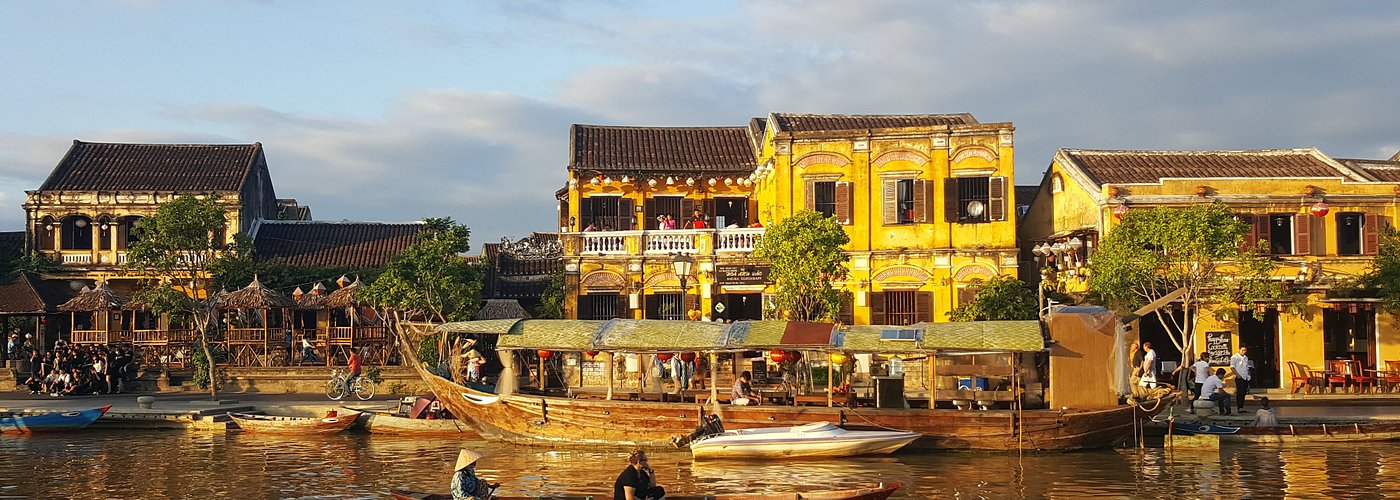
Essential Vietnam
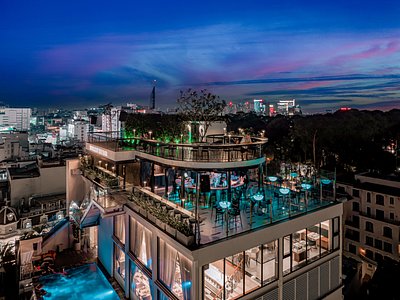
Trending in the forums
Vietnam Is Great For
Eat & drink.
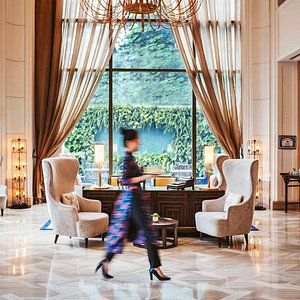
The great outdoors

- 3 Other destinations
- 4.1 History
- 4.2 Politics
- 4.3 Economy
- 4.5 Culture
- 4.6 Climate
- 4.9 Holidays
- 4.10 See also
- 4.11 Tourist information
- 6.1.1 Visa-free entry
- 6.1.2 E-Visa
- 6.1.3 Regular visa
- 6.1.4 Dual citizens
- 6.2 By plane
- 6.3 By train
- 6.4.1 Cambodia
- 6.4.2 China
- 6.5 By boat
- 7.1.1 Destinations
- 7.1.2 Seats and carriages
- 7.1.3 Tickets
- 7.2.2 Stay safe
- 7.3 By plane
- 7.4 By bicycle
- 7.5 By motorbike
- 7.6.1 By metered taxi
- 7.6.2 By xe ôm
- 7.7 By cyclo
- 7.8 By boat
- 7.10 On foot
- 8.1 Architecture
- 8.2 City life
- 8.3 Landscapes and nature
- 8.4 Museums
- 9.1 Motorbiking
- 10.1.1 ATMs
- 10.1.2 Credit cards
- 10.1.3 Cashless payment
- 10.1.4 Money exchange
- 10.1.5 Banking
- 10.1.6 Acceptance of other currency
- 10.2 Tipping
- 10.3.1 Tax refund
- 10.3.2 Price discrimination
- 10.3.3 Supermarkets
- 10.3.4 Costs
- 11.1 Dietary restrictions
- 12.2 Coffee
- 12.3 Soft drinks
- 12.4 Wine and liquor
- 16.1 Unexploded ordnance
- 16.3 Corruption
- 16.4 Prostitution
- 16.5.1 Taxis
- 16.5.2 Taxi and cyclo drivers
- 16.5.3 Hotels
- 16.5.4 Restaurants
- 16.5.5 Hostels
- 16.5.6 Copycats
- 16.5.7 Fake monks
- 16.6 Traffic
- 16.7 Nightlife
- 16.8 Wildlife
- 16.9 LGBT travellers
- 16.10 Politics
- 17.1 Healthcare
- 18.1 Politics
- 18.2 The American War
- 18.3 Religion
- 19.1 Electricity
- 20.1.1 Mobile phones
- 20.1.2 Useful numbers
- 20.2 Internet
Vietnam ( Vietnamese : Việt Nam) is a country in Southeast Asia with great food and a wealth of natural and cultural attractions. Despite the turmoil of the Vietnam War (called the American War in Vietnam), Vietnam has emerged from the ashes since the 1990s and is undergoing rapid economic development, driven by its young and industrious population. It remains less developed as a tourist destination than Thailand .
Regions [ edit ]

Cities [ edit ]
- 21.0245 105.84117 1 Hanoi ( Hà Nội ) — Vietnam's capital, a historic city with a wealth of cultural and historical sites
- 10.775556 106.701944 2 NOT EXISTING LISTING IMAGE Ho Chi Minh City ( Thành Phố Hồ Chí Minh ) — Vietnam's largest and most cosmopolitan city, formerly known as Saigon ( Sài Gòn ) when it was the capital of South Vietnam
- 16.069444 108.209722 3 Da Nang ( Đà Nẵng ) — The largest city in central Vietnam
- 11.941667 108.438333 4 Dalat ( Đà Lạt ) — A French colonial hill station in the highlands
- 20.8 106.666667 5 Haiphong ( Hải Phòng ) — The "port city", a major port in north Vietnam
- 15.877669 108.33265 6 Hoi An ( Hội An ) — A well-preserved ancient port, near the ruins of My Son
- 16.456111 107.576389 7 Hue ( Huế ) — The former home of Vietnam's emperors
- 12.245 109.191667 8 Nha Trang — A burgeoning beach resort
- 18.673333 105.692222 9 Vinh — The major city in north-central Vietnam with very nice Cua Lo Beach
Other destinations [ edit ]
- Con Dao — Islands off the Mekong Delta
- Cu Chi — The site of the Cu Chi Tunnels
- Cuc Phuong National Park — Home to some of Asia's rarest wildlife and the Muong hill people
- The DMZ — The ruins of old American military bases, spectacular mountain scenery and rugged jungles
- Ha Long Bay — Famous for its unearthly scenery
- Ninh Binh — Ha Long Bay-like karst scenery along the river
- Phu Quoc — An island just off the coast of Cambodia, known for its beaches, fish sauce and seafood
- Sa Pa — A region to meet native indigenous people in the hills by the Chinese border
- Phong Nha Caves – A World Heritage cave system in Quang Binh province.
Understand [ edit ]
Vietnam, originally a dynasty until 1945, has been a socialist state under an authoritarian system since unification in 1976. The country has about 100 million inhabitants and provides a staggering variety of forest landscapes and a complex cultural history.
History [ edit ]
Vietnam's history is one of war, colonization and rebellion. Occupied by China no fewer than four times, the Vietnamese managed to fight off the invaders just as often. Even during the periods in history when Vietnam was independent, it was mostly a tributary state to Imperial China until the French colonization. Vietnam's last emperors were the Nguyễn Dynasty , who ruled from their capital at Hue from 1802 to 1945, although France exploited the succession crisis after the death of Tự Đức to de facto colonise Vietnam after 1884. Both the Chinese occupation and French colonization have left a lasting impact on Vietnamese culture, with Confucianism forming the basis of Vietnamese social etiquette, and the French influencing Vietnamese cuisine.
After a brief Japanese occupation in World War II (see Pacific War ), the Communist Viet Minh under the leadership of Hồ Chí Minh continued the war of independence against the French. The last Emperor Bao Dai abdicated in 1945 with a proclamation of independence following soon after. The majority of French had left by 1945, but in 1946 they returned to continue the fight until their decisive defeat at Dien Bien Phu in 1954. The Geneva Conference partitioned the country into two at the 17th parallel, with a communist-led North supported by the Soviet Union, and Ngô Đình Diệm establishing a capitalist regime and declaring himself President of the Republic of Vietnam in the South, supported by the United States.
South Vietnam would be plagued by numerous domestic problems, including corruption, nepotism and electoral fraud. Diệm, who was a Roman Catholic, enacted laws that discriminated against the Buddhist majority, which led to the Buddhist monk Thích Quảng Đức self-immolating in protest at a busy intersection in Saigon in 1963. U.S. economic and military aid to South Vietnam grew during the 1960s in an attempt to bolster the South Vietnamese government. This escalated into the dispatch of 500,000 American troops in 1966 and what became known as the Vietnam War in the West (the Vietnamese refer to it as the American War ). What was supposed to be a quick and decisive action soon degenerated into a quagmire, and U.S. armed forces withdrew following a cease-fire agreement in 1973. Two years later, on April 30, 1975, a North Vietnamese tank drove into the South's Presidential Palace in Saigon and the war ended. An estimated 3 million Vietnamese and over 55,000 Americans were killed. Vietnam's war against the United States was one of many that they have fought, but it was the most brutal in its history. Most of the nation's population was born after 1975. American tourists will receive a particularly friendly welcome in Vietnam, as many young Vietnamese are admirers of American culture. See Indochina Wars for more on these conflicts.
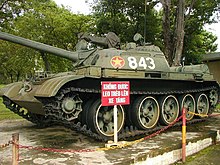
After unifying the country, the communist government proceeded to root out the remaining capitalist elements in the south. Many business owners were killed while others, known as the boat people, became refugees and attempted to escape to Western countries, resulting in the establishment of Vietnamese communities in many countries, including the United States , Australia and Canada . The ethnic Chinese, long resented by the ethnic Vietnamese for their perceived economic clout, were particularly hard-hit by the purges.
Following the collapse of the state-run economy, the government implemented market-oriented reforms and introduced capitalist elements in 1986 with a policy known as đổi mới . This policy has proved highly successful, as it spurred impressive economic growth and infrastructure development. Discriminatory laws against the remaining ethnic Chinese were repealed, and many have used their business acumen to contribute greatly to the revitalisation of the Vietnamese economy, also regaining some of their previous economic dominance in the process. Relations with the United States have thawed considerably, with formal defence ties having been re-established in 2016. Some former refugees or their descendants, most of whom were raised and educated in the West, have returned to Vietnam to take advantage of new economic opportunities. Today, Vietnam is widely considered to be one of the rising stars of Asia with a young population and vibrant economy.
Politics [ edit ]
The Socialist Republic of Vietnam (Cộng hòa xã hội chủ nghĩa Việt Nam) is a one-party authoritarian state, with the General Secretary of the Communist Party of Vietnam as the supreme leader, the president as the head of state and the prime minister as the head of government. The Vietnamese legislature is the unicameral National Assembly , from which the prime minister is selected. In practice, the president's position is only ceremonial, with the prime minister wielding the most authority in government.
Economy [ edit ]
Economic reconstruction of the reunited country has proven difficult. After the failures of the state-run economy started to become apparent, the country launched a program of đổi mới (renovation), introducing elements of capitalism. The policy has proved highly successful, with Vietnam recording near 10% growth yearly (except for a brief interruption during the Asian economic crisis of 1997). The economy is much stronger than those of neighboring Cambodia and Laos. Like most Communist countries around the world, there is a fine balance between allowing foreign investors and opening up the market.
There used to be extreme restrictions on foreigners owning property or attempting to sell. However, a property regulation announced in 2015 allows foreigners to own and lease apartments in Vietnam.
It is very difficult for them to trade without negotiating 'fees'. Business can be done via local partnerships with all the attendant risks.
Power and services is another issue. There are often rolling blackouts at times when there is not enough electricity. For this reason, many shops have portable generators.
According to government estimates, Vietnam saw 12.9 million tourist arrivals in 2017. Just 5% of visitors to Vietnam return for another holiday, compared to Thailand's whopping 50% return rate.
People [ edit ]
Most people in Vietnam are ethnic Vietnamese (Kinh), though there are many minority groups who tend to live in the highlands or big cities. The three biggest minorities are the Tay people, Thais and Muong. Others include the Khmers and Hmong. There is a sizable ethnic Chinese community in Ho Chi Minh City, most of whom are descended from migrants from Guangdong province and are hence bilingual in Cantonese, Teochew or other Chinese dialects and Vietnamese. The Chams, who live in the southern coastal areas of the country, represent the bulk of Muslims in Vietnam.
Buddhism , mostly of the Mahayana school, is the largest religion in Vietnam, with over 80% of Vietnamese people practising it to one degree or another, albeit usually syncretised with Taoism, Confucianism and Vietnamese folk religion. Christianity (mostly Roman Catholicism) is the second largest religion at 11%, followed by the local Cao Dai religion. Islam , Hinduism and local religions also share small followings throughout the southern and central areas.
Culture [ edit ]
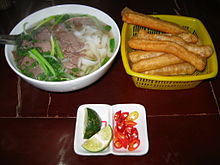
Due to its long history as a tributary state of China, as well as several periods of Chinese occupations, Vietnamese culture is strongly influenced by that of southern China, with Confucianism forming the basis of Vietnamese social etiquette. The Vietnamese language also contains many loan words from Chinese, though the two languages are unrelated. Buddhism remains the single largest religion in Vietnam. As in China, but unlike its Southeast Asian neighbors, the dominant school of Buddhism in Vietnam is the Mahayana School.
Nevertheless, Vietnamese culture remains distinct from Chinese culture as it has also absorbed cultural elements from neighboring Hindu civilizations such as the Champa and the Khmer empires. The French colonization also left a lasting impact on Vietnamese society, perhaps symbolised best by the Vietnamese fondness for baguettes and coffee. Southern and Central Vietnam, especially along the coast, have a much stronger Western influence, as compared to the North.
The division of Vietnam during what is locally called the American War has also resulted in cultural differences between northern and southern Vietnam that can be seen today. To this day, northern Vietnamese have a tendency to be more ideological, while southern Vietnamese tend to be more business-minded.
Vietnam is known for several traditional arts, with perhaps the most famous being water puppetry . In modern times, Vietnam has also jumped on the cirque nouveau bandwagon, with AO Show from Ho Chi Minh City perhaps being the best known example. Vietnam is also home to a vibrant pop music scene, with South Korean pop being the biggest influence on modern Vietnamese pop music.
Climate [ edit ]
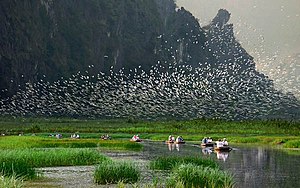
Vietnam is large enough to have several distinct climate zones.
- The south has three somewhat distinct seasons: hot and dry from Mar-Apr; rainy from May-Nov; and cool and dry from Dec-Feb. April is the hottest month, with mid-day temperatures of 33°C (91°F) or more most days. During the rainy season, downpours can happen every afternoon, and occasional street flooding occurs. Temperatures range from stifling hot before a rainstorm to pleasantly cool afterwards. Mosquitoes are most numerous in the rainy season. Dec-Feb is the most pleasant time to visit, with cool evenings down to around 20°C (68°F).
- The north has four distinct seasons, with a comparatively chilly winter (temperatures can dip below 15°C/59°F in Hanoi), a hot and rainy summer and pleasant spring (Mar-Apr) and autumn (Oct-Dec) seasons. However, in the Highlands both extremes are amplified, with occasional snow in the winter and temperatures hitting 40°C (104°F) in the summer.
- In the central regions the Hai Van pass separates two different weather patterns of the north starting in Langco (which is hotter in summer and cooler in winter) from the milder conditions south starting in Da Nang. Northeast monsoon conditions Sep-Feb often have strong winds, large sea swells and rain. This is a miserable and difficult time to travel through Central Vietnam by motorbike. Normally summers are hot and dry.
Read [ edit ]
- Catfish and Mandala: A Two-Wheeled Voyage Through the Landscape and Memory of Vietnam by Andrew X. Pham (2000).
- The Quiet American by Graham Greene (1955). Set in 1950s Saigon. A love triangle with a historical backdrop. 2 film adaptations: 1958 & 2002.
- The Lover by Marguerite Duras (1984) (original title: L'amant ). Film adaptation: 1992 starring Jane March, directed by Jean-Jacques Annaud.
Watch [ edit ]
- Indochine (French, 1992), with Catherine Deneuve, directed by Régis Wargnier. Set in 1930s French Indochina. A good storyline with some interesting insights on the history and politics of the time. Set around Saigon.
- Cyclo (Vietnamese, 1995). Set in Saigon, a dive into the murky violence and poverty of 1990s Saigon.
Holidays [ edit ]
By far the largest holiday is Tết — the Lunar New Year — which takes place between late January and March. In the period leading up to Tết, the country is abuzz with preparations. Guys on motorbikes rush around delivering potted tangerine trees and flowering bushes, the traditional household decorations. People get a little bit stressed out and the elbows get sharper, especially in big cities, where the usual hectic level of traffic becomes almost homicidal. Then a few days before Tết the pace begins to slow down, as thousands of city residents depart for their ancestral hometowns in the provinces. Finally on the first day of the new year an abrupt transformation occurs: the streets become quiet, almost deserted. Nearly all shops and restaurants close for three days, (the exception being a few that cater especially to foreign visitors; and hotels operate as usual.)
In the major cities, streets are decorated with lights and public festivities are organized which attract many thousands of residents. But for Vietnamese, Tết is mostly a private, family celebration. On the eve of the new year, families gather together and exchange good wishes (from more junior to more senior) and gifts of "lucky money" (from more senior to more junior). In the first three days of the year, the daytime hours are devoted to visiting: houses of relatives on the first day, closest friends and important colleagues on the second day, and everyone else on the third day. Many people also visit pagodas. The evening hours are spent drinking and gambling (men) or chatting, playing, singing karaoke, and enjoying traditional snacks and sweets (for women and children.)
Visiting Vietnam during Tết has good points and bad points. On the minus side: modes of transport are jammed just before the holiday as many Vietnamese travel to their home towns; hotels fill up, especially in smaller towns; and your choice of shopping and dining is severely limited in the first days of the new year (with a few places closed for up to two weeks). On the plus side, you can observe the preparations and enjoy the public festivities; pagodas are especially active; no admission is charged to those museums and historical sites that stay open; and the foreigner-oriented travel industry of backpacker buses and resort hotels chugs along as usual. Visitors also stand a chance of being invited to join the festivities, especially if you have some local connections or manage to make some Vietnamese friends during your stay. When visiting during Tết, it's wise to get settled somewhere at least two days before the new year, and don't try to move again until a couple of days after.
Lesser holidays include 1 May, the traditional socialist labor day, 2 September, Vietnam's national day, King Hung celebration on 10 March of Lunar Calendar, commemorating past kings, and Reunification Day on 30 April, marking the fall of Saigon in 1975. Around those times, trains and planes tend to be sold out, and accommodation at the beach or in Dalat are hard to find. Best to book far in advance.
See also [ edit ]
- Vietnamese phrasebook
- Driving in Vietnam
- Trekking in Vietnam
- Vietnam by motorcycle
- Vietnamese cuisine
Tourist information [ edit ]
- Vietnam Travel website
Talk [ edit ]
The official language of Vietnam is Vietnamese ( Tiếng Việt ). Vietnamese is a tonal language that uses a change in pitch to inflect different meanings, and this can make it difficult to master. Travellers may still be surprised to learn that the basic grammar is pretty simple. Verbs are static regardless of the past or future and parts of speech are pretty straightforward. The major difficulties lie in the pronunciation of the various tones and some of the sounds. Vietnamese is an Austroasiatic language that is related to Khmer, though the two languages are not mutually intelligible.
Vietnamese consists of 5 main dialects: the northern dialect spoken around Hanoi, the north-central dialect spoken around Vinh, the central dialect spoken around Hue, the south-central dialect spoken around Phu Yen and the southern dialect spoken around Ho Chi Minh City.
While the Hanoi dialect is the prestige dialect and widely used in broadcasting, there is no legally-defined standard dialect of Vietnamese. Northerners often think that the southern dialect is for "hai lúa" (country folk) and will always recommend that you stick to the northern dialect, but the choice of dialect should depend on where you plan to stay. If you are working in Ho Chi Minh City , the main economic centre of Vietnam, the southern dialect is what you will hear every day. The southern dialect is also more prevalent among Vietnamese communities in the West due to the southern origin of most of the Vietnam War refugees.
Vietnamese uses the Latin alphabet (with heavy use of diacritics), and the spelling accurately reflects the pronunciation. However, the pronunciation of the letters is often different from that in English.
Although Chinese characters are no longer used to write Vietnamese, the Vietnamese lexicon continues to be heavily influenced by the Chinese language. Some words are loanwords from Chinese like "hotel" (khách sạn), "children" (nhi đồng), "communist party" (đảng cộng sản); some are formed based on Chinese roots (characters), like "representative" (đại diện) or "bird flu" (cúm gà). Any knowledge of the Chinese language will make it much easier to learn Vietnamese. Chinese characters are sometimes still used for ceremonial purposes, such as in Buddhist and Taoist temples, but in general most Vietnamese are unable to read them. Vietnamese is also full of French and English loanwords. Nowadays, some English words are used directly in Vietnamese: camera, clip, internet, jeans, PC, sandwich, selfie, radar, show, smartphone, tablet, TV, etc.
Although the Vietnamese people appreciate any effort to learn their language, most seldom experience foreign accents. Consequently, learners may find it frustrating that no one can understand what they try to say. Staff in hotels and children tend to have a more tolerant ear for foreign accents and it is not unheard of for children to effectively help translate your badly pronounced Vietnamese into authentic Vietnamese for adults.
Ho Chi Minh City is home to a sizeable ethnic Chinese community, many of whom speak Cantonese . The more remote parts of the country are also home to many ethnic minorities who speak various languages belonging to the Mon-Khmer, Tai-Kadai and Austronesian language families.
Most younger Vietnamese learn English in school, but proficiency is generally poor. However, most hotel and airline staff will know enough English to communicate. Younger upper and middle class Vietnamese generally have a basic grasp of English. Road directional signs are generally bilingual in Vietnamese and English. Vietnamese people are much more adept at using 'Translate' Apps on phones than in neighbouring countries and will readily use these as means of communicating in English as well as other languages.
As a result of its colonial legacy, educated senior citizens are able to speak French . However, English has supplanted French as the main foreign language among the younger generations.
Russian is also spoken by some Vietnamese who have studied, worked, or done business in the USSR or Russia.
In the big cities, some of the big international luxury hotel chains will have staff who can speak other foreign languages such as Mandarin, Japanese, or Korean. At the more popular tourist sites, such as Hanoi's Temple of Literature, guides conduct tours in a number of foreign languages, including German, French, Spanish, Mandarin, Korean or Japanese.
Get in [ edit ]
Entry requirements [ edit ], visa-free entry [ edit ].
As of 2023/2024, visitors from the following countries, with their passport validity being at least 6 months from the date of entry, do not require a visa and can stay for the following number of days:
- 14 days: Brunei , Myanmar
- 21 days: Philippines
- 30 days: Indonesia , Kyrgyzstan , Laos , Malaysia , Singapore , Thailand , Cambodia
- 45 days: Belarus , Denmark , Finland , France , Germany , Italy , Japan , Norway , South Korea , Spain , Sweden , Russia , the United Kingdom (valid until 14 March 2025)
- 90 days: Chile , Panama
No specific waiting time is necessary between exit and re-entry on visa-free or visa-based visits to Vietnam. The visa-free period is calculated anew for every entry.
Further visa-free entries into Vietnam include:
- Any foreigner on a permanent or temporary residence permit.
- Any foreigner travelling in a border economic zone (e.g. Ha Tien ) for no more than 15 days, or in a special administrative and economic zone or a coastal economic zone like Phu Quoc island, off of the southwestern coast, for no more than 30 days. In order to boost tourism, the Vietnamese government has made these changes for Phu Quoc. Phu Quoc International Airport ( PQC IATA ) receives some direct flights from European airports such as Stockholm-Arlanda operated by Thomson , and flights from destinations in Asia. Also, those flying through Ho Chi Minh City (transit) or arriving by boat will not need to apply for a visa beforehand. Those wishing to travel elsewhere afterwards can apply for a proper Vietnamese visa at the local immigration office.
- Any foreign citizen of Vietnamese origin, who can apply for visa exemption that allows multiple entry for 3 months at a time which is valid for the duration of the passport.
In all other cases a visa in advance is required to visit Vietnam — see below. The previous visa-on-arrival scheme has been terminated.
E-Visa [ edit ]

Visitors from many countries , including most Western ones, are eligible for an electronic visa (e-Visa), which you apply for through the official online portal and print out yourself after approval (twice). It typically takes 3 working days to process, costs US$25 (single-entry) or US$50 (multiple-entry), and is valid 30 to 90 days, depending on you nationality and type of visa.
Don't forget to pay, which is a separate step after confirming your application, otherwise your visa application will be on hold! Also, the automatic email confirmation is not reliable and you have to check for yourself online whether you have received the visa. You must print out two paper copies of your visa once it is approved. You will need to submit one copy to the immigration officer when entering the country, and submit the other one to the immigration officer when leaving. You may also need to show it when checking in for your flight.
E-Visas are valid at major airports and seaports, and most but not all land crossings , e.g. not at the Oyadav–Lệ Thanh crossing between Banlung (Cambodia) and Pleiku (Vietnam). A full list of valid crossings is available on the e-Visa website, though many of them use obscure local names that can be difficult to find on maps.
In theory, entry and exit from the country should be from the same airport, seaport, or land crossing as stipulated on the e-Visa form, but in reality this is usually not enforced on the way out. However, you must enter on the date and at the place stipulated on the visa; you will be denied entry if you arrive on the wrong date or at the wrong port of entry. You will also be denied entry if there are typos in vital data on your eVisa such as your name or birth date.
Multiple entry and extended duration, are available with additional documents and information required.
Regular visa [ edit ]
Those not eligible for an eVisa can apply for a regular visa at most Vietnamese embassies and consulates abroad. The cost of applying depends on your nationality and the embassy or consulate you are applying at, but it will generally cost at least double the price of the eVisa. Check with the Vietnamese embassy or consulate in your country of residence, or the country you are in, for details. Embassies are (oddly) reluctant to announce fees on their websites, as the relatively high visa costs are a tourism deterrent, but nevertheless a source of revenue. Email or, even better, call them to get up-to-date information on prices. Or if you are in the same city, walk in and ask in person.
A regular visa may be required for people eligible for e-Visa, in case you want to enter at a remote border crossing that isn't included in the e-Visa system.
If your country does not have a Vietnamese embassy or consulate, a popular alternative would be to apply at the Vietnamese diplomatic missions in Bangkok , Sihanoukville or Phnom Penh . As of 2019, one of the reportedly cheapest places to get a visa are the Vietnamese embassy and consulates in Cambodia, starting at US$40 for a one-month, single entry visa. You may be able to apply for a visa and get it back later the same day; for example, at the Vietnamese embassy in Phnom Penh. Make sure to inquire about the details, since if you don't complete the application before a certain time of day, you will need to wait until the next day to pick up the visa and your passport.
Dual citizens [ edit ]
If you are a citizen of two foreign countries, you may be entering Vietnam on a different passport (Country A) than the one you have used to leave the previous country on your itinerary (Country B's passport) (e.g. because Country A's passport has a Vietnamese visa or offers a visa-free entry to Vietnam, while Country B's passport has a visa for the previous visited country). In this case, the Vietnamese immigration inspector will likely want to see the exit stamp and/or visa in your Country B passport as well. He may suggest putting the Vietnamese entry stamp into Country B passport as well, so that all your stamps would be in one place. Don't take him up on his offer; make sure that the Vietnamese entry stamp goes into the passport that either has the Vietnamese visa, or offers visa-free entry to Vietnam. Otherwise, you risk having problems when leaving Vietnam; the border control officers at your attempted exit point may declare your entry stamp "invalid" and send you back to your original point of entry to have the error corrected.
By plane [ edit ]
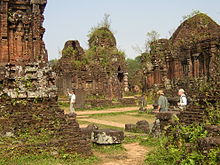
Vietnam's main international airports are located at Hanoi ( HAN IATA ) and Ho Chi Minh City ( SGN IATA ). Both airports are served by numerous flights from major cities in East Asia and Southeast Asia , with some intercontinental services to Australia , Europe and the United States .
International airports at Da Nang , Vinh , Nha Trang and Phu Quoc receive flights from neighboring Asian countries. As Da Nang is closer to the historical sites of Central Vietnam than the two main airports, it can make a convenient entry point for those who wish to visit those sites.
The national carrier is Vietnam Airlines , which operates flights into Vietnam's two largest cities from various cities in Australia, Asia and Europe. Vietnam Airlines serves most capital cities of Southeast Asian countries . The largest low cost carrier is Vietjet Air which flies to regional destinations including Bangkok, Chiang Mai, Hong Kong, New Delhi, Seoul, Singapore and Yangon.
By train [ edit ]
There is a nightly sleeper train between Nanning in China and Hanoi, taking 12 hours, including a tedious 2+2 hours at the border — see Hanoi#Get in for details. Through service are also available from Beijing , but travellers will need to change railway coaches at Nanning.
The old metre-gauge Kunming-Hanoi line has closed, and the simplest work-around is to take the high-speed train from Kunming to Nanning to join the overnight train to Hanoi. Another option is to travel to Hekou North Station in China, walk across the border from Hekou to Lao Cai , then take a Vietnamese train from Lao Cai to Hanoi. Both sides have several trains a day, so a daytime train from Kunming to Hekou can be matched with an overnight train from Lao Cai to Hanoi.
There are no railway links between Vietnam and Laos or Cambodia.
By road [ edit ]
Cambodia [ edit ].
Regarding bribes ; this is still a problem as of 2023, however most people encounter no issues when entering Vietnam by land. Certain border crossings, like the Bavet–Moc Bai crossing between Phnom Penh and Ho Chi Minh City , are known for demanding a 100,000–200,000 dong bribe from some people for giving the entry (but also exit) stamp — a claim is that this only applies to e-Visa. If you are one of the unlucky ones, try negotiating it down to 50,000 dong or be bold, put the 50,000 dong into your passport, walk up to the border officer desk in the VIP line, and hand over your passport. Check the reviews of the relevant border checkpoint on Google Maps to understand the situation and how to react. When travelling by bus, most likely the bus company will take care of the border formalities in exchange for a "service fee", so as to not to get stuck at the border. So, any potential bribe will already be included in this service fee or your bus ticket price.
The main crossing with Cambodia is the already above mentioned Bavet–Moc Bai crossing on the Phnom Penh–Ho Chi Minh City road. Buses between the two cities cost US$22–25 and take around 6–7 hr. Passengers are usually taken to a duty free shop for lunch while staff process them through immigration.
The Phnom Den–Tinh Bien crossing just north of Chau Doc . There is no regular boat service from Chau Doc onward towards Ho Chi Minh City or even other parts of the Mekong Delta , but you have to go by road.
Close to the coast is the Xa Xia–Prek Chak (Ha Tien) crossing . The Vietnamese consulate in Sihanoukville issues 30-day tourist visas on a same-day basis. Buses run between Sihanoukville and Phnom Penh , and Ha Tien and even Phu Quoc in Vietnam.
The Tro Peang Plong–Xa Mat crossing on the Kampong Cham – Ho Chi Minh City road is not well served by public transportation.
The Oyadav–Lệ Thanh crossing connects Banlung in North Eastern Cambodia and Pleiku in the Central Highlands of Vietnam. Vietnam e-Visas are not accepted for entering Vietnam at this border crossing. So, only visa-free nationalities or people with a traditional visa from an embassy/consulate can enter. The Vietnamese entry checkpoint closes to foreigners at 17:30.
China [ edit ]
There are three border crossings between China and Vietnam that can be used by foreigners:
- Dongxing - Mong Cai ( by road; onward travel Mong Cai to Ha Long by sea or by road )
- Hekou - Lao Cai ( by road and/or rail, but no international passenger train services )
- Youyi Guan - Huu Nghi Quan (Friendship Pass - by road and/or rail )
Laos [ edit ]
There are six border crossings between Laos and Vietnam that can be used by foreigners (from north to south):
- Tay Trang (Dien Bien province, Vietnam) - Sobboun (Phongsali province, Laos)
- Na Mao (Thanh Hoa province, Vietnam) - Namsoi (Houaphanh province, Laos)
- Nam Can (Vietnam) - Namkan (Xiangkhouang province, Laos)
- Kaew Neua - Cau Treo (Keo Nua Pass)
- Lao Bao (Vietnam) - Dansavan (Laos)
- Ngoc Hoi (Kon Tum province, Vietnam) - Bo Y (Attapeu province, Laos)
Be wary of catching local buses from Laos to Vietnam. Not only are they often crammed with cargo (coal and live chickens, often underfoot) but many buses run in the middle of the night, stopping for several hours in order to wait for the border to open at 07:00. Whilst waiting, you will be herded off the bus (for several hours) where you will be approached by pushy locals offering assistance in getting a Laos exit stamp in exchange for money (usually US$5+). If you bargain hard (tiring, at 04:00) you can get the figure down to about US$2. The men will take your passports, which can be disconcerting, but they do provide the service they promise. It is unclear whether you can just wait for the border officials to do this. There is also a VIP bus from Savannakhet.
By boat [ edit ]
Boats (4–5 hr) from Phnom Penh to Chau Doc run once a day — see Phnom Penh#By boat . They use the so called Song Tien landport border crossing on the banks of the Mekong River.
This journey between Phnom Penh and Ho Chi Minh City can also be stretched into a 2-nights/3-days Mekong Delta tour and provides a more insightful journey between the two cities, starting from about US$60–100. However, the only times on a boat with these tours will be the Phnom Penh–Chau Doc bit, a floating market morning boat tour from any of the overnight towns along the way, and the short Ben Tre – My Tho boat ride — the rest is by bus. For an actual boat tour of the Mekong Delta it will probably require several hundreds if not a thousand US dollars.
Get around [ edit ]

Trains are undoubtedly the most comfortable and an exciting way to travel overland in Vietnam.
Due to the steady increase of tourist bus prices, trains are now an inexpensive alternative to buses. While a night in a sleeper carriage is still more expensive than a sleeper bus, seat carriage prices are very competitive.
Destinations [ edit ]
There is one major train line in Vietnam, the 1,723 km (1,071 mi) trunk between Hanoi and Ho Chi Minh City (HCMC), on which the Reunification Express runs. HCMC to Hanoi is more than 30 hours, and overnight hops between major destinations are usually possible, if not entirely convenient. It is a good way to see the countryside and meet upper-middle class locals, but unless you are travelling in a sleeper car it is no more comfortable than buses.
In addition, there are shorter routes from Hanoi leading northwest and northeast, with international crossings into China . One of the most popular of the shorter routes is the overnight train from Hanoi to Lao Cai (with a bus service from Lao Cai to the tourist destination of Sapa ).
Seats and carriages [ edit ]
Air conditioned soft or hard sleeper berths are recommended for overnight trains. Otherwise air-conditioned soft seats are sufficiently comfortable to travel in them during the day. If you are sensitive to cigarette smoke try to book a seat closer to the middle of the carriage as people smoke in the areas at the end of the carriages and the doors are often left open.
At least in the sleeper carriages, there are hot and cold water dispensers and paper cups — tea or instant coffee may be a great idea. Toilets in the seater carriages can be squatting ones, whereas toilets in the sleeper carriages are regular ones. So, if possible, head to one of the sleeper carriages if the passage is not locked. There is always a sink separate from the toilet with water to wash your hands, but only the sleeper carriages may have soap and a dryer.
When buying a ticket, also check the sleeper carriages for availability. During day travel, some sleeper berths are priced almost as cheap as seats, the upper berth sometimes even cheaper. Note that the train personnel in Vietnam seems to enforce the bed selection and people are not sitting together on the lower seat during the day like in India. In the worst case, you will have to stay in sleeping position the whole trip, during the day. However, on the lower berth(s), two friends or on your own, with one or two pillows in your back, is a great way to chill and watch the landscapes fly buy. If the seater carriage is fully booked, be assured, so will be the sleeper soon. So, you will most likely have to stick to the selected berth, even if your side of the cabin was empty when you booked it. (In the 6-berth carriage, for more head space put the middle berth up half way and use the foot rest to keep it in that position.)
Tickets [ edit ]
In high season, purchasing as early as possible is a good idea. However, you can simply check the ticket situation online by checking near-future trains (in the next couple of days) to understand how early you need to book.
Booking online is possible through the official Vietnamese Railways website , which has an English version and accepts payments by international bank cards. The process is straight forward and works flawlessly — you will receive an e-ticket for download with a QR code in the end. Printing the e-ticket is not necessary if you got the QR code, but most larger railway stations will have a ticket printing machine anyways, just in case.
Prices fluctuate a little, by 5% or so, but booking early except for assuring a seat is not necessary. Prices for holiday periods are generally higher.
There are commercial websites to book your train ticket with, like Baolau or 12go.Asia . However, if the Vietnamese Railway website is working, there is no real reason to do so. Also, while they will assure you a seat on the train, they might lie about the type of seat, especially if the train is getting full. It happened to tourists in the past that they booked a regular seat but ended up with a sleeper berth, having to lie down the whole journey during daytime. It is best therefore to book directly, which will also ensure you the best price.
Booking at the train station itself is generally safe, but beware of scams by station staff . Prepare a piece of paper with the destination with date, time, no. of passengers and seat class, and, most importantly, know the price.
( It is unclear whether the following information is still relevant as of 2023. ) Popular berths and routes are often bought out by tour companies and travel agents well before the departure time. Being told the train is sold out at a station ticket window or popular tour company office does not mean there are no tickets available; they have simply been bought by another reseller. Unsold tickets can often be bought last minute from people hanging around at the station. A train is rarely sold out for real, as the railway company will add cars when demand is high. Commissions on these tickets will drop away as the departure time draws nearer. As of July 2018 tickets (now termed "boarding passes") do indicate the class of ticket, making scams with falsely promised seat classes less of an issue, although buying your ticket directly online or from the train station remains the best option.
By bus [ edit ]

Public buses travel between the cities' bus stations. In bigger places, you often have to use local transport to get into the city centre from there. Buses are generally in reasonable shape, and you have the chance to interact with locals.
Every major city will have a centralised bus station, and most of the major companies will have ticket offices at the stations. Bus stations are generally well organised, safe and easy enough to navigate even if you don't speak Vietnamese.
As a foreigner, you are likely to get overcharged on local buses, where you pay a conductor during the journey. Find out what the right fare is by looking up the price (it is displayed somewhere, often next to the front door on the outside of the bus; take a photo if you can), or by talking to one of the local travellers. Give the right amount and be prepared to argue your case. Nowadays however, many conductors will issue tickets, making it harder or less interesting for them to overcharge you.
Long-distance buses connect most cities in Vietnam. Most depart early in the morning to accommodate traffic and late afternoon rains, or run overnight. Average road speeds are typically quite slow, even when travelling between cities. For example, a 276 km (172 mi) journey from the Mekong Delta to Ho Chi Minh City by bus will likely take about 8 hours.
So called open tour buses are run by a multitude of tour companies. They cater especially to tourists, including door-to-door service to your desired hostel. You can break the journey at any point and continue on a bus of the same company any time later, or simply buy tickets just for the stage you're willing to cover next. If you are not planning to make more than 3-4 stops, it might be cheaper to buy separate tickets as you go. Buses without the journey break option are just called deluxe or inter-provincial buses .

There are seater buses available, especially during the day, sleeper buses , where instead of a seat, you get an angled-flat bunk bed that you can sleep on, and more expensive VIP sleeper bus , in which you get a wider bunk bed, your own cubicle for more privacy, and a personal TV system similar to those in aeroplanes.
Most ho(s)tels and guesthouses can book buses for you. However, they will try to book a more expensive option, because their commission is bigger then. So, you are better off to shop around at travel agents and bus companies directly, as prices will vary considerably on any given ticket or bus company — some buses (even sleeper) are as cheap as a seater railway carriage, e.g. FUTA Bus or Son Tung Bus (Hue and south). Booking with the bus company directly may net you a commission-free fare, but most companies have fixed pricing policies, which can only be circumvented through a travel agent.
If you are traveling with a bicycle , negotiate the extra fee with the driver rather than the ticket counter before buying your ticket. The bicycle fee should be no more than 10% of the ticket price.
Cope [ edit ]

Stop-offs are often at souvenir shops to give the bus company an extra income. You do not have to buy anything, but they always have toilets and drinks and water available for purchase. The estimated time for a bus trip will not be accurate and may be an additional couple of hours sometimes, due to the number of stop offs. Collecting the passengers at the start of the journey can also take quite a while too. Always be at least half an hour early to catch the bus. Try not to drink too much water, as rest stops, especially for overnight buses, may be just somewhere where there are a lot of bushes.
Vietnamese buses are made for Vietnamese people; bigger Westerners will be uncomfortable, especially on overnight buses. Also, many Vietnamese are not used to travelling on long-haul buses, and will sometimes get sick — not very pleasant if you are stuck on an overnight bus with several Vietnamese throwing up behind you.
Even if you are sometimes bus-sick, it is advisable to book a seat at the middle rather than at the front of the bus. First, you will avoid viewing directly the short-sighted risks the driver is taking on the way. Second, you will somewhat escape the loud noise of non-stop honking (each time the bus passes another vehicle, that is about every 10 seconds).
Although the bus company will usually be happy to collect you at your hotel or guest house, boarding at the company office will guarantee a choice of seats and you will avoid getting stuck at the back or unable to sit next to your travelling companions. The offices are generally located in or near the tourist area of town, and a short walk might make your trip that much more pleasant.
The long haul bus companies operate from north to south and back on the only main road (QL1). If you take a bus going further than your destination, the bus will drop you off at the most convenient crossroad for it and not as you may have expected at the bus terminal of your destination. For Hué, this crossroad is 13 km from the city centre; for Nha Trang 10 km. At these crossroads, you will find taxis or motorbike taxis to get you to your ho(s)tel.
Stay safe [ edit ]
A scam that you may encounter is that after arriving at your location, the guides will ask you whether you have booked a hotel. Even though you haven't, say that you have and prepare the name of a hotel. If you say you have not booked one, they will charter a taxi for you and probably drop you at a hotel which they can collect commission. If you decide not to stay, things may get a little ugly, as they will demand that you pay the taxi fare, which they may quote as several times the actual fare for a ten-minute ride.
Be very careful of your possessions on the overnight bus, as people (including bus employees) have been known to look through passenger's bags and take expensive items like electronics and sell them on for profit. Do not fall asleep with your headphones in your ear, as the chances are your phone will be nowhere to be found in the morning. Get a padlock for your hand luggage and lock everything up in there before you go to sleep.
Flights are the fastest way to traverse this long country. Flights between Hanoi and HCMC last only about 2 hours and start at €30–40.
There are many airports connecting with Hanoi and HCMC (north to south).
Northern Vietnam :
- Điện Biên Phủ Airport ( DIN IATA ) near Dien Bien Phu
- Van Don International Airport ( VDO IATA ) near Cai Rong
- Cat Bi International Airport ( HPH IATA ) near Hai Phong , including international connections with South Korea and China
Central Coast :
- Vinh Airport ( VII IATA ) near Vinh
- Dong Hoi Airport ( VDH IATA ) near Dong Hoi
- Phu Bai International Airport ( HUI IATA ) near Hue
- Da Nang International Airport ( DAD IATA ) near Da Nang , including international connections with South Korea , China , Malaysia , Cambodia , Singapore , Taiwan , and Japan
- Chu Lai Airport ( VCL IATA ) near Quảng Ngãi
- Phù Cát Airport ( UIH IATA ) near Quy Nhon
- Tuy Hoa Airport ( TBB IATA )
- Cam Ranh International Airport ( CXR IATA ) near Nha Trang , including international connections with South Korea , China , Malaysia , Thailand
Central Highlands :
- Pleiku Airport ( PXU IATA ) near Pleiku
- Buon Ma Thuot Airport ( BMV IATA ) near Buon Ma Thuot
- Lien Khuong Airport ( DLI IATA ) near Da Lat , including domestic connections to Da Nang , Vinh and Hue
Southern Vietnam :
- Rach Gia Airport ( VKG IATA ) near Rach Gia
- Can Tho International Airport ( VCA IATA ) near Can Tho
- Con Dao Airport ( VCS IATA ) on Con Dao
- Phú Quôc International Airport ( PQC IATA ) on Phú Quôc
Some airports are further away from the next major city or sight. Make sure to know how to get away from the airport without shedding another 500,000 dong for a taxi.
The full-service domestic airlines are flag carrier Vietnam Airlines operating some shorter flights, as well as privately owned Bamboo Airways . The main budget airlines are Pacific Airlines [dead link] and VietJet Air .
By bicycle [ edit ]
Adventurous travellers may wish to see Vietnam by cycling . Several adventure travel tours provide package tours with equipment. Most of the population get around on two wheels, so it's an excellent way to get closer to the people as well as off the beaten path.
Bicycles can be rented cheaply in many cities and are often a great way of covering larger distances. Good spots for cycling are Dalat , Hoi An , Hue and Ninh Binh . On the other hand, attempting to cycle in Hanoi or Ho Chi Minh City (HCMC) is virtually suicide without proper experience of traffic rules (or lack thereof, 'proper experience' in this case means understanding that everyone around you could potentially change direction without signalling and at any moment). A general 'rule of thumb' when on a bicycle or motorbike is 'expect the unexpected'. It's like a school of fish traffic situation.
In cities like HCMC and Hanoi, parking bicycles on pedestrian areas is not allowed and you will have to go to a pay parking lot: 2,000 dong per bike, 5,000 dong for a motorbike.
By motorbike [ edit ]

Some choose to traverse the entire country this way while most are satisfied with a few local day trips — also see below . If you are not an experienced motorbike rider you should reconsider starting to ride here. Riding in the big cities is not advisable unless you are an experienced rider with a very cool head. Traffic is intense and chaotic; "right of way" is a nearly unknown concept.
In small towns and beach resorts where traffic is light, e.g. Pho Quoc, it's a delightful way to get around and see the sights, and much cheaper than taxis if you make several stops or travel any distance. Roads are usually decent, though it's advisable not to ride too fast and always keep an eye on the road for the occasional pothole.
Two main categories of motorbike are available for rent: scooters (automatic transmission); and four-speed motorbikes.
Most places you would want to stop have parking attendants who will issue you a numbered tag and watch over your bike.
If you are in Vietnam during the rainy season , make sure to buy a poncho or a raincoat before you start. They are available for as little as 10,000 dong. However, the traffic doesn't stop, it just becomes more chaotic. If you are hesitant or have not driven in such conditions before, it might be prudent to park and wait.
Beware of thieves: always keep your motorbike in sight or parked with an attendant. Look for rows of neatly-parked motorbikes or signs that say giu xe .
It is illegal for foreigners to ride a motorbike in Vietnam without a temporary Vietnamese motorbike licence , or an International Driving Permit with a valid home country motorbike licence. Nevertheless, many foreigners ride without a valid licence. Make sure to check with your travel insurance company to see if you are even covered to ride.
Crossing the border into Cambodia with a Vietnamese license plate seems no issue as of Dec 2023.
By taxi [ edit ]
Nowadays, the taxi and motorbike taxi market is dominated by the ride-hailing service Grab ( Android , iOS ), which took over Uber's former South-east Asian operations, including that of Vietnam. This means that the price and destination are set upfront and cash is not required; while cash is accepted, the driver may not have enough change should you hand them a large note, so preparing the exact amount is preferred. Depending on the route taken and time, prices will be slightly higher than for a taxi in most cases, but will sometimes be even cheaper. Outside of large cities, Grab arranges taxi rides according to metered rates, which are still paid through the app.
Even if you don't use Grab for booking, the app will help you to get a feeling for the rough price ranges for rides in case you hail a taxi or motorbike taxi directly along the street. Note that there are cases where the Grab driver can charge additional money, e.g. in case he used a larger vehicle. Find out about those cases from Vietnamese people or the TOS so not to be surprised when it happens expecting some kind of a scam.
As of 2023, Xanh SM [dead link] is pushing persistently into the taxi aka ride-hailing market with its EV fleet of cars and motorbikes. According to industry insiders they are supposed to overtake Grab in 2024 on the car side. They often have specials to attract people, so it is a good idea to also download this app (for Android or iOS ) and price–compare against Grab, especially for larger distances and prices.
By metered taxi [ edit ]
Regular taxis are still operating in places where ride-hailing may not be immediately available, like airports, railway stations, or around hotels. The smaller the taxi the lower the flag fall: so a small compact saloon or equivalent will have a flag fall of 5,000 dong, a mid range saloon 9,000 dong and an SUV 11,000 dong. The flag fall fare is for a shorter distance the smaller the car so the 5,000 dong flag fall takes you 500 m, whilst the 11,000 dong will last for 850 m so on journeys longer than 1 km the size of the vehicle makes no difference (somewhat complicated but after a few rides you will understand how the system works). In the evening these flag falls may rise by 1,000 dong.
Few drivers speak more than a few words of English, so staff at your hotel write down the names of your travel destinations in Vietnamese to show the driver. Another option is to show them the destination in Google Maps on your phone. In that case, most drivers prefer to view the complete route instead of just the destination and may even end up using your phone for navigation. It helps to carry one of your hotel's business cards so you can return to the hotel without too much fuss.
In the more touristy destinations such as Sapa and Cat Ba, it is much more difficult to get drivers to use their meters than in the big cities and beach centres. Be prepared to walk away if the driver refuses to use the meter.
Beware of common taxi scams , such as drivers refusing to use the meter and quoting ridiculous fares, or rigged meters than jump at ridiculous rates. However, as long as the meter starts automatically after the vehicle has been rolling for a few metres or the driver switches it on manually, you shouldn't be scammed. To minimise your chances of falling for a scam, try to learn to recognise the reputable large taxi companies — see city articles.
Carry small change and notes for paying fares, since drivers often are or pretend to be short on change.
Many drivers have a good command of the geography of their city and the nearest most passengers will come to being scammed is that the driver may select a slightly longer route than is strictly necessary. Keeping Google Maps open during your journey often prevents this issue.
By xe ôm [ edit ]
Motorbike taxis ( xe ôm , literally "hugging vehicle") are a cheap and reasonable mode of transport for Vietnamese as well as tourists — provided you avoid getting scammed. It's generally not a good idea to grab a random one off the street, as you are much more likely to get scammed as a foreigner. Instead, use one of the before mentioned ride hailing apps if available or use them for negotiating the price, as you are much less likely to get scammed that way. About 10,000 dong should suffice for a 10-minute trip, which should get you anywhere within the city centre. Longer trips to outlying areas should cost about 20,000-30,000 dong.
All riders are now required to wear helmets, a rule that is strongly enforced. Make sure the driver supplies you with a helmet. If he doesn't, find another one, as you'll be the one stung for the fine.
Drivers rarely speak English. As with most things, a tourist will often be quoted an above-market price initially, and you need to be firm, anything over 10,000 dong is a reason to walk away. Occasionally drivers will demand more than the negotiated price at the end, so it's best to have exact change handy. Then you can pay the agreed amount and walk away, end of discussion.
In some cases they will take you wherever they want (tourist attractions or shops you didn't request to go) and sometimes they will wait for you to come back (even if you don't want them to wait) and will ask you for more money for having been waiting. Even if you speak some Vietnamese, this is not useful, since they will cheat you anyway or they will act as if they don't understand even if they do. Again, be firm and walk away.
By cyclo [ edit ]

Not really an alternative to (motorbike) taxis, but an interesting way to see the city, cyclo pedicabs still roam the streets of Vietnam's cities and towns, especially the ones with many tourists. They are especially common in scenic smaller, less busy cities like Hue, where it's pleasant to cruise slowly along taking in the sights. Though the ride will be slow, hot and sometimes dangerous, you will generally need to pay more than for a motorbike for the equivalent distance. On the plus side, some drivers (particularly in the South) are very friendly and happy to give you a running commentary on the sights. Cyclos are slowly being supplanted by motorbikes though.
Cyclo drivers are notoriously mercenary and will always ask for a high price to start with. Sometimes they will also demand more than the agreed price at the end. Japanese tourists, especially women, are most often targeted with this scam since they are more responsive to the threat that the driver will call the police and make trouble for them if they don't pay as demanded. A reasonable price is about 20,000 dong for up to 2 km (1.2 mi), and if the driver disagrees, simply walk away — you won't get far before that driver or another takes your offer.
Prices for a sightseeing circuit with intermediate stops are more complex to negotiate and more subject to conflict at the end. If you plan to stop somewhere for any length of time, it's best to settle up with the driver, make no promises, and start fresh later. Some drivers start with a very low rate to get you into their cycle and then if required to wait for you or otherwise vary the agreed price, bring out a typed up price list of their "standard rates" which are inflated beyond belief. If even slightly unsure ask the driver show you his list of charges. Then negotiate from that point or walk away.
To avoid trouble, it's also best to have exact change for the amount you agreed to pay, so if the driver tries to revise the deal, you can just lay your cash on the seat and leave.

You will be missing a big part of Vietnamese life if you do not spend some time on a boat. Do be careful though because many boats, although seaworthy, are not designed to first world standards. An example is the ferry from Phu Quoc to the mainland. This ferry has one tiny entrance for all passengers to board. When full, which it usually is, there are approximately 200 people on board. In the event of an accident, the chance of everyone getting out of the boat fast enough would be very small. The idea of an emergency exit does not exist there.
Tour boats can be chartered for around US$20 for a day's tour; but beware of safety issues if you charter a boat, make sure the boat is registered for carrying tourists and has enough life jackets and other safety equipment on board. Or you can book a tour through a tour company; but in Vietnam most Tour Agents charge whatever markup they want and therefore the tourist is often paying margins of 30-40% and the boat owner and operator (of anything from a van to a boat etc.) are paid very little of the total amount.
Ha Long Bay is a famous destination for one- to three-day boat trips among its scenic limestone islands. The problem is that all the boats seem to visit the same places - and with high prices, poor quality boats and service real value is hard to come by. Many boats have a US$10 corkage fee, and forbid BYO alcohol, while on-board alcohol and seafood is about the same price as in Europe in some places. If there is rain, mist or low cloud, you may not see much. Try to pick a clear day.
Dozens of small family-operated boats ply the river in Hue taking visitors to the imperial tombs southwest of the city. This journey is long because the boats are slow, taking about 4 hours or so to make the journey in one direction.
Snorkel, fishing or lunch trips are available from Nha Trang , Hoi An , and Phu Quoc to nearby islands. In Central Vietnam northeast monsoon season limits many sea boat tours during the months Sep-Feb; other parts of Vietnam seem less affected.
A 90-minute hydrofoil boat operates from HCMC to the seaside resort of Vung Tau for about 250,000 dong each way, the fastest way to reach the beach from the city.
By car [ edit ]

Traffic moves on the right in Vietnam.
The concept of renting a car to drive yourself is almost non-existent, and when Vietnamese speak of renting a car, they always mean hiring a car with a driver. (After a short time on local roads with their crazy traffic, you will be glad you left the driving to somebody used to it.) Vehicles for rent are widely available. Tourists can hire vehicles through hotels and tour agents found in every tourist area. International car brands have started to surface, offerint chauffeur-driven services. Few drivers speak any English, so make sure you tell the hotel or agent exactly where you want to go, and have that communicated to the driver.
On foot [ edit ]
Traffic is made up of a staggering number of motorbikes and, since import duty was reduced when Vietnam's joined the World Trade Organization, an increasing number of private cars. However it's exceptionally rare to see a motorbike of more than 150cc, and the traffic rarely gets above 20–30 km/hr in central areas.
When crossing roads stay aware, and walk slowly and confidently. Motorbike riders are exceptionally good and will simply move to avoid you, just don't make any sudden erratic moves. Just look for a gap or seam in the traffic, and begin a slow, but steady movement. If you hear a beep coming your way it's likely a motorbike rider is about to enter your personal space. Be alert and prepared to stop putting your foot forward until he passes.
Always look both ways — don't assume traffic only comes from one direction. Give oncoming vehicles ample time to see and avoid you. Never move hastily between rows of waiting cars, often motorbike drivers will use the space between car rows to drive and they won't see you coming, since the cars block their sight.
Adherence to traffic signals is not guaranteed. Drivers tend to use "best judgment". Just remember though that vehicles can always turn right at any time (regardless of lights). Motorbikes often drive in the wrong direction to take a short cut, even against the traffic flow. Crossing roads therefore maybe a challenge for Westerners used to traffic laws and traffic lights.
For navigation make sure to have good (offline) maps and GPS with you. For reliable maps, GPS navigation , comprehensive map information, consult OpenStreetMap , which is also used by this travel guide and by many mobile Apps like OsmAnd or Mapy.cz .
See [ edit ]
Vietnam will show you sides of Asia that you've dreamed of. Lush rice fields at the bottom of stunningly gorgeous highlands, colourful water markets on the streams of the Mekong Delta and the endless bustling city life of Hanoi, where anything from school children to fridges and huge piles of vegetables are transported on the back of countless motorcycles. Although Vietnam's huge cities are rapidly transforming into modern Asian metropolises, traditional culture is never far away.
Architecture [ edit ]
Numerous ancient buildings remain and are actively maintained in Communist Vietnam, like the old town of Hoi An , but so are the buildings of Communist history, like the Independence Palace in Ho Chi Minh City. Also, the colonial history provides for many architectural delicacies.
City life [ edit ]

Head to Hoi An with its Venice-like canals and beautiful old town for some top sightseeing. Enjoy the old port , wander through its endless winding alleys and take a pick from its countless fine restaurants and shops, or relax on the beach. Once a fishermen's village, this town's now well-protected by preservation laws and has turned into a major hot spot for visitors. Hanoi is of course the summit of Asian city life. It's an incredible myriad of ancient traditions, old and modern architecture, sounds, smells, bustling commerce and famously crazy traffic. It's chaotic and enchanting at once - a great place to discover both ancient and contemporary Vietnam. Most sights are in the Old Quarter , including the famous Hoan Kiem Lake and the beautiful Bach Ma Temple . Spend a day or two in Ho Chi Minh City , or Saigon, the country's largest city. Nowhere are contrasts between old and new more ubiquitous and alive than here, where you'll find ancient pagodas and traditional street life at the feet of giant skyscrapers. Top sights include the Reunification Palace and Giac Lam Pagoda . Also well worth visiting is the former imperial town of Hue , with its beautiful Citadel and the Tombs of the Emperors along the Perfume River . The largest beach city is Nha Trang which spreads out along the beach but also has an interesting city-scape.
Landscapes and nature [ edit ]

Few countries are blessed with landscapes as captivating as those of Vietnam. For many, the country's awe-inspiring limestone scenery, perfect beaches, islands, mountain ranges, rice fields and lakes are its greatest treasures. One of Vietnam's top attractions, Ha Long Bay , boasts thousands of limestone pillars and islands topped with dense jungle vegetation. Among the bustling port life, you'll find floating fishermen's villages, caves, and island lakes. Neighboring Lan Ha Bay is as spectacular, but less busy. Head to Sa Pa and the Muong Hoa valley to get take in the views of local rice fields against a background of bamboo forests. Also in the north is Tam Coc near Ninh Binh . This area is famous for its karst scenery, rice fields, and caves and is best explored by hired boat.
Phu Quoc , off the Cambodian coast, is the largest island in the country. Its delightful palm-lined beaches and tropical forests can compete with any in the world. Most famous in the south is of course the Mekong Delta . Here, the Mekong River empties into the South China Sea via a maze of smaller streams. It's a lush, green region and the source of half of Vietnam's agricultural produce. It offers scenic views of the rivers and rices fields as far as the eye can see. Here, natural landscapes and culture go hand in hand as life revolves around the water. The Mekong streams are a major means of transportation and host floating markets .
Some best picks in terms of natural wonders can be found in the country's national parks. Phong Nha-Ke Bang National Park , a UNESCO World Heritage Site, is famous for its natural caves and grottos, with underground rivers and cave beaches as well as stunning stalagmites and stalactites. For wildlife, try Cuc Phuong National Park .
Museums [ edit ]
For better insight in Vietnam's ancient traditions, culture and history, visit one of the many museums, some with truly excellent collections. The War Remnants Museum in Ho Chi Minh City will leave a lasting impression, particularly the chilling collection of war photography. Although not exactly neutral in tone, there are English labels. The HCMC Museum is in a building worth seeing on its own, and gives a nice overview of the city's history. For a broader history collection, try the fine History Museum , which has artefacts from several Vietnamese cultures on display. In Hanoi , the Vietnam Museum of Ethnology is an excellent place to dive into the life of the country's tribal people. In the centre of town is the Fine Arts Museum has all kinds of arts on display, from high-quality wood and stone carvings to fabulous ceramics and textiles. Descriptions in English. For something completely different try the Robert Taylor Museum of Worldwide Arms in Vung Tau . This is one mans fascinating collection of arms and uniforms collected from around the world.
Do [ edit ]
Trekking Vietnam is an ideal way to enjoy and experience beautiful nature of Vietnam, from the yellow farmers' terraces in harvesting season of the north ( Sa Pa ), to the off-the-beaten-path Central Highlands, or the frenetic activity of the Mekong Delta in the south.
Chinese chess ( cờ tướng ) is a popular game in Vietnam, and you will often notice the elderly having games in the public parks. If you know how to play, this can be an opportunity to befriend the locals. A uniquely Vietnamese tradition pertaining to Chinese chess is human chess ( cờ người ), typically played at temple and village festivals during Tết . As the name suggests, the pieces are played by humans dressed in traditional Vietnamese costumes, usually with 16 teenage boys on one side and 16 teenage girls on the other, and a choreographed traditional martial arts fight between the two pieces always ensues whenever a piece is captured.
Retreats, spas, meditation and yoga are popular in Vietnam, with Hoi An in particular becoming a hub for like-minded individuals.
Motorbiking [ edit ]
Epitomized in an episode of “Top Gear” riding a motorbike in Vietnam has become a goal for many people visiting the country. While riding in Vietnam can be dangerous, it can also be a life-changing experience. You see things from the seat of a motorbike that you don't see while travelling in different type of vehicle.
Motorbiking is popular with locals and tourists alike. Given that motorbikes are the main mode of transport in Vietnam, they can give a particularly authentic view of travelling through the country. Renting or buying a bike is possible in many cities.
Major roads between cities tend to be narrow despite being major, and full of tour buses hell-bent on speed, passing slow trucks where maybe they shouldn't have tried, and leaving not much room at the edge for motorbikes. But there are many good roads and beautiful sights to be seen with the freedom of your own motorbike.
Motorbike tours are the newest addition to the motorbike hype in Vietnam. Three basic concepts exist for that:
- On the most simple "tour", your luggage is taken care of and you ride the distance, e.g. Hoi An to Hue by motorbike and visit all the sights on the way. Price-wise this comes up to the same as a bus ride for the same distance, which is why many people choose this interesting alternative.
- On motorbike adventure tours , you are guided on multi-day drives to remote regions of the country. Most tours include accommodation, petrol, helmets, drivers and entry tickets to local places of interest. Guides usually speak good English or French and offer customised tours if desired.
- Motorbike sightseeing tours are similar but have a more local range specific to one city or area and can focus on food, shopping or sightseeing.
Buy [ edit ]
Money [ edit ].
The national currency is the dong ( đồng ), sometimes denoted by the symbol " ₫ " (ISO code: VND ). Prices are usually shown without a currency notation, e.g. as "100.000", "100k" or "100K", and in speech it's common to drop the thousands completely. Wikivoyage articles will use dong to denote the currency.
Notes are available in denominations of 1,000, 2,000, 5,000, 10,000, 20,000, 50,000, 100,000, 200,000 and 500,000 dong. Smaller bills and coins in denominations up to 5,000 dong also exist, but are rarely seen. While they are legal tender, they are difficult to get rid of if you end up with some.
ATMs [ edit ]
ATMs are common and can be found in most cities and every tourist destination. They will accept a selection of credit and debit cards, including Visa, MasterCard, Maestro or Cirrus and several other systems. Many ATMs charge a fee per withdrawal, but a few are free. Withdrawal maximums are a problem of the past and withdrawing 5–10 mn dong is not an issue anymore.
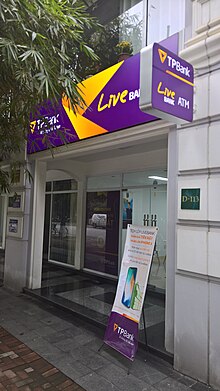
The ATMs of the following banks have no withdrawal fee :
- TP Bank . ( updated Nov 2023 )
- VP Bank . ( updated Dec 2023 )
- ACB . European Visa (unclear whether "Union" or continent) and JCB cards only . ( updated Nov 2023 )
- HDBank . Visa cards only . ( updated Dec 2023 )
- EXIMBANK . ( updated Dec 2023 )
The ATMs of the following banks have the listed fee per withdrawal :
- Agribank . 22,000 dong . ( updated Mar 2020 )
- ABBank . 20,000 dong . ( updated Jan 2018 )
- ANZ Bank . 40,000 dong . ( updated Jan 2018 )
- BIDV Bank . 50,000 dong plus 5,000 dong VAT . ( updated Mar 2016 )
- DongA Bank . 20,000 dong . ( updated Jan 2018 )
- HSBC , [email protected] . 100,000 dong . ( updated May 2016 )
- Techcombank . 66,000 dong . ( updated Jan 2018 )
- VIB . 50,000 dong (and they don't warn about it!) .
- Vietcombank . 1.5% fee . ( updated Feb 2020 )
- Vietinbank . 55,000 dong . ( updated Jun 2016 )
- Sacombank . 1.5% fee . ( updated Feb 2020 )
Credit cards [ edit ]
Credit cards are now accepted more and more around the country, especially where there is a lot of tourists present. Credit card purchases are required by law to be charged in dong.
A train ticket is easily payable with a credit card through the official government website for example.
Cashless payment [ edit ]
Vietnamese seem to love cashless payment, and even the tiniest shop will have a QR code to submit the payment. It is unclear however whether foreigners can use this payment method.
At least the cashless payment hype is not yet at a stage where you will have problems paying with cash, like in India for instance.
Money exchange [ edit ]
If you choose to carry cash, jewellery shops and gold shops offer the best rates for all major and hard currencies (EUR, USD, AUD, SGD, GBP, etc.) and least bureaucracy. Weirdly their rates are sometimes even better than the official Interbank rate at XE.com, but generally they are very close and the procedure is straightforward. There is no form filling or passport required. Most don't advertise their service, just ask. This is vaguely illegal, but enforcement is minimal. The best place in many cities in Vietnam to find gold shops that will transact currency exchange is to head for the central food/clothing market. Try to bring the largest denomination banknotes possible (e.g. $100 for U.S. dollars, £50 for pound sterling) in as pristine a condition as possible, as you will usually get a better rate that way.
Unofficial exchange agents like hotels and travel agencies often have a considerable markup over the official Interbank exchange rate, and sometimes they have different rates for different services. Also, US$50 and US$100 notes get a higher exchange rate than notes of lower denominations. Official exchange counters however, e.g. at the airport or in the city centre, have quite competitive buy and sell rates with markups as low as 1–2%, depending on the currency.
When leaving Vietnam , on most land borders connecting to Cambodia, China and Laos there are freelance money changers to take care of your financial leftovers, but be assured they will get the better of you if you don't know the going rate. In Hanoi airport, there are no money changers after you clear immigration, so exchange your dong before you enter the departure hall unless you plan to shop.
It is difficult to find or exchange dong outside Vietnam, with some notable exceptions such as Singapore or Bangkok — if you are not heading to either of those places, you should get rid of any leftovers before leaving the country.
Banking [ edit ]
Traveller cheques of well-known companies are accepted, but usually a small fee is charged. Fees might also be the only thing that would keep you from getting cash advances on Visa- or MasterCard at most banks. Through both ways you can also get hold of U.S. dollars, though there will be even higher fees. There are mentions in some popular travel books about Vietcombank not charging any commission fees to cash American Express travellers cheques. However, this is no longer true.
There are branches of money transfer companies like Western Union, but this is always one of the more expensive ways to get money. However, it's better for larger amounts. A US$800 transfer costs US$5 from America and the exchange rate is quite good. You may also transfer US dollars to
Acceptance of other currency [ edit ]
Prices are sometimes advertised in U.S. dollars, but payment is almost always expected in dong only , especially outside major tourist destinations. It is easier to bargain with dong, especially since dollar prices are already rounded. If paying with dollars, bills in less than perfect condition may be rejected. US$2 bills (especially those printed in the 1970s) are considered lucky in Vietnam and are worth more than US$2. They make a good tip/gift, and many Vietnamese will keep them in their wallet for luck.
Tipping [ edit ]
Tipping is not expected in Vietnam with the exception of bellhops in high-end hotels, and the Vietnamese themselves don't do it, though tips will not be refused if offered. Some establishments which are used to serving Western tourists have come to expect tips, though it is still perfectly acceptable not to tip. In any case, the price quoted to you is often many times what locals will pay, so tipping can be considered unnecessary in most circumstances. To avoid paying an involuntary tip when a taxi driver claims he doesn't have small change always try to carry small denominations.
Shopping [ edit ]
Tax refund [ edit ].
Foreign visitors may claim a VAT refund provided they make the purchase at a participating shop, and leave the country through specific ports of exit.
Price discrimination [ edit ]
As you travel about, you will find there are clusters of shops all selling similar goods, such as 20 sewing machine shops together, then 30 hardware shops all together, 200 motorcycle repair shops in the same block. Prices are competitive.
However, overcharging has long been an issue in Vietnam tourism, and it is an issue both for foreigners and for Vietnamese people whose accents identify them as being from another region. It can happen anywhere on anything from a hotel room, a ride in a taxi, coffee, a meal, clothing, or basic grocery stuff. Your coffee suddenly becomes 100% more expensive and a restaurant may present you an English menu with inflated prices. A friendly local who spent 30 minutes talking with you may also feel like overcharging you on anything.
Vietnamese hold a diverse view on this issue, and the practice also varies somewhat from region to region, but in general it is more common in Vietnam than other neighboring countries to see it socially acceptable to overcharge foreigners. They may argue inflated prices are still cheap and they may blame the cheap cost of living which attracts a lot of backpackers with bare-bone budgets. According to this school of thought, if tourists complain about it, it's because they are stingy. Rich tourists should not have a problem being overcharged.
In general, in the south, while vendors have no qualms overcharging an ignorant foreigner, they will generally allow you to bargain prices down to the local price if you know what it is and insist on it. On the other hand, vendors in the north tend to hold more strongly onto the belief that foreigners should be overcharged, and they will usually refuse to sell items to you unless you agree to pay the grossly inflated foreigner price.
The good news is that standard prices are much more common than in the early 1990s. You will absolutely spoil your trip if you assume that everyone is cheating you. Just try to be smart. In a restaurant, learn some names of common dishes in Vietnamese, insist that you need to read the Vietnamese menu, and compare it. If owners argue that the portion of dishes in the English menu is different, it's definitely a scam so move to another place. Learn some Vietnamese numbers and try to see how much a local pays a vendor. The old bargaining tactic of proposing a price, if you are sure that it is a fair and appropriate price that a local would get, and walking away often does the trick, if you are willing to actually walk away.
Supermarkets [ edit ]
Shopping in supermarkets is much less common in Vietnam than in Europe and North America, or even in China or Thailand. Most grocery shopping for local still happens in traditional street markets.
Nevertheless, there exist supermarkets and convenience stores in most places, and they are constantly becoming more. Foreign companies are pushing into the market, like the Thai supermarket chain Big C, which also sells clothing items and household goods. Other supermarket chains are OK!, WinMart, Circle K, Family Mart, and Bách Hóa XANH — the latter, mostly available in the south and probably the most inexpensive one, popular for its evening fruit, meat and fish specials —, besides many smaller and privately run convenience stores.
Traditional street and covered markets are still thriving though, especially for produces — much as they do in Thailand for example. Supermarkets are generally more expensive when it comes to produces, but can be cheaper for packaged products and beverages.
Costs [ edit ]
Vietnam is cheap by Western standards. A month's stay can be as cheap as €300–350 using basic rooms (100–140,000 dong), local food (100–150,000 dong) and public transportation (50,000 dong).
Eat [ edit ]
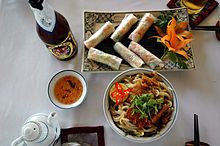
Food is at the very core of Vietnamese culture: every significant holiday on the Vietnamese cultural calendar, all the important milestones in a Vietnamese person's life, and indeed, most of the important day-to-day social events and interactions - food plays a central role in each. Special dishes are prepared and served with great care for every birth, marriage and death, and the anniversaries of ancestors' deaths. More business deals are struck over dinner tables than over boardroom tables, and when friends get together, they eat together. Preparing food and eating together remains the focus of family life.
Yelp and Tripadvisor are not widely used by locals in Vietnam, and reviews on those directories are usually posted by tourists. Foody is the go-to restaurant rating directory for the Vietnamese, and also functions as a food delivery and restaurant reservation app. While the interface is available in English, the downside is that almost all reviews are in Vietnamese.
Vietnamese cuisine varies from region to region, with many regions having their own specialties. Generally, northern Vietnamese cuisine is known for being subtle, central Vietnamese cuisine is known for being spicy, while southern Vietnamese cuisine is known for being sweet. There is also distinctive Vietnamese-Chinese cuisine to be found in Ho Chi Minh City's Chinatown.
At the same time, the Vietnamese are surprisingly modest about their cuisine. (An old proverb/joke says that "a fortunate man has a French house, a Japanese wife, and a Chinese chef.") High-end restaurants tend to serve "Asian-fusion" cuisine, with elements of Thai, Japanese, Chinese, and occasionally French mixed in. The most authentic Vietnamese food is found at street side "restaurants" (A collection of plastic outdoor furniture placed on the footpath), with most walk-in restaurants being mainly for tourists. Distinct regional styles exist: northern, central, and southern, each with unique dishes. Central style is perhaps the most celebrated, with dishes such as mi quang (wheat noodles with herbs, pork, and shrimp), banh canh cua (crab soup with thick rice noodles) and bun bo Hue (beef soup with herbs and noodles).
Many Vietnamese dishes are flavoured with fish sauce ( nước mắm ), which smells and tastes like anchovies (quite salty and fishy) straight from the bottle, but blends into food very well. (Try taking home a bottle of fish sauce, and using it instead of salt in almost any savoury dish: you may be pleasantly surprised with the results.) Fish sauce is also mixed with lime juice, sugar, water, and spices to form a tasty dip/condiment called nước chấm , served on the table with most meals. Vegetables, herbs and spices, notably Vietnamese coriander or cilantro ( rau mùi or rau ngò ), mint ( rau răm ) and basil ( rau húng ), accompany almost every dish and help make Vietnamese food much lighter and more aromatic than the cuisine of its neighboring countries, especially China.
Vietnam's national dish is phở (pronounced like the fu- in funny , but with tone), a broth soup with beef, pork, chicken or seafood and rice noodles (a form of rice linguine or fettuccine). In the south, phở is normally served with plates of fresh herbs (usually including Asian basil), cut limes, hot chilies and scalded bean sprouts which you can add according to your taste, along with chili paste, chili sauce, and sweet soybean sauce, while in the north, it is usually served only with fried quẩy fritters and chilli sauce on the side. Phở bò , the classic form of phở, is made with beef broth that is often simmered for many hours and may include one or more types of beef (skirt, flank, tripe, etc.). Phở gà is the same idea, but with chicken broth and chicken meat, so is Phở thit lon with pork, Phở tom with shrimp, Phở ca with fish, and Phở chay with tofu and vegetable stock. Phở is the original Vietnamese fast food, which locals grab for a quick meal. Most phở places specialize in phở and can serve you a bowl as fast as you could get a Big Mac. It's available at any time of the day, but locals eat most often Phở chay for breakfast. Famous phở restaurants can be found in Hanoi. The phở served at roadside stalls or informal restaurants tend to be cheaper and taste better than those served in fancier restaurants.
Street side eateries in Vietnam typically advertise phở and cơm . Though cơm literally means rice, the sign means the restaurant serves a plate of rice accompanied with fish or meat and vegetables. Cơm is used to indicate eating in general, even when rice is not served (i.e., An cơm chua? - Have you eaten yet) Though they may look sketchy, street side eateries are generally safe so long as you eat at places popular among the locals and avoid undercooked food. Many street food stalls do not display their prices; those outside tourist areas usually charge foreigners honestly, but ask for the price before you order to be sure.
In rural and regional areas it is usually safest to eat the locally grown types of food as these are usually bought each day from the market. It is not uncommon that after you have ordered your meal a young child of the family will be seen running out the back towards the nearest market to purchase the items.
Most restaurants/cafes in Vietnam will have a bewildering variety of food available. It is very common for menus to be up to 10-15 pages. These will include all types of Vietnamese food, plus some token Western food, possibly some Chinese-style ribs and maybe a pad Thai as well. It is generally best to stick with the specialty of the area as this food will be the freshest and also the best-prepared. As in other South East Asian countries, the menu is often more an indication of what a restaurant can cook and not all items may be available at any given time.
In restaurants it is common practice for the wait staff to place a plastic packet (stamped with the restaurant's name) containing a moist towelette on your table. They are not free. They cost 2,000–4,000 dong. If you open it, you will be charged for it. Also, peanuts or other nuts will be offered to you while you are browsing the menu. Those are not free, either. If you eat any, you will be charged.
Coffee , baguettes , and pastries were originally introduced by the French colonisers, but all three have been localised and remain popular. More on cà phê below, but coffee shops that also serve light fare can be found in almost every village and on many street corners in the bigger cities. Bánh mì are freshly baked baguettes, most commonly filled with grilled meats or liver or pork pâté plus fresh herbs and vegetables as bánh mì thịt , but there are countless variations filled with egg, beef, meatballs, pork skin etc. They are delicious and should be enjoyed at least once during a visit, and can easily be found from the bánh mì carts that are ubiquitous on the streets of Vietnam.
Vietnamese waters are in danger of collapse from over-fishing. Nevertheless, for the moment if you like seafood , you may find bliss in Vietnam. The ultimate seafood experience may be travelling to a seaside village or beach resort area in the south to try the local seafood restaurants that serve shrimp, crab, and locally-caught fish. Follow the locals to a good restaurant. The food will still be swimming when you order it, it will be well-prepared, very affordable by Western standards, and served in friendly surroundings often with spectacular views.
Most restaurants' hours are 10:00-22:00, although places serving breakfast-type items like noodles will open and close earlier. In 24-hour restaurants, there will be two prices. Prices are normal from 06:00 to 22:00, then doubled from 22:00 to 06:00. For example, rice usually costs 10,000 dong, but if you order after 22:00, the price will be 20,000 dong. This policy is government-mandated, to discourage people from eating late. Some dishes are not served after 22:00.
Cuisines other than Vietnamese, as well as fast foods, are increasingly available in the larger cities in the South and Central regions, less so in the North. Chinese, Japanese, Korean, Thai, Lao and other Asian restaurants are commonplace and Italian, French, German, Mexican, Russian, Ukrainian and Armenian restaurants can be found in most large cities in the South and Centre, as well as British, Irish an Australian food in bars and pubs. There is usually at least one Indian restaurant in most large towns and cities all over the country, many offering excellent quality food. Increasingly more affluent Vietnamese are sampling the different cuisines now available in their country so the chances of eating in a tourist ghetto are diminishing.
Dietary restrictions [ edit ]
Vegetarian food is quite easy to find anywhere in Vietnam due in large part to the Mahayana Buddhist influence, and all Vietnamese Buddhist monks are required to be vegetarian. Vegetarian eateries range from upscale restaurants to cheap and basic street stalls. Any Vietnamese dish with meat can be made vegetarian with the addition of fake meats. Besides the Buddhist influence of two vegetarian days a month, Cao Dai people eat vegetarian for 16 days. Look for any signs with the word chay as a suffix, like cơm chay for vegetarian rice dishes, phở chay for vegetarian pho, or bánh mì chay for vegetarian sandwiches. The words quán chay and nhà hàng chay literally translate as "vegetarian restaurant". It is also helpful to remember the phrase " ăn chay ", essentially meaning "I am a vegetarian". Even if you are not a vegetarian, a visit to a Vietnamese vegetarian restaurant will add a few new flavours that you won't find elsewhere. Also vegetarian food tends to be cheap which can help eke out the most hardened meat eaters budget. Be careful at regular stalls and restaurants though, as even dishes that seem vegetarian on the surface can sometimes make use of non-vegetarian seasonings such as fish sauce. As Vietnamese food traditionally does not use dairy products, vegetarian food in Vietnam is usually safe for vegans , but be careful to make sure it does not contain eggs.
Halal food is rare in Vietnam due to the small size of the Muslim community. Halal restaurants are mostly concentrated in Ho Chi Minh City and Hanoi , many of which are operated by immigrants from South Asia, Indonesia or Malaysia. The Mekong Delta and Ho Chi Minh City are also home to Muslim Cham communities, some of whom operate food stalls serving halal versions of Vietnamese street dishes for their respective communities. Kosher food is nearly unknown; if you keep kosher, contact Chabad Vietnam well in advance of your trip for assistance.
Drink [ edit ]
Drinking in a Vietnamese bar is a great experience. One of the interesting things is that during the day, it is almost impossible to see a bar anywhere. Once the sun goes down though, dozens appear on the streets out of nowhere.
Watch out for ice in drinks. Factory-made ice is generally safe, but anything else can be suspect. Factory ice has a hollow, cylindrical shape. Avoid irregular chunks of ice as it may be unclean.
Beer [ edit ]
The main brews are light lagers with a strength of 4.5–4.9%. In supermarkets a 0.33L can of beer starts at 10,000 dong. Some cheap beers in plastic bottles (0.9L) can be had for 15–18,000 dong. "Saigon" in a 0.45L glass bottle starts at 11,000 dong, but sometimes a deposit of 3,000 dong is added. A beer in a bar starts at around 20,000 dong.
The most popular beer (draught, bottle or can) among the southern Vietnamese is Saigon Do (Red Saigon) . For the northern Vietnamese Bia Hanoi (Hanoi beer) is the most popular brand, whereas central Vietnamese prefer Bière Larue from Da Nang or Bia Huda from Hue. 333 , pronounced "ba-ba-ba" is a local brand, but it's somewhat bland; for a bit more flavour, look for Bia Saigon in the green bottle and a bigger bottle than Bia Saigon Special. Bia Saigon is also available as little stronger export version. Locally brewed foreign brands like Tiger and Heineken are also common.
The craft beer revolution has well and truly reached Vietnam and bottled IPAs, brown beers and stouts are available in the major cities. Ho Chi Minh boasts an increasing number of brew-pubs and microbreweries. These brews are available at a fraction of the price they cost in Thailand or Singapore.
Beer in Vietnam is usually served in glasses filled with (and is thus drunk with) ice. This means that the cans or bottles of beer need not be chilled. If you are drinking with Vietnamese people, it is considered polite to top up their beer/ice before re-filling your own drink. It is also considered necessary to drink when a toast is proposed: "mot, hai, ba, do" ("one, two, three, cheers"). Saying "Trăm Phần Trăm" (100% 100) implies you will empty your glass.
Coffee [ edit ]
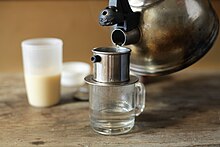
Coffee is usually served black ( Cà Phê Đen (Đá) ) or with sweetened condensed milk ( Cà Phê Sữa (Đá) ) — usually over ice ( Đá ). Ask for (Cà Phê) Nóng if you want your coffee hot without ice. Some people may add extra water with the hot version (see picture) to make the coffee less strong — the ice version gets less strong automatically. Also, locals tend to drink their Cà Phê Đen incredibly strong with up to 4 teaspoons of sugar. If you want black coffee without sugar, say so.
However, the slow dripping coffee through the metal filter seems distinct for tourist frequented places. Normal Vietnamese don't take or have the time to prepare nor wait that long. Hence, in less touristy places you will have a hard time finding the slow-filter version, they often won't have these filters and just serve already prepared coffee, often with the condensed milk already in the glass. If you want the milk separately, say so.
Take-away coffee ( Cà Phê Mang Đi ) with ice in a plastic cup and straw along the street can already be had for 10–12,000 dong.
In Hanoi , Cà Phê Trứng (egg coffee) is a local speciality.

A late addition to the coffee culture of Vietnam and often served for take-away are Cà Phê Muối (salted coffee) and Cà Phê Cốt Dừa (coconut coffee), basically a Cà Phê Sữa Đá topped with a cool mountain of salty whipped cream or sweet fluffy coconut slush, respectively. These are especially popular with the younger generation, but also tourists enjoy them.
Soft drinks [ edit ]

- Coconut water directly from the coconut is popular all around the country. After drinking the water, let the seller open the coconut, ask for a spoon, and enjoy the sometimes jelly-ish inner coconut meat. (If the coconut is too mature, the meat will be very hard and you are out of luck using the spoon, but the seller will know.)
- Nước Mía , or sugar cane juice , is served from distinctive metal carts with a crank-powered sugar cane stalk crushers that release the juice.
- Sinh Tố is another fabulous thirst quencher, a selection of sliced fresh fruit in a big glass, combined with crushed ice, sweetened condensed milk and coconut milk. You can also have it blended in a mixer. You could place any fruit-type after the word sinh tố , e.g., sinh tố bơ (avocado smoothie) or sinh tố dứa (pineapple smoothie). If you prefer to have orange juice, you won't use the word sinh tố but nước (literally: water) or nước cam if you would like to have an orange juice. Juices are usually without condensed milk or coconut milk.
- Chè Thái (Thai tea), Trà Trái Cây (fruit tea), or Trà Sữa (milk tea) are tea-based ( chè , trà ) dessert mix drinks made with various jellies, assorted tropical fruits, crushed ice, and (condensed) milk — kind of an advanced bubble tea, refreshing and colorful with a variety of textures, but it can be quite sweet if you don't watch it. Various word combinations exist to denominate this kind of drink.
Wine and liquor [ edit ]
Vietnamese "rượu đế" or rice alcohol ( rượu means liquor or wine [not beer]) is served in tiny porcelain cups often with candied fruit or pickles. It's commonly served to male guests and visitors. Vietnamese women don't drink much alcohol, well at least in public. It's not recommended for tourists.
Dating back to French colonial times, Vietnam adopted a tradition of viticulture. Dalat is its centre, and you can get red and white wine . There is a better range and better quality red wines than whites as reds seem to appeal more to the Asian palate. Most restaurant wine is Australian and you will be charged Australian prices as well, making wine comparatively expensive compared to drinking beer or spirits. Vietnamese wine has hit the mass market and is available by the glass or bottle in many restaurants. The quality ranges from the just-about-drinkable Vang Dalat Classic to the more than palatable Vang Dalat Premium. In supermarkets a bottle of Classic can be bought for around 80,000 dong whilst Premium is around 120,000. In restaurants a bottle of Classic costs 120,000–150,000 dong. Premium is less widely available in restaurants and where it is costs around 200,000 dong a bottle.
Imported wines, mainly Australian, French and Chilean are also available in supermarkets and in mid range and high end restaurants at far more expensive prices.
Rice spirits and local vodka is cheap in Vietnam by Western standards. Local vodkas cost about US$2-4 for a 0.75L bottle. Russian champagne is also common. When at Nha Trang, look for the all-you-can-drink boat trips for around US$10-15 for an all-day trip and party with on-board band.
Sleep [ edit ]

Lodging is not an issue in Vietnam, even if you are travelling on a tight budget. Accommodation in Vietnam ranges from 100,000-dong dorm accommodation in hostels to world-class resorts, both in large cities and in popular coastal and rural destinations. Even backpacking hostels and budget hotels are far cleaner and nicer than in neighboring countries (Cambodia, Thailand, Laos). And even cheap hotels that charge as little as 250,000 dong for a double room are often very clean and equipped with towels, clean white sheets, soap, disposable toothbrushes and so on.
Service in many of the very inexpensive hotels is quite good (since the rate that a person pays per night could equal a typical Vietnamese national's weekly pay), although daily cleaning and modern amenities like television may not be provided. In hotels costing a few dollars more (300,000+ dong, more in Hanoi) you can expect an en-suite bath, telephone, AC and television. As with hotels elsewhere in the world, mini-refrigerators in Vietnamese hotels are often stocked with drinks and snacks, but these can be horribly overpriced. You are much better off buying such items on the street. Adequate plumbing can be a problem in some hotels, but the standard is constantly improving.
It is a legal requirement that all hotels register the details of foreign guests with the local police. For this reason they will always ask for your passport when you check in. The process usually only takes a few minutes, after which they will return your passport. However, because non-payment by guests is by no means unknown, some hotels retain passports until check-out. If a place looks dodgy, then ask that they register you while you wait and take your passport with you afterwards. Few people have had a problem with this as it is routine across the country. You might find it helpful to carry some photocopies of your passport (personal data page and visa) which you can hand over to the hotel.
Hotels can be noisy, particularly when local families are staying. Vietnamese is one of the world's more vocal languages, and local tourists are happy to give full vent to it from 06:00 onward with scant regard for fellow guests. There are also a number of other sounds to be aware of when staying in Vietnamese hotels. Vietnam is a country under construction and the chance of the hotel being next to or very close to a building site is high. Also rooms in many small boutique hotels, guesthouses and home-stays are built fronting a central atrium or stairwell and the activities of the reception, common area and kitchen contribute more noises. Finally, there are the room-maids who start work soon after dawn and seem to think that you should be awake by then and consequently feel free to chat with each other at a loud volume and send and receive messages on mobile phones and walkie-talkies. If you are a light sleeper, bring a supply of earplugs.
Learn [ edit ]
If you want to meet local people, stop by a school. In Ho Chi Minh City, visit the American Language School, where you'll be welcomed enthusiastically and invited to go into a class and say hi. You'll feel like a rock star. The Vietnamese love to meet new people, and teachers welcome the opportunity for their students to meet foreigners.
An excellent novel set in modern-day Vietnam is Dragon House by John Shors. It's the story of two Americans who travel to Vietnam to open a centre to house and educate Vietnamese street children.
Former BBC reporter in Hanoi, Bill Hayton, has written a good introduction to most aspects of life in Vietnam, the economy, politics, social life, etc. It's called Vietnam, Rising Dragon , published in 2010.
Vietnam also has numerous universities for people who wish to pursue higher education. The most prestigious among them is Vietnam National University, Hanoi , originally founded by the French as Université Indochinoise in 1906. Other notable universities include Vietnam National University, Ho Chi Minh City and Hanoi University of Science and Technology
Work [ edit ]
You can volunteer as an English teacher through many volunteer organisations. However, if you have a TEFL/TESOL qualification and a degree then it's very easy to find paid teaching work. Without qualifications it's also possible to find work, but it takes more patience to find a job, and often there are concessions to make with payment, school location and working hours (weekends). Most teaching jobs will pay US$15-20 an hour. There are also many you-pay-to-volunteer organisations which allow you to help local communities, such as Love Volunteers , I to I and Global Volunteers . (But you must avoid some organized fraud. Ex: V4D, VTYD, RAKI, VVN...) Vietnam also has a booming tech startup scene, so opportunities may be available for people with expertise in computer science or other closely-related fields.
Legally, a work permit is required to work in Vietnam, although many foreigners do not bother, especially if the intention is to work for only a short period of time. Visa extensions are generally easy to obtain (your school will have to do this for you) although the immigration department will eventually insist on you obtaining a work permit before any more visas are issued. If your aim is to remain for a longer term, then it is possible to obtain a work permit although your school will need to do this for you. To apply, your employer will be required to submit the following: A contract and application letter from your school; a full, medical health check (done locally); a criminal record check (the criteria for this varies from province to province, some requiring a check from your home country, others, a check done solely in Vietnam); a copy of your TESOL/CELTA/TEFL and degree certificates; your 'registration of stay' form; a copy of your passport/visa. Sometimes, you may be asked to pay a small fee although the better schools will generally offer to do this for you. Work permits are valid for 3 years and are renewable for a period of up to 12 years.
Once you have a work permit, it is then a relatively simple process to apply for a temporary residence permit, which will alleviate your visa worries. The validity and procedure for renewal is the same as a work permit.
Vietnam has made a huge leap forward in terms of economic development and tourism, and many of the most feared annoyances are minor concerns. Vietnam is still a poor country, though. Tourists are considered money mules, and milking them is no crime. Nevertheless, outside of tourist hotspots, crime and scams against foreigners are rare.
Unexploded ordnance [ edit ]
As a legacy of the Indochina Wars , much of Vietnam's countryside is still littered with unexploded bombs and landmines, and many locals are still killed or maimed by them. Be very careful about going off the beaten path in rural areas, and ideally do not do so unless you have a guide who knows the area well.
Crime [ edit ]
Vietnam is a relatively safe place for tourists, and especially when travelling in groups. It will also depend on your nationality whether you may encounter issues — large western men are much more intimidating than smaller Japanese women, see cyclo scam.
Tourist areas are hotspots of petty crime. Violent crime towards foreigners is uncommon, but pickpockets and motorbike snatching are not uncommon in larger cities. Thieves on motorbikes snatch bags, mobile phones, cameras, and jewellery from pedestrians and other motorbike drivers. Don't wear your bag on your shoulder when riding a motorbike. Don't place it in the motorbike basket. When walking along a road, keep your bag on your inboard shoulder. If your bag is snatched, don't resist to the point of being dragged onto the roadway.
Reports of thefts from hotel rooms, including upmarket hotels, have been heard occasionally. Do not assume that your hotel room strongbox is inviolable.
Avoid fights and arguments with locals. Westerners may be bigger than Vietnamese, but if you're dealing with 5 or more Vietnamese guys then you're in serious trouble. Yelling is highly insulting to Vietnamese and may prompt a violent response. Vietnamese in general are placid and kind. As a visitor, you should respect local laws and customs. Altercations can be avoided easily by showing courtesy and tolerating cultural differences. Be on your best behaviour when drinking with Vietnamese men.
Corruption [ edit ]

The international monitoring group Transparency International has rated Vietnam as one of the most corrupt nations in Asia. Locals are convinced that the police are not to be trusted.
Motorcycle drivers may be stopped for a variety of reasons such as random checks of paperwork and licences and will fine foreigners around US$20 for each offence (the average traffic fine for locals is around US$5-10). Be polite but resolute, and stand your ground. Traffic officers are required to write traffic violations in their notebook and must give you a receipt for your fine which must then be paid at the station (not to the officer). For some offences (especially missing paperwork relevant to the vehicle you are riding), officers have the right to confiscate and impound your bike. If you have a phone, you could threaten to call your embassy and he may back down, although in most cases, it is often best to prevent any further escalation of the situation by paying the fine.
You generally won't encounter any problems with the police in more remote or rural areas because officers are likely to have a very poor command of the English language. The larger cities and areas that are frequented by tourists have more police who are proficient in communicating with tourists.
Immigration officers at land borders are known to demand bribes to stamp you in or out of the country. Refusing to pay the bribe will usually mean you are denied entry or not allowed to leave. The reputable bus companies will often charge a "border crossing fee" for their international routes, and staff would usually process you through immigration while you wait on the bus, and any bribes are included as part of that fee.
Most government offices will also require a small "gratuity" before processing paperwork. This is most commonly encountered when trying to obtain permits of residence for private accommodation, or work or residence permits.
Prostitution [ edit ]
Despite its seeming abundance, prostitution is illegal in Vietnam. The age of consent is 18. Vietnamese penal law levies penalties of up to 20 years in prison for sexually exploiting women or children, and several other countries have laws that allow them to prosecute their own citizens who travel abroad to engage in sex with children.
Under Vietnamese law, it is illegal for a foreigner to take a Vietnamese national to a hotel room. While this law is rarely enforced, you could find yourself in even deeper water if you report a crime disclosing that you shared a room with a Vietnamese national.
HIV/AIDS is prevalent in Vietnam, and many people go untreated due to the taboo nature of the disease. There is also a danger of theft when taking any unfamiliar woman back to a hotel or guest house. The tale of a man waking up to find his wallet, mobile phone or laptop missing is all too common. Stories also abound of Westerners being drugged while in a hotel room or being led to a dark, quiet place where they are relieved of their possessions by criminal gangs.
Scams [ edit ]
Most scams in Vietnam involve transportation, hotel prices, or the two-menu system practised by some restaurants.
Taxis [ edit ]
If you don't know what a reasonable fare is, it is generally a bad idea to agree on a price in advance. Rule of thumb to detect scammers: if the taxi doesn't have the fare charges written, or drivers name and photo on the dashboard, immediately ask the taxi to stop and get out. It is a definite scam.
As always, it is advisable to walk a hundred meters away from any tourist deposit point (bus arrival, train station etc.), as many taxi waiting here are either scammers or pay a commission to the cartel.
Many taxi drivers in Saigon and Hanoi try to overcharge newly arrived gullible travellers. When leaving the airport, the taxi driver may insist that you pay the airport toll. He might not be very forthcoming with the price, and if you give him cash, he will pay the toll and pocket the rest. The toll is 10,000 dong (July 2018) and having the correct money will avoid you getting fleeced. The toll is quoted along with the fare written on the dashboard of the taxi. You can confidently say "airport toll only 10,000 dong" and refuse to pay anything else such as parking (unless there were more toll roads in between).
Ask your hotel or hostel to arrange taxi services for you. This will ensure that you get a flat quoted rate as well as a trusted driver. Many hotels will be happy to arrange pick up and drop off from airports if you ask. Nevertheless, this can be more expensive than if you arrange it directly yourself, because the hotel will always try to cut into the deal, earning a little extra.
In several other cities of Vietnam, such as Dalat, Hoi An, Nha Trang, etc., do not travel by meter from the airport. The airports are as far as 30–40 km from these places and meter will cost you from 500,000–650,000 dong. However, you can either take a bus from the airport to city centre, or pre-negotiate a rate with the taxi for 200,000–300,000 dong. Pay attention to sides of taxis. Usually a rate for the airport is written on the door. Around town in these cities, metered taxis generally work fine.
If you ever get caught in a big taxi scam (such as rigged meter), you should get out of the vehicle and retrieve your belongings as if everything was all right, then refuse to pay the demanded price and threaten to call the police. Usually they will accept a more reasonable fare, but be prepared to face the driver's anger, so it is better to do this with a few witnesses around.
Taxi and cyclo drivers [ edit ]
Taxi and cyclo drivers may claim that they don't have change when accepting payment for an agreed-upon fare. The best way to handle this is to either carry smaller bills or be ready to stand your ground. Generally, the driver is only trying to get an extra dollar or so by rounding the fare up, but to prevent this scam from becoming more popular it is advised to stay calm and firm about the price.
When you meet an over friendly cyclo driver who says, "never mind how much you would pay" or "you can pay whatever you like at the end of the trip". He may try to show you his book of comments from international tourists. This kind of driver has to be a scammer. If you still want to use his service you should make it clear about the agreed price and don't pay more than that. Just be clear what you are willing to pay. The cyclo drivers are just trying to make a living.
Hotels [ edit ]
Hotel owners may tell you that the room price is 200,000 dong. However, when checking out, they may insist that the price is US$20, charging you almost double. Another trick is to tell customers that a room is a few dollars, but following day they will say that price was for a fan room only and it's another price for an air-con room. These days, legitimate hotel owners seem to be aware of these scams and are usually willing to help by writing down how much the room is per person per day (in U.S. dollars or dong), if it has air-con or not. Staff of legitimate hotels also never ask for payment from a guest when they check in. Watch out if they insist that you should pay when you check out but refuse to write down the price on paper. Otherwise, just book online with one of the common reservations websites, which will guarantee you the right price, and leave a review if something goes wrong.
As of 2019 most of the dollar versus dong scams have ended as almost all hotels now quote in dong and accept dong. Keep your dollar stash hidden and deal only in dong. Also as of 2019 quite a few low- to mid-range hotels do require payment upfront and as long as you get an official receipt there is nothing to worry about in this.
Restaurants [ edit ]
Some restaurants are known to have two menus, one for local people and another one for foreigners. The only way to deal with it is to learn a few Vietnamese phrases and insist that you should be shown only the Vietnamese menu. If they hesitate to show you the local menu, walk away. This scam is very unusual.
Hostels [ edit ]
Some hostels in Vietnam will want you to leave your passport at the reception, insisting even. This is not a legitimate business practice. Never leave your passport as collateral for anything.
Copycats [ edit ]
Besides accommodation and transport, another big scam in Vietnam involves copycat tour companies and restaurants. Anytime a company gets famous, copycats will pop out. A very famous example is the dozens of Sinh Cafes (bus company), which popped up. The real company has since changed its name to TheSinhTourist.
Fake monks [ edit ]
Buddhism in Vietnam generally follows the Mahayana school, meaning that the monks are required to be vegetarian and generally do not go on alms rounds. Instead, the monks either grow their own food or buy their food using temple donations. Monks do not sell religious items (shops selling religious items are staffed by laypersons, not by monks) or ask people for donations. Instead, donations are to be placed in temple donation boxes. It is entirely up to an individual to decide whether or not they wish to donate, and how much they wish to donate, and genuine temples will never use high-pressure tactics to solicit donations. "Monks" who approach tourists for donations are imposters.
Traffic [ edit ]

The first discovery for many tourists who just arrive in Vietnam is that they need to learn how to cross a road all over again. You may see a tourist standing on the road for five minutes without knowing how to cross it. Traffic in Vietnam can be a nightmare. Back home, you may never witness the moment of crash, seeing injured victims lying on the road, or hearing a BANG sound. Staying in Vietnam for more than a month, you will have fair chance of experiencing all these.
Roads are packed. Some intersections in main cities such as Hanoi, Ho Chi Minh City have traffic lights patrolled by police; most are either non-functional or ignored.
Crossing roads is an art in most of Vietnam, and there are no stop signals that will actually be followed by drivers. The art of crossing the road is fortunately very simple, though scary:
- There are some traffic lights and pedestrian crossings but they are by no means everywhere.
- If it is night time, and you are wearing dark clothes you should cross in a bright area or shine a torch towards the traffic
- If there is a bus, car or taxi, wait until it and its motorcycle entourage passes, as vehicles will not stop for pedestrians
- Ensure you, your fellow travellers and every piece of your luggage form an almost perfect line parallel with the traffic
- There is no 'ideal' time to start although you could pick a time with a little less traffic
- Step a little forward, a little more, and you will see motorcycle drivers to slow down a bit, or go to another way. Make your pace and path predictable to other drivers, don't change your speed or direction suddenly, and move forward until you arrive at your destination. Be aware that motorcycle drivers will swerve to avoid you but might swerve into your path.
- The simplest and best way to cross streets is to make yourself known and be steady. This means spread your arms out and walk at a steady pace. The locals will route around you. They are extremely good drivers and will avoid hitting you; just be sure to walk at a steady pace.
- Cars, buses and trucks can do you far more damage than motorcycles where the odds are much or even. Wait for anything with four or more wheels to pass and then take on the motorcycles.
The simplest way, if available, is to follow a local, stand next to them on the opposite side of the traffic (if you get hit, he will get it first) and he will give you the best chance of crossing a road.
If you are injured, don't expect the local people to help, even by calling an ambulance, because it is not free. Make sure you tell the local clearly that you will pay the ambulance fee. Hospitals will also not admit you until you prove that you can pay the bill.
Highways are risky, with an average of 30 deaths a day, and some locals will not even venture on them if not in a big vehicle (car or bus). Taking a bicycle or motorbike on highways is an adventure for risk takers, but definitely not for a family with children. Having said that, Vietnamese roads are no more dangerous than elsewhere in South East Asia.
Nightlife [ edit ]
- Petty crime in nightclubs is not unknown. Don't escalate an incident: avoid quarrelling with local people as drunks can be violent.
- Clubs are full of working girls trawling for clients. They may also be looking for wallets and mobile phones.
- Walking very late alone on the streets in the tourist areas is safe, but avoid unfamiliar women engaging you in conversation. They may try to touch you, sweet talk you, and then pick your pocket.
- Don't ask taxi drivers to recommend nightspots. Most taxi drivers earn commissions from bars and lounges to bring in foreign tourists. When you walk into one of these places, they will quote reasonable prices, but when you receive the tab, it may include extravagant charges. Do your homework beforehand, tell the taxi driver where you want to go, and insist on going to where you want to go despite their remonstrations. Most nightspots are reputable. Going to those with a mostly foreign clientele is a good practice.
Wildlife [ edit ]
Little wildlife remains, let alone anything dangerous to humans. Venomous snakes, such as cobras, may still be common in rural areas, but virtually everything else has either become extinct or exists in such small numbers that the chances of even seeing one are remote. Tigers may exist in very small numbers in remote areas, but this is unconfirmed.
LGBT travellers [ edit ]
Vietnam is generally a safe destination for LGBT travellers, and there are no laws against homosexuality in Vietnam. Transgender persons are allowed to change their legal gender after undergoing sex reassignment surgery. That being said, same-sex relationships are not recognised by the government, and the Vietnamese can be rather conservative, meaning that LGBT individuals can often be subject to some degree of prejudice. Fortunately, anti-LGBT violence is extremely rare.
Insulting national heroes such as Ho Chi Minh and Vo Nguyen Giap is illegal in Vietnam, and many foreigners have been jailed for doing so.
Stay healthy [ edit ]
Tropical diseases such as malaria , dengue fever and Japanese encephalitis are endemic in rural Vietnam. Malaria isn't as much a concern in the bigger cities such as Ho Chi Minh City and Hanoi, but always remember to take liquid mosquito repellent with you. It may be very useful, especially in the countryside and crowded neighborhoods.
Street food , including blended ice drinks, and food in restaurants is mostly safe to be consumed due to much improved hygiene. Vietnamese are very clean people, there are bins everywhere and interiors/floors are mostly tiled. Use common sense and follow the tips under the Traveller's diarrhea article and you will be fine.
Tap water is not safe to drink.
Contact lens solution is seldomly sold by pharmacies. You will have to find to specialised lens store or an optometrist to get it.
Healthcare [ edit ]
Vietnamese hospitals are generally not up to Western standards. Hospitals are often short of medicines and other supplies, and waiting times can be long, even in acute cases. Outside Hanoi, Ho Chi Minh City and Da Nang, few doctors speak English. Private clinics in Vietnam, run by foreigners, are therefore recommended as the first port of call. These clinics have both Vietnamese and foreign doctors. In general, hospitals will only accept your case if you can demonstrate the ability to pay for their services.
There are private hospitals in Hanoi, Ho Chi Minh City and Da Nang that cater mainly to Western expatriates and provide excellent healthcare, with staff members who are able to speak English and French, though you would be paying a steep premium for their services. Vinmec International Hospital is a chain of expatriate-oriented private hospitals with locations in several of Vietnam's larger cities.
Private hospitals in Hanoi recommended for travellers to Hanoi include Hanoi French Hospital, International SOS Clinic Central Building, Hanoi Family Medical Practice.
In Ho Chi Minh City, hospitals recommended for travellers include Franco-Vietnamese Hospital, City International Hospital, Columbia Asia Gia Dinh International Clinic, Columbia Asia Saigon International Clinic, HCMC Family Medical Practice Diamond Plaza, International SOS Clinic Hannam Building, Hoan My Medical Corporation chain.
If you fall seriously ill while travelling, it is advisable to seek treatment in nearby Southeast Asian countries if possible. In serious cases, doctors may even order the patient to be flown to Singapore or Thailand for treatment. When travelling to Vietnam, it is very important to take out comprehensive travel insurance. Please read the terms and conditions of your travel insurance carefully.
In tourist destinations, you can ask for medical services at hotel reception desks or from your tour operator. In many cases, you may have to pay cash in advance to see a doctor. In larger cities, payment can usually be made by debit card. Keep receipts for insurance purposes.
The emergency number for ambulances in Vietnam is 115, but the emergency number usually does not serve in English. Public ambulances can be slow to arrive, so it is usually best to take a taxi, for example. If you call an ambulance, be prepared for a long waiting time. Paramedics do not usually speak English and ambulances are poorly equipped. In large cities, hospitals also have private ambulances, which are usually more efficient than public ambulance services.
In large cities such as Hanoi and Ho Chi Minh City, there are a number of good quality pharmacies. Most private hospitals and clinics also have a pharmacy. Pharmacies are usually well-stocked and most medicines can be bought without a prescription.
Pharmacies in Vietnam are not strictly regulated. If you buy medicines from a pharmacy other than a hospital pharmacy, it is a good idea to check the expiry date of the medicine packs you buy. The packaging, the contents of the packs and any instructions for use should be checked carefully.
Respect [ edit ]
In traditional Vietnamese culture, elders are treated with great deference and respect. While expectations are more relaxed when foreigners are involved, it's a good idea to show politeness, respect and restraint towards those who look older than you.
It's common to be stared at by locals in some regions, especially in the rural areas outside of big cities, and in the central and northern parts of the country. Southerners are usually more used to foreigners. Wherever you are, though, expect some probing questions whenever a conversation starts: How old are you? Are you married? Do you have children? While these might seem nosy in the West, they're perfectly normal, good-natured questions here that help people determine how they should address you. The best thing to do is just play along. You probably don't know much about their culture; it's only fair that locals wouldn't know much about yours.
An Asian woman travelling with a non-Asian man often attracts a more undesirable kind of attention. Probably due to memories of the sexual escapades of GIs during the American War, people will often assume she is an escort or prostitute, and she may be insulted or harassed, even if she has no relationship to the man. These prejudices have lessened somewhat, but they are still present. As of April 2019 these prejudices have almost completely disappeared for 'respectable looking Asian women' and the nearest they will get to a problem is that almost all locals will assume they are Vietnamese and seek to circumvent the English speaking foreigner by speaking Vietnamese to Thai/Chinese/Singaporean/ Australian-never-been-to-Vietnam before-but-looks Asian, wives or girlfriends. The Vietnamese themselves generally do not engage in public displays of affection, even among married couples, as it is considered to be disrespectful, so it is advisable for couples to show restraint while in public.
Vietnamese people tend to be dressed modestly and conservatively, though somewhat less so at bars and nightclubs in Hanoi and Ho Chi Minh City, where young locals can sometimes be spotted in sexy outfits. But generally, you should try to cover your shoulders and knees, as doing so will earn you a lot more respect from the locals.
Saving face is very important in Vietnamese culture. You should generally avoid pointing out the mistakes of others no matter how minor they might be in order to avoid causing major embarrassment.
As in many other Asian countries, you are expected to remove your shoes before entering people's homes.
When handing out and receiving business cards, always be sure to do it with both hands , as using only one hand is considered to be very disrespectful.
Relations with China are a sensitive issue best not discussed with locals. Tensions boil over periodically over territorial disputes in the South China Sea, called the "East Sea" ( Biển Đông ) in Vietnam — using the former may offend locals by suggesting that you support China's claims. Possession of maps showing the nine-dash line is likely to elicit negative reactions from Vietnamese; this has also resulted in certain foreign movies and television series such as the 2019 animated film Abominable and the 2023 Barbie movie being banned in Vietnam.
However, China is Vietnam's largest trading partner and source of international tourists, and individual visitors from mainland China should not face any major issues so long as they avoid political discussions. This animosity towards China also generally does not extend to ethnic Chinese from other countries.
The American War [ edit ]
The most surprising thing about the topic of the Vietnam War (the American or Reunification War, as it is called in Vietnam) is that most Vietnamese do not bear any animosity against visitors from the countries that participated, and in the South many Vietnamese (especially older Vietnamese involved in the conflict or with relatives in the war) appreciate or at least respect the previous American-led or French-led military efforts against the North. Two-thirds of the population were born after the war and are quite positive towards the West. Some attractions present an anti-American viewpoint on the war, whilst many are surprisingly restrained.
Be sensitive if you must discuss past conflicts. Well over 3 million Vietnamese died, and it is best to avoid any conversations that could be taken as an insult to the sacrifices made by both sides during the wars. Do not assume that all Vietnamese think alike as some Vietnamese in the South are still bitter about having lost against the North.
Souvenir shops in Vietnam sell lots of T-shirts with the red flag and portraits of "Uncle Ho." Many overseas Vietnamese, particularly in the United States, Canada and Australia, are highly critical of the government of Vietnam, so you may want to consider this before wearing communist paraphernalia in their communities back home. A less controversial purchase if you are American, Canadian or Australian would be a nón lá (straw hat) instead.
Religion [ edit ]
Although the official census claims most Vietnamese are non-religious, you wouldn't know it to see them. Whether they attend services or not, most Vietnamese are in fact strong believers, incorporating a variety of religious traditions, beliefs and rituals into their daily lives.
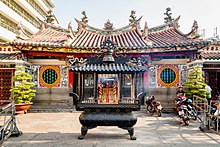
As in neighboring Southeast Asian countries, the most influential and widespread religion in Vietnam is Buddhism. Buddhism in Vietnam generally follows the Mahayana school, which is widespread in China, unlike the neighboring Southeast Asian countries which follow the Theravada school. This means that monks are required to be vegetarian, and pious individuals seeking a particular blessing will often forgo meat as well. Unlike in other Southeast Asian countries, it is not customary for monks to collect foodstuffs in the streets. Instead, they will either buy their food using temple donations, or grow their own food. Monks who hang out in tourist areas requesting donations are bogus. Similar to China and neighboring countries, Swastikas are commonly seen in Buddhist temples as a religious symbol; they are positive signs representing sacredness and blessing, and have no connection to Nazism or anti-Semitism.
Also, and more than in neighboring countries, Vietnam has a sizable proportion of Christians (11%; 9% Catholic, 2% Protestant). Christianity is especially prominent in major cities, where at least a few churches can be found. It is common for strangers and acquaintances to ask you to come to their church, although offence will not usually be taken if you decline.
Much like the Chinese and other Southeast Asians, Vietnamese people place a strong emphasis on spirits and ancestor worship. You'll see at least one shrine in every Vietnamese home and place of business, where occupants burn incense to honor or placate certain spirits. These are often decorated with statuettes or pictures of sacred figures: for devout Buddhists, this might be Buddha or Bodhisattva; for Roman Catholics, a crucifix or the Virgin Mary; for "non-religious" people, depictions of various traditional deities or spirits. If you see someone's photograph featured on a shrine, it's most often that of a family member who's passed away. Burning joss sticks (sticks of incense) for the spirits of departed family members is generally a token of respect.
Many temples require you to remove your shoes before you enter the temple buildings. As a general rule, you should always enter using the right gate and exit using the left gate (facing inward); the middle gate is traditionally reserved for the emperor and deities. Do not step on a raised doorway threshold when entering or exiting the temple; always step over it. Also be sure to dress conservatively when visiting temples; do not wear sleeveless shirts, and make sure your knees are covered.
Vietnamese are generally quite superstitious when it comes to death and the spirit world, and there are certain taboos you'll want to avoid. Some of these include:
- Placing chopsticks upright in the middle of a bowl of rice : Bowls of rice are arranged in this way next to the body of the deceased at funerals, so it reminds people of funerals. If you eat your rice with a spoon, place the spoon face down in the bowl, never face up.
- Taking photos of an odd-numbered group : The superstition goes that the person in the middle of a group will be singled out by evil spirits. Photos of even-numbered groups (2, 4, 6, or 8 people, and so on) are fine.
- Sitting with your back facing a family shrine : Considered disrespectful to the shrine, and to the spirits of the deceased.
- Climbing onto altars to pose for photographs with the statues : Considered very disrespectful to the deities being venerated.
Electricity [ edit ]
Electricity is delivered at 200 V, 50 Hz in Vietnam. Most Vietnamese sockets are compatible with the 2-pin American Type A, and the 2-pin European Type C, E and F plugs. Some sockets are also compatible with the 3-pin American Type B plugs.
Connect [ edit ]
Telephone [ edit ].
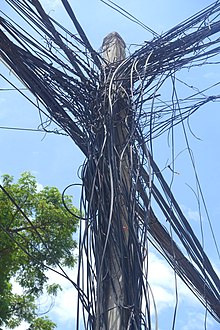
Land-line numbers in Hanoi and HCMC have a sequence of eight numbers, others have seven.
- Vietnam international code: +84
- Hanoi area code : (24)
- Ho Chi Minh area code : (28)
Telephone bills are 30% to 40% cheaper if dialed with 171 or 178 services.
- Domestic call : 171 (178) + 0 + Area code + Number.
- International call : 171 (178) + 00 + Country code + Area code + Number.
Since hotels and guesthouses often charge higher for telephone calls, try to find a post office or any reliable public service.
Mobile phones [ edit ]
Mobile numbers in Vietnam must always be dialed with all 9 or 10 digits (including a "0" prefixing the "1nn" or "9nn" within Vietnam), no matter where they are being called from. The 1nn or 9nn is a mobile prefix, not an "area code", as such and the second and sometimes third digits (the nn part) denotes the original mobile network assigned. As is the case with most mobile numbers, they can also be called within or outside Vietnam using the international format.
There are many mobile networks with different codes:
- Mobifone : 90, 93, 70, 76, 77, 78, 79
- Vietnamobile [dead link] : 92, 56, 58
- Viettel : 98, 97, 96, 32, 33, 34, 35, 36, 37, 38
- Vinaphone : 91, 94, 81, 82, 83, 84, 85
Prepaid account charges vary from 890–1,600 dong per minute. Recharge cards are available in denominations of 10,000, 20,000, 50,000, 100,000, 200,000 and 500,000 dong.
Useful numbers [ edit ]
- Fire Brigade 114
- Hospital 115
- General Information 1080

Internet [ edit ]
- SIM cards from all the main providers: Viettel, Vinaphone, Mobifone and Vietnam Mobile can be purchased on arrival in Ho Chi Minh or Hanoi. 100,000 dong buys 9 GB of data valid for 30 days, which is enough as long as you don't watch too many videos on your phone. If you intend to use your phone a lot, 30 GB data for 30 days costs around 330,000 dong. Providers offer phone packages as well, but for most tourists Facebook/Skype/Line calls are enough to keep in touch with friends and family, and your hotel can usually call taxis and bus companies, tourist informations, and any other place.
- Wi-Fi is now widespread in Vietnam and most hotels, restaurants and bars in the main tourist centres have free Wi-Fi. Ask for the password when you make your purchase. Sometimes the password is printed on the receipt or advertised near the counter. Otherwise, public plazas, most airports and many larger railway stations will also have Wi-Fi — wherever people or tourists frequent the place. Some Internet cafes are still available in tourist spots and rates are fairly cheap, ranging from 2,000-10,000 dong per hour. Connection speeds are high, especially in the big cities.
- Internet censorship is applied to a very small number of Internet services. Most foreign news sites like the BBC and CNN, as well as social media web-sites such as Facebook, Twitter and YouTube are usually freely accessible in Vietnam, though they may be temporarily blocked during politically sensitive periods. It may be wise to use a VPN service, which seem to work with most Wi-Fis in Vietnam.
- Pages with broken file links
- Has custom banner
- Has map markers
- Articles with dead external links
- Eat listing with no coordinates
- Has caution box
- Has caution box with out of date warning
- Usable countries
- Usable articles
- Country articles
- Has Geo parameter
- Southeast Asia
- All destination articles
- Pages with maps
Navigation menu
Vietnam Travel Guide: A Complete 3-Week Itinerary
Travel through Vietnam! An enormous country, home to tropical forests, limestone cliffs, and exhilarating mountain roads. Away from the wonderful nature, are cities full of culture and fascinating history. And perhaps best of all, eat your way through delicious street food in one of the most flavorsome countries in the world! Discover Vietnam in this 3 or 4 week Vietnam route.
Vietnam Travel Route (3 or 4 weeks)
Traveling in Vietnam is mostly done by bus or train as there are limited direct flights between places. Three weeks is a good amount of time to travel in Vietnam.
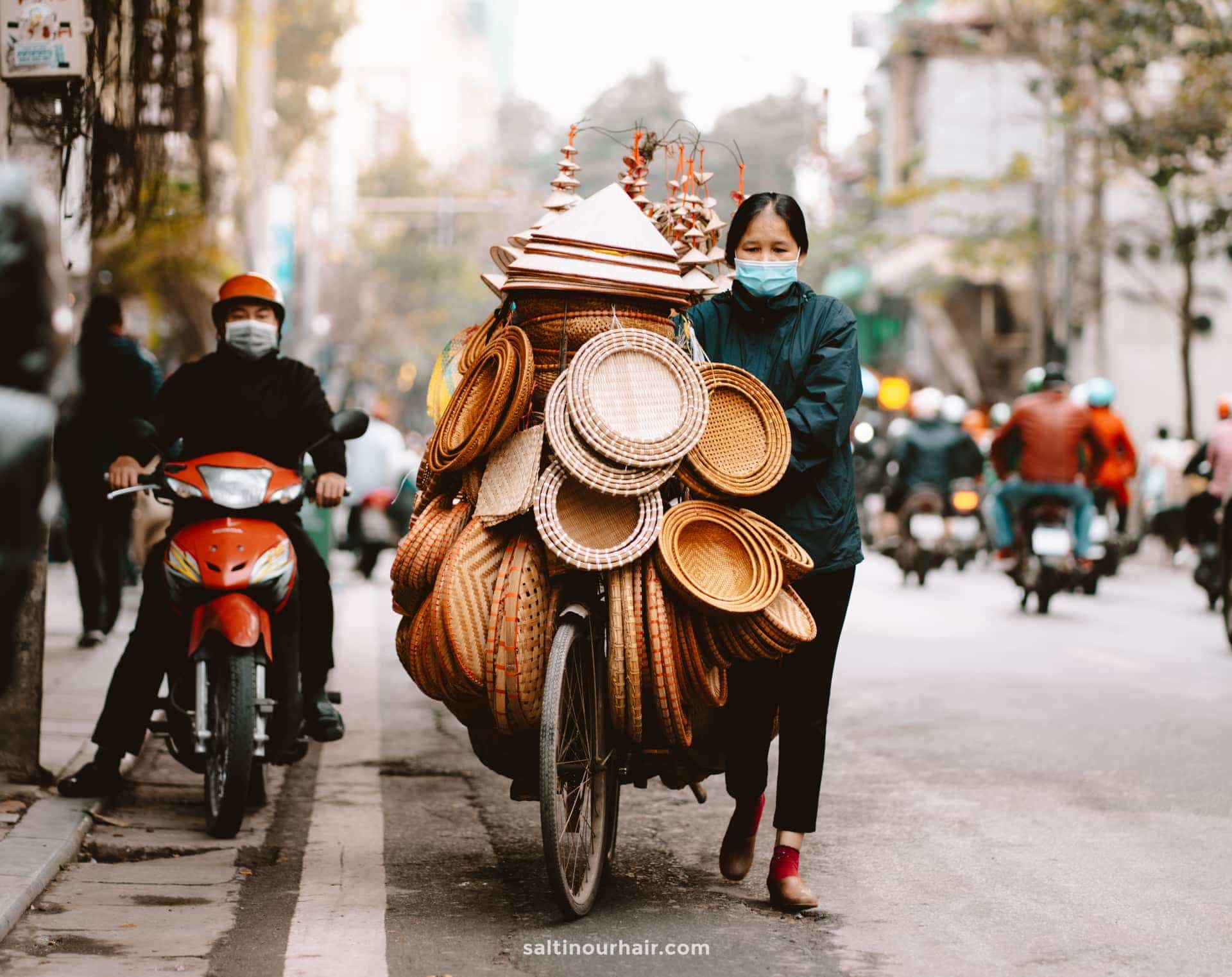
If going as far as Ho Chi Minh, allow another week (4 weeks in total) to see the beauty of far southern islands like Phu Quoc or the extraordinary maze-like rivers of the Mekong Delta.
Also read: Best Things to do in Vietnam
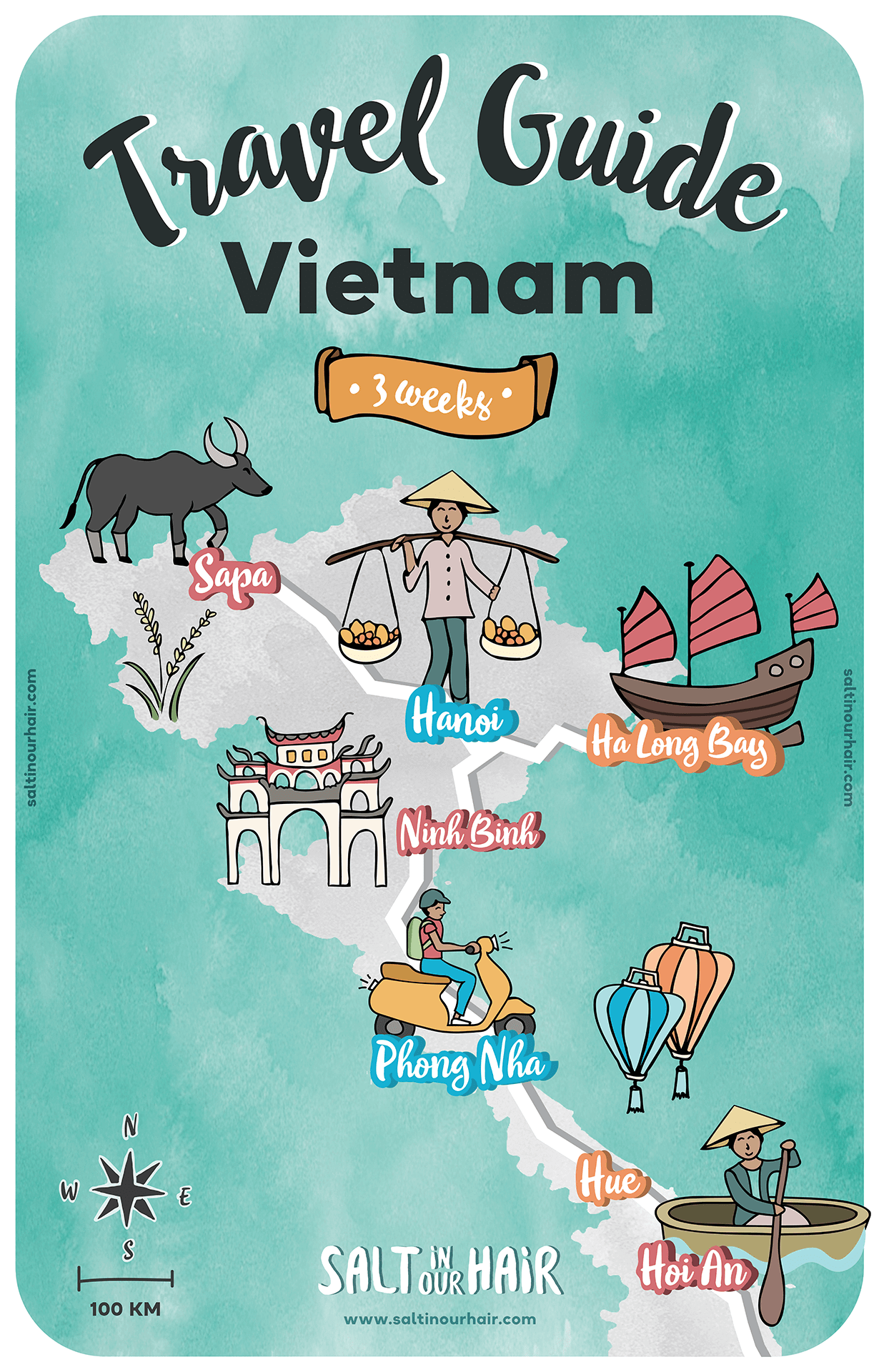
Day 1 – 3: Hanoi
Start your Vietnam route in the buzzing capital of Hanoi ! This ancient city, centered around the misty Hoan Kiem Lake, is home to the best street food on the planet.
Spend at least two days here soaking up the sights, sounds, and flavors of this beautifully chaotic city. Get ready to get lost among the beautiful web of narrow streets with French-style buildings, and bravely attempt to cross the manic roads!
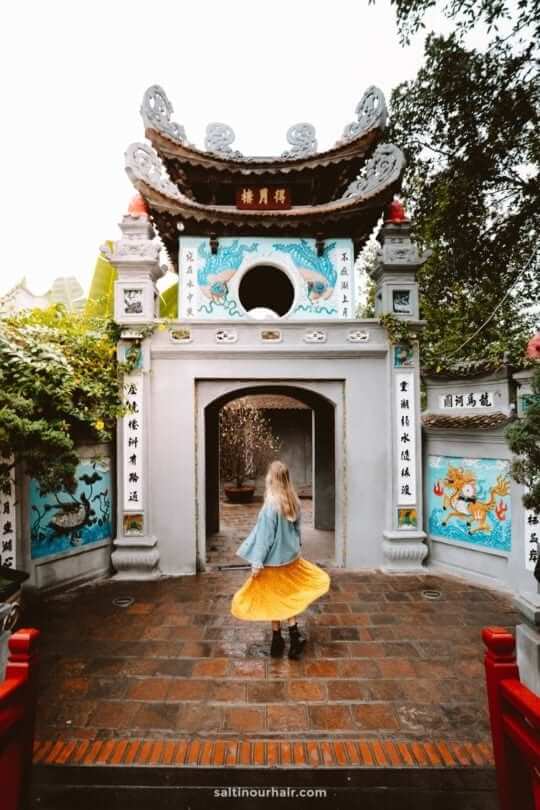
There is an international airport here that serves the rest of the world, as well as domestic flights to other parts of Vietnam . Because of this, it’s a good place to start on your Vietnam travels.
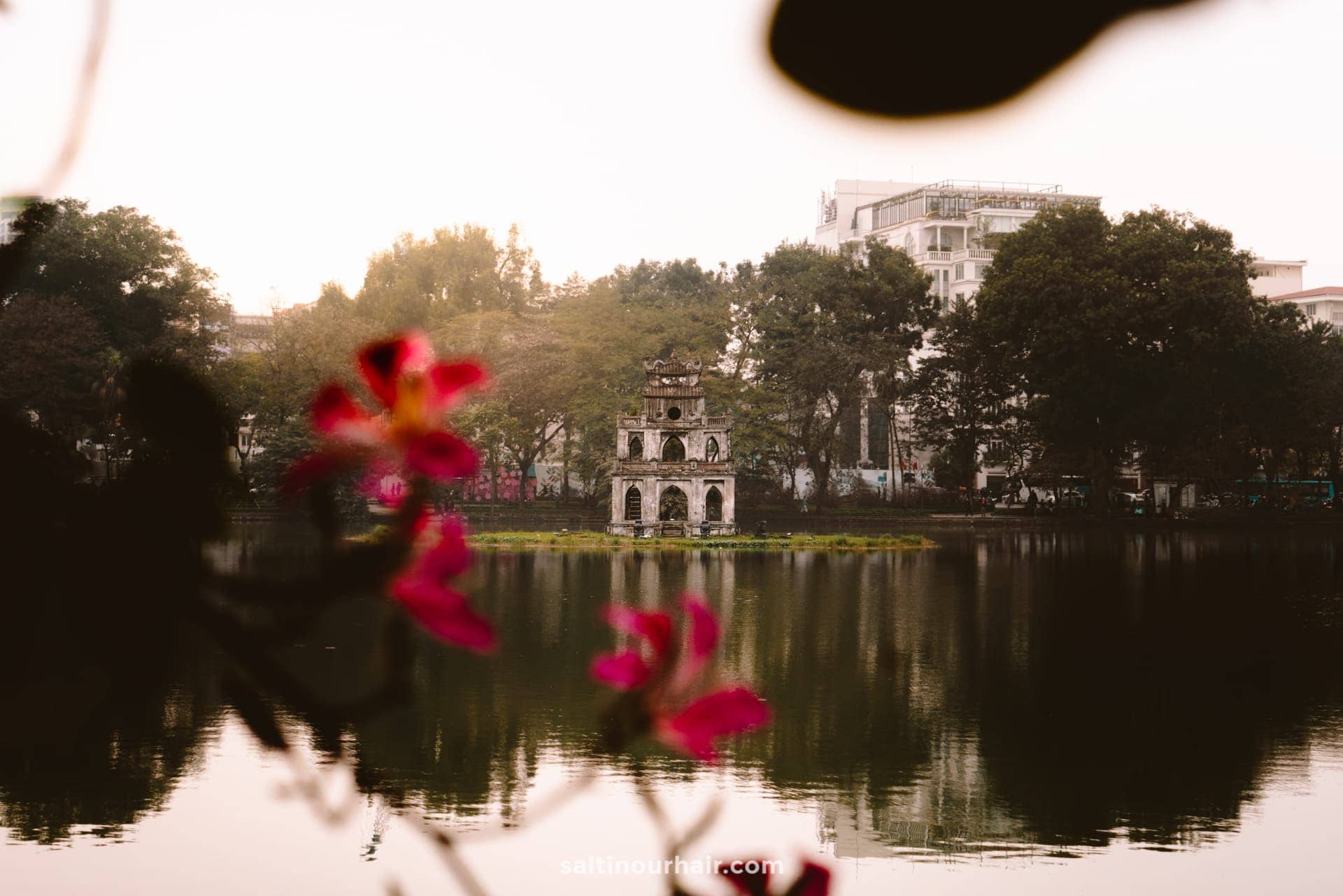
Where to Stay in Hanoi
The quality of guesthouses and hotels in Hanoi is extremely high for the money you’ll pay. Situate yourself in the Old Quarter or near Hoan Kiem Lake so that you can see all the things to do in Hanoi on foot.
Hotels in Hanoi 😴
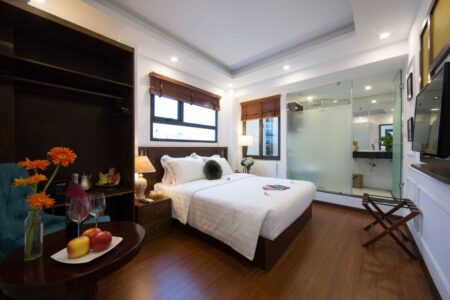
Day 4 – 6: Sapa
Experience trekking in the wonderful, rolling rice hills of Sapa ! The luscious, green north of Vietnam is an absolute must-see on any Vietnam route.
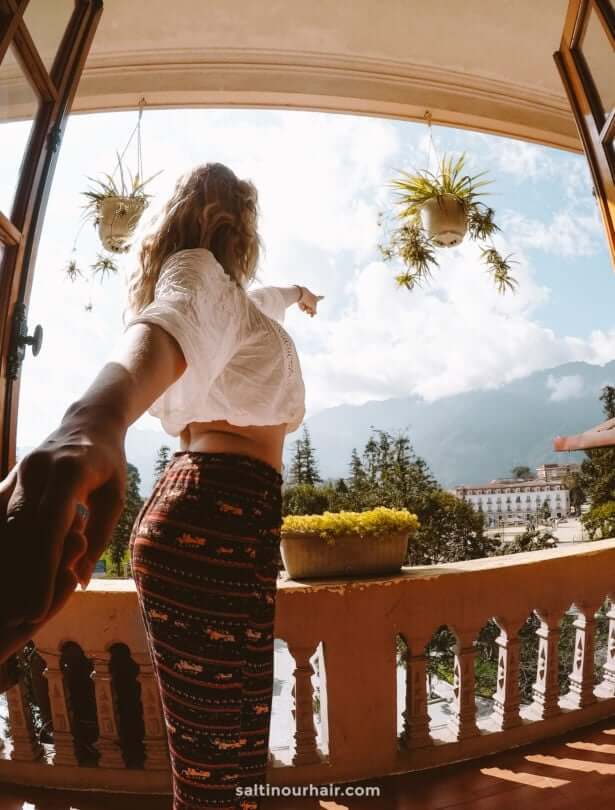
Hike through the beautiful nature among mountains, paddies, and tribal villages, and stay with a local family to experience their way of living. Between May and September, see the rice fields at their greenest! Note : You will have to go back to Hanoi after Sapa before departing for Ha Long Bay.
Read more: Trek at the rice terraces of Sapa, Vietnam
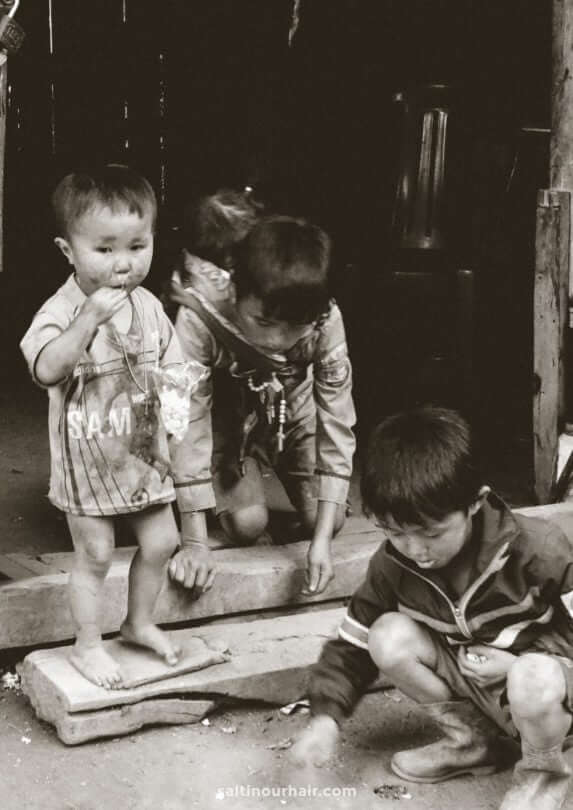
Getting from Hanoi to Sapa
Bus: Regular direct buses depart Hanoi, taking 6 hours. This is the cheapest and quickest option. Get your bus or train tickets here.
Train: Both day trains and sleeper trains run from Hanoi to Lao Cai (8 hours). From there, take a minivan in 1 hour to Sapa.
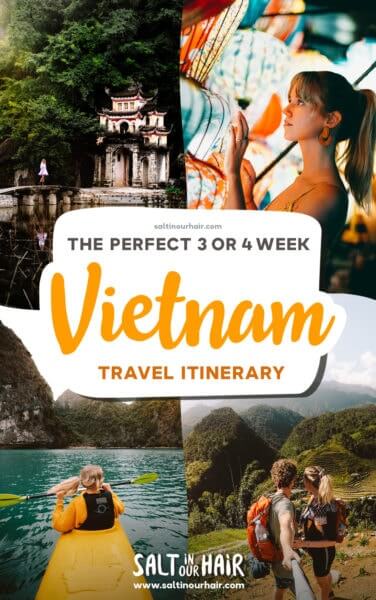
Day 7 – 9: Ha Long Bay
Enjoy sailing across the peaceful emerald waters of Ha Long Bay among limestone karsts and floating villages. From Hanoi, book an incredible cruise to either Ha Long or Lan Ha Bay.
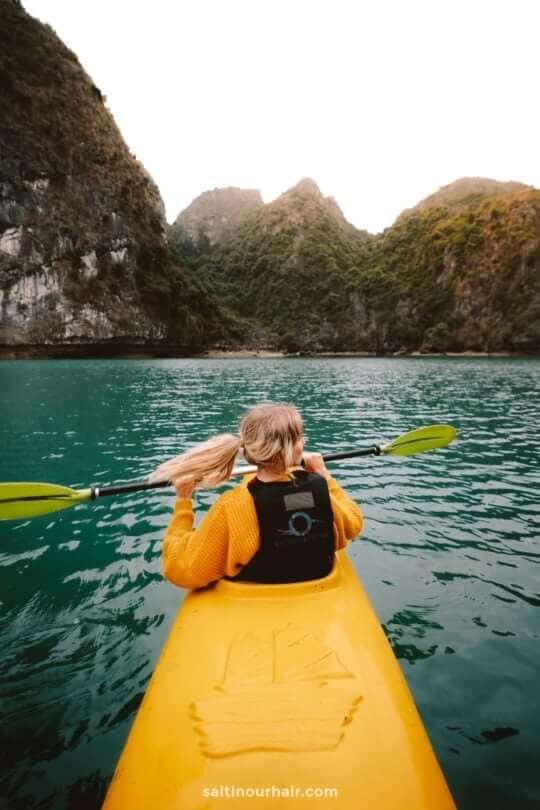
These cruises normally include a return transfer from Hanoi and come in a variety of options. For example, a day cruise or a 2 night/3 day cruise. To properly enjoy the beauty of this magical part of Vietnam, spend 2 nights here relaxing and exploring your Vietnam route. Find a tour online .
Tip: Take the return transfer back to Hanoi from Ha Long Bay. You may need to spend one more night in Hanoi before continuing on the rest of the journey.
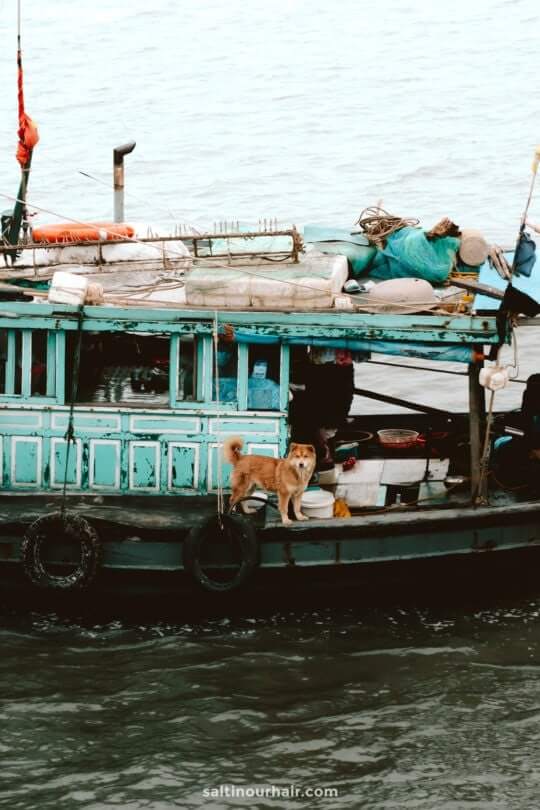
Day 10 – 12: Ninh Binh
Ninh Binh province is the natural paradise of Vietnam, home to charming villages, stunning rice fields, rivers, and the limestone mountains of Tam Coc. Enjoy a relaxing few days of seeing the beauty and tranquility of nature. Whether it be spotting wildlife or exploring the mountaintop temples, caves, and shrines, there is something every traveler will love.
Read: Tam Coc, the natural paradise of Vietnam
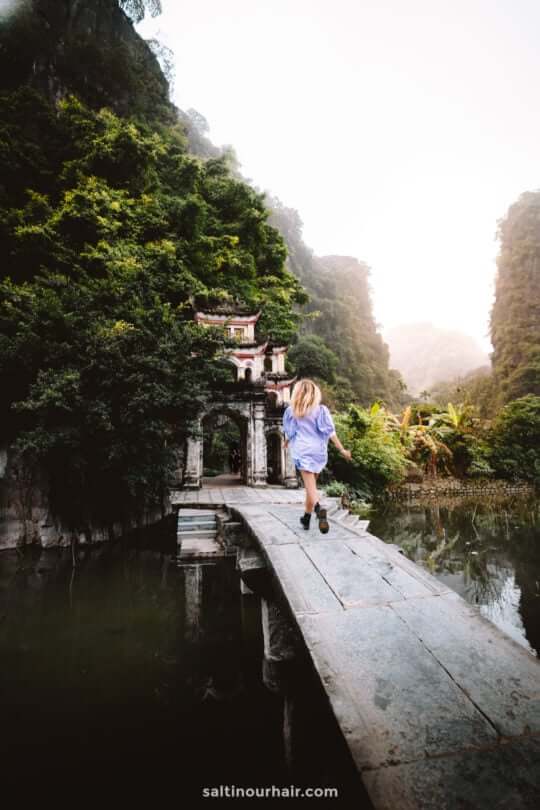
Where to Stay in Tam Coc
Experience charming wooden bungalows, lotus ponds, and gardens filled with organically grown vegetables – there’s plenty to choose from in the Ninh Binh region.
Hotels in Tam Coc 😴
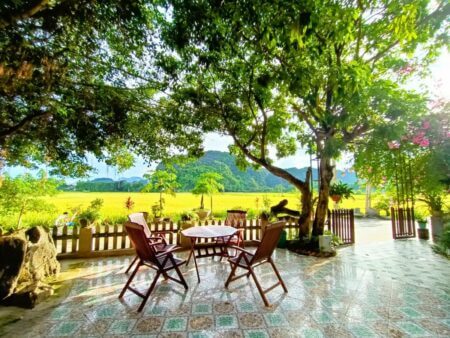
Getting from Hanoi to Ninh Binh/Tam Coc
By car: Tam Coc is a 2 – 2.5-hour drive from Hanoi. Some guesthouses will offer a return journey to Hanoi for an extra fee.
Bus: Buses run regularly from Hanoi.
Train: There is a direct train from Hanoi to Ninh Binh. From Ninh Binh, you can reach Tam Coc in a 10-minute taxi ride.
Book your transportation tickets online
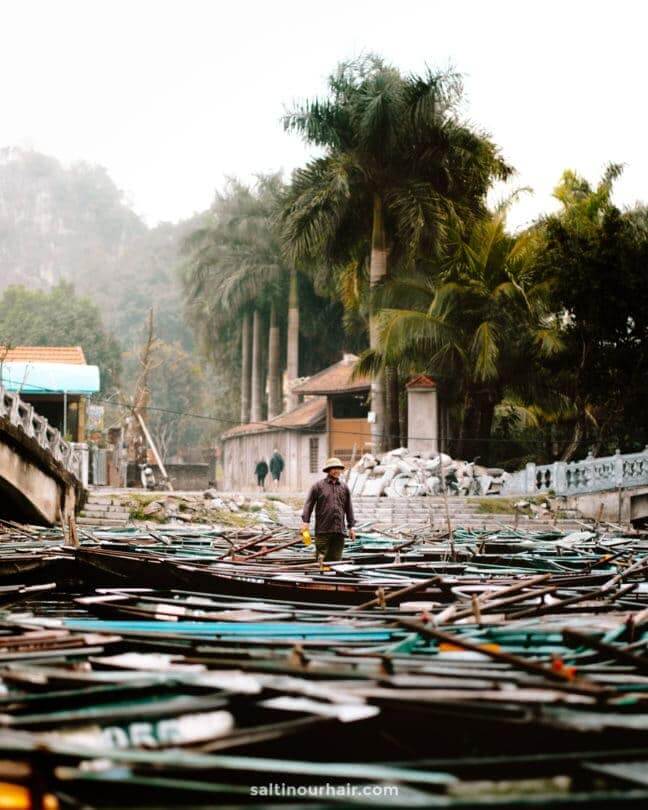
Day 13 – 15: Phong Nha
Explore the spectacular area of Phong Nha, known as the ‘adventure capital of Asia’, and for good reason! There are hundreds of mammoth caves here, nestled between limestone mountains and wide winding rivers. Because of this, travelers can enjoy trekking, climbing, or abseiling through tunnels and rivers.
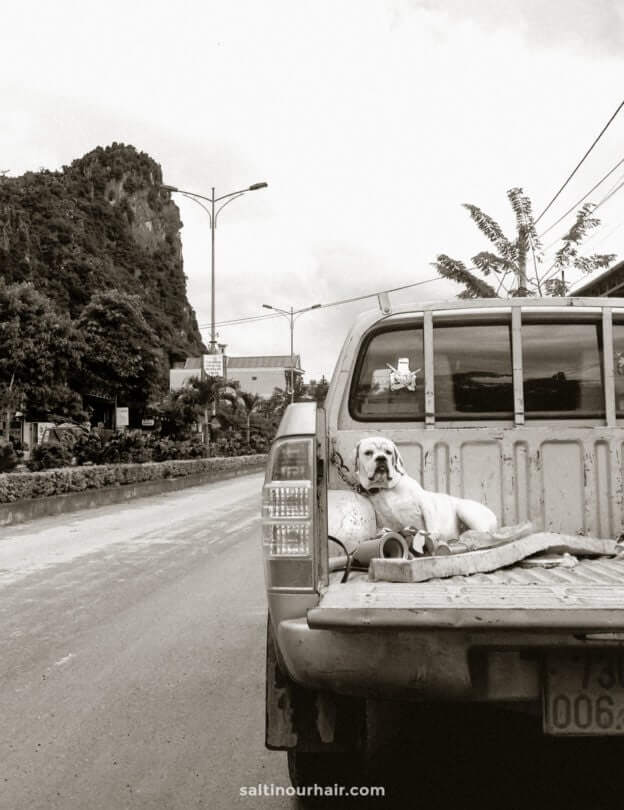
The most extraordinary of all the caves is Son Doong, big enough to fit in city skyscrapers. To reach this cave is a 4-day trek, with a long waitlist, so make sure to plan ahead if you want to incorporate this into your Vietnam travels. Many others, which are just as impressive, such as Hang En, can be visited in a day trek.
Note: During the rainy season of July- December (especially in the later months) many of the caves become inaccessible.
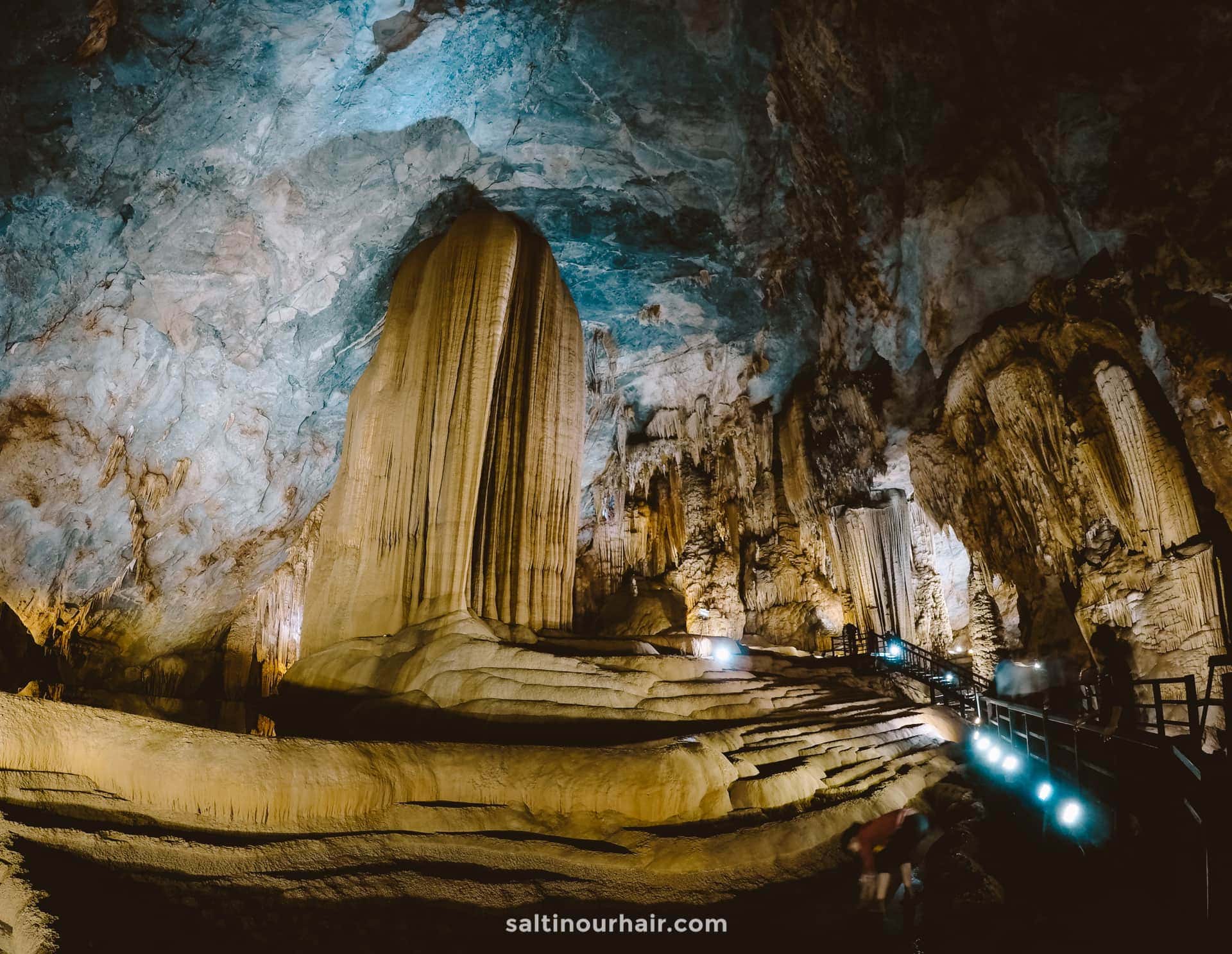
Getting from Ninh Binh to Phong Nha
Bus: To get to Phong Nha from Ninh Binh, there is a direct overnight bus (7 hours). This is the most efficient and direct option.
Train: There are also trains from Ninh Binh to Dong Hoi (8 hours). From Dong Hoi, it is a 1-hour taxi to Phong Nha.
Plane: To fly, go back to Hanoi and take a 1-hour domestic flight to Dong Hoi. From here, take the 1-hour taxi to Phong Nha.
Travel Insurance Don't forget a travel insurance for your Vietnam trip! Heymondo covers medical emergencies, theft, delays, cancellations, lost luggage, and more, with 24/7 worldwide assistance and medical chat. As a Salt in our Hair reader, we've got you 5% off! Check Heymondo here
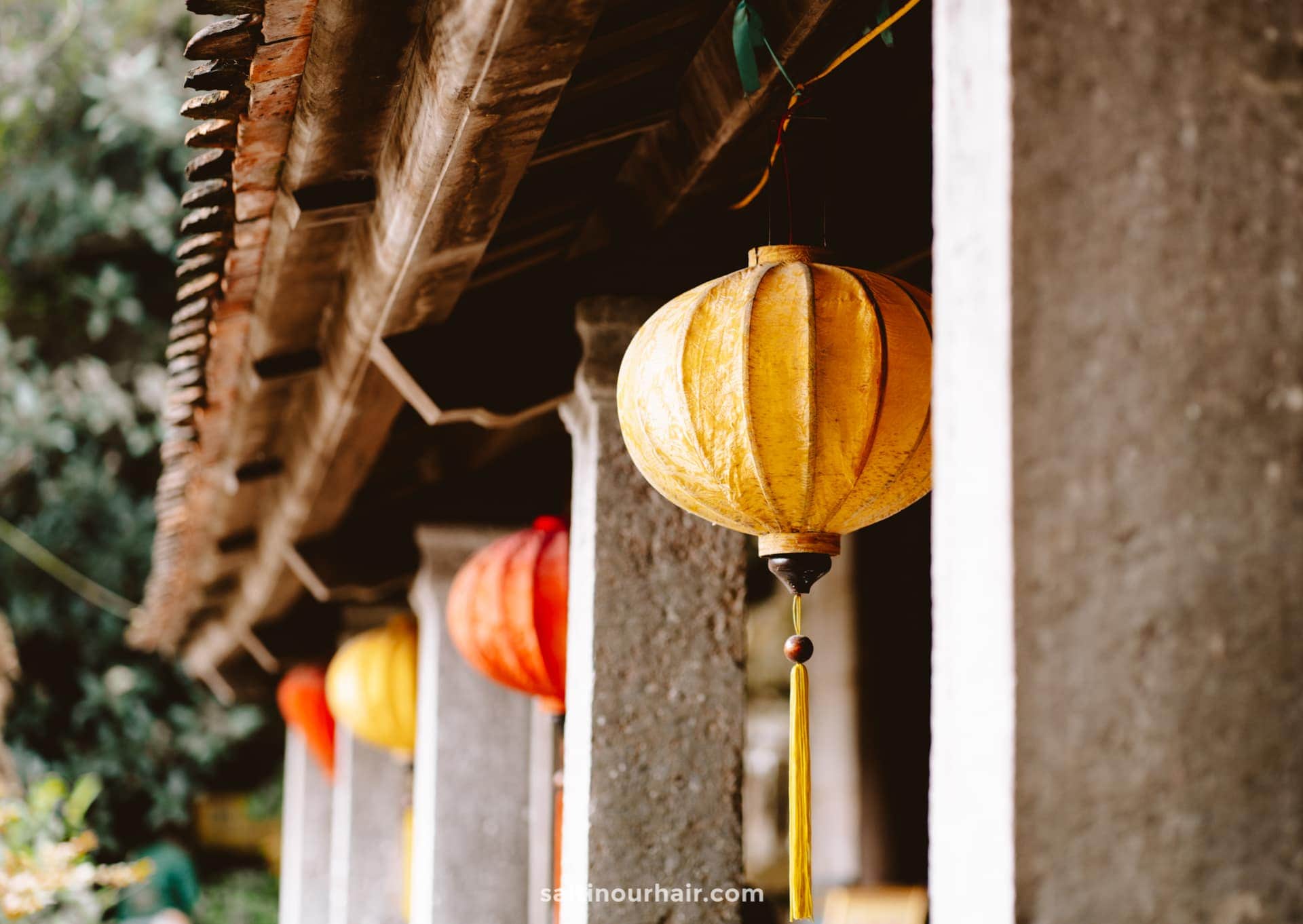
Day 16 – 17: Hue
Hue is a lovely little city to spend a night and soak up the remarkable culture of Vietnam. It used to be the capital of Vietnam, a royal city on the banks of the wide Perfume River.
As such, it’s filled with ancient tombs, beautiful pagodas, and, most famously, the walled imperial city. Spend a few hours wandering around the ancient Imperial City, surrounded by a moat, and gain a glimpse into the royal history of emperors in Vietnam.
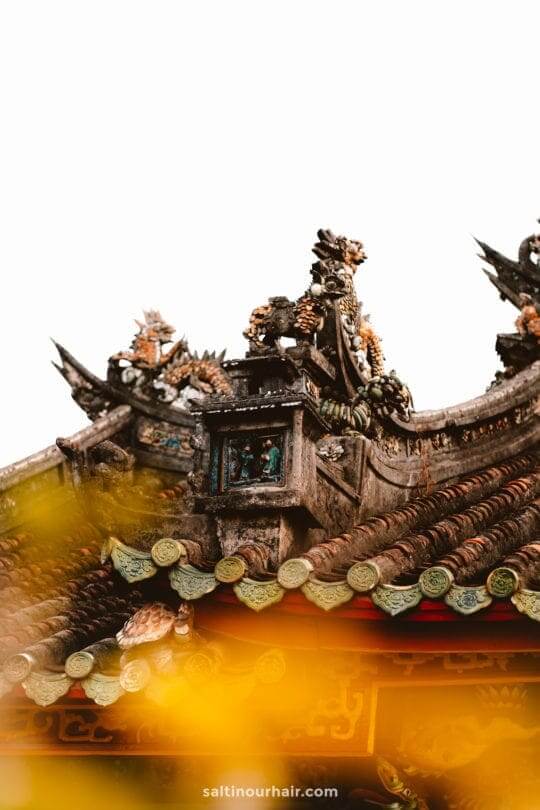
Because of its war-torn past, Hue is also home to many war/history museums, which are fascinating to visit. A cultural gem on your Vietnam route!
Tip: Try the legendary ‘Bun Bo Hue’, iconic of the city.
Getting from Phong Nha to Hue
Bus: From Phong Nha, take a direct bus to Hue. It can be done in 3 hours for as little as 6 USD!
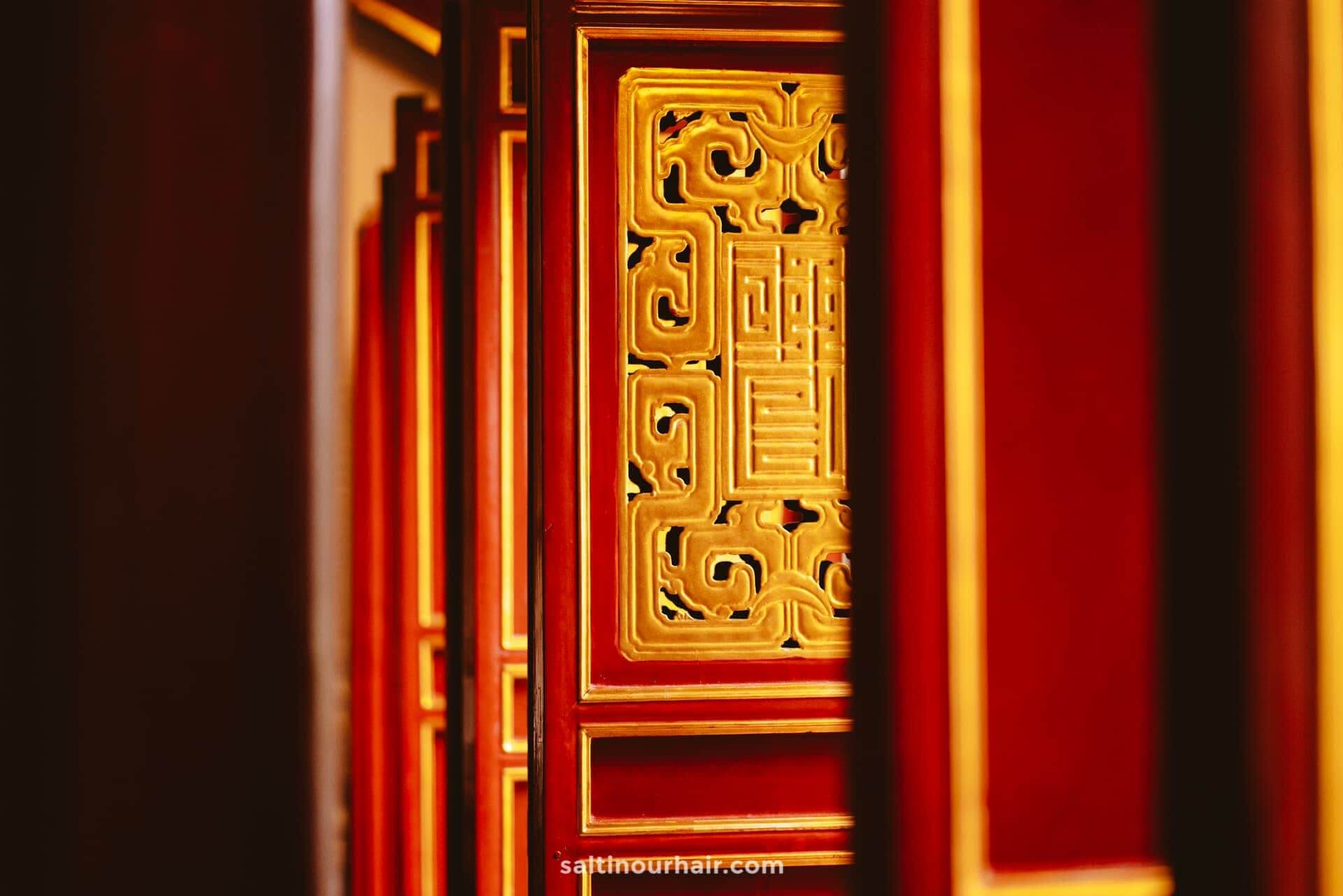
Day Trip: Hai Van Pass to Danang
On your way from Hue to Hoi An , make a stop for the afternoon in Danang. To do this, hire a motorbike and ride the famous, exhilarating Hai Van Pass. This meandering road (20 km) worms through the hills and coastline 500 m above sea level! Because of its height, this is easily one of the most beautiful ways to see this part of the country. Make a stop in Danang to see the golden bridge or the weird and wonderful Ba Na hills.
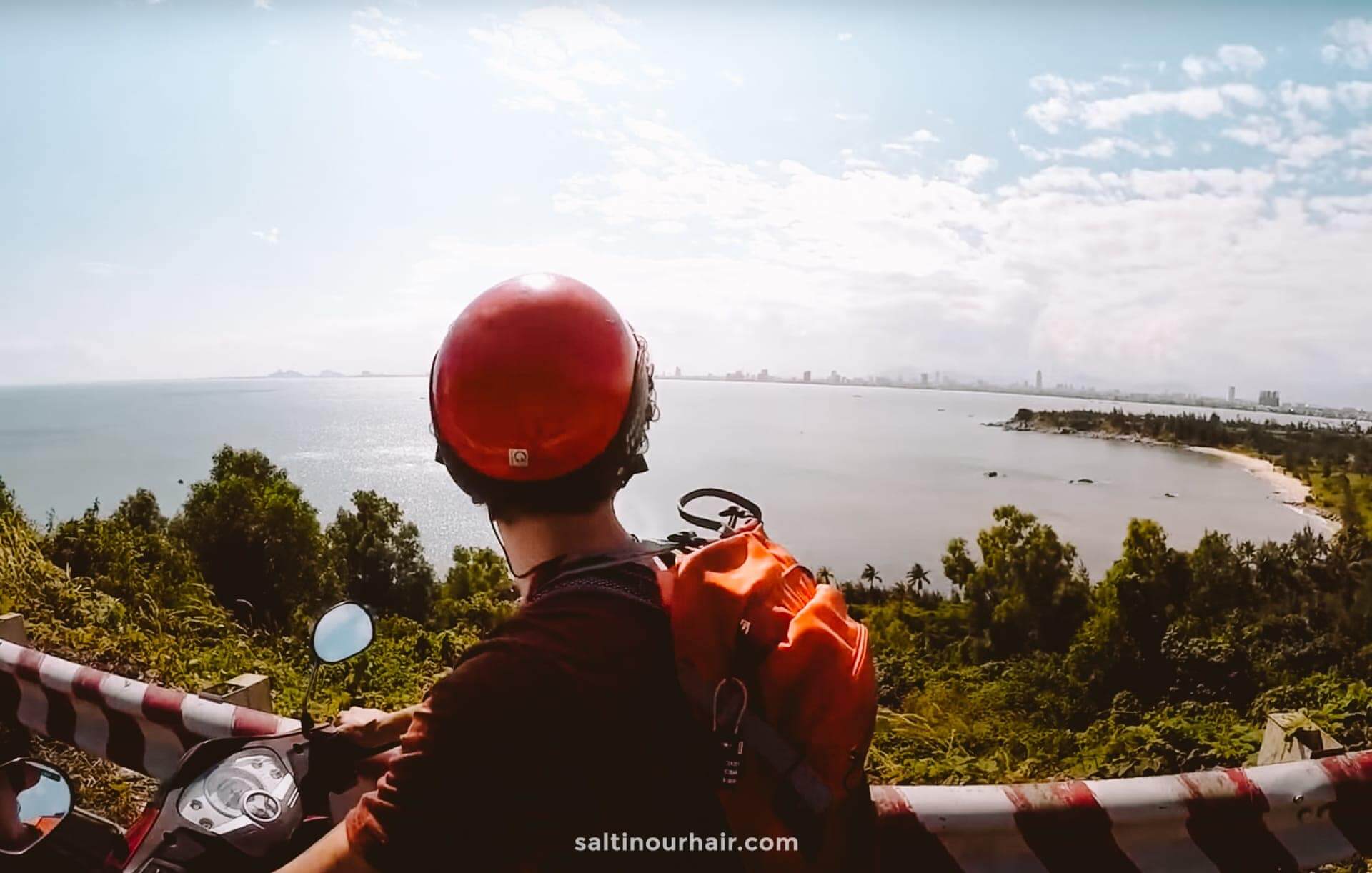
Note: If motorbiking isn’t really your thing, Danang is reachable by train from Hue. It’s a beautiful journey along the coast, known as one of the best train rides in Vietnam!
Day 18 – 20: Hoi An (end of 3-week route)
Arrive in beautiful, colorful Hoi An! Discover lantern-lit streets and French-style architecture while taking romantic river strolls or relaxing bike rides.
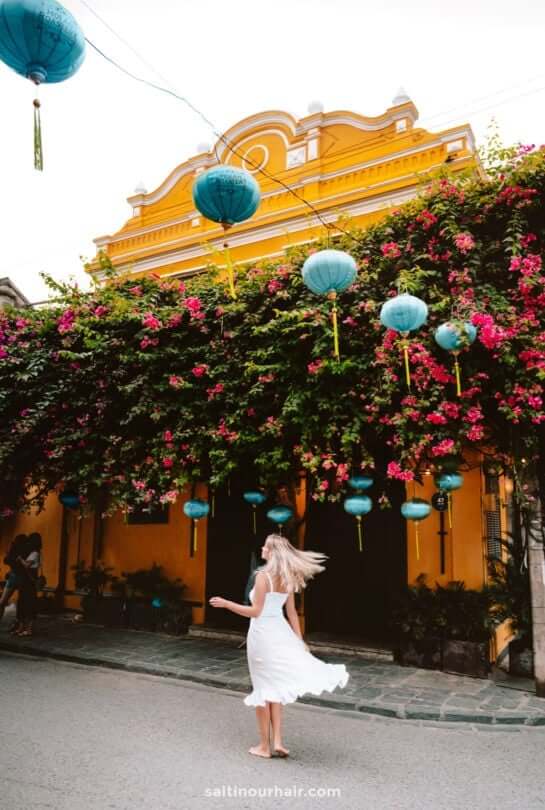
This UNESCO world heritage site offers countless things to do, such as a ride in the traditional basket boats, as well as some of the best food you’ll experience while traveling in Vietnam. Try the famous Banh Mi sandwich here! Hoi An is also the final stop of a 3-week route, and you can fly out from the nearby Danang airport.
Read more: Ultimate Guide to visiting Hoi An

Where to Stay in Hoi An
Depending on what kind of trip you want, you can stay either by the beach or situate yourself more centrally by the old town. It’s best to stay just outside of the old town, as the accommodation will be cheaper and both the beach and the old town will still be easy to reach.
Hotels in Hoi An 😴
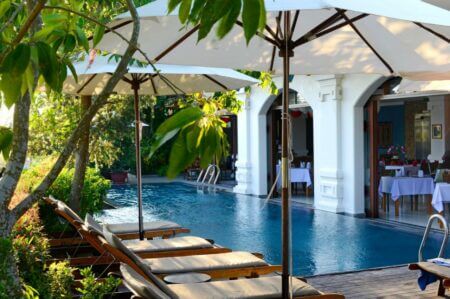
Getting from Hue to Hoi An
From Hue, make your way to Hoi An either by motorbike, public transport or minivan. Book your transport here .
Day 21 – 23: Dalat (start of 4-week route)
Dalat is the perfect place to see Vietnam’s nature at its finest. The green mountain town is situated in Vietnam’s Central Highlands. This is a region home to dense tropical forests, roaring waterfalls, and countless species of wildlife.
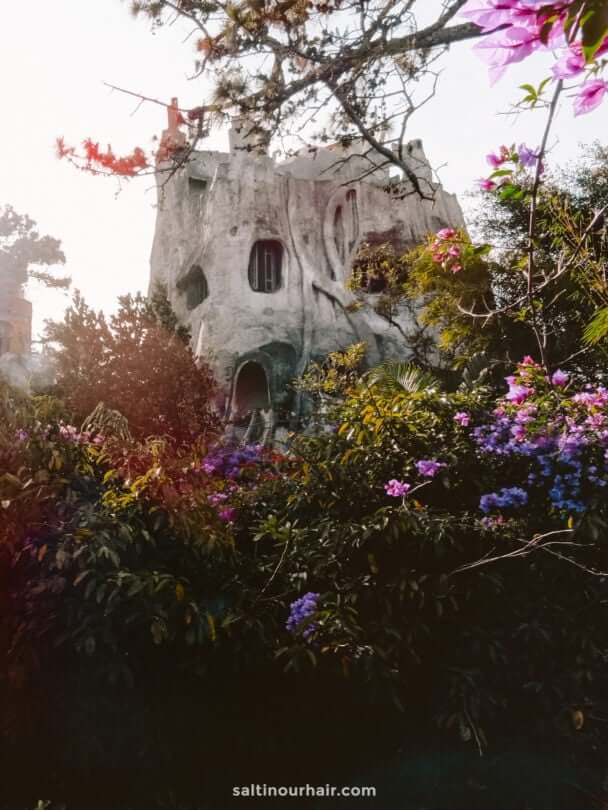
Spend time here spotting animals, taking the famous Da Lat cable car, or riding one of the many legendary motorbike journeys in the area. Because of its high location, there are nice mild temperatures all year round, so it’s a great spot to cool off from the heat of the lowlands.
Tip: Da Lat has an amazing coffee scene! Try a cup of the delicious brew here.
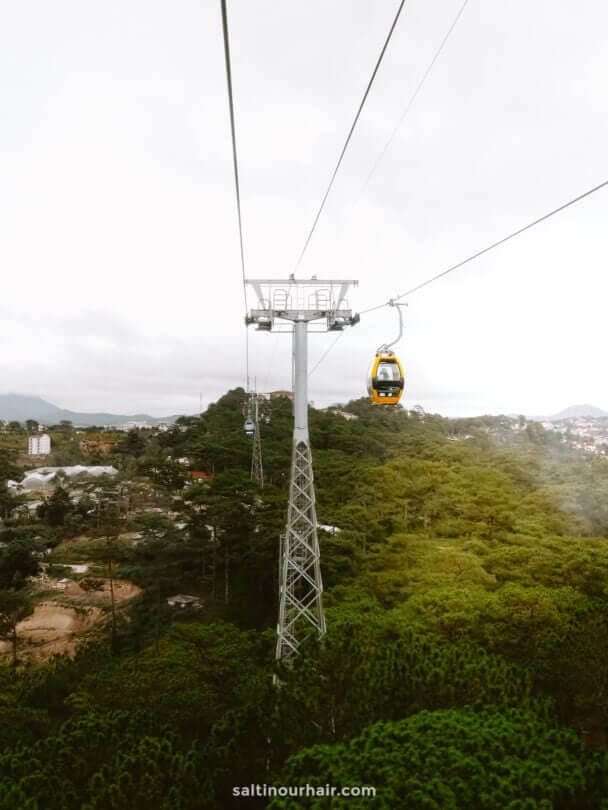
Where to Stay in Da Lat
Stay in a beautiful villa overlooking the city and the surrounding green scenery, or opt for a comfortable hostel with a smaller budget.
Hotels in Dalat 😴
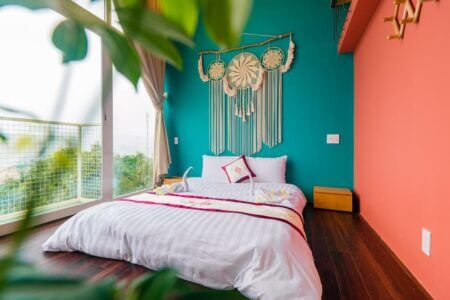
Getting from Hoi An to Dalat
Bus: If heading straight to Dalat from Hoi An, take an overnight bus of 13/14 hours.
Train: Overnight train from Danang to Nha Trang (10 hours). From here, take the bus to Dalat in 4 hours.
Plane: Danang to Dalat is a 1.5-hour flight (more expensive than other ways of travel).
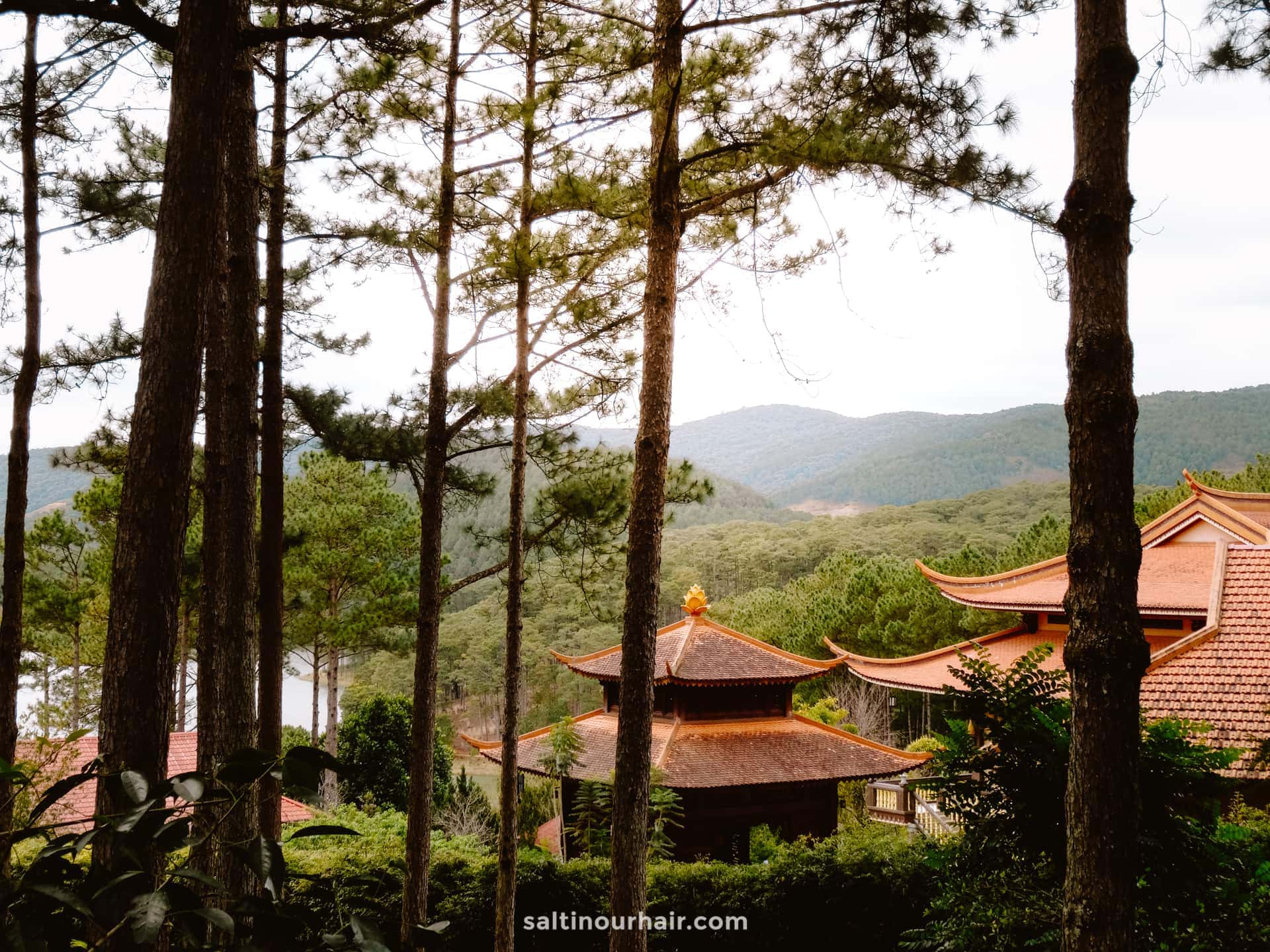
Day 24 – 25: Mui Ne
Mui Ne is famous for its relaxed beach vibe, but most importantly for its extraordinary white and red sand dunes! Visit the red sand dunes at sunset to see the fiery colors of the sun blend into the red of the sand.
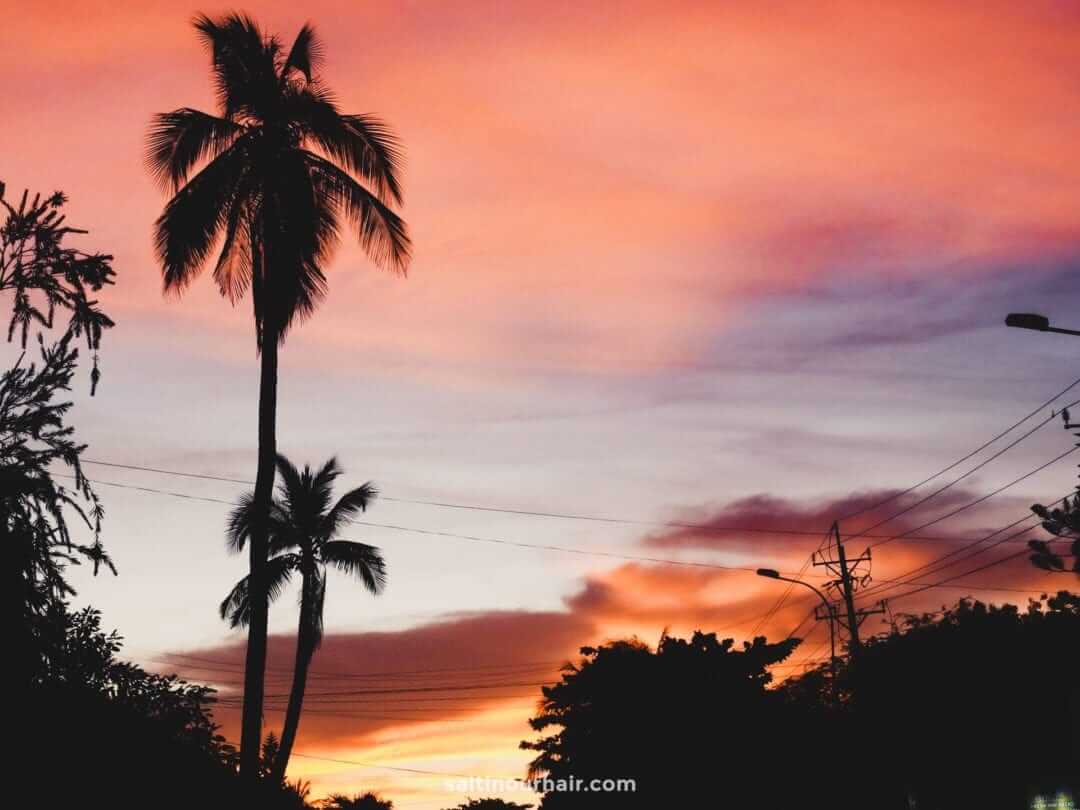
Alternatively, visit the white sand dunes for adventurous activities like quad biking or sand dune sledding. This is a must-do on any Vietnam travel route!
Getting from Dalat to Mui Ne
Bus: Visit in a 4-hour bus ride from Dalat.
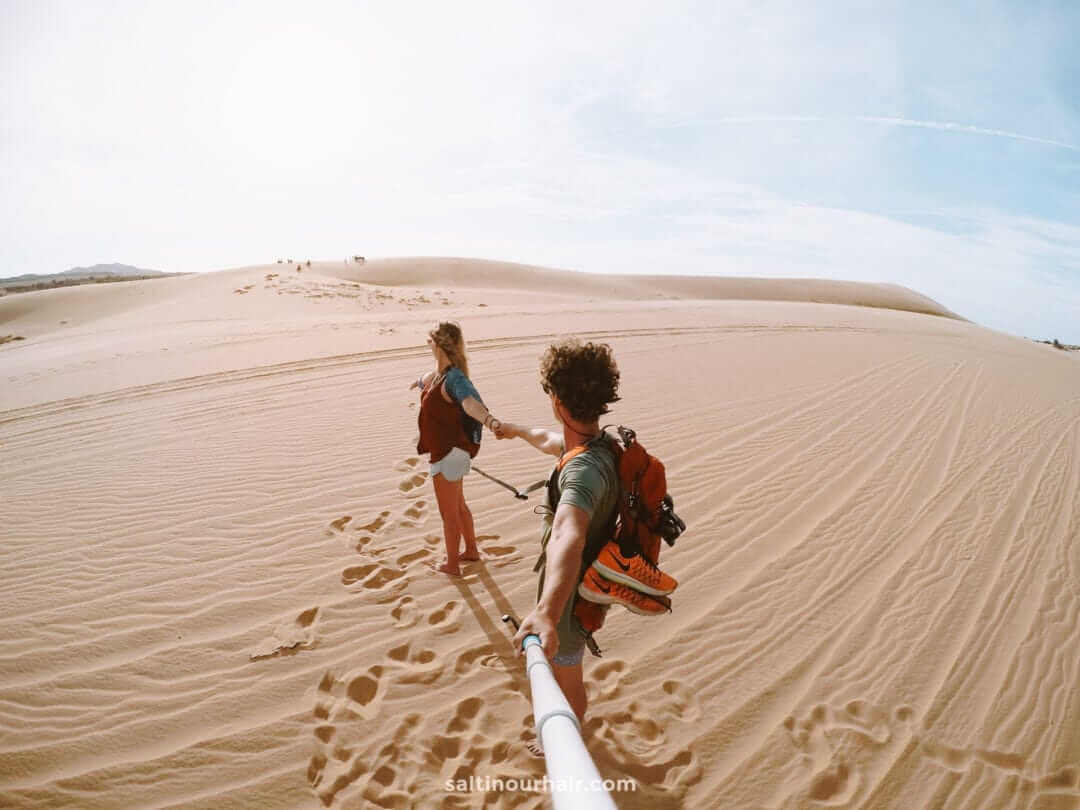
Day 26 – 28: Ho Chi Minh
Spend a few days in the sprawling metropolis of Ho Chi Minh! Formerly known as Saigon, this fantastic city is very modern, with broad tree-lined avenues, bright city lights, and skyscrapers. Get to know the various districts, eat incredible food, and make sure to visit the highly informative war museums. This is a must-visit when traveling in Vietnam!
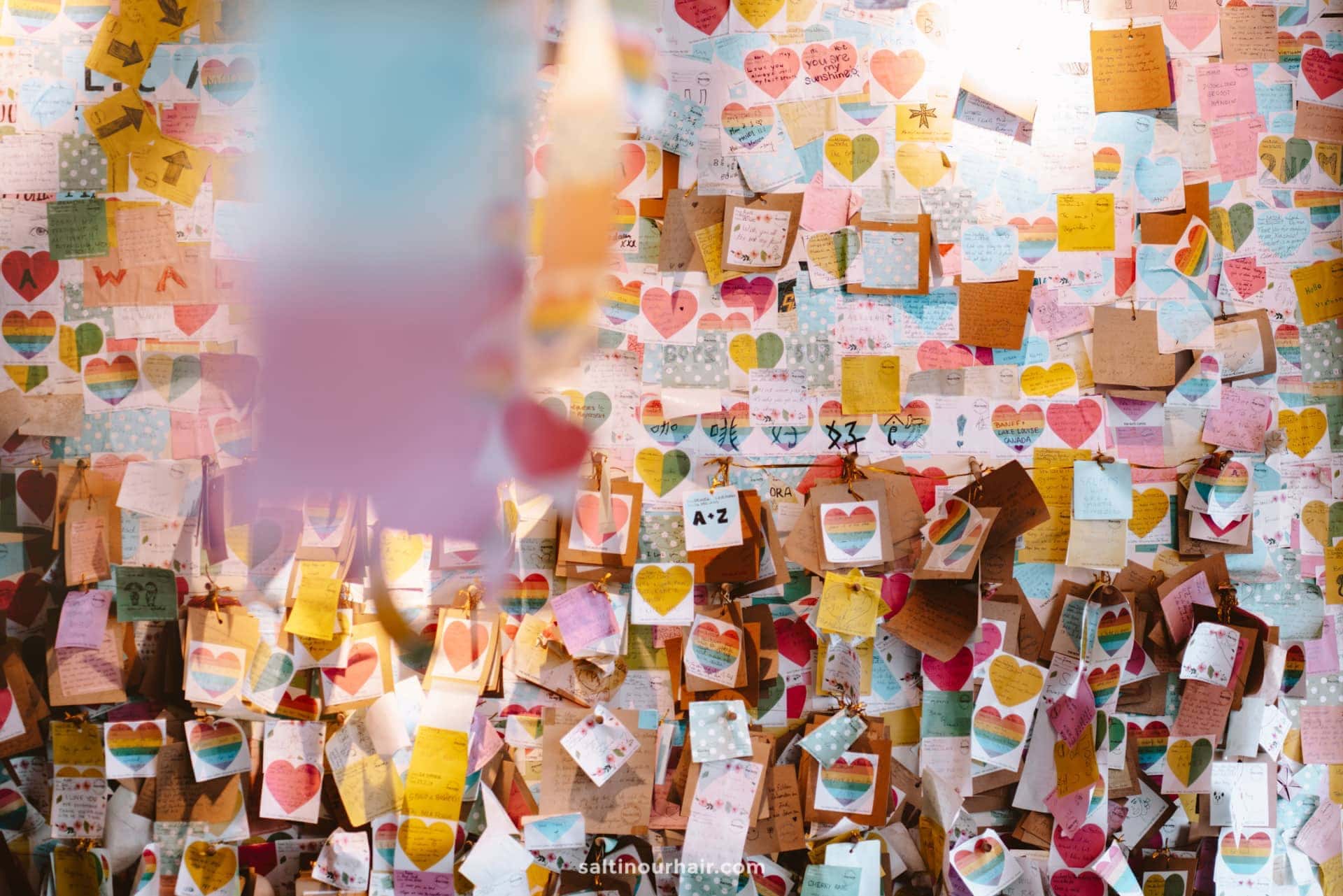
Make sure to take a day trip to the Cu Chi Tunnels: a huge network of underground tunnels used by the Viet Cong soldiers in the war. Join a tour that gives you the opportunity to crawl through the tunnels yourself for a true-to-life experience.
Getting from Mui Ne to Ho Chi Minh
Bus: 5-6 hours.
Train : 4-5 hours train from Phan Thiet (a 30 min drive from Mui Ne) that takes you directly to Ho Chi Minh.
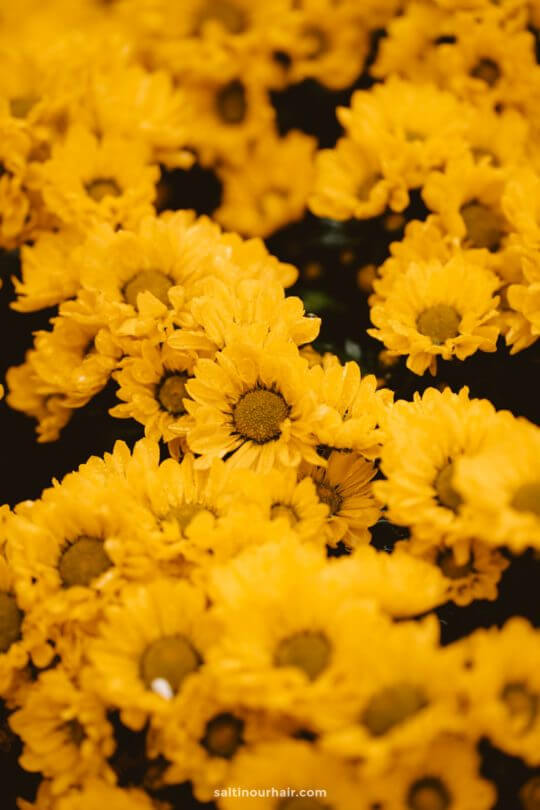
Day 29 Onwards: Phu Quoc (Optional)
If you have time, visit the beautiful island of Phu Quoc , in the far southwest of Vietnam. This island is a true paradise of secluded white sand bays fringed by clear, emerald waters and hanging palm trees.
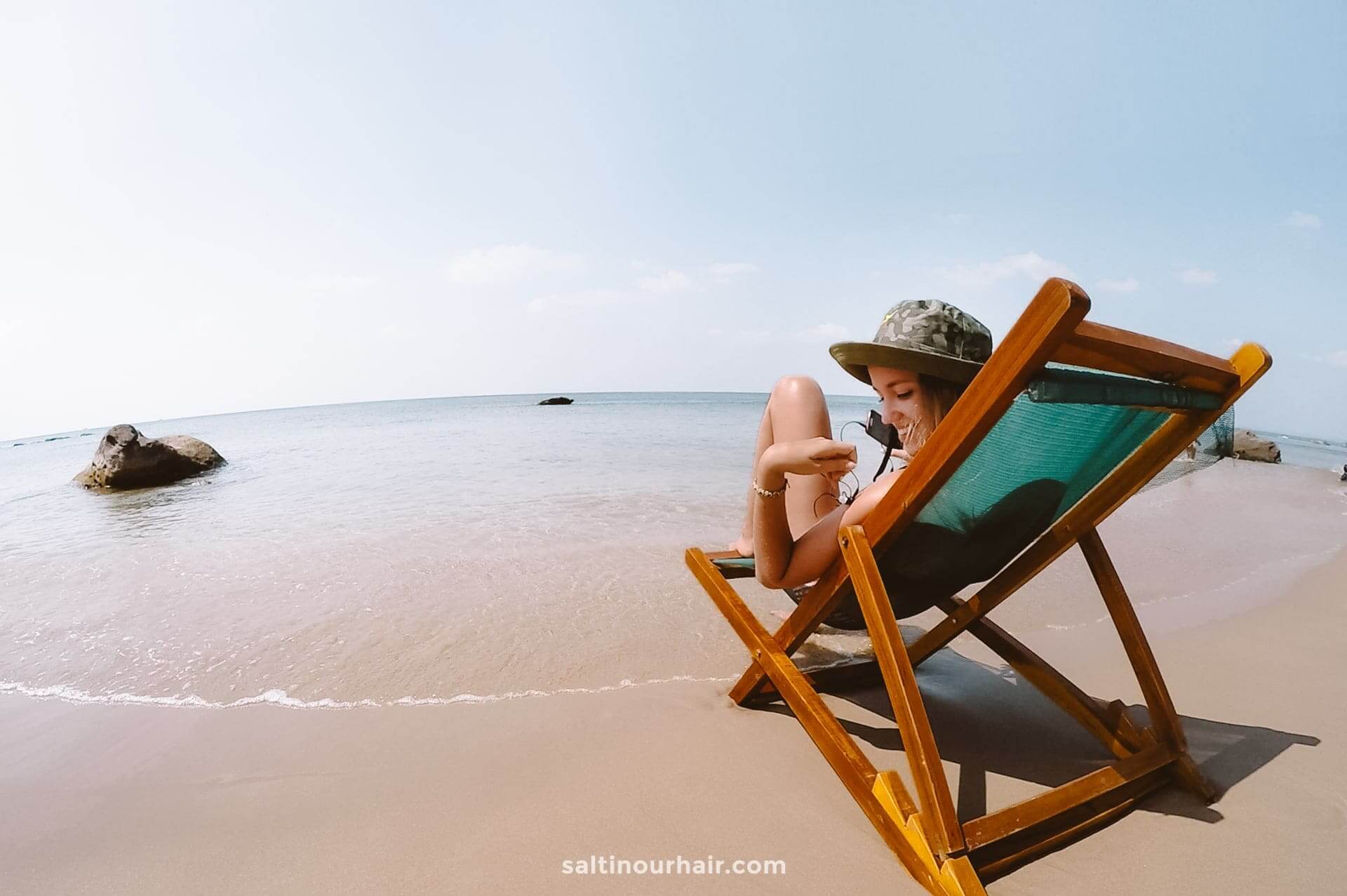
Head to the north of the island to explore the Phu Quoc National Park. Here you will find perfectly preserved nature, mountains, and dense forest that’s home to an abundance of incredible wildlife. Phu Quoc is definitely a perfect spot to relax, swing in a hammock, and enjoy the peace of nature after your adventurous Vietnam travels.
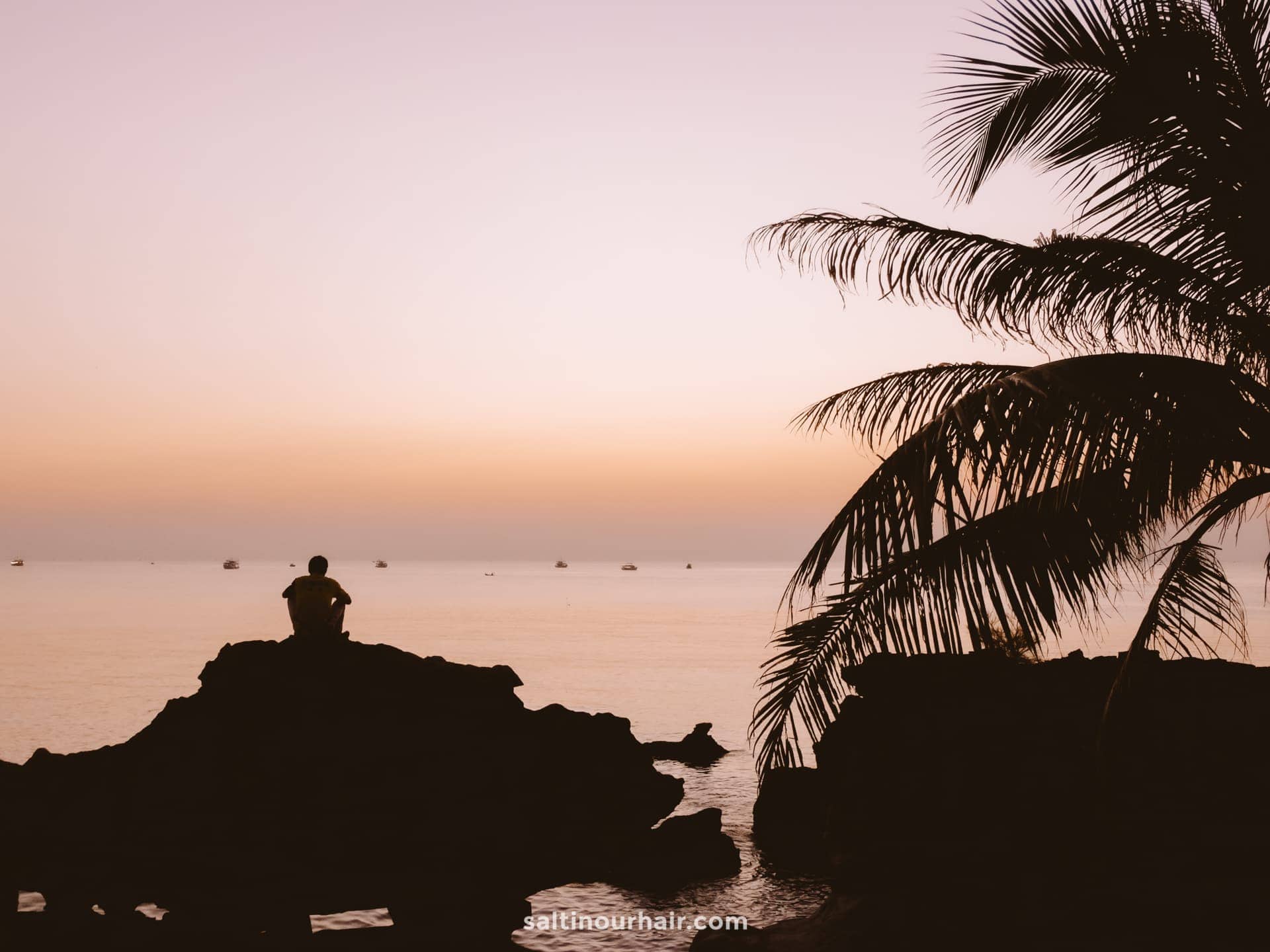
Where to Stay on Phu Quoc Island
Phu Quoc is one of the few islands that Vietnam has. It’s not new to tourists, so it is popular, but it’s luckily still not developed enough to be crowded. There’s a variety of accommodations on the island, from budget guesthouses and homestays to luxury hotels.
Hotels in Phu Quoc 😴
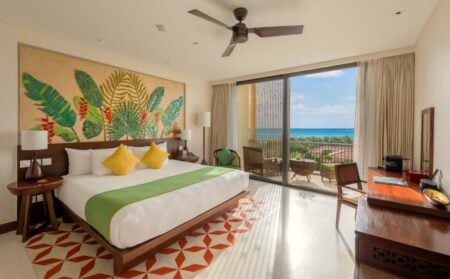
Getting from Ho Chi Minh to Phu Quoc
Bus + Boat: It is possible to take the bus to Rach Gia or Ha Tien (ferry piers) in 7-8 hours. From here, take the ferry to Phu Quoc in 2.5- 3 hours.
Plane: There is a direct 1-hour flight from Ho Chi Minh to Phu Quoc. This is a little more expensive, but it’s the most efficient way of travel.
Tip: If heading to Phu Quoc it’s worth taking some time to visit other places in the Mekong Delta region. This stunning area of natural beauty is home to a network of rivers, fantastic floating markets, rice paddies, and forests.
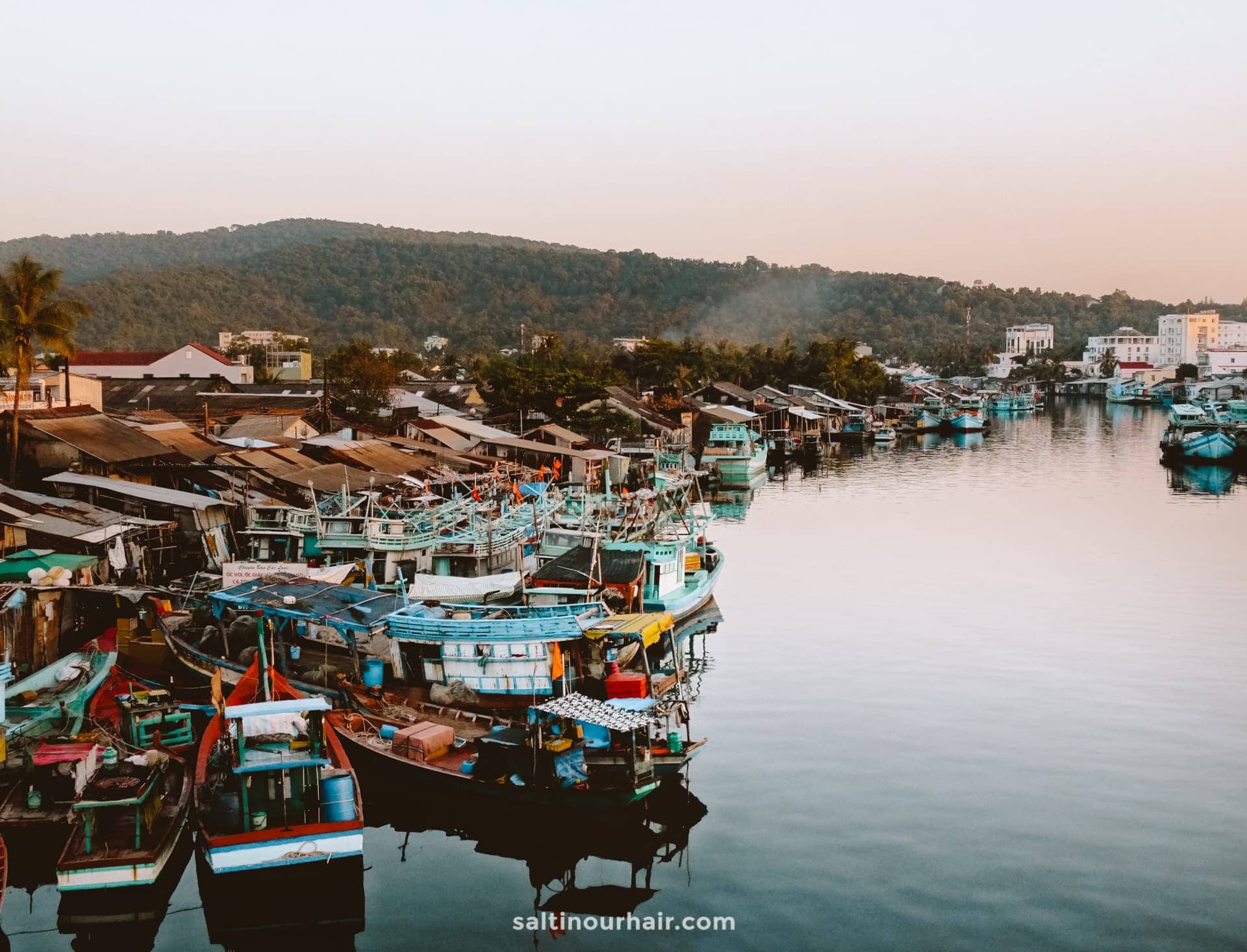
Alternative Vietnam Route Options
If your time in Vietnam is limited, spend 3 weeks up until Hoi An and save the south for another trip! If you have more than one month, spend more time in the Mekong Delta and Phu Quoc. Remote places like Sapa and Dalat, which take more time to get to, can be removed from the Vietnam route if time is tight.
What’s Vietnamese food like?
Vietnamese food is one of the healthiest cuisines in the world! The fresh, salty, sweet, and sour Vietnamese flavors mixed with herbs and spices bring beautiful harmony to your taste buds. Most dishes are not spicy, but chili flakes are always served on the table separately.
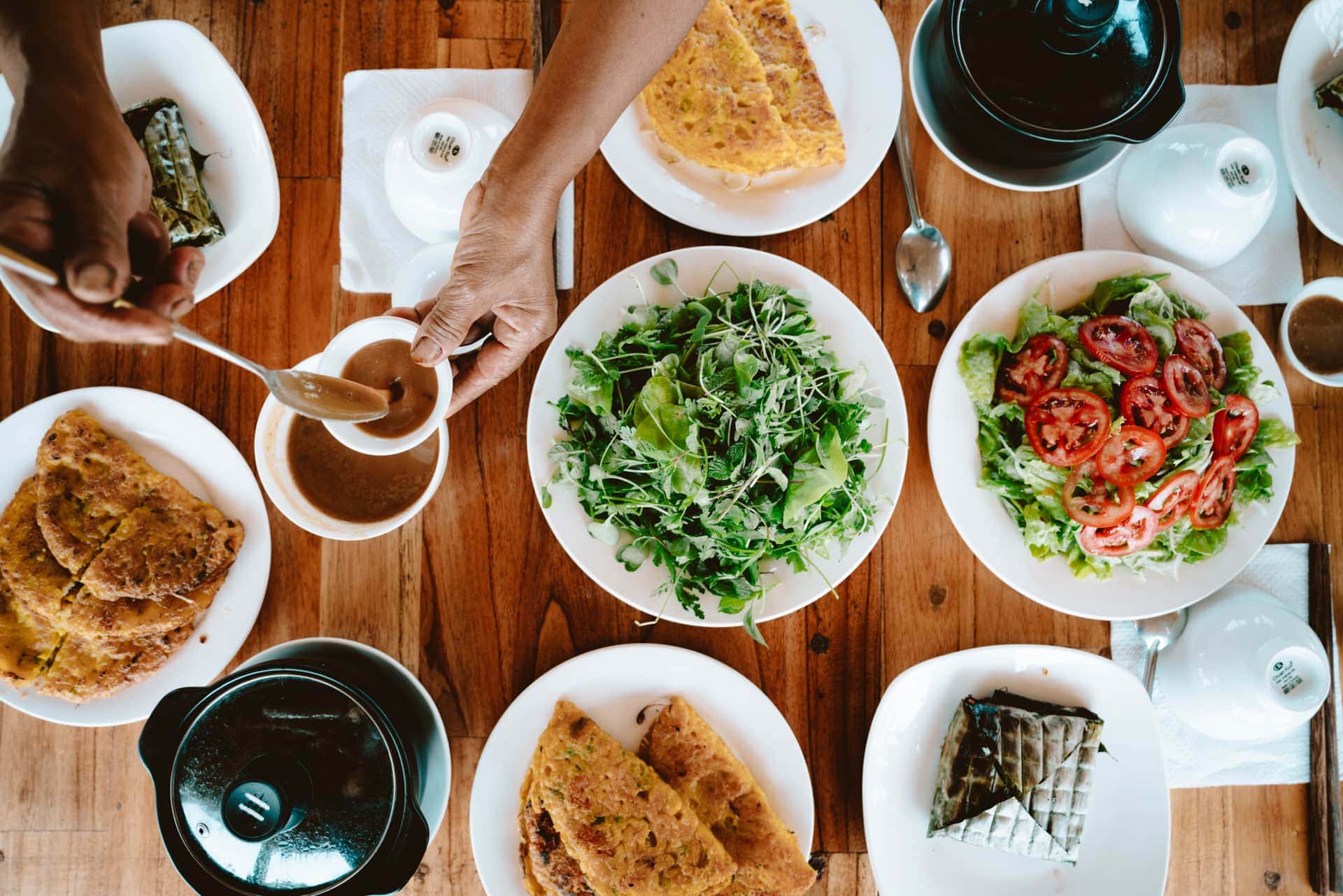
Costs of Traveling in Vietnam
Travel in Vietnam is exceptionally affordable! Delicious food can be bought from street vendors at a very cheap price, and there are very well-priced hotels and guesthouses throughout the country.
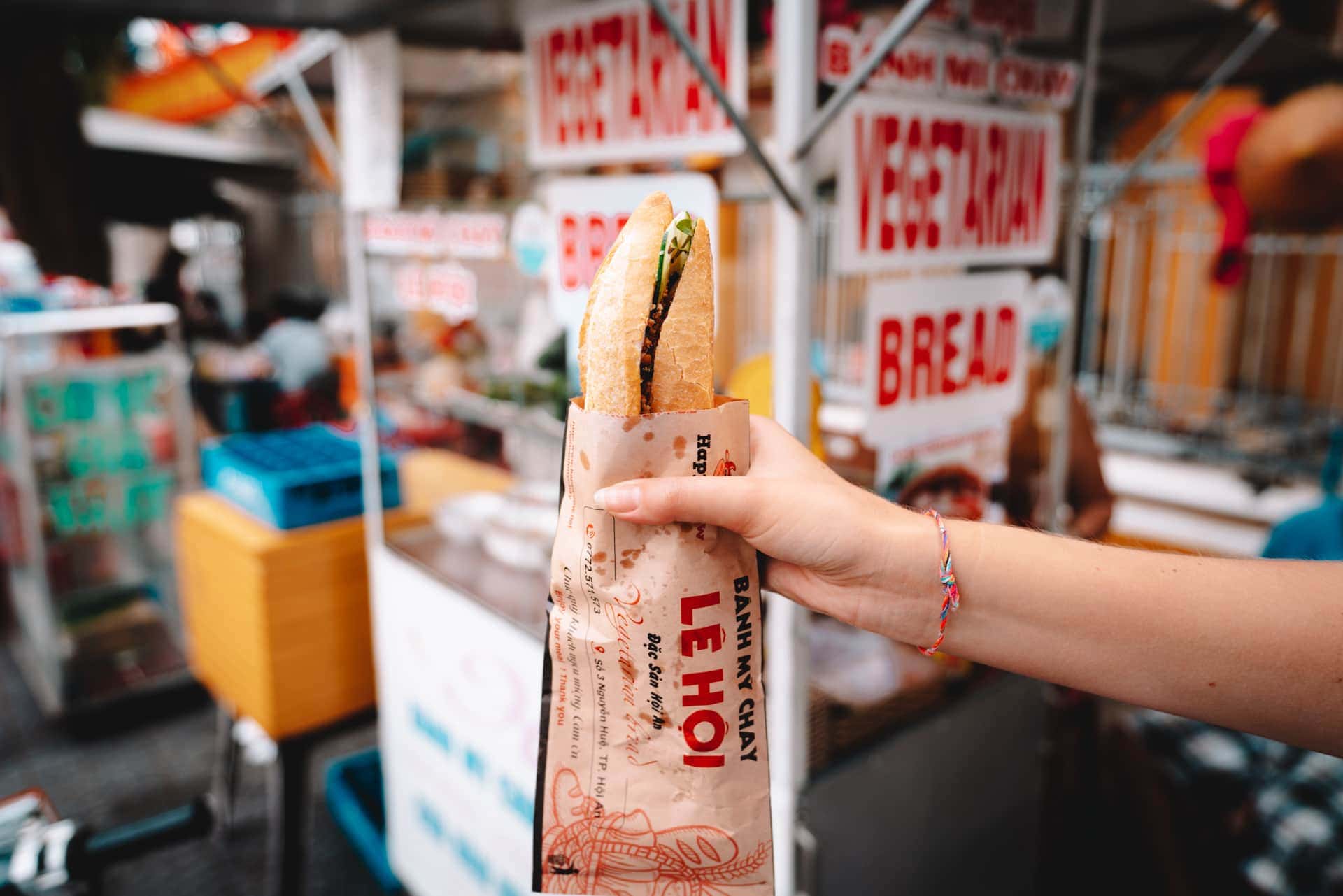
Travel is very cheap by bus, but extend your budget if you want to take domestic flights as these can be more expensive. Expect to travel on a budget of 10-20 USD per person and 20-50 USD per person for a bit more comfort.
Travel on a budget in Vietnam, from $110 − $240 USD weekly per person, mid-range $280 − $830 USD, and high-end from $750 − $1250 USD. However, costs depend on factors like accommodation, transportation, and activities. We did not include flights. Check flight prices here
- Hotels: $6 − $100 USD Check available hotels
- Hostels: $5 − $20 USD Check available hostels
- Transport: $5 − $15 USD Book public transport
- Car Rental: $20 − $30 USD Book a rental car
- Food: $2 − $30 USD
- Activities: $1 − $10 USD See tickets & tours
- Sim: $1 − $3 USD Get an eSIM or SIM here
- Travel Insurance: $2 − $6 USD Get Travel Insurance
How to Get Around in Vietnam
Vietnam’s infrastructure is varied. Although the roads are generally good, the traffic can be bad, so it’s good to always allow for delays when using public transport.
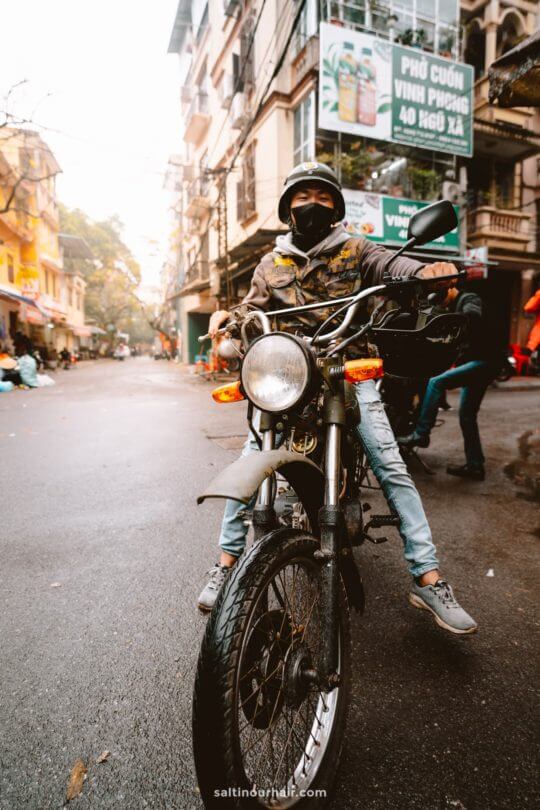
The main way to travel in Vietnam is by bus, and although this is slower, there are excellent sleeper buses which means you don’t have to take days off the itinerary. Good train routes operate down the coast of Vietnam, which also offer sleeper services.
Vietnam has a handful of domestic airports, but if you want to travel to more remote places, prepare to take the bus! ( Find cheap flight tickets )
Via this website you can easily book your busses and trains online
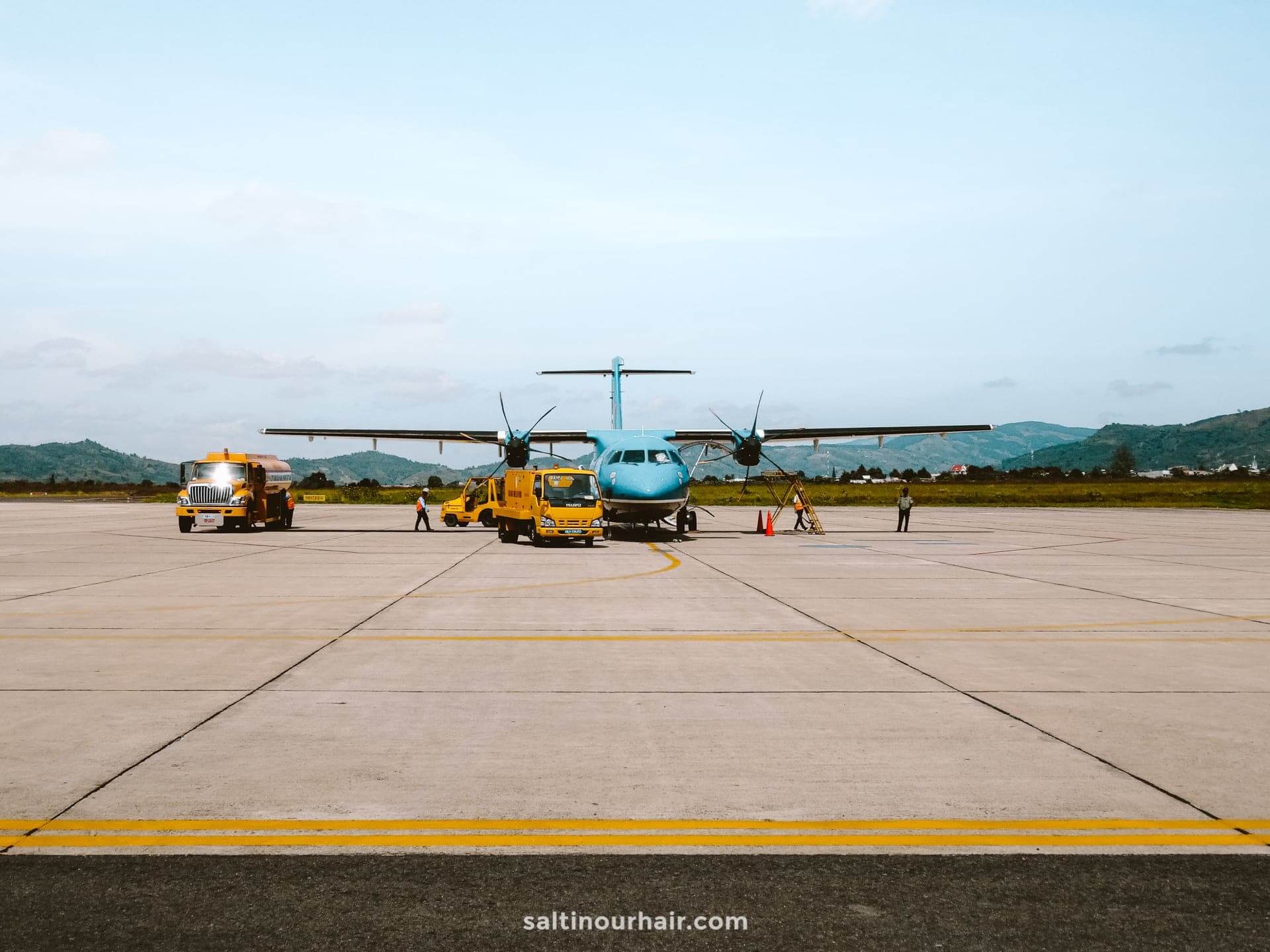
Best Time to Visit Vietnam
The climate of Vietnam is different from north to south. In the north, the weather is very seasonal, with hot, humid, and rainy summers and cold, dry winters. In the south, it is hot throughout the year, with the drier months between November to April and the wetter months between May and October.
Avoid visiting Vietnam during public holidays like TET, as prices will be much higher. It’s also good to note that most shops will be closed and transport services will be greatly reduced.
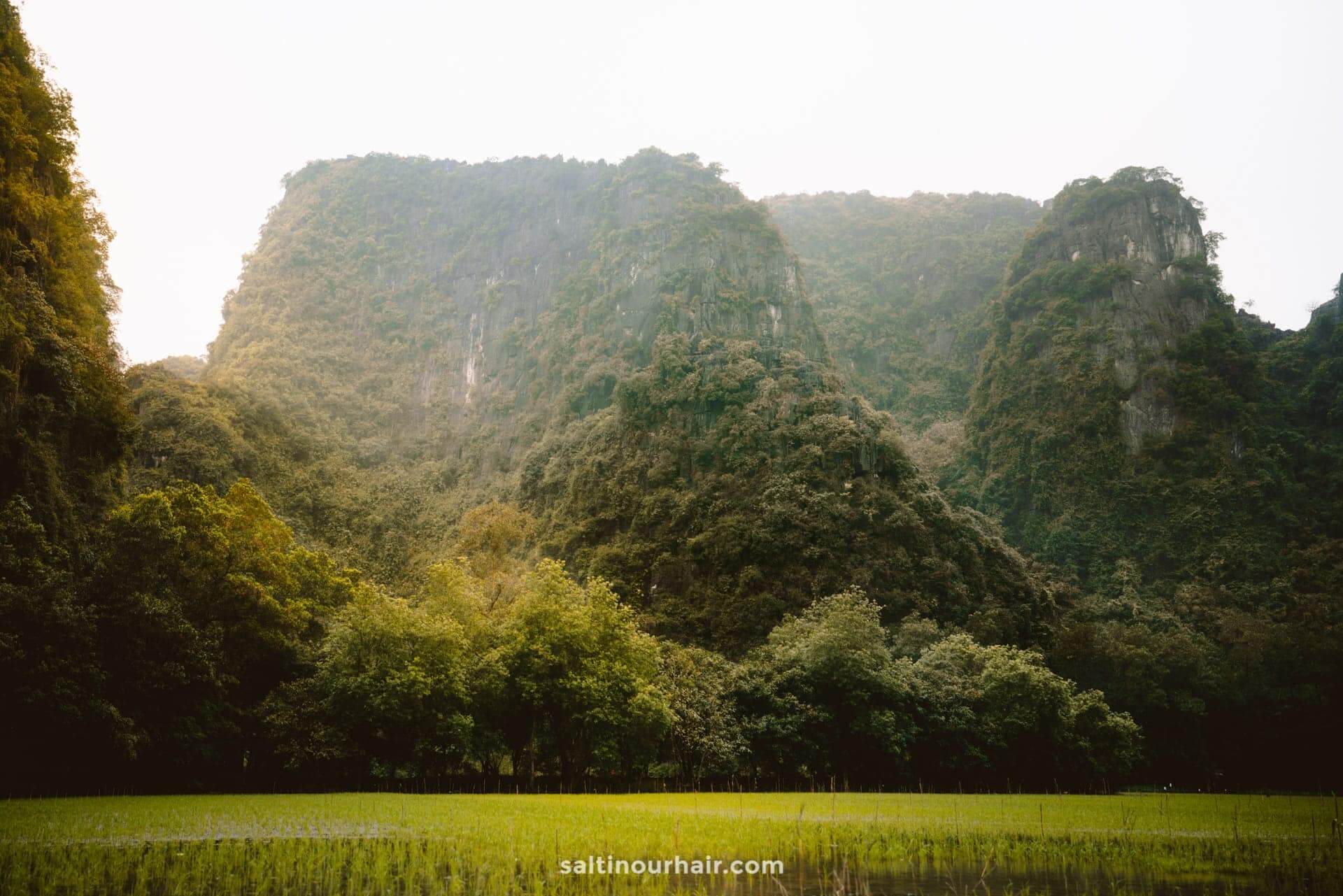
Do I Need a Visa to Travel to Vietnam?
Yes! Apply for an electronic visa online before traveling to Vietnam. The e-visa costs 25 USD and is valid for 30 days of travel. It takes 3 days to be approved but allows for more time just in case of delays or problems with the application. For a 90-day visa, apply beforehand using a reputable agency or by visiting the Vietnamese embassy in your home country.
Easily order your Vietnam visa here
Note: As of 2023, citizens of 25 countries can travel to Vietnam without having to apply for a visa and can stay in the country for 14 to 45 days (depending on nationality). Make sure to check beforehand if you’re country is on the exemption list and what conditions apply.
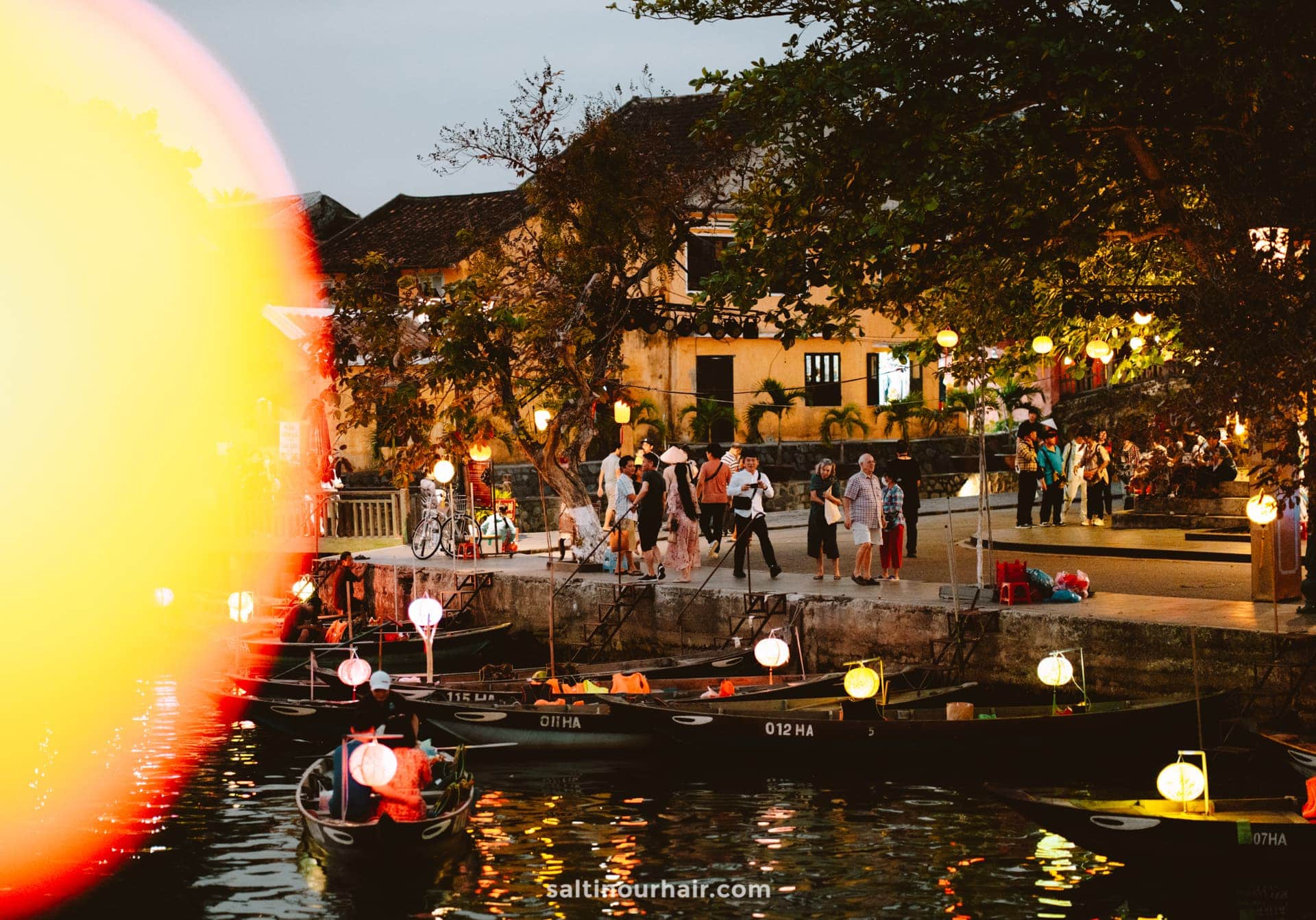
Safety in Vietnam
Vietnam is a very safe country to travel through. Even so, always keep your belongings with you, and be wary of pickpockets and scams. If traveling by motorbike, be very wary of the chaotic traffic on the roads, always wear a helmet, and make sure you have insurance.
Here’s how to: find the right travel insurance
By purchasing through our links, you support us at no additional cost. Thank you for your support. ♥️
- Find Hotels via Booking.com
- Find a Rental Car via Sunny Cars
- Find Flights to Vietnam via Skyscanner
- Get a Travel Insurance via Heymondo
- Book Tours & Attractions via GetYourGuide
- Book a Bus/Train/Transfer via 12Go
8 Best Things To Do in Mui Ne, Vietnam
Best things to do in ninh binh & tam coc (vietnam), 10 best things to do on phu quoc island, vietnam.
Looking for more travel information? Plan a chat with us for personalised travel advice or get an answer from the Salt in our Hair Travel Community on Facebook.
Thank you so much for this helpful content! It helped and inspired me a lot for my travels to Vietnam 🙏🏼 Just one little remark as it has changed on August 15 2023: a lot of European countries don’t require a visa anymore for a stay up to 45 days :)
Hi Lisa, thanks so much for pointing that out! We’ll update the guide :)
Your email address will not be published. Required fields are marked *
Notify me when new comments are added.
Be Inspired
- Destinations
- Things to do
- Eat & Drink
10 best places to visit in Vietnam in 2024
20 best things to do in vietnam, 10 best beaches in vietnam, 15 must-try vietnamese dishes, ao dai – vietnamese traditional dress.
- Ho Chi Minh City
The 10 best attractions in Da Nang
The 6 best attractions in ha long city, must-visit attractions in hoi an, the 15 best attractions in dalat, 5 must-try foods in ha long, vietnam travel guide video series.
Vegetarian dishes in Vietnam
7 must-try foods in Da Nang
List of countries that enjoy vietnam’s visa exemption (updated).
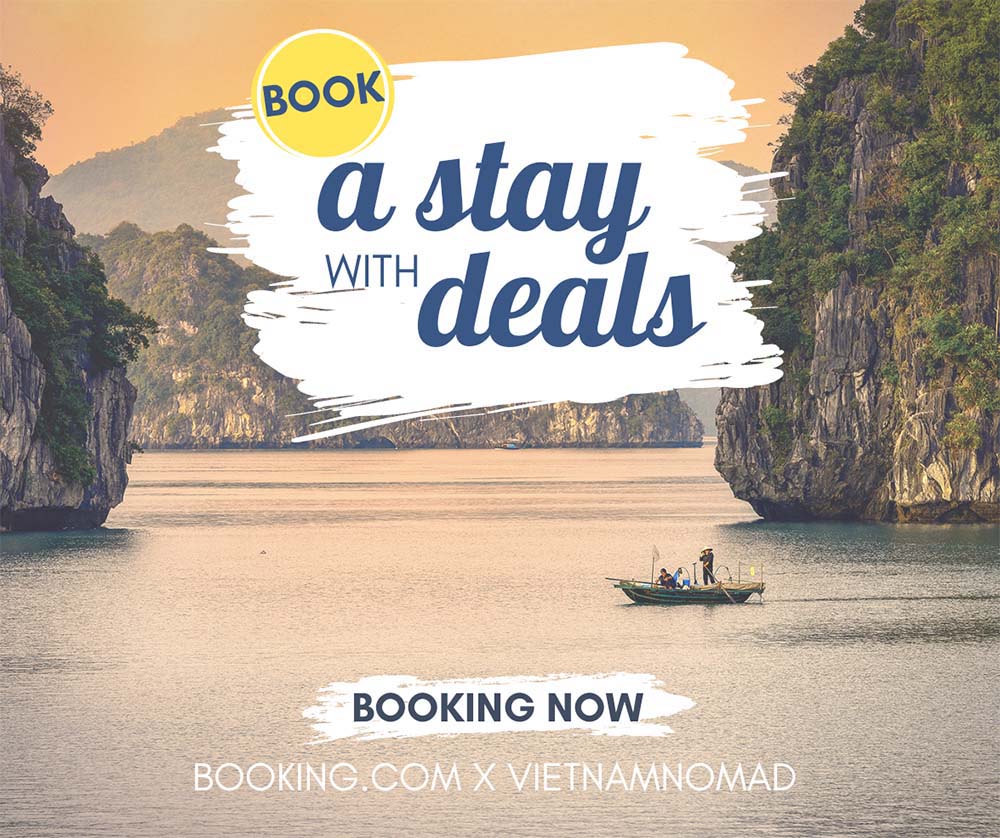
Top destinations
Northern vietnam, central vietnam, southern vietnam, mekong delta attractions map, ho chi minh city tourist map.

[Video] Hoi An: A Guide to Visiting the Most Beautiful Ancient Town in Vietnam
[video] da nang: a guide to visiting the most livable city in vietnam, foods to try, things to do, 2 weeks in vietnam, vietnam visa.
- Map of Vietnam
Vietnam Weather
Vietnamese currency, latest articles, popular posts, top destinations, travel guide.
- Best places
- Best dishes
- Vietnam visa
Helpful Resources
- Tourist maps
- Accommodation
- Privacy policy
- Our community
- Partner with us
© 2024 Welcome to Vietnam. All rights reserved.
This website utilizes cookies to improve user experience, analyze website performance and traffic, and deliver personalized content for marketing and advertising purposes. Privacy policy .

17 Best Places to Visit in Vietnam
Written by Jess Lee Updated Aug 30, 2023
Vietnam is an astonishing mix of natural highlights and cultural diversity.
The scenery ranges from jagged peaks seen from winding mountain passes down to verdant paddy fields painted every shade of green in the palette, while Vietnam's long history and multicultural population (with over 50 ethnic minority groups) make a trip here rich in heritage.
Outdoor lovers can get their teeth into the countryside within the numerous national parks, where hiking, biking, and kayaking are popular things to do, but Vietnam's most famous natural tourist attraction, the spectacular karst seascape of Halong Bay, is one natural sight that even the more slothful can experience up close on a cruise.
While the rural areas brim with lush panoramas, the big cities buzz with contemporary life and provide ample opportunities to get stuck into Vietnam's tasty culinary highlights.
This fascinating country is full of surprises and is one of Southeast Asia's most underrated destinations. Plan your sightseeing with our list of the best places to visit in Vietnam.
1. Halong Bay
2. ho chi minh city, 4. phong nha-ke bang national park, 7. sapa countryside, 9. nha trang, 10. cu chi tunnels, 11. ba be national park, 12. mekong delta, 13. cat ba island, 14. ha giang, 15. phu quoc island, 16. con dao islands, frequently asked questions, when is the best time to visit vietnam.
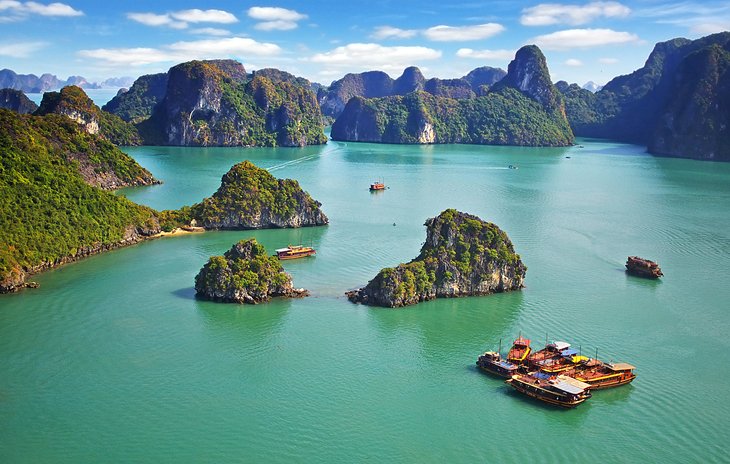
The karst seascape of Halong Bay is one of the best places to visit in the world for spellbinding sea views and is a UNESCO World Heritage Site.
Thousands of limestone islands sit within this bay in the Gulf of Tonkin, eroded into jagged pinnacles by wind and water action over millennia.
With the bay's scenery best seen by boat, this is prime cruising territory. Opt for at least an overnight tour to see Halong Bay's iconic views as a day trip doesn't do it justice.
There are plenty of caves in the bay that can be entered including the Hang Sung Sot, with three mammoth caverns, and the Hang Dao Go, with superbly weird stalagmites and stalactites. For most people though, the highlight is simply cruising amid the karsts and soaking up the changing scenery of pinnacles as you pass by.
There are plenty of different cruise tours to choose from. Check the different itineraries offered before booking as many travelers have left Halong Bay underwhelmed by their cruise.
Author's Tip: If possible, book a tour that takes in neighboring Lan Ha Bay as well as Halong Bay. The karst scenery is just as dramatic here but fewer cruise trips visit. And check if your cruise offers included activities such as guided kayaking (which allows you to experience an up-close view of the scenery).
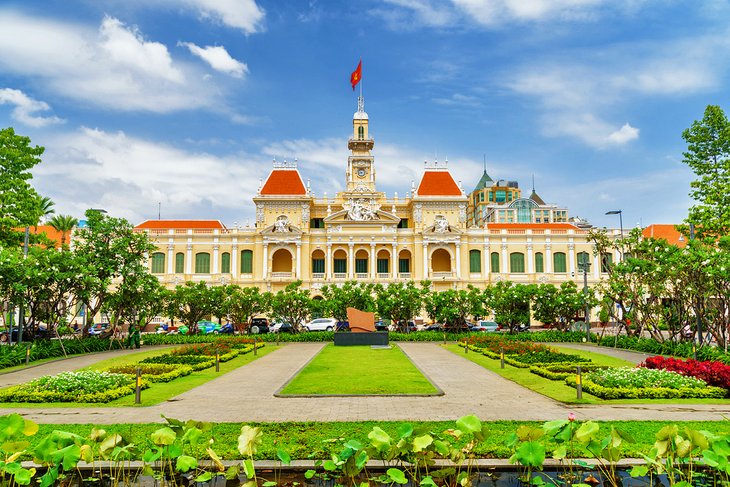
For big city fans, no visit to Vietnam is really complete without a visit to Ho Chi Minh City, the buzzing commercial hub of the country.
The streets are an insane clog of motorbikes and cars, the restaurant and café scene is incredibly cosmopolitan, and the shopping is the best in the country.
At its center is Dong Khoi, a relatively small and easily navigable central district, which holds most of the city's sights.
Here, you'll find the HCMC Museum, with a brilliant collection of artifacts that weaves together the story of the city, and the grand Notre Dame Cathedral, built in the late 19th century.
Check out the old district of Da Kao nearby for some of the best surviving examples of the city's French colonial architecture and also to visit the Jade Emperor Pagoda with its dazzling array of Buddhist and Taoist religious iconography.
Afterwards, the History Museum is a must-do for history fans with stacks of relics on display from various archaeological sites.
For many visitors, the two big-hitter tourist attractions not to miss are just a little out of the center, along Nguyen Thi Minh Khai Street. The Reunification Palace, then known as Independence Palace, was the residence for South Vietnam's president. It's chiefly famous as the spot where North Vietnam's tanks stopped on 30 April 1975, officially ending the war. It's a completely fascinating place to visit complete with 1960s furnishings still in situ.
Nearby is the War Remnants Museum, which although very obviously biased, paints a disturbing picture of the brutality of war and the many atrocities committed by US Forces during their Vietnam campaign.
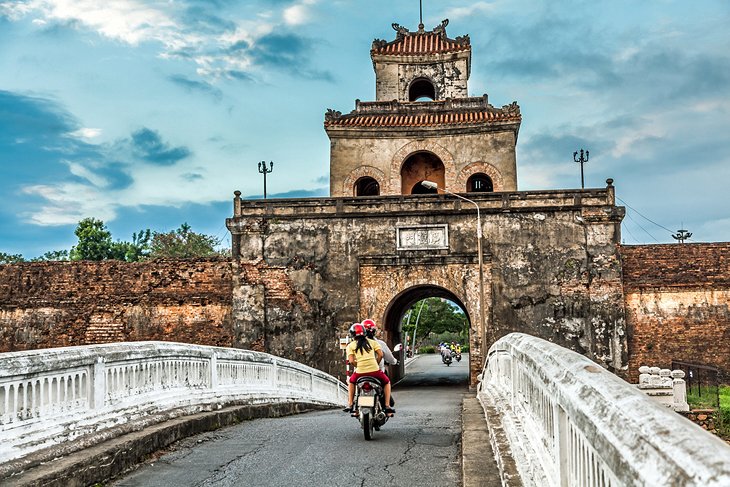
One of Vietnam's most historic towns, Hue is packed to the brim with relics from the reign of the 19th-century Nguyen emperors.
Sitting along the banks of the gorgeous Perfume River, the Imperial Enclosure is a huge site set within walls that sprawl for 2.5 kilometers.
While touring the grounds check out the gorgeous Ngo Mon Gate, the Thai Hoa Palace with its finely lacquered interior detailing, the Dien Tho Residence where the Queen Mothers would live, and the Halls of Mandarins with its preserved ceiling murals.
A dazzling number of historic sites lie outside the Imperial Enclosure walls as well.
One of the nicest ways of visiting a collection of outlying sites is by taking a riverboat cruise on the Perfume River. A day cruise can take you to visit several royal tombs along with some pagodas.
If you're short on time, the best tomb to visit is the Tomb of Tu Doc and the most important pagoda in the area is the Thien Mu Pagoda, with its tower that soars for 21 meters high.
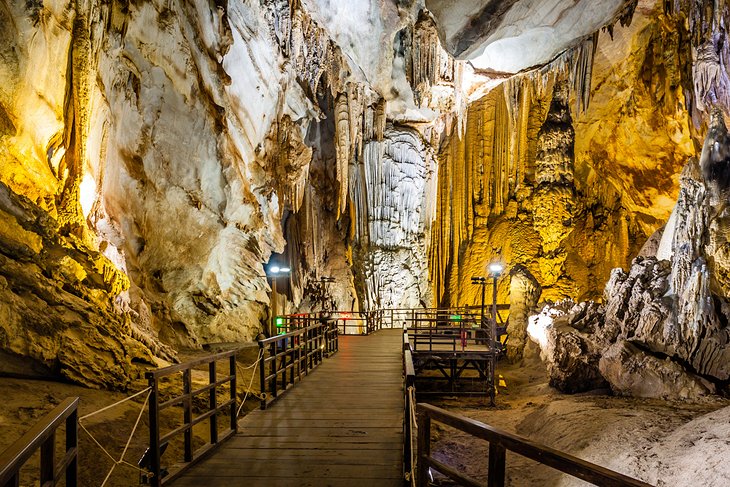
One of the best places to visit in Vietnam for caving, World Heritage-listed Phong Nha-Ke Bang National Park is a dramatic karst mountain formation honeycombed with huge caverns, which are home to superb stalactite and stalagmite displays.
It's best known for its caving activities , which range from multi-day hiking and caving tours for the more adventurous, to simpler half-day trips to caves with easy access provided by boat trips and modern boardwalks, but the national park also offers mountain biking and trekking activities.
The most popular destinations within the park are the Paradise Cave , which extends for a staggering 31 kilometers below ground, and the Phong Nha Cave, where the interior is accessed by boat. Half-day tours can be easily arranged once you're in the area.
The national park's most renowned caverns though are Son Doong Cave (the world's largest cave) , and the Tu Lan Cave with its cavern river system. Access to these, and to certain other caves in the park are restricted to organized tours (ranging from one-day to multi-day expeditions) which are all run by Phong Nha's expert adventure tour company Oxalis . It's well worth booking in advance to secure your spot.
To make the most of your time here, time your visit for outside the rainy season, which runs from October to December, when many of the national park's caves are closed to the public.
You can access Phong Nha-Ke Bang National Park from Son Trach (also known as Phong Nha village).
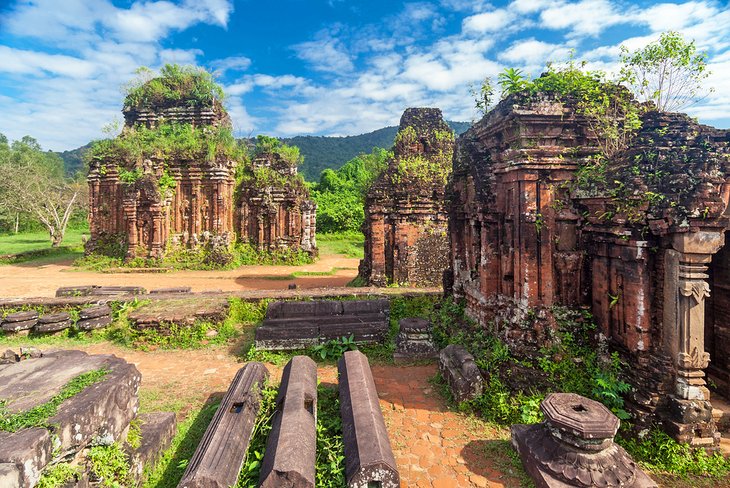
Surrounded by lush jungle-covered mountains, My Son is a ruined Cham era temple city that dates from the 4th century.
This old Hindu religious center was still very much in use during the 7th to 10th centuries and only fell into complete decline and abandonment during the 13th century.
There are around 20 temple structures still standing here, all built of brick or sandstone blocks and showing interesting influences from various Asian empires, including Indian and Malay.
Note that the temples of Group B are the oldest, while Group A once contained the site's most important monument but was destroyed deliberately by US forces during the Vietnam War.
A good museum on-site houses plenty of information on the Cham.
Access to My Son is from Hoi An.
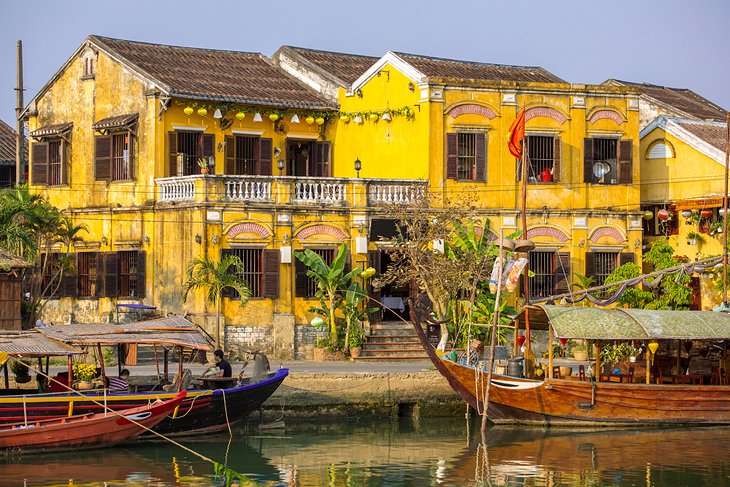
Beautiful Hoi An is the most atmospheric city in Vietnam, with bags of surviving historic architecture.
The old town quarter is a joy to explore, packed to the brim with well-preserved merchant houses that hark back to Hoi An's trading center heyday of the 15th century, when the town was a major meeting point for Japanese and Chinese merchants who flocked here for the local silks.
Plenty of the old merchant houses have been opened to the public, so you can get a taste of these times. The best is 17th-century Tan Ky House, with fascinating architectural and decorative elements.
Hoi An's major symbol is the delightful Japanese Bridge at the western end of Tran Phu Street, while nearby, the Assembly Hall of the Fujian Chinese Congregation is the old town's most highly decorated temple.
There are numerous small pagodas and museums dotted about town, but Hoi An's true charm is found in simply rambling the old town streets admiring the well-preserved facades.
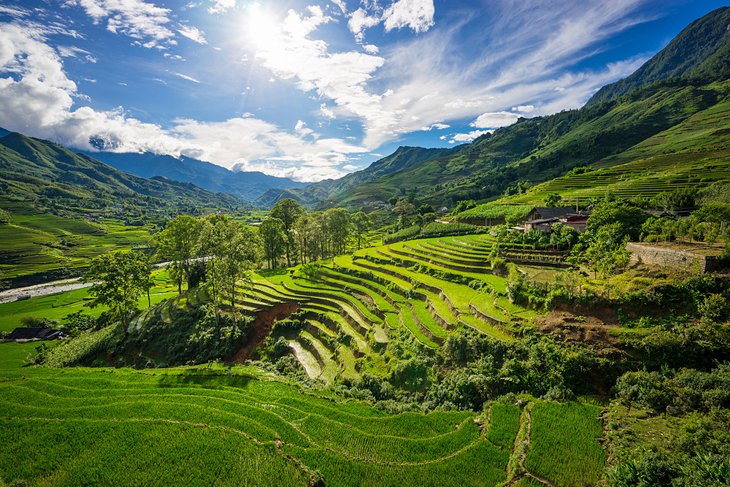
The verdant rice field countryside surrounding Sapa, bordered by the jagged peaks of the Hoang Lien Mountains (often still known by their French colonial era name of the Tonkinese Alps), are home to Vietnam's most beautiful rural vistas.
The deep valleys here are home to a diverse mix of the country's ethnic minorities, including the Hmong, Giay, and Red Dzao people, while the rippling hills are terraced with rice fields and overlooked by the country's tallest peak, Fansipan Mountain.
This is the top trekking destination in Vietnam with oodles of options to trek or day hike between tiny villages and experience the staggering mountain views.
Sapa itself is the main base here - an old hill station and now a bustling and forever growing tourist center that is a stark contrast to the sumptuous tranquil countryside right on its doorstep.
Author's Tip: Keen trekkers looking for more of northern Vietnam's lush mountain vistas may want to skip the busy Sapa scene completely and nudge further 95 kilometers northwest to Bac Ha , where the terraced hill views on hikes between hill villages are just as beautiful. Bac Ha's Sunday market is also a very popular day trip from Sapa.
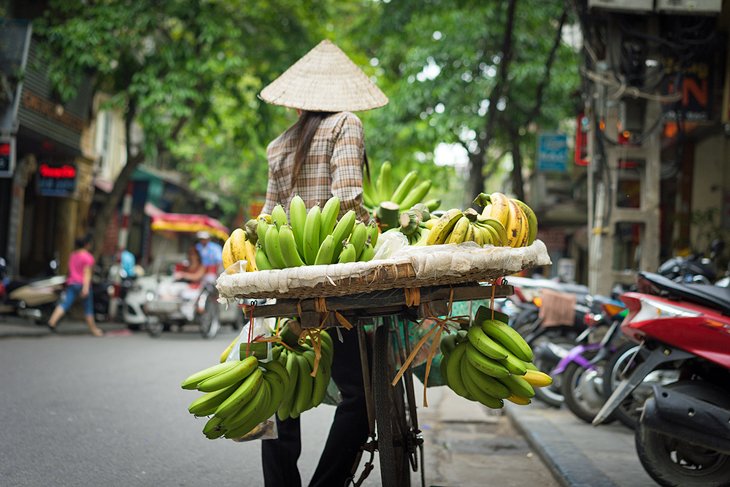
Vietnam's capital is the frenetic heartbeat of the nation and a place that befuddles travelers as much as it charms them.
The motorbike frenzy, pollution, and constant clamor of street vendors can get too much for some travelers, but if you want to dive into Vietnamese city life, Hanoi is the place to do it.
The old town quarter has plenty of dilapidated charm on offer, while history fans should make a beeline here simply to see the bundle of excellent museums.
The Vietnam Museum of Ethnology and Vietnam Fine Art Museum are both brilliant introductions to the diverse artistry of the country, while the Ho Chi Minh Mausoleum is an important tribute to the founder of modern Vietnam.
Author's Tip: It's well worth adding extra time into your itinerary to use Hanoi as a base for exploring the many sights within day tripping distance. In particular, the Tay Phuong and Thay Pagodas (30 kilometers west from the central city), Co Loa Citadel (24 kilometers northeast), and the Huong Pagoda (also known as the Perfume Pagoda; 60 kilometers southwest).
- Read More: Top-Rated Tourist Attractions in Hanoi
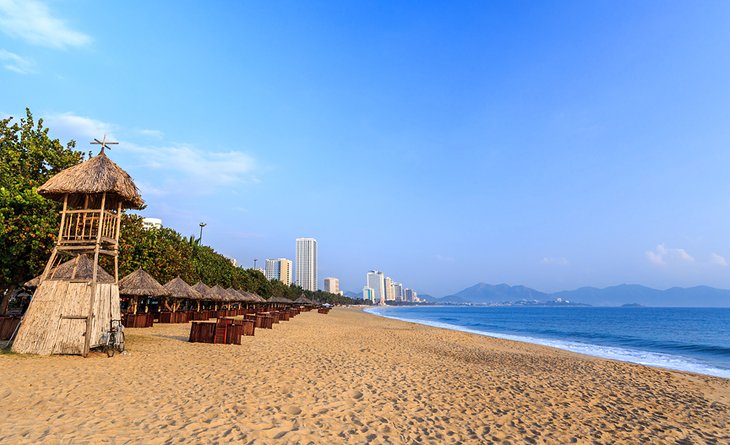
For sandy fun in Vietnam, Nha Trang is king. The well-maintained beach trundles for six kilometers along the shoreline of central Nha Trang city and during summer is jam-packed with local families on vacation, as well as foreign visitors.
There is excellent swimming here with designated swimming areas and manicured lounging areas that make this a great option for relaxing days soaking up the sun and sand.
If you do get bored of sunbathing, the ancient Po Nagar Cham Towers are just to the north across the Xom Bong Bridge and have been used as a place of worship here since at least the 7th century (with some historians saying the site itself has been a place of active worship since much earlier).
There is also an excellent museum dedicated to the work of Alexandre Yersin who discovered the cause of the bubonic plague and founded Nha Trang's Pasteur Institute (which still carries out vaccination programs in Vietnam today).
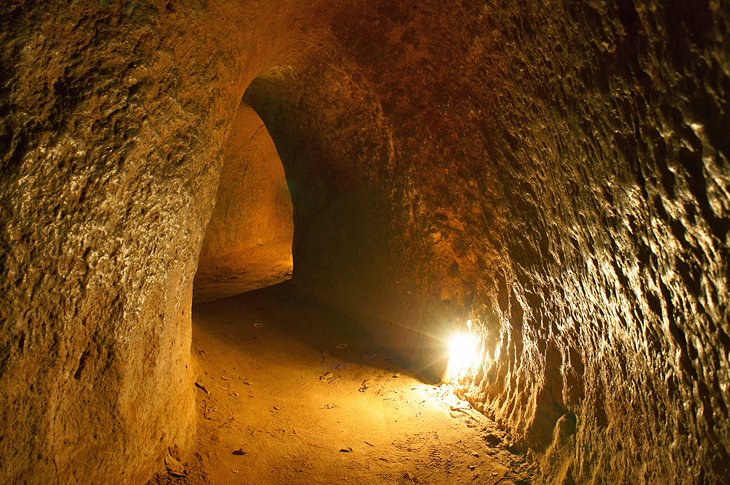
An absolutely fascinating experience for all travelers, not just those interested in Vietnam's modern military history, the Cu Chi Tunnels are an extensive tunnel network that during the war, stretched for more than 250 kilometers, allowing VC troops to operate and communicate in the area surrounding Ho Chi Minh City.
Two short sections of the network can be visited with a guide who'll take you down into the narrow unlit confines, which definitely are not for claustrophobia sufferers.
You will literally be crawling on your hands and knees and some points. You can access the tunnels at either Ben Dinh village (the more popular choice) or Ben Duoc village.
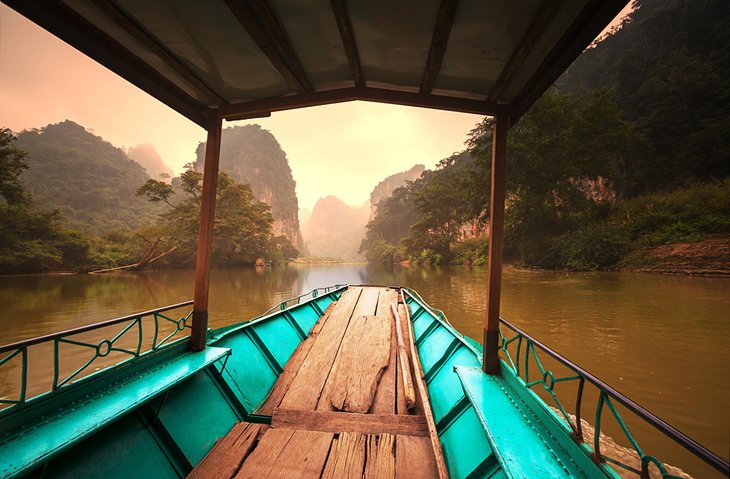
Tranquil Ba Be National Park is absolutely stunning with the three interlinked Ba Be Lakes at its heart, rimmed by jagged karst peaks and thickly forested slopes.
Most visitors come here to take peaceful boat trips or kayak on the lake and explore the caves full of stalactites and stalagmites in the vicinity, but for the more active, there's also excellent hiking and trekking in the hills here between ethnic minority villages.
This is one of the most peaceful spots in Vietnam, and travelers who spend the night here sleep in traditional stilt-house homestay accommodation along the lakeshore, allowing an experience of simple rural life.
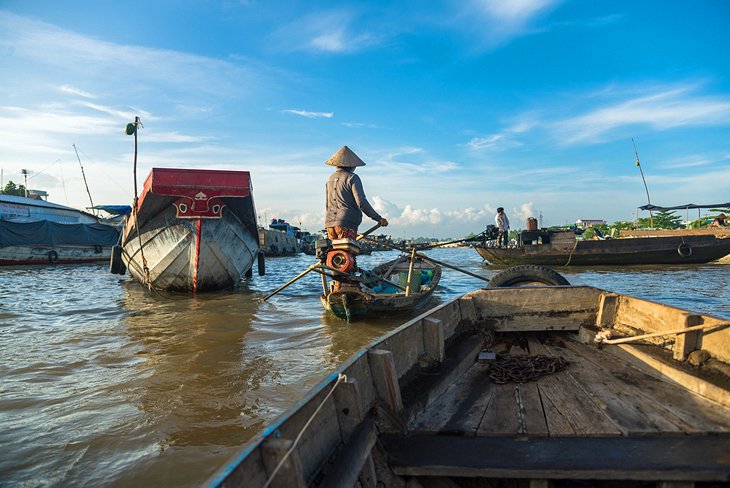
The far south of Vietnam is where the mighty Mekong River finally finds its way to the sea in a maze of waterways that crisscross the floodplain.
Incredibly lush, with paddy field vistas and mangroves, and full of local life, with chaotic floating markets to explore by boat, the delta is one of the most interesting regions for travelers to discover.
Can Tho is the most popular town to use as a base, as it's close to the floating markets of Phong Dien and Cai Rang, while boat trips from Ca Mau allow you to explore the U Minh Mangrove Forest and Cau Mau Nature Reserve.
This area of Vietnam is one of the best to visit for keen bird watchers and nature lovers , as it is home to both Tra Su Bird Sanctuary Forest and Bac Lieu Bird Sanctuary.
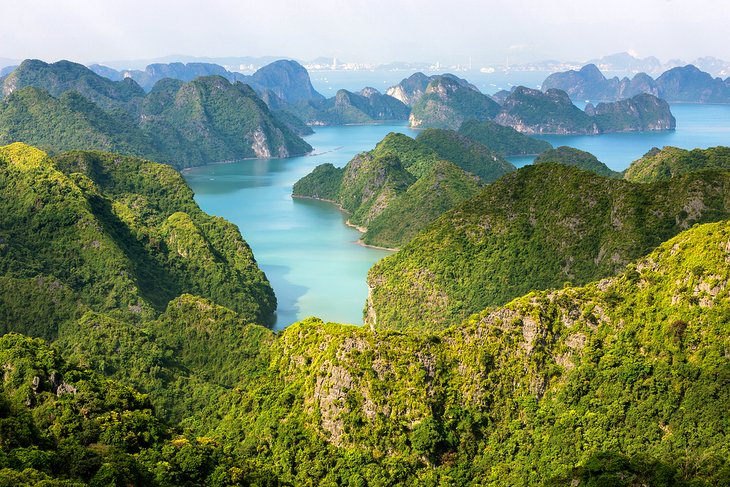
One of Vietnam's major centers for activities and adventure travel attractions, Cat Ba Island sits on the western edge of Halong Bay.
This is the best place to visit if you want to organize cruises and kayaking trips in Lan Ha Bay, which lies off Cat Ba's southern coast. Lan Ha Bay is a less visited seascape of karst islets and outcrops that makes for a quieter alternative to Halong Bay.
Off the water, much of Cat Ba's dense jungle interior is part of Cat Ba National Park, where hikers can spot plentiful birdlife, as well as animals such as macaques.
For many visitors, though, Cat Ba is all about climbing opportunities. Climbing excursions here utilize both the island's limestone cliffs and Lan Ha Bay's outcrops, providing experiences to suit both complete climbing beginners and experienced climbers.
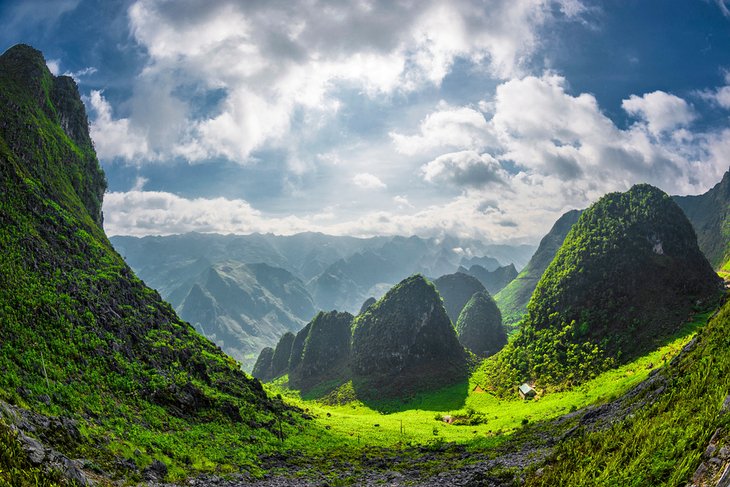
The emerald-green karst mountain landscapes along Ha Giang's mountain passes make this far-north province prime territory for scenic road-tripping by either motorbike or car.
In particular, the twisty Quan Ba Pass between Ha Giang town and Tam Son provides panoramic vistas of the karst plateau and its jagged limestone outcrops, while the zigzagging Mai Pi Leng Pass between Dong Van and Meo Vac offers dizzying views of the lush mountain scenery and narrow valleys below.
Time your visit to coincide with one of the area's market days, when traders from the surrounding mountain villages pile into town. Dong Van's Sunday market is one of the best.
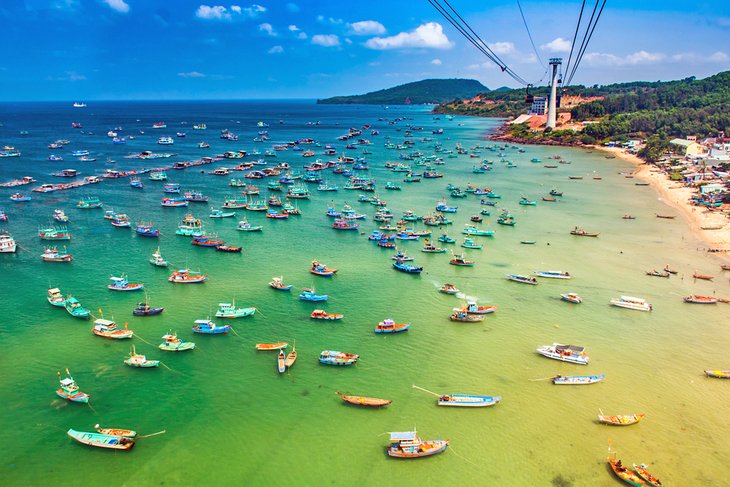
Sitting 45 kilometers off the southern coast of the country, in the Gulf of Thailand, Phu Quoc is a densely forested island, speckled by sweeps of white-sand beach that attract plenty of sunseekers during the winter dry season.
Dry season (November to May) is also when the island's underwater and on-the-water tourism attractions spring into action, with plenty of dive sites in the waters just offshore, as well as opportunities for snorkeling, kayaking, and boat trips.
Many of the main boat excursions head to the An Thoi Islands, just to the south of Phu Quoc, which is home to the best snorkeling in the area.
Off the water, the Phu Quoc cable-car provides bird's-eye views for eight kilometers, soaring over the seascape and islands, all the way from Phu Quoc to the island of Hon Thom in the An Thoi Islands.
Phu Quac is accessed by plane or regular ferries from the mainland towns of Rach Gia and Ha Tien. As Ha Tien lies very close to the southern border crossing with Cambodia, the island is a popular first (or last) stop-off in Vietnam for overland travelers.
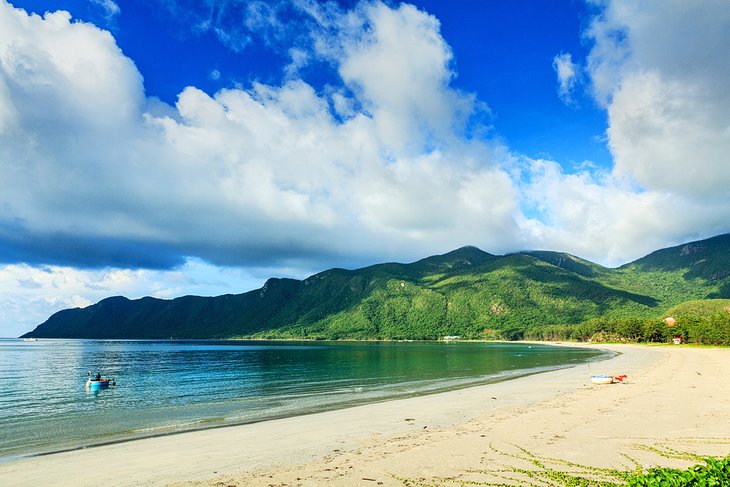
This remote island group lies around 160 kilometers offshore in the South China Sea and is renowned among divers as one of the best places to visit in the country, both for the variety of sea life and for the coral reefs.
Much of the Con Dao Islands, and the surrounding water, is a protected wilderness area, with the island shores home to nesting turtles, and dense forest still covering the island interiors.
The main island, and prime base for visitors with all the accommodation and things to do, is Con Son Island, which has sweeps of sand strung out across its coast that attract beachgoers looking for a relaxed sun-soaked getaway, as well as divers.
Even if you're here mostly for the beach, make sure to explore the historic sites of Con Son Town (the island's only settlement) including Phu Hai Prison, Bao Tang Con Dao Museum, and the prison known as the Tiger Cages, which document the dark history of this isolated island group.
Con Son's remote position led to the island being used to incarcerate political prisoners during the era Vietnam was occupied by French colonial forces, and later by both the South Vietnamese government and the occupying American forces.
Preserved sites including Phu Hai Prison and the prison cages used by the US forces, known as the Tiger Cages, along with Con Son Town's Bao Tang Con Dao Museum, do an excellent job of documenting this history for visitors.
Access to Con Son Island is either by flight from Ho Chi Minh City or by ferry from the coastal city of Vung Tau.
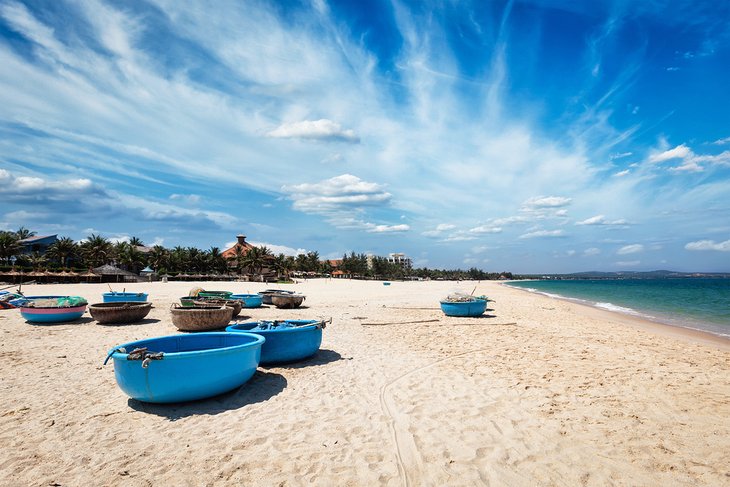
Once a sleepy coastal fishing town, Mui Né has developed into a beautiful beach resort town and a prime destination for windsurfing, sailing, and kitesurfing.
Compared to other beach destinations in Vietnam , however, Mui Né remains relatively unknown - and this means pristine beaches and a quiet retreat for most of the year.
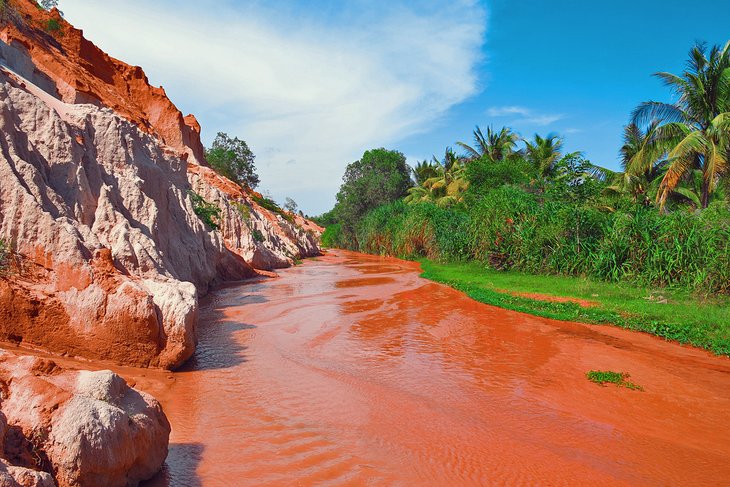
One of Mui Né's most unique attractions is the natural Red Sand Dunes just outside town, where visitors can practice sand-sledding or rent dune buggies for a more adrenaline-charged experience.
Tucked away between nearby fishing villages and towering orange limestone formations, there's the fairy stream, a slow-moving warm stream that almost feels like a walkway because it's so shallow - follow it to the end to reach a waterfall.
For those wishing to explore beyond the coastline, there are also the ruins of the Po Shanu Cham Towers - remnants of the Cham Empire that dominated the area many centuries ago.
Vietnam experiences strong monsoon seasons, where heavy rains hit the cities and the countryside, often causing floods and mudslides. If you're planning to travel around, the best time to visit Vietnam is during the dry season, which lasts from December to February – but there are some exceptions.
The south of Vietnam – where Ho Chi Minh city is located – experiences a more tropical climate, with high temperatures and high humidity year-round. Visiting these areas in the cooler months means less humidity and temperatures in the high 20s rather than the high 30s and 40s, which makes it more comfortable to walk around.
In the north, however, many areas experience an actual winter. Hanoi sees temperatures in the mid- to high teens in December and January – and in the mountains of Sapa in the north, you'll even get to see some snow during these months.
If you're visiting Danang for some beach time or to travel through the ancient town of Hoi An, it's best to arrive between February and May, when water and air temperature are in the 20s – perfect beach weather for enjoying the sand or a dip in the water. The rainy season, and especially the months of September and October, see very heavy rains and often very strong wind storms on the coast, so it's better to stay away from Danang during this time.

More on Vietnam
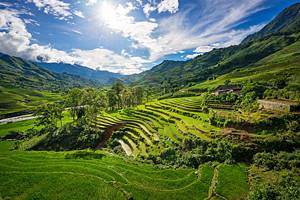
Vietnam Tours & Vacations

Vietnamese food is where it’s at.
Wherever we travel, it’s the flavors we remember best. A crusty bánh mì or streetside pho, seafood cù lao hotpots and (scarily addictive) coffee with condensed milk. Vietnam tours are tasty, plain and simple. We won’t just drop you in Halong Bay and call it a day. Our local leaders will introduce you to rice farmers in Sapa and fishermen on the Mekong Delta. They’ll guide you through the Cu Chi Tunnels, take you to the best beaches and on a street food crawl through Ho Chi Minh City. Our stomach’s rumbling already...
Our Vietnam trips
Let's create an exclusive trip for your group.
Vietnam tour reviews
Filter by rating
Vietnam Express Southbound
Essential Vietnam
Articles of Vietnam
Three kinds of wow: Twitching in Vietnam
Time and place: Hanoi Old Quarter Market, 5 pm
Creative Cities: Hanoi
Travel globally and think locally with Intrepid leader San Tao
Slow drip: Vietnamese coffee culture
Follow the leader: Tu Vu will never stop learning about Vietnam
Saying yes with Intrepid leader, Huyen Nguyen
Vun Art: Changing lives in Vietnam one scrap at a time
We also travel to
Vietnam at a glance, capital city.
Approximately 98 million
(GMT+07:00) Bangkok, Hanoi, Jakarta
CALLING CODE
Electricity.
Type A (North American/Japanese 2-pin) Type C (European 2-pin)
Learn more about Vietnam
History and government, early history.
Vietnam has been inhabited since prehistoric times. Archaeological finds suggest that structured societies existed as early as the 1st millennium BC. Early society was mostly feudal and agriculture-based, with various dynasties overseeing different parts of Vietnam until the Chinese invasion of 111 BC, which saw the societies of Vietnam and China intertwined. Various Chinese dynasties dominated the area for hundreds of years, although revolts finally led to Vietnam gaining self-autonomy in 905. By 938, this period of Chinese imperial domination came to a close and Vietnam entered into an age of independence.
Recent history
During the 19th century, Vietnam came under the influence of French colonizers, who assumed control of Vietnam after the Sino-French War of 1884 and 1885. French Indochina was formed in 1887, and included parts of Vietnam, Cambodia and, later on, Laos. Although the French managed to suppress internal movements towards independence for many years, their control was finally relinquished in 1954 when Vietnamese forces overcame the French during the first Indochina War. Following this war, Vietnam was divided, with separate forces ruling the north (led by Ho Chi Minh) and the south (led by Ngo Dinh Diem, with support from the United States).
The second Indochina War created wide-scale devastation and turmoil for the people of Vietnam, leading to mass migration to other parts of the world as asylum seekers tried to escape the conflict. More recently, Vietnam has benefited from the free market economy set up in 1986. Vietnam's economy continues to expand, with agriculture and industry providing the backbone and the tourism sector also contributing. Although many Vietnamese people live below the poverty line, there have been widespread improvements in literacy and health, which hopefully will continue to improve.
Geography and environment
Occupying a long, thin part of the Indochinese peninsula, Vietnam shares borders with China , Laos and Cambodia . Much of Vietnam's terrain is mountainous, particularly the north and central highland regions. Although people still choose to live in the densely forested highland regions, most of Vietnam's population is concentrated in the cities of the low-lying areas, where infrastructure is more easily built and the land is fertile. One of the 12 great rivers of the world, the Mekong, runs through Vietnam and has been responsible for wide-scale flooding. A system of canals and levees has been quite successful in redistributing the water during monsoons, and has helped to alleviate flooding in the Mekong Delta and surrounding areas.
Vietnam has a nice mix of interesting markets and small shops, with handicrafts, art and clothing among the best picks.
It's a good idea to check with your local customs officials to ensure that you are able to bring certain items back into your home country. Australia and New Zealand generally have strict quarantine laws.
Things to buy in Vietnam
1. Tailored clothing
Hoi An is one of the best places in the world to get tailor-made clothing at a great price. Find a tailor, choose your fabric, get measured and return later to collect your custom-made fashion.
2. Hilltribe handicrafts
Some of Vietnam's hilltribe people make excellent woven bags, clothing and jewelry which make meaningful souvenirs for friends back home.
As one of the world's largest coffee exporters, Vietnamese coffee is among the world's best. If you’re a coffee fan, why not take a little taste of Vietnam home with you.
4. Lacquerware
The time-consuming, intensive process of creating Vietnamese lacquer art results in a beautiful, smooth and polished finish that adorns everything from bowls to paintings and jewelry boxes. While not the cheapest of souvenirs, authentic lacquer art is worth spending a bit more on.
Culture and customs
Vietnam's ancient culture can be traced back centuries and over the years has been influenced in different ways by the Chinese, Khmer, French and American cultures. For most Vietnamese people, connection to family and community is paramount - whether they are from rural villages or living in fast-paced cities.
Most festivals and holidays are spent with the extended family - participating in rituals, feasting on special foods, giving symbolic gifts and paying respects to ancestors. Most Vietnamese people practice a form of religion that is an interesting mix of Buddhism, Confucianism and Taoism, although there are also a large number of practising Catholics living in Vietnam.
Having endured the hardship that the Vietnam War brought in the 1960s and 1970s, most Vietnamese people are keen to get on with life, living with a sense of optimism and humility.
Similar destinations
Thinking about a trip to Vietnam but still browsing other destinations? Or, maybe you've already been and are looking for somewhere similar?
Cambodia vs Vietnam
Thailand vs Vietnam
Top 10 iconic landscapes of Vietnam
1. hạlong bay.
There's nothing quite like Halong Bay first thing in the morning. As the mists clear, hundreds of huge karst towers appear, looming high above the boat. In the soft morning light, it's like waking up in a watercolor painting of a mythical land. Float along the waters of Halong Bay on our 2 day Junk Cruise.
Jam-packed with imperial sites, Hue is one for the history buffs. Explore the Citadel with its ruined Forbidden Purple City before embracing your inner emperor and taking a dragon boat cruise down the Perfume River. Walk the historic streets of Hue on our 11 day Explore Vietnam tour.
3. Ho Chi Minh City
Still known as Saigon to most, HCMC is a city on the go. It's fast-paced, exciting and full of amazing sites. Temples and markets collide with churches and skyscrapers for a heady mix of traditional, colonial and modern. Explore Ho Chi Minh City's jam-packed streets on our 10 day Vietnam Express Southbound tour.
Motorbikes piled high with people, produce and even animals zip through the streets. It's crazy and haphazard and somehow it works. The best way to take it all in is from a rooftop cafe. Order an extra strong coffee and watch the chaos unfold below. Get lost in the beautiful Hanoi on our 10 day Vietnam Express Northbound tour.
This shoppers' paradise is home to more boot makers, tailors and handicrafts than you could visit in a lifetime. While you wait for your suit to be made, hire a bicycle and explore the Old Town - the streets are blissfully car-free. Shop 'til you drop on our 8 day Premium Vietnam tour or on our 8 day Treasures of vietnam tour.
Head to the hills and see the colorful villages of Vietnam's minority groups - the Zay, and the Blue and Black H'mong. The area is remote so the best way to experience it is on an overnight trek, spending the night as a guest of a local family. Escape to the hills on our 5 day Sapa Adventure or on our 11 day Vietnam: Hike, Bike & Kayak tour.
7. Mekong Delta
This massive area of floating markets, emerald rice paddies and lush islands is home to some of the friendliest people on earth. Take a boat trip to one of the sleepy islands to get a front-row view of life on the Delta, and meet the people who call it home. Adventure through the Mekong Delta on our 2 day Farmstay .
Further reading
Vietnam travel faqs, do i need a covid-19 vaccine to join an intrepid trip.
Trips from 1 January 2023 onwards
From 1 January 2023, Intrepid will no longer require travelers to provide proof of vaccination against COVID-19 (excluding all Polar trips and select adventure cruises).
However, we continue to strongly recommend that all Intrepid travelers and leaders get vaccinated to protect themselves and others.
Specific proof of testing or vaccination may still be required by your destination or airline. Please ensure you check travel and entry requirements carefully.
Do I need a visa to travel to Vietnam?
Most nationalities are required to obtain a tourist visa in advance to travel to Vietnam. When obtaining your visa you should allow 3 weeks for processing with your nearest embassy or consulate. The cost is approximately US$60 to US$100. Please check with your embassy or consulate for further requirements.
Some nationalities are exempt from visas for a stay of a maximum of 15 days, including British, German, French, Spanish and Italian citizens traveling to Vietnam (for all purposes). This exemption is based upon meeting all conditions prescribed by Vietnamese laws. If you are planning on staying in Vietnam for longer than 15 days you will need to obtain a visa extension in advance (please contact your relevant Consulate or Embassy). Please also check the requirements if you plan to re-enter Vietnam.
An e-Visa is available for some nationalities including passport holders from Australia, France, Ireland, Italy, Canada and the United States of America, valid for a single entry of a maximum of 30-day stay in Vietnam. Learn more about the eVisa on the immigration website .
E-Visas take up to 3 days to be processed. You will need a clear electronic copy of your passport data page and passport photo, and to make a non-refundable payment as outlined on the immigration website. Important information Keep the customs and immigration form you receive on arrival, as you need it to complete exit formalities on departure.
If you're traveling with us and your visa application asks for a point of contact, please write: Intrepid Vietnam 5th floor HiPT Building, 152 Thuy Khue Street, Thuy Khue, Tay Ho, Hanoi, Ph +84 4 3715 0996.
Most nationalities do not require a letter of invitation for Vietnam but if you do need one, please contact your sales agent for more information.
The page is for general information only and may be subject to change. It is your responsibility to obtain the relevant visa and travel information required for entry, departure and travel to each country or region you visit on your trip. You should confirm these with the relevant embassies and/or consulates.
Last updated: 31 July 2023
Is tipping customary in Vietnam?
Tipping isn't mandatory or customary in Vietnam, but a tip of spare change or another small amount would be appreciated by restaurants, drivers and other service workers, especially if the service has been particularly good .
What is the internet access like in Vietnam?
Internet access is widely available in tourist areas and big cities, which have many internet cafes. Internet access is less frequent in rural and remote areas.
Can I use my mobile phone while in Vietnam?
You'll be able to use your mobile phone in most urban areas of Vietnam, although remote and mountainous areas may not have network coverage. Ensure you have global roaming activated with your mobile carrier before you leave home if you wish to use your mobile while in Vietnam.
What are the toilets like in Vietnam?
You'll have to adjust to different standards of hygiene and sanitation while in Vietnam. The standard toilet is of the squat variety and this may take some getting used to, although western-style toilets can be found in large hotels and some tourist areas.
What will it cost for a…?
The currency in Vietnam is the Vietnamese Dong. Here's what you can expect to pay for a:
- Quick city bus ride = 5,000 VND-9,000VND
- Local-style coffee at a cafe = 20,000-30,000 VND
- Bowl of pho from street stall = 20,000-70,000 VND
- Dinner at a simple restaurant = 100,000-250,000 VND
- Dinner at an up-market restaurant = 300,000+ VND
Can I drink the tap water in Vietnam?
It is generally not safe to drink the tap water in Vietnam. For environmental reasons, try to avoid buying bottled water. Fill a reusable water bottle or canteen with filtered water instead. Ask your leader where filtered water can be found; some hotels we stay in may have drinking water available. It's also advisable to avoid ice in drinks and peel fruit and vegetables before eating.
Are credit cards accepted widely in Vietnam?
Major credit cards are widely accepted by large shops, hotels and restaurants in Vietnam. However, they may not be accepted by smaller vendors such as small family restaurants, market stalls or in remote towns and rural areas. Make sure you carry enough cash for purchases, since credit cards aren't always an option everywhere in Vietnam.
What is ATM access like in Vietnam?
ATMs are found widely throughout Vietnam, so withdrawing cash shouldn't be problematic in most areas. Some smaller villages and rural areas may not have ATM access, so prepare for this before venturing too far from a city or major town.
Do I need to purchase travel insurance before traveling?
Absolutely. All passengers traveling with Intrepid are required to purchase travel insurance before the start of their trip. Your travel insurance details will be recorded by your leader on the first day of the trip. Due to the varying nature, availability and cost of health care around the world, travel insurance is very much an essential and necessary part of every journey.
For more information on insurance, please go to: Travel Insurance
What public holidays are celebrated in Vietnam?
Public holidays celebrated in Vietnam include:
- 1 Jan: New Year's Day
- 21 Jan: Tết (Vietnamese New Year)
- 21 Apr: Gio to Hung Vuong Day
- 30 Apr: Reunification Day
- 1 May: Labour Day
- 2 Sep: National Day
Please note, Vietnam public holidays may vary.
What festivals are celebrated in Vietnam?
The major festivals celebrated in Vietnam are Tết (Vietnamese Lunar New Year, February), Reunification Day (30 April), National Day (2 September) and Tet Trung Thu (Mid-Autumn Festival, late September).
When is the best time to visit Vietnam?
The most popular times to visit Vietnam are spring (February-April) and fall (September-December) but because of the huge variations in latitude and altitude, there is no one best time to go to Vietnam. It’s a good destination all year.
What's the weather like in Vietnam?
Vietnam has an incredibly diverse tropical climate, and temperatures vary from 39°F in Sapa in winter to humid 97°F days in Saigon in the middle of the dry season. The monsoons bring heavy rain to the south, and a cooler winter to the north depending on when you plan to tour Vietnam.
What are the best things to eat in Vietnam?
Traditional Vietnamese food is typified by its use of fresh herbs and vegetables and its wide regional variance. Vietnamese food is influenced by its Chinese and Khmer neighbors and echoes French colonization. Some of the best things to eat in Vietnam are noodle soups (pho, bun mam, bun bo hue), bread rolls (banh mi), savory pancakes (banh xeo) and fresh tropical fruits.
What are the best things to drink in Vietnam?
Our list of best things to drink in Vietnam includes ice coffee, fruit smoothies, fresh coconut juice straight from a freshly cracked green coconut, sugar cane juice, local beers and artisan rice wine.
What to wear in Vietnam?
While the tropical climate lends itself to layered, breathable clothing all year round, if you are taking a tour in the North, cold winters mean you might need to bring a fleece or jacket.
What kinds of transport will I be using in Vietnam?
Intrepid believes half the fun of experiencing a new country is getting there, and getting around once there! Where possible, Intrepid uses local transport options and traditional modes of transport - which usually carry less of an environmental impact, support small local operators and are heaps more fun. Depending on which trip you're on while in Vietnam, you may find yourself traveling by:
- Overnight sleeper train
Traveling aboard an overnight sleeper train is a fun way to journey through Vietnam. Interact with other passengers or sit by a window and watch the world go by.
Curious? Click here read more about what to expect on an overnight train.
Take time to wave to locals as you cycle at a leisurely pace past rice paddies and through simple villages in rural Vietnam
These 3 wheeled vehicles are a great way to zip around the sights.
What kinds of accommodation will I have in Vietnam?
Traveling with Intrepid is a little bit different. We endeavor to provide travelers with an authentic experience to remember, so we try to keep accommodation as unique and traditional as possible. When traveling with us in Vietnam you may find yourself staying in a:
- Overnight boat
Sleeping aboard a boat on Halong Bay is a quintessential Vietnamese experience to be savored. Slip into relaxation mode as you take in stunning views of the surrounding limestone karst scenery.
Get acquainted with the Vietnamese way of life while on a memorable home stay. Be exposed to new languages, cuisine and customs while making friends with your hosts and neighbors.
Is Vietnam a LGBTQIA+ friendly destination?
The LGBQTIA+ community is gradually gaining recognition in Vietnam, with gay pride parades becoming a regular occurrence and a lift on same-sex marriage bans in 2015. With that said, Vietnam is still a conservative culture and many still hide their sexuality from their families. Ho Chi Minh City and Hanoi have some gay-friendly bars and events. It's generally recommended that both gay and straight couples resist showing public displays of affection.
For more detailed and up-to-date advice, we recommend visiting Equaldex or ILGA before you travel.
Does my trip to Vietnam support The Intrepid Foundation?
Yes, all Intrepid trips support the Intrepid Foundation. In fact, we make a donation on behalf of every traveler. Trips to Vietnam directly support our foundation partners, Blue Dragon Children's Foundation, Vun Art and WildAct.
Intrepid will double the impact by dollar-matching all post-trip donations made to The Intrepid Foundation.
Blue Dragon Children's Foundation Blue Dragon Children's Foundation is helping disadvantaged youth in Vietnam, fighting the causes of human trafficking and (where possible) reuniting homeless or trafficked children with their families. Donations from our trips help their team of social workers, psychologists, teachers, and lawyers to offer individualized support to every child rescued.
Find out more or make a donation
Vun Art Vun Art empowers people with disabilities in Vietnam through vocational training and employment opportunities. They teach traditional folk painting using recycled materials which provides job opportunities, helps to preserve the ancient artform and cares for the local environment all at once. Donations from our trips support Vun Art's capacity-building programs for people with disabilities, including trainees' allowance, transportation, and equipment.
WildAct protects migratory birds of Vietnam and reduces illegal hunting by educating local communities about the importance of conservation. Donations from our trips help WildAct run educational programs to stop the illegal hunting of threatened migratory birds through knowledge-sharing in local communities.
Is Vietnam accessible for travellers with disabilities?
Intrepid is committed to making travel widely accessible , regardless of ability or disability. That’s why we do our best to help as many people see the world as possible, regardless of any physical or mental limitations they might have. We’re always happy to talk to travelers with disabilities and see if we can help guide them towards the most suitable itinerary for their needs and where possible, make reasonable adjustments to our itineraries.
Despite having a high population of people with disabilities, accessible infrastructure and facilities are still limited in Vietnam. Chaotic traffic and pavements blocked by parked motorbikes and street stalls, uneven footpaths and high curbs add to the challenges of getting around for travelers with mobility or vision disabilities. Most entrances to hotels, shops, restaurants and tourist sites will have steps and many doorways will not be able to accommodate wheelchairs wider than 60cm. Some sights and destinations will not be fully accessible (ie. Ha Long Bay boats, Cu Chi Tunnels) but other places such as Hoi An are flat and much more wheelchair-friendly. There are likely to be situations where travelers with disabilities may need to rely on local people to help. Taxis are readily available and an affordable way to get around for travelers who are not confident in exploring independently on foot.
How do I stay safe and healthy while traveling?
From Australia?
Go to: Smart Traveller
From Canada?
Go to: Canada Travel Information
From the UK?
Go to: UK Foreign Travel Advice
From New Zealand?
Go to: Safe Travel
From the US?
Go to: US Department of State
The World Health Organisation also provides useful health information.
What is it like traveling on a small group tour?
Whether you’re a seasoned traveler or you’re about to embark on your first trip, traveling can be as intimidating as it is exciting. That's the beauty of a small group tour. From handling the logistics and organizing amazing cultural activities to local leaders who know each destination like the back of their hand (like which street has the best markets and where to get the most authentic food), traveling on a small group tour with Intrepid will give you unforgettable travel experiences without the hassle that comes with exploring a new place. Plus, you'll have ready-made friends to share the journey with. All you have to do is turn up with a healthy sense of adventure and we’ll take care of the rest.
Change location
- UK / International
- Call toll-free from 10am EDT
- 617-223-4521 617-223-4120 or
- REQUEST A QUOTE

Mekong Home
Mekong Delta, Vietnam
- Alternatives
Mekong Home is a small family run lodge in the heart of 'coconut country', Ben Tre province. Comprising ten air-conditioned bungalows formed around a tropical water garden and coconut trees, the property is homely and charming. Access to the lodge is via a village pathway, allowing it to blend seamlessly into the surrounding hamlet.
The open kitchen and restaurant are the focal point of the property and guests are greeted here with fresh coconut drinks straight from the garden. Charming wooden furniture contrast the grey, concrete floors and Mekong handicraft items are dotted throughout. Cycling and boat excursions are available to experience while staying at the lodge and there is also a sunset bar from which to enjoy river life and Mekong skies.
An ideal base to escape the city and relax in peaceful surrounds. Mekong Home also boasts several activities designed to immerse visitors into rural Vietnamese life.
OUR RATING: Simple

Start planning your tailor-made trip by contacting one of our Vietnam specialists
- 617-223-4521 617-223-4120
- Make an inquiry
Photos of Mekong Home

Rooms are large and airy with traditionally styled high ceilings. Each comes with a small seating area and modern en suite.
Perched riverside on the banks of a Mekong tributary, the lodge offers a captive glimpse into rural life in Vietnam.
Food and drink
The small restaurant serves a selection of locally inspired dishes using fresh ingredients sourced nearby.
Tour ideas in Mekong Delta
Our itineraries are there to spark ideas for how you could include a stay at Mekong Home as part of your trip. Treat them simply as suggestions, because every aspect of the trip we create for you will be yours to define.
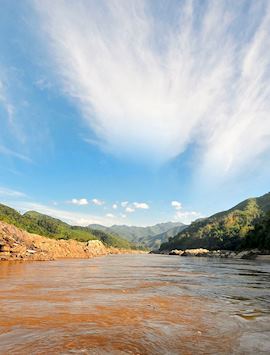
Following the Mekong: Laos, Cambodia & Vietnam
20 days from $10,615pp

Vietnam's Mekong Delta
10 days from $4,140pp
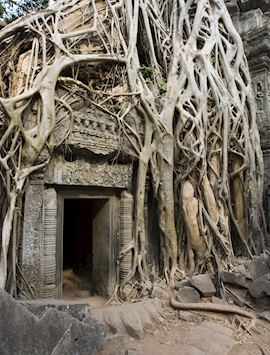
Exploring the Mekong & Angkor Wat
12 days from $5,425pp

Family adventure to Vietnam
16 days from $8,180pp

Grand tour of Indochina: Laos, Vietnam & Cambodia
22 days from $22,310pp

Classic Vietnam tour
17 days from $7,375pp
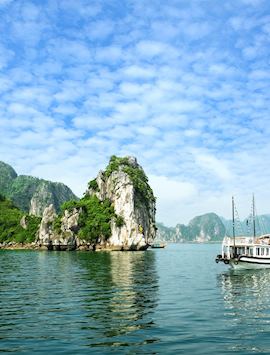
Luxury tour of Vietnam
14 days from $12,995pp

Highlights of Vietnam
14 days from $6,980pp
Location & places nearby
Places & hotels on the map, alternative places to stay nearby.
Where possible, we like to offer a range of accommodation for each stop of your trip, chosen by our specialists as some of their favorite places to stay. To help you make the right choice, we give each property a rating based on its facilities and service, but we also look for hotels with distinct character or a location that can’t be bettered.

Azerai Can Tho
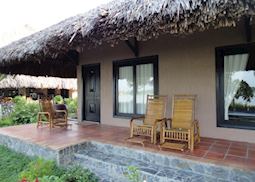
Mekong Lodge

Ut Trinh Homestay
Experiences while staying here.
The following activities are designed to give you the most authentic experiences of the area where you’re staying. We work with local guides, who use their knowledge and often a resident’s eye to show you the main sights and more out-of-the-way attractions. Our specialists can also suggest outdoor pursuits and activities, such as cooking classes, that will introduce you to the traditions of the area’s inhabitants.
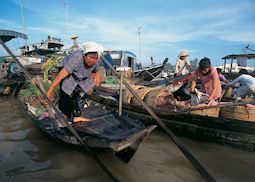
Cai Rang Floating Market
Board the Victoria hotel’s 'junk' for a luxurious breakfast cruising down the Mekong to the Cai Rang floating market where a mass of boats converge to trade.
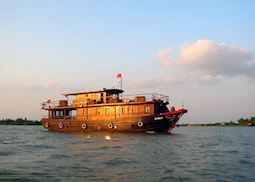
Cruising the Mekong
A beautifully crafted wooden boat, the R/V Bassac offers comfortable twin cabins with en suite bathrooms, a sun deck and a superb restaurant with bar.
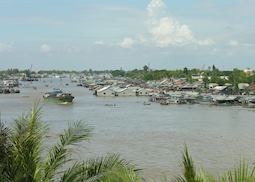
RV Mekong Cruise Boat
This fine replica of an original 1920s river steamer has teak-lined twin cabins, all with air-conditioning, en suite shower and bathroom.
Mekong Delta and nearby places
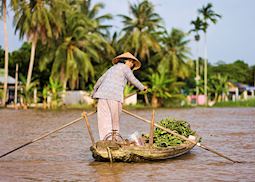
Mekong Delta
- Can Tho 43 miles away
- Cai Be 24 miles away
- Chau Doc 92 miles away
- Ho Chi Minh City 43 miles away
- Con Dao Islands 108 miles away
- Phu Quoc 163 miles away
- Cat Tien National Park 104 miles away
- Mui Ne & Phan Thiet 127 miles away
- Dalat 183 miles away
- Central Highlands 203 miles away
The 15 best things you can do in Vietnam in 2024

Feb 29, 2024 • 12 min read
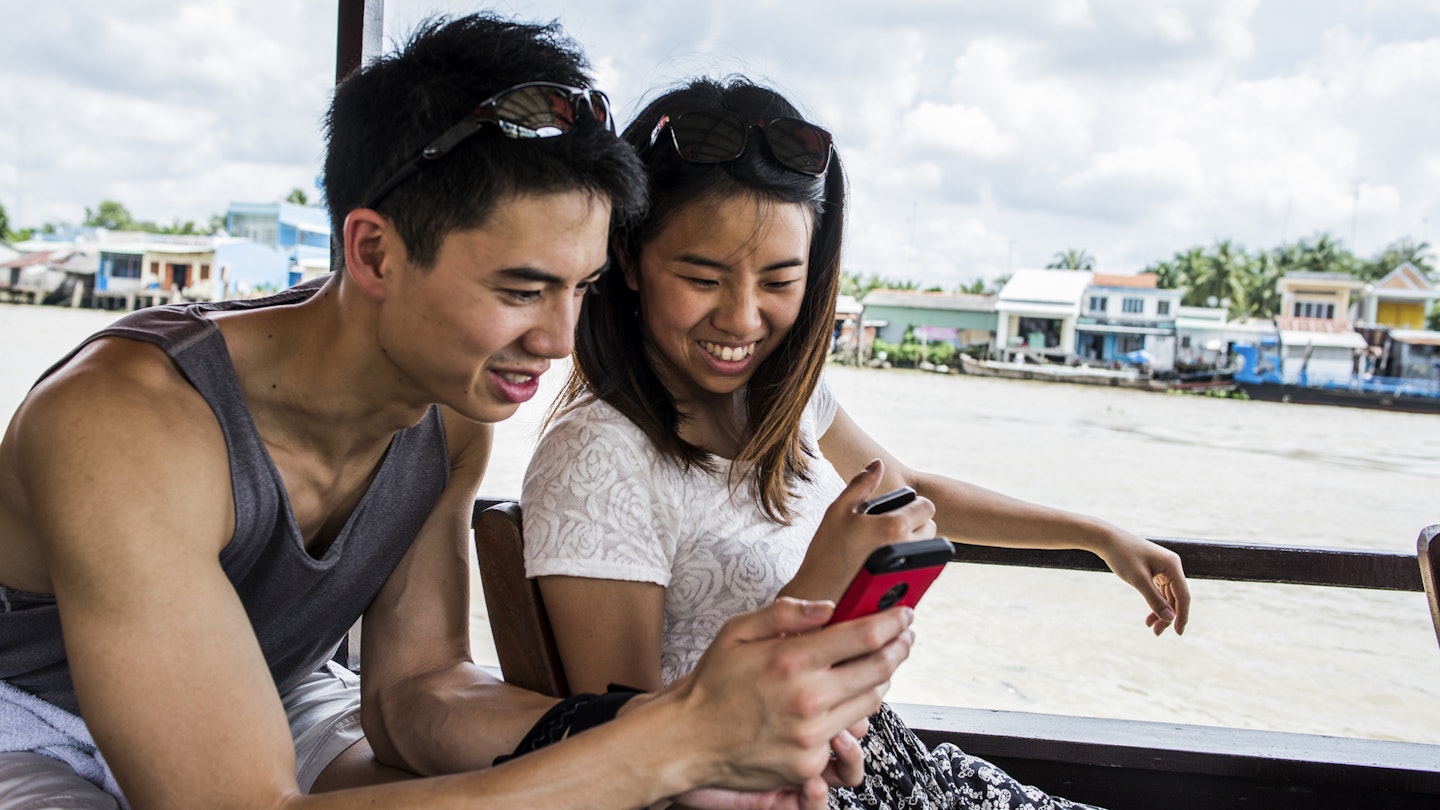
Taking a cruise along the Mekong Delta is an incredible experience not to be missed © Cultura Exclusive / Rosanna U / Getty Images
The siren song of Vietnam has brought many travelers to its shores in search of incredible landscapes, pearl-white beaches , chaotic and vibrant cities, and one of the warmest welcomes in the world.
The tough decision for travelers isn't whether they should visit Vietnam, it's how they choose what to do with so many incredible options. Do you start in Hanoi or Ho Chi Minh City (HCMC)? Do you swap the big city experience for the beaches and seafood suppers of Phu Quoc island? Do you dive headlong into the history of a dozen rival empires, or embrace the dynamic, modern Vietnam that has emerged from the aftermath of conflict?
No matter what you want your vacation to look like, accept that you'll never cover everything in one trip and embrace it as a reason to return. Here are 15 incredible things to do that need to be on your Vietnam to-do list.
1. Embrace past and future Vietnam in historic Hanoi
The vibrant capital of the former North Vietnam – and today the capital of the nation – Hanoi is where old and new Vietnam come together. Traces of the imperial past float like ghosts in a city surging skywards – hawkers drift through the narrow lanes of the Old Quarter selling snacks from traditional yoke baskets, while the surrounding buildings are lit up with advertising displays and strip lights.
Exploring at street level is highly atmospheric and fantastic fun – mix up days visiting wartime and imperial relics with evenings feasting on some of Asia’s finest food and late nights dousing the sticky summer heat with glasses of bia hoi (local draught beer).
Planning tip: As they say, Hanoi rocks, and the best places to rock out like a local are lively live music venues such as the moody Binh Minh Jazz Club and keep-it-loud Hanoi Rock City .
2. Find your own island in the sun in Halong Bay and Bai Tu Long Bay
Okay, we concede that Halong Bay – the atmospheric sprawl of rocky coves and eroded karst islands to the east of Hanoi – is firmly discovered, but that doesn’t mean there isn’t more to discover away from the cruise ship crowds. If a tour on a diesel-powered luxury junk doesn’t appeal, consider hiring a kayak to potter around Lan Ha Bay near Cat Ba Island , where outcrops sculpted by wind and waves emerge from the water like the teeth of sea monsters.
Alternatively, leave the diesel fumes behind in calmer Bai Tu Long Bay to the north, where more jungle-capped islands shelter low-key resorts and languorous beaches.
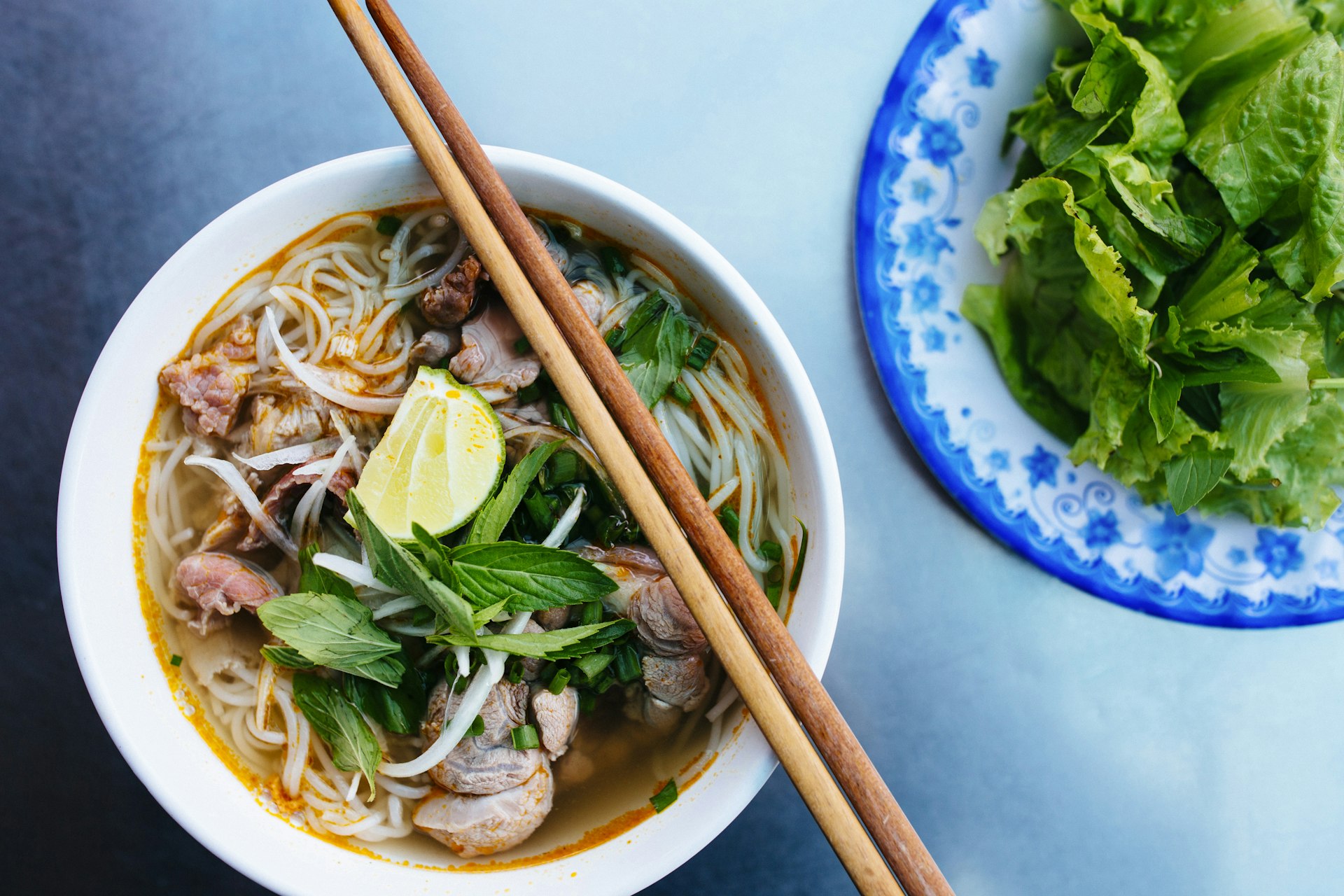
3. Get your fill of imperial cuisine in handsome Hue
Vietnam’s Nguyen Dynasty held court in Hue until 1945, and the city’s damaged but still impressive historic relics feel somehow closer to imperial China than to the rest of Southeast Asia. However, for many travelers, it’s all about the food. More than half of Vietnam's estimated 3000 local dishes are believed to have originated in Hue, from the vermicelli-noodle-based bun bo Hue and crispy banh khoai pancakes topped with shrimp and pork to canapé-like, soft-and-crunchy banh ram it dumplings. The lavish imperial cuisine known as am thuc cung dinh – created by the emperors’ loyal chefs – can still be sampled in some of Hue's top restaurants, such as Thin Gia Vien and Hoang Phu .
Planning tip: Don’t restrict yourself to posh imperial banquets; for less than 100,000 dong you can gorge on tasty Hue staples at busy stalwart restaurants such as Madam Thu or at food stalls on the streets.
4. Meet Vietnam’s imperial leaders in the Hue tombs
Hue gets a second spot on the list thanks to the astounding imperial tombs, which preserve the mortal remains of a string of Nguyen emperors and empresses, from dynasty-founding Gia Long to Khai Dinh , the last Nguyen emperor to be buried on Vietnamese soil (his son, Bao Dai, the final emperor of Vietnam, was interred in the Cimetière de Passy in Paris ).
While crowds mob the Citadel and Imperial Enclosure, you can still find peaceful moments for contemplation by skipping the boat tours and renting a motorcycle to visit the extravagant mausoleums along the Perfume River. Don’t miss the towering Thien Mu pagoda , looming over the north bank on the city fringes.
Detour: Equipped with two wheels, you can also buzz north from Hue to enjoy unspoiled dune beaches on the sandy barrier island stretching north and south from Thuan An.
5. Learn to make soups, stir-fries and salads on a cooking course
There’s no better souvenir to bring home from Vietnam than being able to prepare your own Vietnamese feast. Indeed, Vietnamese food arguably has a bigger dinner-party cachet than more familiar Thai cuisine.
Up and down the country, you’ll find cooking courses that start with a fragrant market trip to buy fresh ingredients and local herbs and end with a banquet of the dishes you’ve prepared, covering everything from summer rolls to pho noodle soup.
Hoi An is the most popular destination for aspiring chefs – small and personal Green Bamboo Cooking School is highly recommended. There are also good cooking schools in Hue, Hanoi and HCMC.
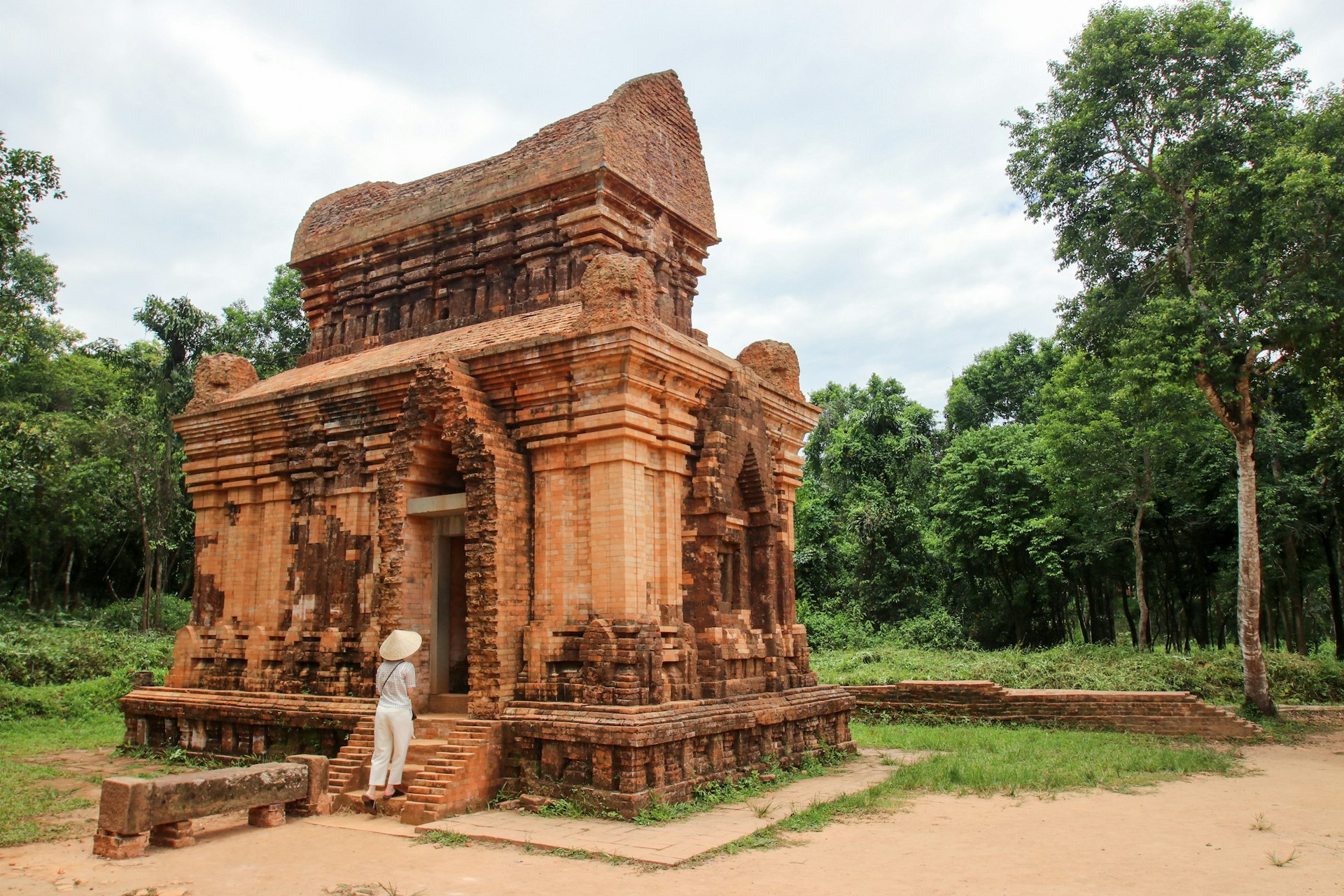
6. Unravel Vietnam’s complex religious history in My Son
While travelers mob the regal assembly halls, pagodas and historic homes of Hoi An, nearby My Son offers a calmer vision of Vietnam’s rich and layered past – particularly if you come in the afternoon. The big lure here is the atmospheric collection of UNESCO-listed Hindu temple ruins surrounded by jungle in a loop of the sacred Thu Bon river.
Sharing many architectural features with the Khmer temples of Cambodia and Thailand , these crumbling, red-brick shrines were built between the 4th and 14th centuries by the Hindu kingdom of Champa, whose descendants – the Cham people – can still be found in pockets in central Vietnam. With only birdsong to disrupt the quiet, the site scores highly for atmosphere as well as history,
Detour: If you use Hoi An as a base for exploring My Son, set aside a day to explore the nearby Cham Islands , an impressive marine reserve whose granite islands are still inhabited by Cham people, most now followers of Islam.
Explore My Son effortlessly with GetYourGuide. Book your tour today .
7. Visit the Cao Dai Holy See in Tay Ninh
One of the world’s youngest faiths, the Cao Dai religion was founded in the Mekong Delta town of Tay Ninh in 1926, fusing elements of ancestor worship, folk religions, Confucianism, Taoism, Buddhism and Roman Catholicism, with the ultimate goal of freeing the soul from the endless cycle of reincarnation.
To explore its complex customs, head to the cathedral-like Cao Dai Holy See in Tay Ninh. Inside, you’ll see weapon-toting statues, an all-seeing eye, and even a Communist-looking red star – the sect reveres, amongst other figures, Jesus Christ, Buddha, Mohammed and even French novelist Victor Hugo.
Planning tip: Visitors can enter the shrine to witness prayers four times a day; if you have time to kill before or after a visit, detour 15km (9.3 miles) northeast to Nui Ba Den mountain. You can take a gondola then hike to reach its summit cave temples, then whoosh back downhill on a luge-style slide.
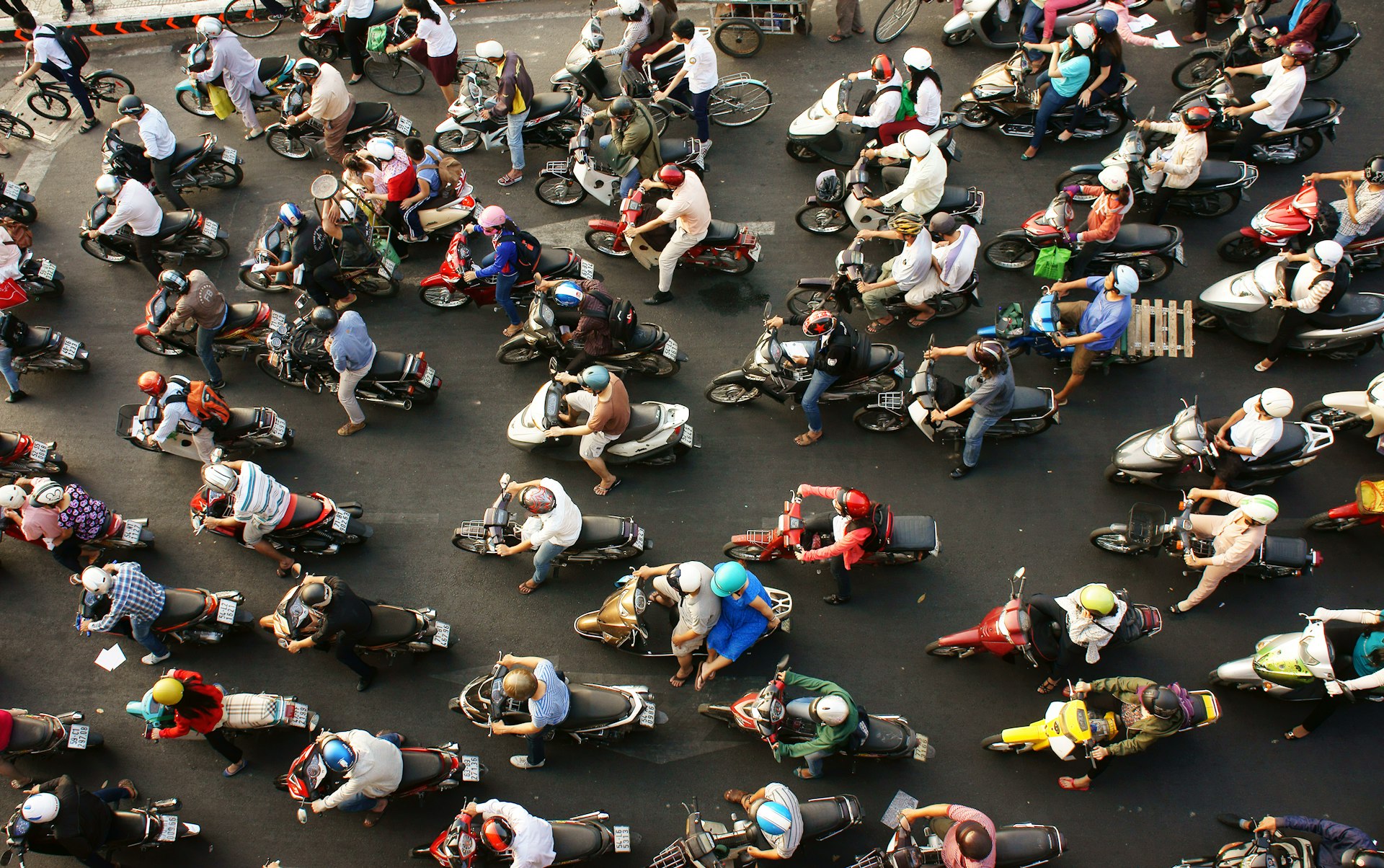
8. Rumble through the highlands by motorcycle
Vietnam largely moves on two wheels, and a motorcycle is by far the most enjoyable way to explore the hill country of the northwest , even if it takes some courage to adjust to the driving conditions, the errant livestock, and the steep, winding roads. Rent a quality bike in Hanoi and pop your wheels on the train to Lao Cai, to avoid the nerve-jangling ride out of the capital.
Once you reach the heart of the hill country, you can rumble out to outlying villages far from the tourist crowds for epic views and nights in charming homestays run by members of Vietnam’s tribal minorities.
Planning tip: You’ll need an international driving permit to ride legally in Vietnam, and this is only available for some nationalities. Many travelers manage to rent a motorcycle without a permit, but if things go wrong, you won’t be covered by your travel insurance.
9. See the American War through Vietnamese eyes
Modern-day Vietnam is moving on from conflict, but the battlefields from the American War still linger as a sobering reminder of what people had to go through to get to this point. Sites of American losses such as Hamburger Hill in the Demilitarized Zone (DMZ) are etched into the popular consciousness, but the wartime tunnels at Cu Chi near HCMC and Vinh Moc near Hue offer a glimpse of the Vietnamese experience, as ordinary people went to extraordinary lengths to resist the world’s greatest superpower.
10. Visit villages in the "Asian Alps"
The former French Hill station of Sapa is surrounded by mountains so impressive that French colonizers called them the “Tonkinese Alps,” and the surrounding villages of the H'Mong and Dao ethnic minorities have become popular destinations for hikers – and somewhat commercialized in the process.
For a taste of the scenic serenity that first drew travelers to these lush green hills, head instead to drier, calmer Bac Ha , or the trails and mountain roads around Ha Giang province, tucked against the border with China and seemingly sculpted by the hands of the gods. Stay in hospitable homestays and explore markets, peaceful stilt-house villages, French-era relics and soaring limestone pinnacles, away from the maddening crowds.
Planning tip: There's a lot of competition for the title of best vista in Vietnam but the lookouts gazing over the Dong Van Karst Plateau are strong contenders. The area is designated as a UNESCO Geopark, and the trip from Yen Minh to Dong Van and over the Mai Pi Leng Pass to Meo Vac is particularly spectacular.
11. Find a perfect cup of coffee in the Central Highlands
It was the French colonizers who brought coffee from the Arabian peninsula to Vietnam, but it was the farmers of the Southwest Highlands who mastered the art of coaxing quality beans from these undulating hills. Rising to 1600m (5250ft), Dak Lak Province provides the perfect terroir for growing robusta beans, and the regional capital of Buon Ma Thuot is a great place to tour plantations and track down a quality cup of ca phe , particularly during the annual coffee festival in March. If you insist on arabica beans, head to Dalat and visit the community K'Ho Coffee cooperative, supporting local coffee growers from the K’Ho minority.
Planning tip: The best time to visit coffee country is from September to the end of December when the harvest season is in full swing and plantations are filled with baskets of red beans.
Transform your visit the Central Highlands by booking with GetYourGuide.
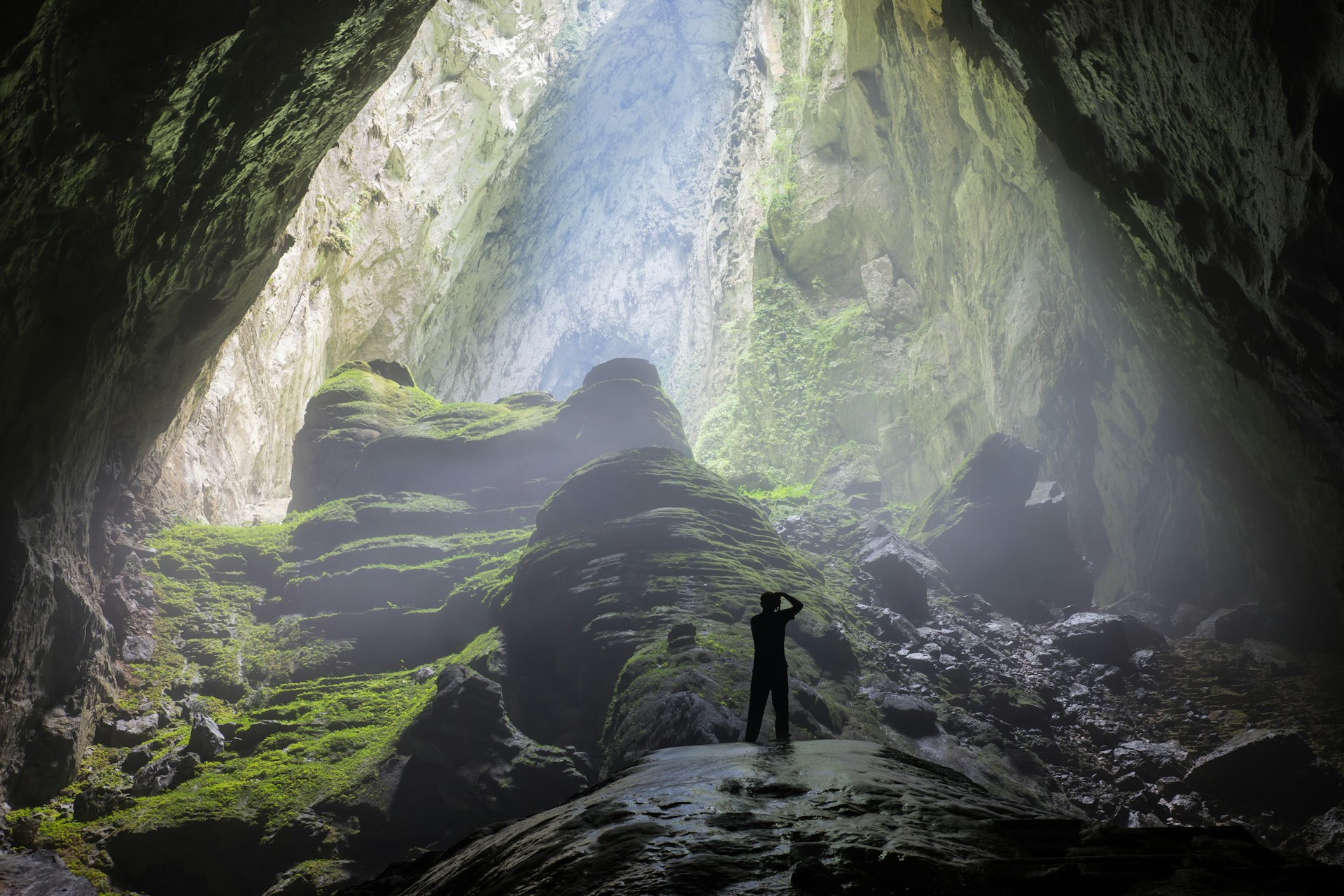
12. Enter the world’s largest cave in Phong Nha
Phong Nha-Ke Bang National Park in north central Vietnam is a lost world of jungles and caverns, including the world’s largest, Hang Son Doong. The scale of this wonder of nature is simply mind-blowing – a 747 airplane could fly through the cave’s main tunnel.
Parts of the limestone ceiling have collapsed, bringing in natural sunlight, so Hang Son Doong contains an entire rainforest ecosystem with flying foxes, rare langurs, and even a small population of tigers. Since 2012, one tour company – Oxalis Adventure – has been allowed to take a strictly limited number of visitors into Hang Son Doong on challenging four-day treks; the price is stratospheric but so is the scenery.
13. Walk with the ghosts of French Indochina in Ho Chi Minh City
The former capital of South Vietnam may have changed its name from Saigon to Ho Chi Minh City (HCMC) , but the past remains close to the surface, from the American War relics in the HCMC Museum and War Remnants Museum to the city’s elegant French-built mansions and civic buildings – many now housing museums, restaurants and boutique hotels.
To get a feel for vintage Saigon, stop for a cup of ca phe sua (milk coffee) at the elegant Hotel Continental Saigon , sample cutting-edge French cuisine at La Villa , and take a stroll past the Central Post Office, Notre Dame Cathedral and the People’s Committee Building – built as HCMC’s Hôtel de Ville but rebranded as the Vietnamese sent the colonizers packing.
Planning tip: To fully appreciate the marvelous, lip-tingling variety of HCMC street food, join a foodie-focused scooter tour with Saigon Street Eats .
Explore Ho Chi Minh City effortlessly with GetYourGuide. Book your tour today .
14. Bask on beautiful beaches
It was the beaches of Phu Quoc Island and Danang – developed as a playground for GIs during the American War – that put Vietnam on the map for seaside vacations, but both have developed into lively resorts. To find unspoiled stretches of sand, modern-day castaways aim their sights at the kitesurfing beaches around Mui Ne , the island sands of the Con Dao archipelago and long, languorous Hong Van Beach on Co To Island in Bai Tu Long Bay .
Planning tip: The best time for a beach trip varies as you move around the country. In central Vietnam, skies are brightest from January to August, while December to April is the beach window on the south coast, and northern Vietnam sees plenty of dry days from October to April.
15. Float on the Mekong Delta
Reaching out into the East Sea like an enormous hand, the mighty Mekong Delta marks the end point of Southeast Asia’s longest river – a 4350km (2700 mile) monster, rising on the Tibetan plateau and emptying to the south of Ho Chi Minh City. This waterlogged wonderland is Vietnam’s rice bowl, nurturing a network of sleepy towns and stilt villages whose residents use the river as their primary artery for life and trade.
For comfortable exploring, book an overnight cruise along the main channel near Can Tho or a cross-border trip to Siem Reap in Cambodia. For a less commercial experience, take a day trip to the backwaters near Ben Tre with Mango Cruises or make your own arrangements with boat owners in Delta villages.
This article was first published Sep 22, 2021 and updated Feb 29, 2024.
Explore related stories
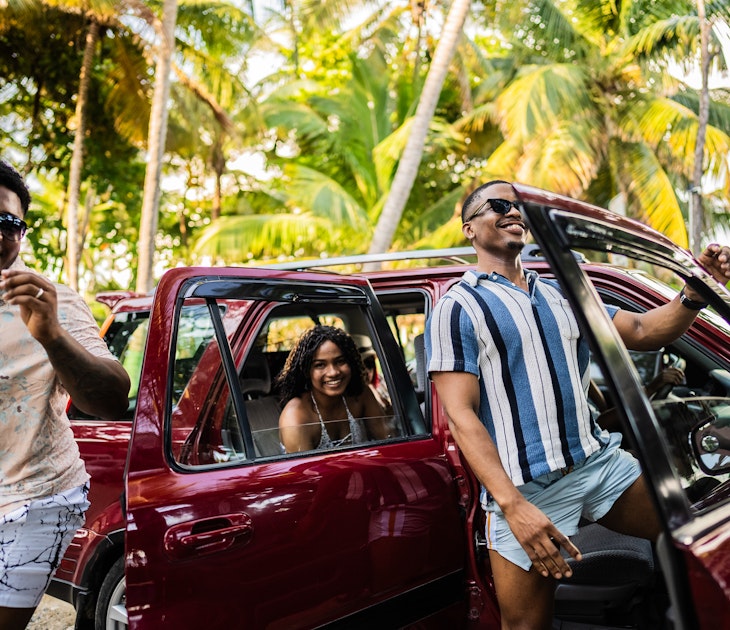
Feb 19, 2024 • 7 min read
After years of hard work, what better way to celebrate than with an amazing adventure? Here are the best places for a graduation trip.
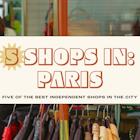
Jan 10, 2024 • 5 min read

Dec 21, 2023 • 9 min read
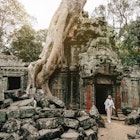
Nov 16, 2023 • 7 min read
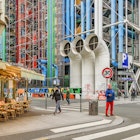
Nov 13, 2023 • 5 min read
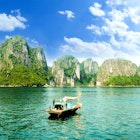
Nov 6, 2023 • 5 min read

Sep 28, 2023 • 6 min read

Sep 20, 2023 • 3 min read

Aug 10, 2023 • 12 min read

May 8, 2023 • 10 min read

Passing Thru Travel
Exploring 10 Lesser-Known Spots in Thailand, Vietnam, and Beyond – Hidden Gems of Southeast Asia 2024
Posted: February 20, 2024 | Last updated: February 20, 2024
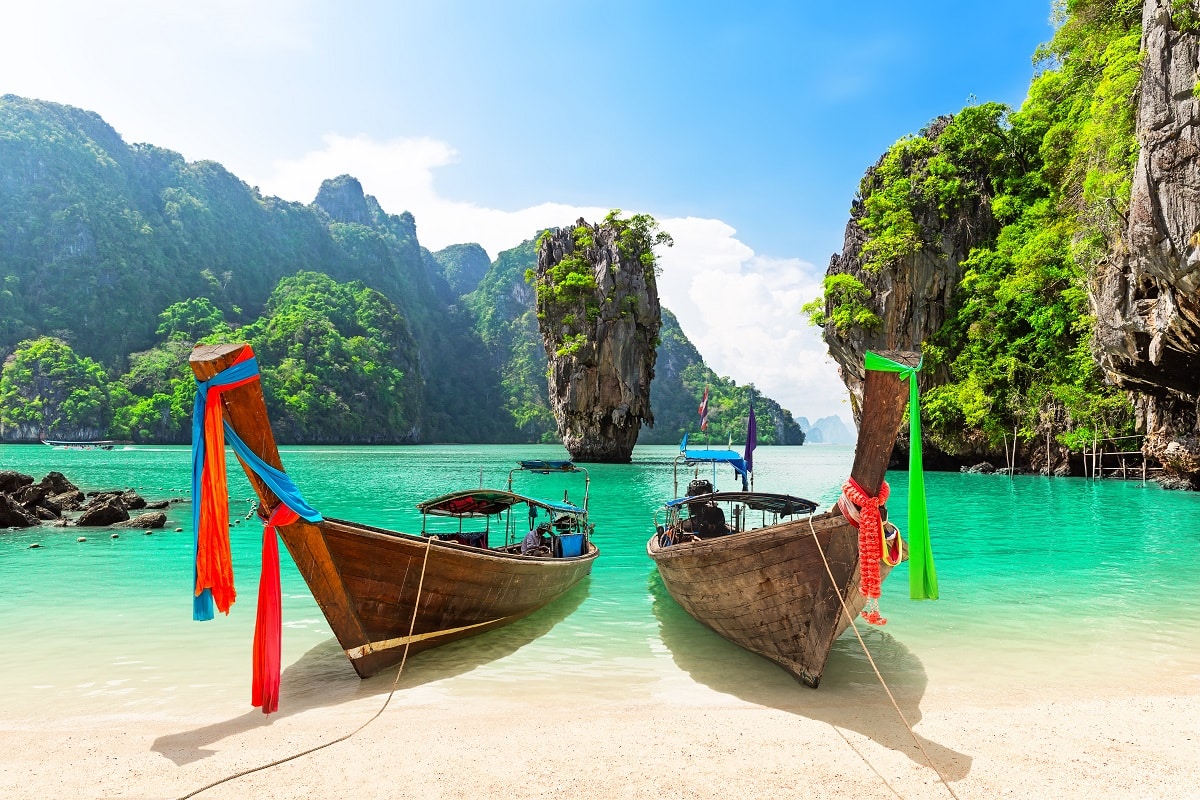
Southeast Asia, a region celebrated for its bustling cities, stunning landscapes, and rich cultural heritage, is a treasure trove of hidden gems waiting to be discovered. Beyond the well-trodden paths of Bangkok’s grand palaces and Bali’s sun-kissed beaches lie lesser-known spots that offer an authentic and enriching experience. This guide uncovers ten hidden gems across Thailand, Vietnam, and beyond, promising unique adventures and memories that last a lifetime.
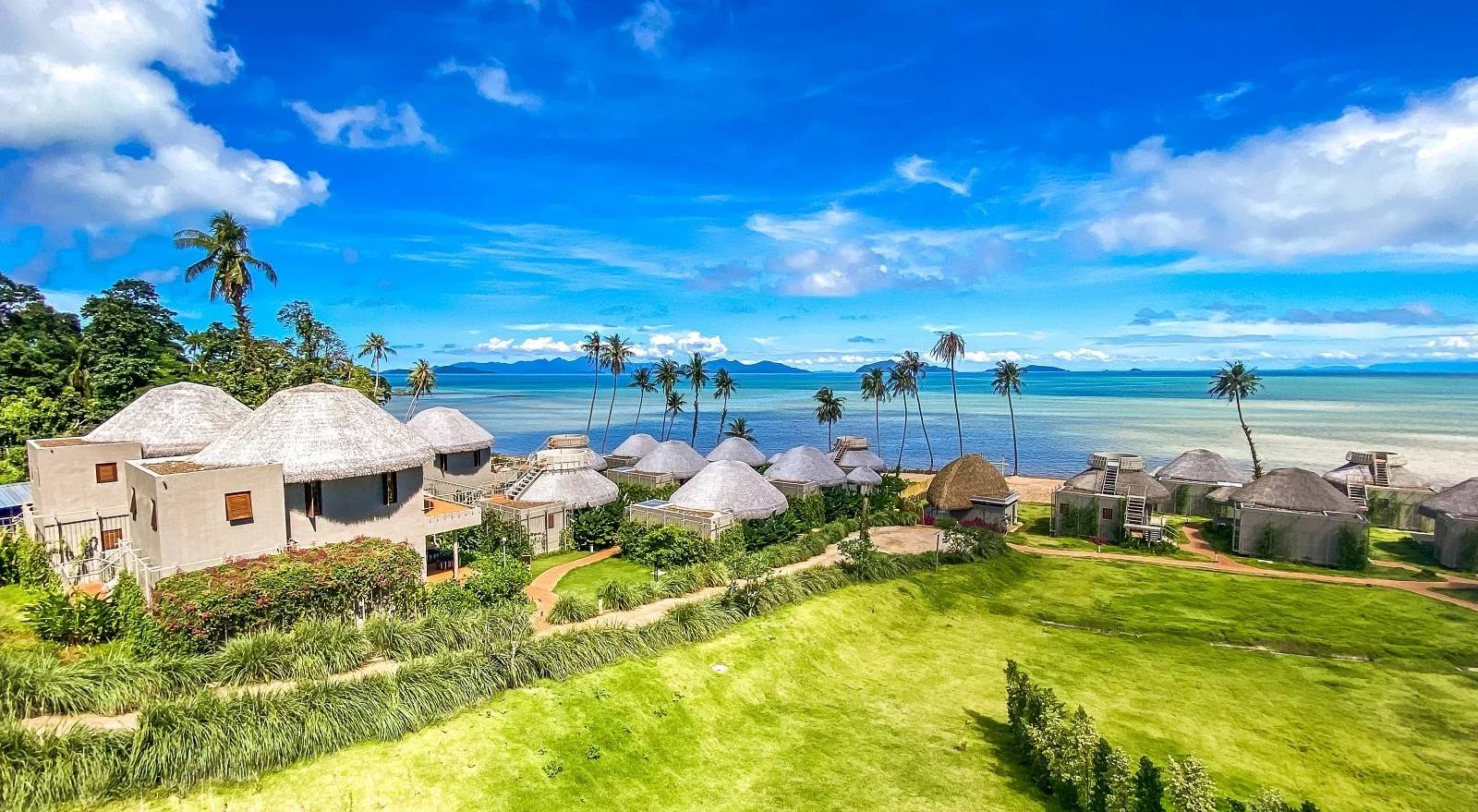
Koh Mak, Thailand
In Koh Mak, you’ll discover a tranquil haven distinct from the typical tourist destinations. As you explore this serene island in the Gulf of Thailand, the calmness of the environment becomes palpable. It’s a place where the beaches remain unspoiled, showcasing their natural beauty with crystal-clear waters inviting you for a swim or a snorkel.
The laid-back vibe of the island resonates through every corner, from the gentle sway of palm trees to the unhurried pace of life of the locals. You can unwind in true solitude, with the quiet hum of nature as your backdrop, making it an ideal spot for those seeking a peaceful retreat away from the crowds.
Insider’s Tip: Explore the island’s rubber plantations and coconut groves on a rented bicycle.
When To Travel: November to February, when the weather is dry and pleasant.
How To Get There: Take a boat from Trat, which is accessible by bus from Bangkok.
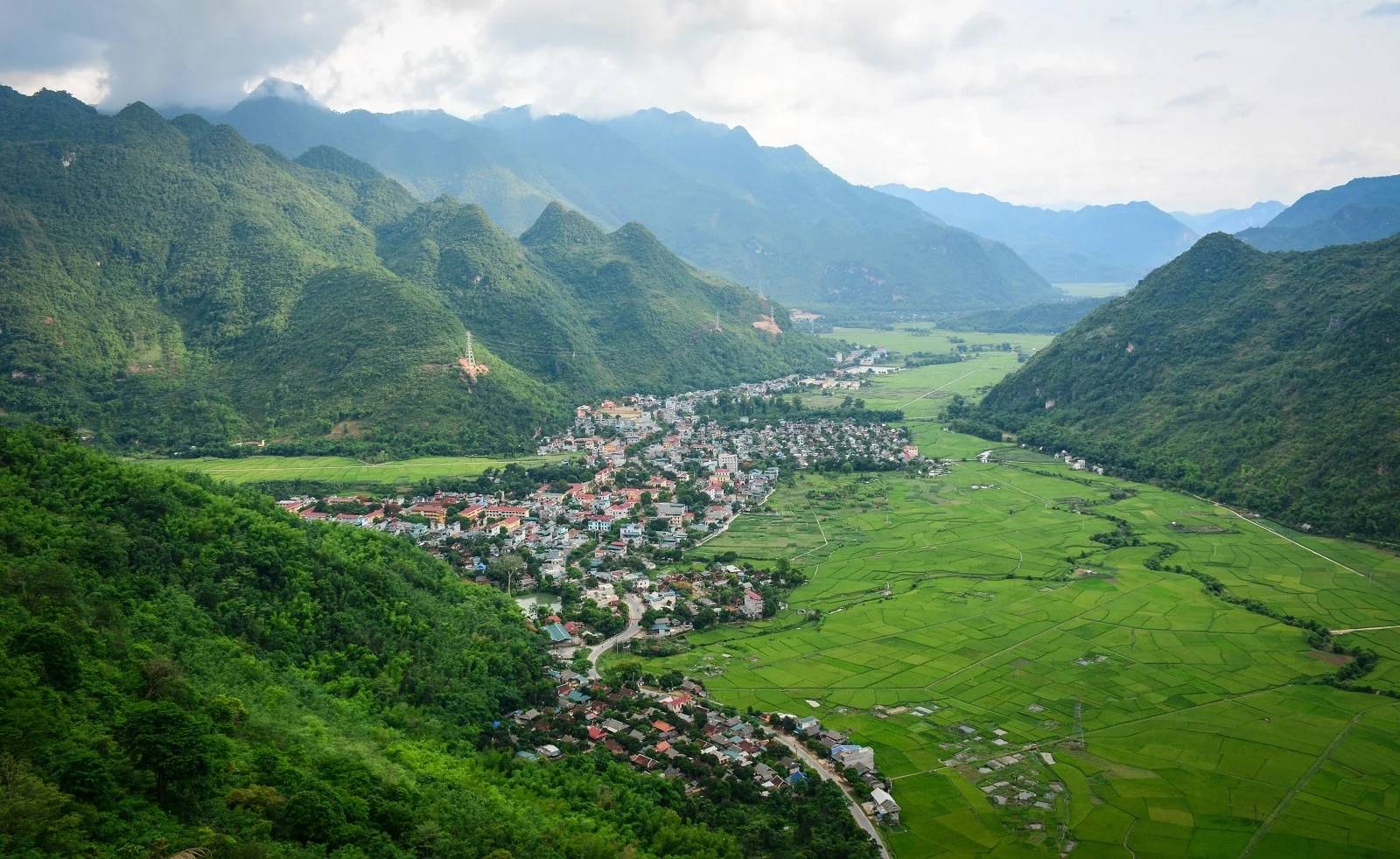
Mai Chau, Vietnam
Mai Chau is in the midst of a peaceful valley, a world away from the bustling city life. This area is famed for its stilt houses, an architectural style that speaks volumes about the local culture. As you wander through the village, you’ll notice the vibrant customs and traditions that are still very much a part of daily life here.
The rural charm of Vietnam comes alive in Mai Chau, offering you a chance to experience a different, more tranquil way of life. The simplicity and hospitality of the local people add to the authenticity of your experience, making your stay both enriching and memorable.
Insider’s Tip: Visit local villages to see traditional weaving and embroidery.
When To Travel: March to April or September to November for the best climate.
How To Get There: A scenic 3-hour drive from Hanoi.
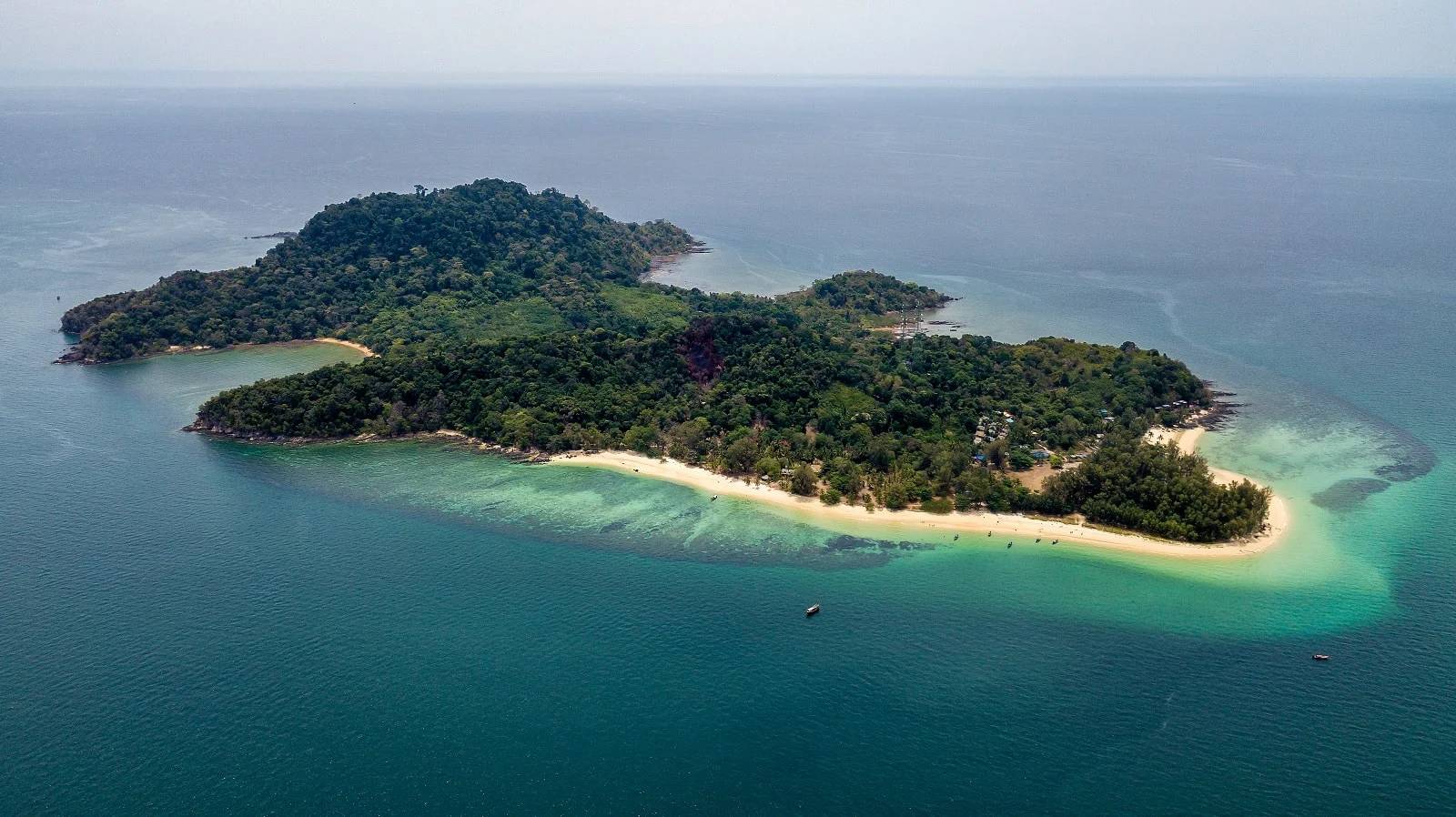
Koh Bulon, Thailand
On Koh Bulon, a small island nestled in the Andaman Sea, you’ll find an ideal escape for a digital detox. Here, the absence of cars and the tranquility of its streets instantly sets a tone of peace and quiet. As you step onto the island, you’re greeted by a sense of calm permeating the air.
The simplicity of life without the usual bustle of traffic or the constant buzz of technology allows you to reconnect with nature and yourself. It’s a place where your days can be spent enjoying the serene environment, listening to the gentle waves, and embracing the slow pace of island life, making Koh Bulon the perfect setting for anyone looking to step away from the digital world and indulge in the tranquility of nature.
Insider’s Tip: Enjoy snorkeling in the coral reefs surrounding the island.
When To Travel: November to April, avoiding the monsoon season.
How To Get There: Speedboat from Pak Bara Pier, reached by bus from Hat Yai.
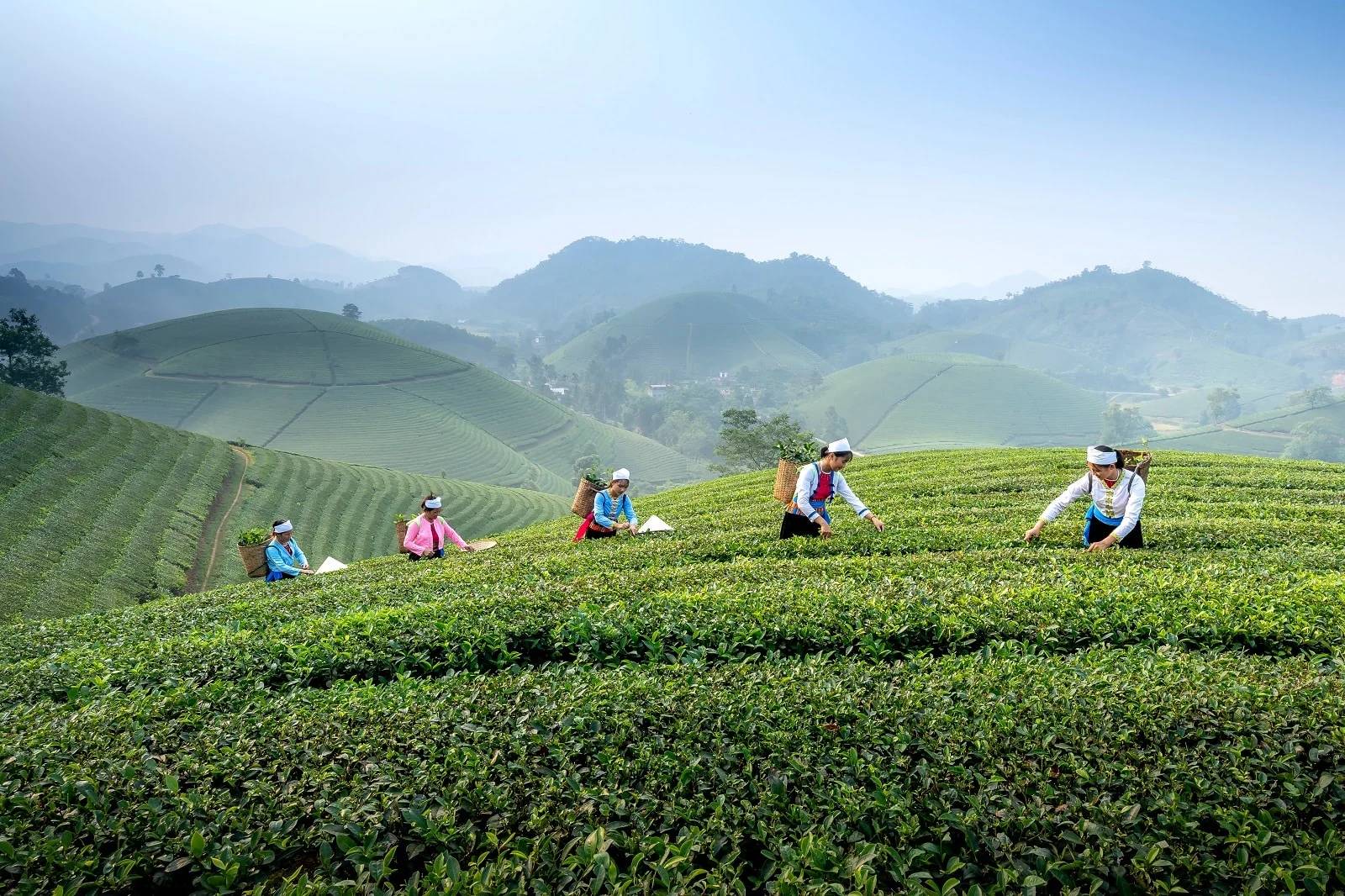
Pu Luong, Vietnam
In Pu Luong, a nature reserve known for its spectacular landscapes, you’re treated to a feast of mountain vistas and terraced rice fields. This reserve stands out for its rich biodiversity, immersing you in an environment where nature’s beauty is on full display. As you trek through the reserve, the changing scenery — from lush greenery to traditional agricultural landscapes — provides a refreshing backdrop to your adventure.
The terraced fields, in particular, showcase an age-old farming practice that shapes the land into a stunning patchwork. This area is not just a treat for the eyes; it’s an opportunity to experience the tranquility of Vietnam’s rural heartland and to witness firsthand the harmony between humans and nature. Pu Luong’s natural beauty and peaceful ambiance make it a must-visit for nature lovers and those seeking a serene getaway.
Insider’s Tip: Trekking and homestays offer immersive experiences in local hill tribe cultures.
When To Travel: May to September for lush landscapes post-rainy season.
How To Get There: 4 hours by road from Hanoi.

Koh Kood, Thailand
You’ll encounter an unspoiled natural environment on Koh Kood, Thailand’s fourth-largest island. This island is renowned for its raw beauty, encompassing everything from majestic waterfalls to ancient rainforests and tranquil beaches. As you explore, the diverse landscape offers a variety of experiences.
You can trek through dense rainforests, feeling the ancient trees’ presence and the untouched nature’s richness, or relax on serene beaches, where the gentle lapping of waves against the shore provides a calming soundtrack to your relaxation. The island’s waterfalls, hidden among the foliage, offer a refreshing escape from the tropical heat. Koh Kood is a destination where the simplicity and beauty of nature are at the forefront, making it an ideal choice for those seeking a peaceful retreat away from the more developed tourist areas.
Insider’s Tip: Visit the Ao Salad fishing village for a glimpse into local life.
When To Travel: November to February for ideal beach weather.
How To Get There: Ferry from Trat, which is connected by bus to Bangkok.
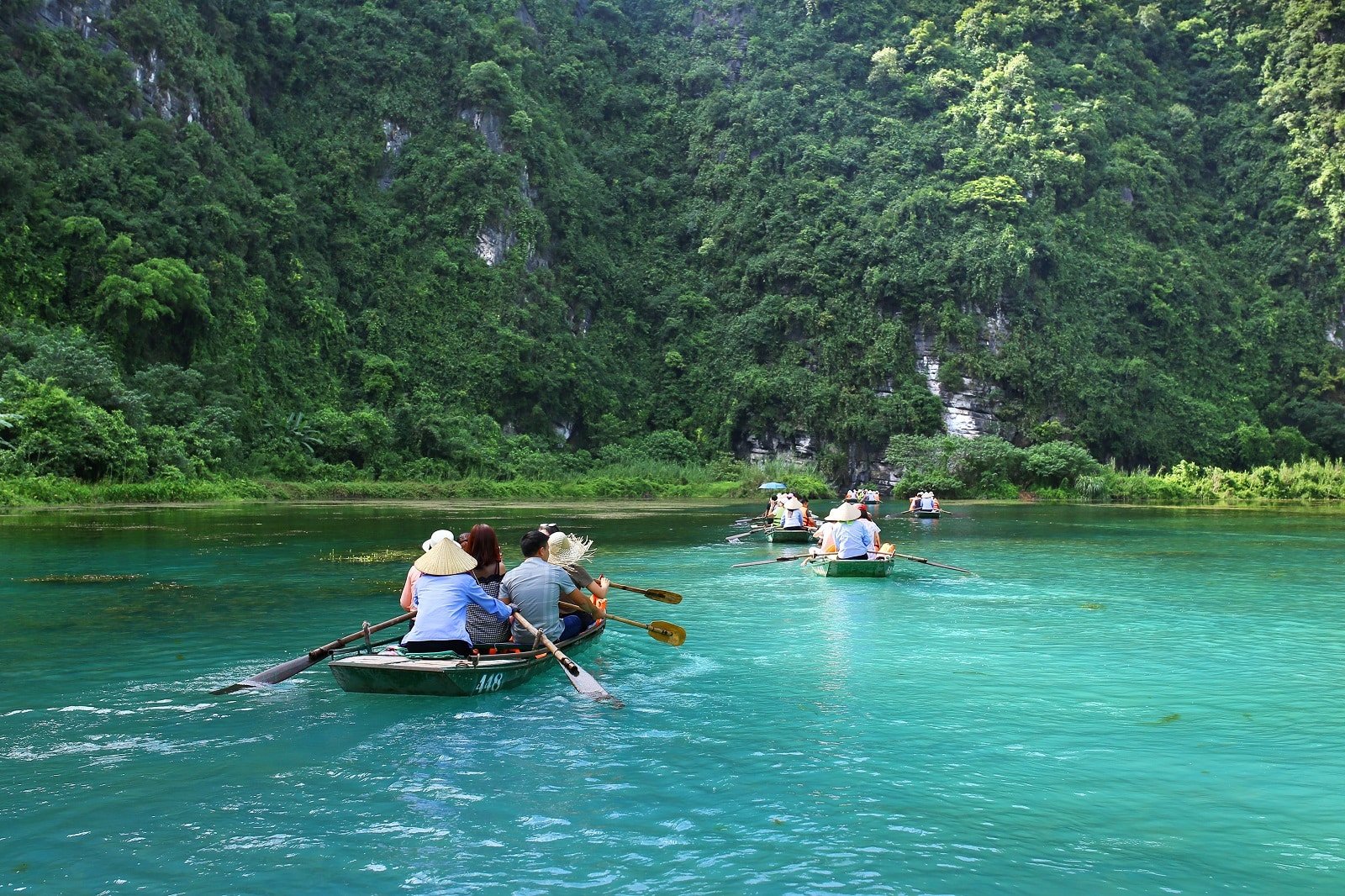
Ninh Binh, Vietnam
In Ninh Binh, often referred to as the “Ha Long Bay on land,” you’ll find yourself amidst a landscape of striking limestone karsts reminiscent of its famous maritime counterpart. As you travel through this region, the impressive formations rise dramatically from the earth, creating a unique and captivating scenery.
The area is not just about natural beauty; it’s also steeped in history, with ancient temples dotting the landscape, offering you a glimpse into Vietnam’s rich cultural past. The serenity of the rivers flowing through Ninh Binh adds to the peaceful atmosphere, allowing for tranquil boat rides that weave through the karsts, giving you a close-up view of this geological wonder.
This combination of natural splendor and historical significance makes Ninh Binh a must-visit destination for those seeking natural beauty and a deeper understanding of Vietnamese culture.
Insider’s Tip: Explore Trang An by boat to see its magnificent caves and temples.
When To Travel: March to May, when nature is at its most vibrant.
How To Get There: 2-hour train ride from Hanoi.
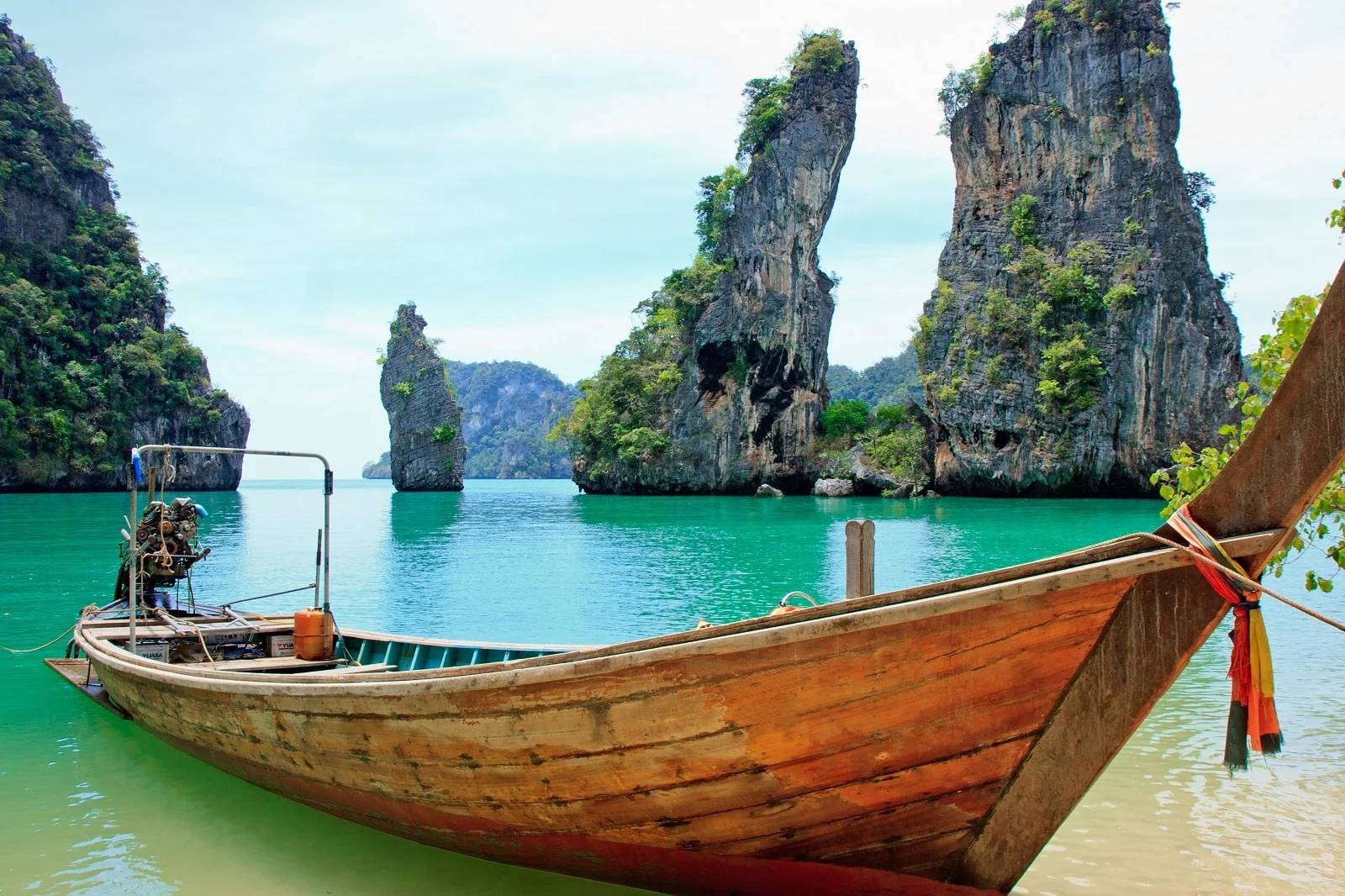
Koh Yao Noi, Thailand
Situated between the well-known destinations of Phuket and Krabi, Koh Yao Noi stands out as a peaceful haven with a distinctly rural charm. As you arrive on the island, you’ll be greeted by a tranquil atmosphere, starkly contrasting to the bustling tourist hotspots nearby. This island is ideal if you’re looking for a place to unwind and enjoy a slower pace of life.
The local community maintains a traditional way of living, providing a unique opportunity to experience authentic Thai culture. The scenic beauty of Koh Yao Noi, with its unspoiled beaches and lush greenery, adds to the island’s appeal, making it a perfect spot for relaxation and reflection. Whether you’re lounging by the sea, exploring the rural landscapes, or interacting with friendly locals, Koh Yao Noi offers a serene escape from the everyday hustle and bustle.
Insider’s Tip: Try the local seafood, freshly caught and deliciously prepared.
When To Travel: December to April for the best weather.
How To Get There: Ferry from Phuket or Krabi.
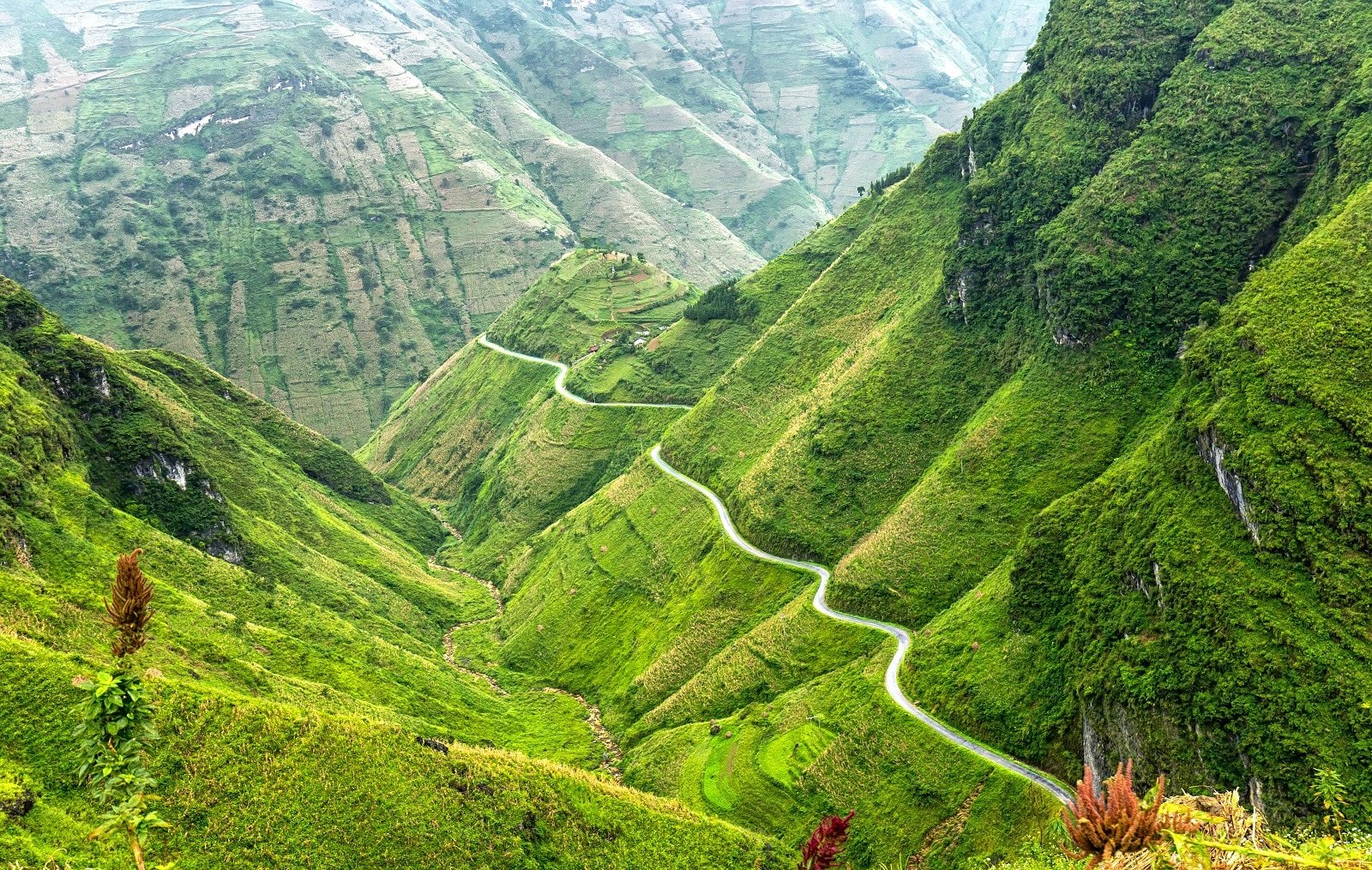
Ha Giang, Vietnam
In Ha Giang, a region known for its dramatic mountain passes and rich ethnic diversity, you’ll find an adventurer’s paradise and a cultural enthusiast’s dream. As you navigate the winding roads, each turn presents a new breathtaking view of steep hillsides and deep valleys, offering a thrilling experience for those who relish challenging drives or bike rides. This area is also a mosaic of diverse cultures, home to various ethnic groups with unique traditions and lifestyles.
Exploring Ha Giang, you can immerse yourself in these distinct cultures, gaining insights into the ways of life preserved for generations. Whether you’re trekking through remote villages, sampling local cuisines, or simply taking in stunning landscapes, Ha Giang offers a rich and authentic experience that connects you with nature and Vietnam’s cultural heritage.
Insider’s Tip: Take the breathtaking Ma Pi Leng Pass for stunning panoramic views.
When To Travel: October to April for clear skies and comfortable temperatures.
How To Get There: A 6-hour bus journey from Hanoi.
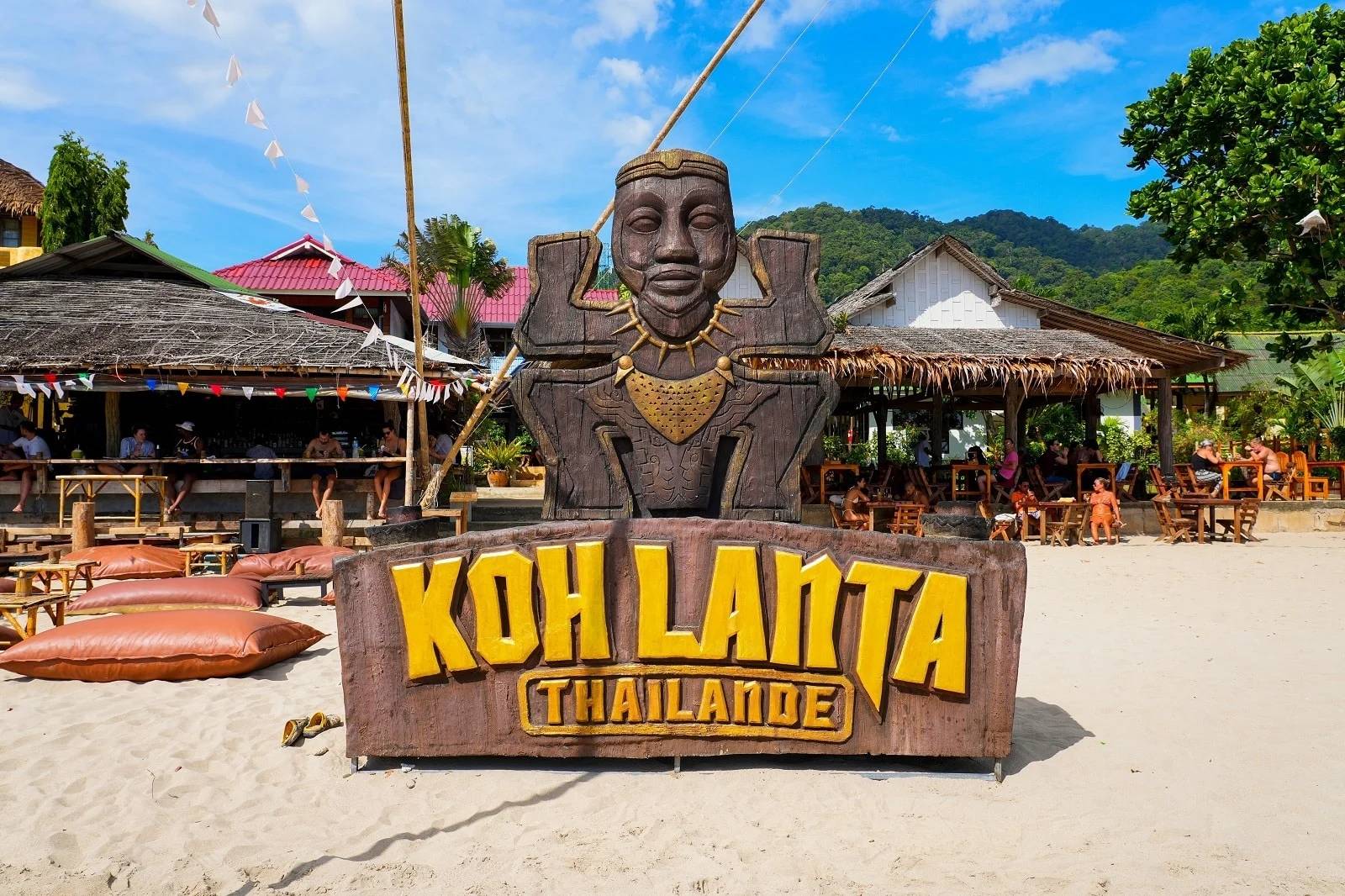
Koh Lanta, Thailand
Koh Lanta, a destination that strikes a perfect balance with its beautiful beaches, lush forests, and a laid-back atmosphere, is an ideal getaway for families and couples. As you explore the island, you’ll find picturesque and peaceful beaches, providing ample opportunities for relaxation or playful beach activities. The island’s interior, covered in dense forests, invites you to explore its natural beauty through hikes or guided tours, where the sounds of wildlife and the rustle of leaves create an immersive experience.
The laid-back vibe of Koh Lanta is one of its most appealing aspects, allowing you to enjoy a holiday at your own pace, whether that means lounging on the beach, enjoying local cuisine, or engaging in water sports. The welcoming and family-friendly environment of the island ensures a comfortable and enjoyable stay for visitors of all ages, making it a delightful choice for a memorable vacation.
Insider’s Tip: Visit the Lanta Animal Welfare center to learn about local wildlife conservation.
When To Travel: November to April, avoiding the rainy season.
How To Get There: Ferries from Krabi, Phuket, or Phi Phi Islands.
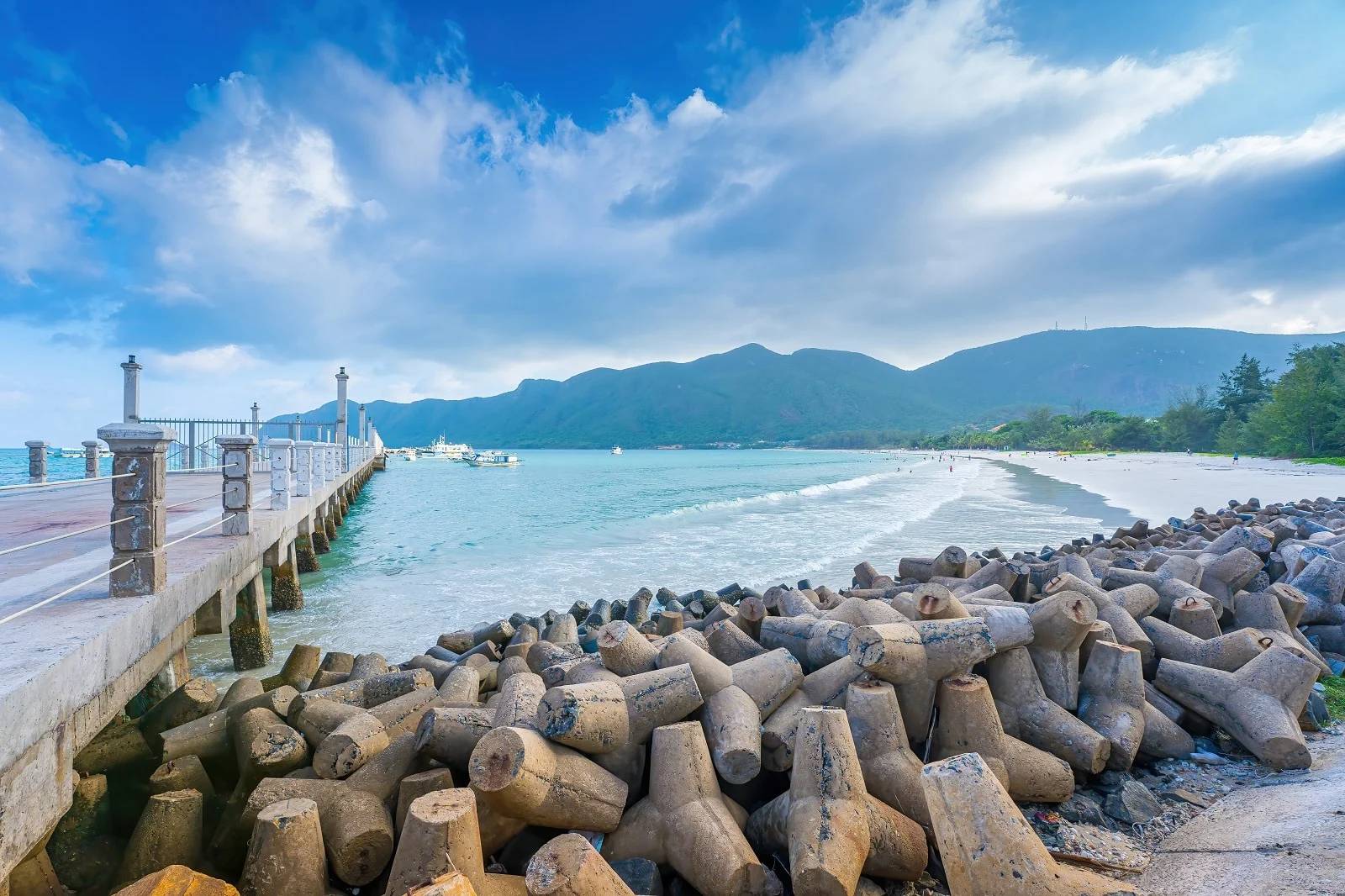
Con Dao Islands, Vietnam
In this archipelago, you’ll be introduced to a world of pristine beaches, a rich historical background, and abundant marine life, creating an ideal setting for eco-tourism. As you explore the islands, the untouched beaches offer a serene and natural beauty, ideal for those seeking a peaceful escape or a chance to connect with nature.
The area’s history is palpable, with remnants of the past waiting to be discovered, offering you a deeper understanding of the region’s heritage. The marine life here is particularly vibrant. It provides excellent opportunities for snorkeling or diving, where you can witness a diverse range of sea creatures in their natural habitat.
This focus on preserving the natural and historical aspects makes this archipelago a prime destination for eco-tourists keen on experiencing the environment responsibly while enjoying the unique offerings of this remarkable destination.
Insider’s Tip: Dive or snorkel to explore the stunning coral reefs.
When To Travel: February to July for the best underwater visibility.
How To Get There: Take a flight from Ho Chi Minh City or a ferry from Vung Tau.
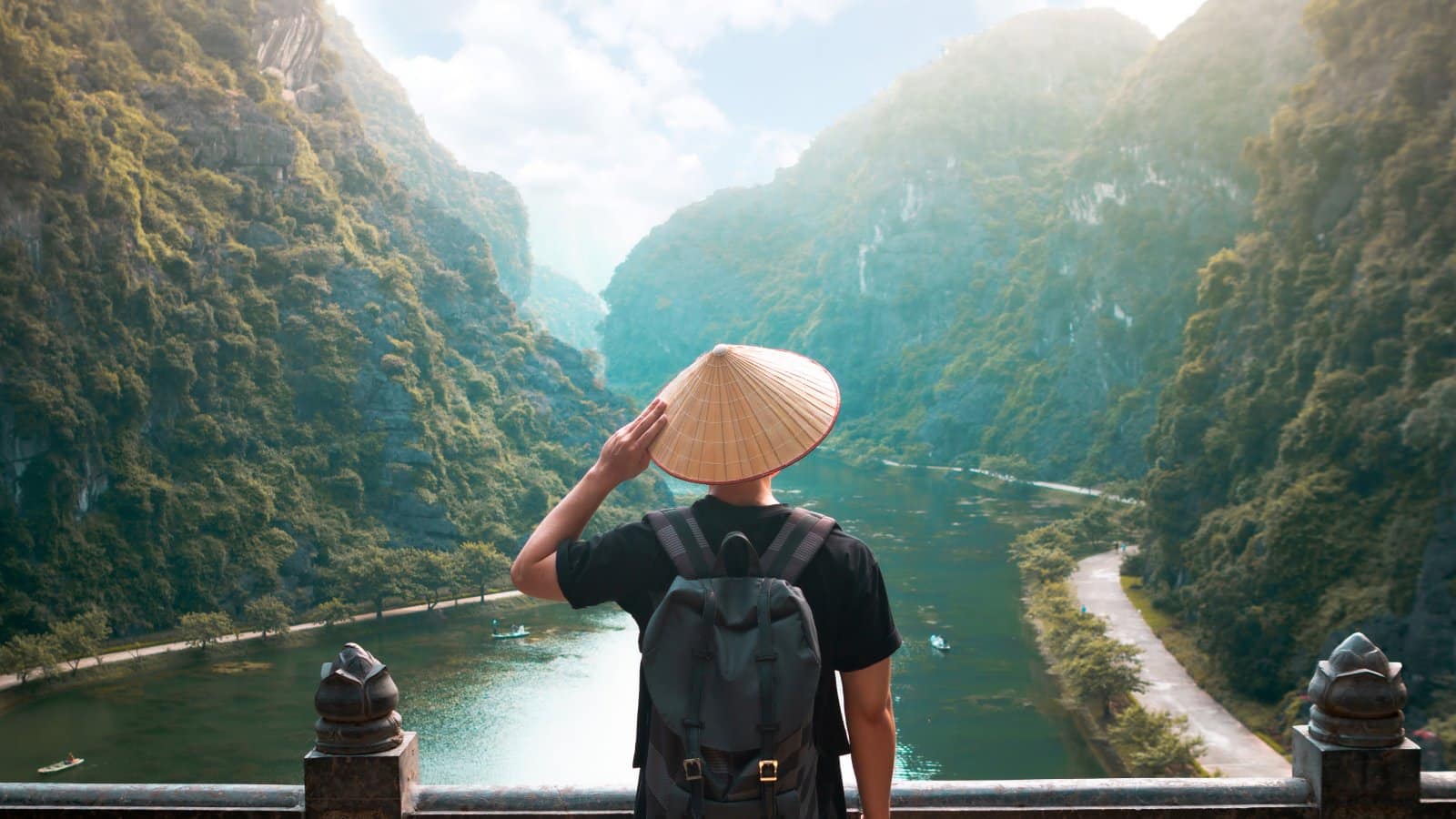
The Bottom Line
Each Southeast Asian destination has its unique charm, offering more than just beautiful scenery. They are gateways to understanding diverse cultures, histories, and the warmth of local hospitality. Whether you’re an intrepid explorer or a leisure traveler, these hidden gems promise an unforgettable journey into the heart of Southeast Asia.
The post Exploring 10 Lesser-Known Spots in Thailand, Vietnam, and Beyond – Hidden Gems of Southeast Asia 2024 republished on Passing Thru with permission from The Green Voyage .
Featured Image Credit: Shutterstock / Preto Perola.
For transparency, this content was partly developed with AI assistance and carefully curated by an experienced editor to be informative and ensure accuracy.
More for You
A Photo of Pedro Pascal and Dakota Johnson Kissing Passionately on the Street Has Gone Viral
Little League World Series hero, Olympic gold medalist Sean Burroughs 'tragically passed away' at 43
17 Smartest Dog Breeds
Looking to buy a home? This calculation will show what you can afford
McDonald's is considering a $5 meal deal. Here's what you'd get.
10 Plants That Help Keep Weeds Out of Your Garden
Boomers: These 5 Years Will Be the Most Important of Your Retirement, According to Wealth Managers
Surf legend Bethany Hamilton rips California officials after competition reverses stance on trans athletes
These Dog Breeds Are the Best With Cats
Kylian Mbappe confirms he will leave PSG at the end of this season
10 Reasons Hybrids Are Worse Than All-Electric Cars
Broncos release former Super Bowl champion WR
20 Best Cities Where You Can Buy a House for Under $100K
17 Small Garden Ideas for Your Tiny Lawn
Donald Trump Lawyers' Mistake-Filled Week
The Rise of Michelle Yeoh
These 10 Cars Are Actually Worth More Used Than New
Bitcoin plunges over, leading to millions in liquidations
Unplugged: 12 Items You Should Unplug Now To See A Drastic Change in Your Utility Bill
'The worst investment people can make': Real estate guru Grant Cardone says too many Americans are chasing after the dream of homeownership. Here's what he thinks you should do instead
Nomadic Matt's Travel Site
Travel Better, Cheaper, Longer
Southeast Asia Travel Guide
Last Updated: November 27, 2023
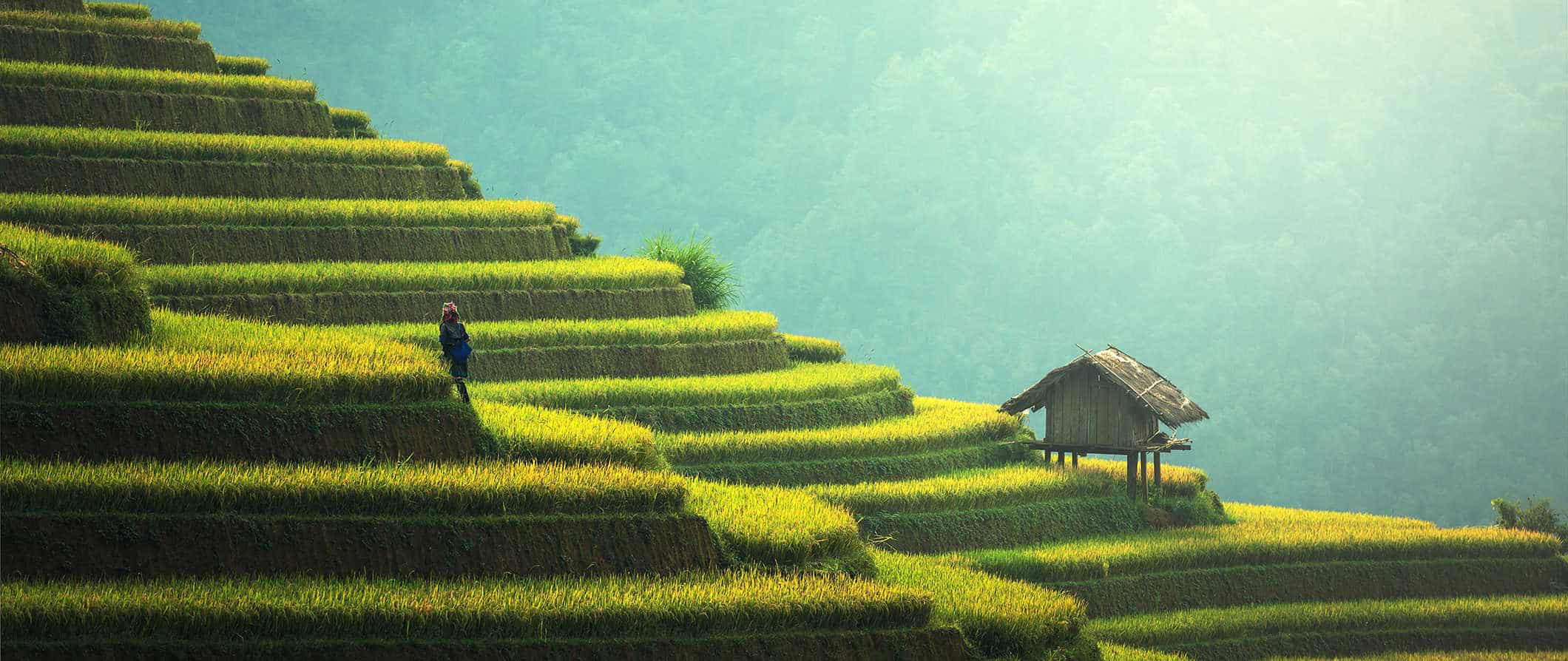
Backpackers have been traveling through Southeast Asia since the late 1960s and early 1970s, leaving a well-worn trail around the region.
Starting in beautiful Thailand, the trail makes its way to up-and-coming Laos, through Vietnam, and to the temples of Angkor Wat. It then winds back into Thailand, where people head south to party in the Thai islands before moving down to Malaysia and Singapore.
There are a few variations to the trail, but this is what it mostly covers.
I’ve been visiting this region since 2004 and spent years living in Thailand . I love backpacking Southeast Asia and have written extensively about it as I know it like the back of my hand.
It’s an especially great region for new travelers because it’s easy to travel around, it’s safe, and there are lots of other travelers you can meet. But it’s also perfect for veteran travelers too as there are tons of off-the-beaten-path destinations that the standard backpacker trail doesn’t cover.
In short, Southeast Asia has something for every traveler — and every budget.
This Southeast Asia travel guide will help you travel the region like a pro, ensuring you save money and make the most of your time in this fun, gorgeous, and lively corner of the world.
Table of Contents
- Things to See and Do
- Typical Costs
- Suggested Budget
- Money-Saving Tips
- Where to Stay
- How to Get Around
- How to Stay Safe
- Best Places to Book Your Trip
- Related Blogs on Southeast Asia
Click Here for Country Guides
Top 5 things to see and do in southeast asia.
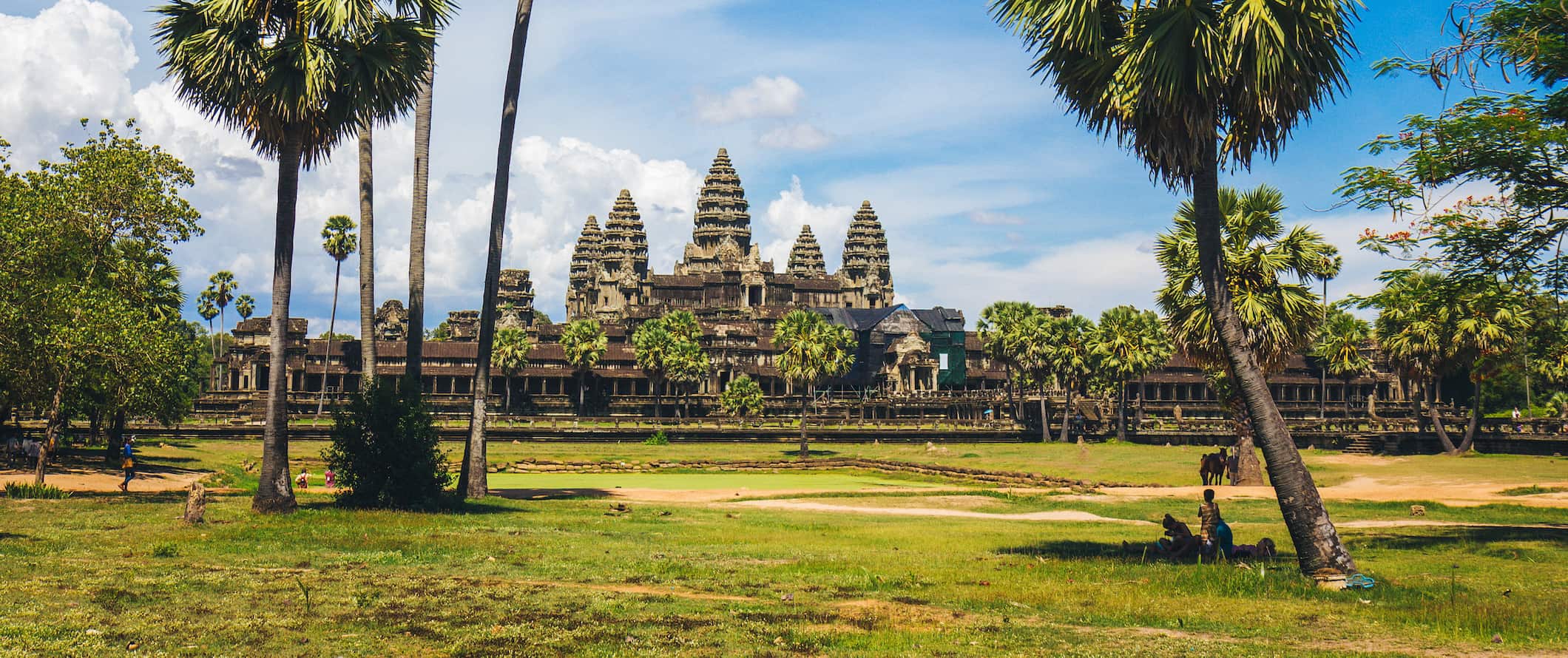
1. Admire Angkor Wat
One of the greatest human creations in history, the Angkor Wat temple complex is best explored over the course of a few days. The area is a UNESCO World Heritage Site created by the Khmer Empire and absolutely enormous. Temples to visit include Angkor Wat, Bayon Temple which has 216 gigantic stone face carvings, and Ta Prohm. I spent three days here and that simply wasn’t enough. A one-day pass is $37 USD, while a 1-week pass is $72 USD. If you’re here for multiple days, be sure to hire a driver and see some of the more out of the way ruins away from the main temple complex (and the crowds).
2. Explore Bangkok
Bangkok is the hub of travel activity in Southeast Asia. You can get anywhere you want from here. Though I hated it at first, the more I’ve spent time here the more I love it. Bangkok is like an onion whose many layers need to be peeled back. Some things not to miss include the spectacular Bangkok Grand Palace, Wat Pho, Chatuchak Market and Asiatique, and a canal trip on the Chao Phraya River. This is a city for foodies and wild nightlife.
3. Relax on some tropical islands
No visit to Southeast Asia would be complete without a visit to at least one of the thousands of tropical islands in the region. My top five include the Perhentian Islands (Malaysia), Rabbit Island (Cambodia), Ko Lanta (Thailand), and Boracay (Philippines). Lombok Island (Indonesia) has a chill vibe with unspoiled, perfect “desert island” beaches. There’s so many islands to visit. Be sure to add at least one to your trip. The country guides will have more information for you.
4. See Ha Long Bay
Sailing trips to this island-filled bay with stunning emerald waters, limestone formations, and marine life give you an appreciation for the natural beauty in Vietnam. Tours from Hanoi start at around $110 USD for two-day trips and increase from there. I love the colorful grottoes, hanging stalactites, and stalagmites of Surprise Cave (Sung Sot), Fairy Cave (Tien Ong), and Heaven Palace (Thien Cung). Make sure you go with a reputable company though as some of the cheaper boats are less than ideal. If you’d rather just visit for one day, day trips from Hanoi cost $55 USD.
5. Wander Kuala Lumpur
Other things to see and do in southeast asia, 1. go jungle trekking.
This region of the world is covered in amazing jungles with diverse wildlife, plentiful camping opportunities, and cool waterfalls. The best jungle treks are found in northern Thailand, Western Laos, and Malaysian Borneo (the latter are also the hardest and most intense). Some of my favorites include Danum Valley (Borneo) for its incredible wildlife; Ratanakiri (Cambodia) for its pristine wilderness and thousand-year-old trees; and Pu Luong Nature Reserve (Vietnam). Costs vary but jungle trekking generally costs $30-50 USD per day.
2. Attend the Full Moon Party
The biggest one-night party in the world welcomes up to 30,000 people with a party that stretches until dawn. Cover yourself in glow paint, grab a bucket of booze, and dance the night away with new friends on the island of Ko Phangan in Thailand. As the name would suggest, the party is on the night of the full moon. If you miss it, there’s always the half-moon party, quarter-moon party, and black-moon party. Really, every night is a party on Ko Phangan . Just avoid the flaming jump rope that occurs — I’ve seen people get burned badly!
3. Learn to dive
There are many great dive sites around the region for those interested in underwater exploration. You can learn to dive here at a fraction of what it would cost back home too. Some of the best places are Ko Tao (Thailand), Sipadan (Malaysia), as well as Gili Islands (Indonesia) and Coron, Palawan (The Philippines). A typical diving course is completed in three days. A PADI course typically runs $275 USD in Thailand, including three nights’ accommodation, though at smaller schools you can often negotiate down to $250 USD. Day trips for certified divers start at $165 USD. For information on Ko Tao, check out this blog post .
4. Eat street food in Singapore
Singapore is a foodie’s heaven. Try the hawker stalls of Singapore as well as Little India and Chinatown for some of the best and cheapest food in Asia. If you’re looking for a nice place to sit down and eat, eat at Singapore’s famed restaurants during lunch when restaurants offer discounts, making them a great deal. You’ll also find the most affordable Michelin-starred restaurants here (Tian Tian Hainanese Chicken Rice and Hawker Chan), offering world-class meals for just a couple of bucks!
5. Overload on temples
You can’t turn a corner without seeing a Buddhist temple in this part of the world. You’ll get temple overload at some point but visit as many as you can as each is unique to the country and region of the temple. There are so many places with high concentrations of ornate and beautiful temples. Check out Chiang Mai’s Wat Doi Suthep Temple and hike up the 300 steps to the golden Chedi that’s 600 years old!; Bagan’s Shwesandaw Pagoda from the 11th century with its stunning golden dome; Angkor Wat’s Ta Prohm is covered in iconic vines and enveloped in ancient jungle roots; Hue’s colorful Thien Mu Pagoda is perched atop a lush green embankment; Hoi An’s Quan Cong Temple with incredible Chinese architecture with hand-carved beauty and skill, and Luang Prabang’s Vat Xieng Thong with its golden, canopied roof. Most are free to enter, however, dress codes are enforced (you need to have your shoulders and legs covered).
6. Dive Sipadan
Located off Malaysian Borneo, Sipadan is one of the best dive sites in the world. If you have your dive certificate, make sure you venture out here. I absolutely love this area because it’s teeming with live turtles, diverse cave systems, sharks, dolphins, colorful coral, bright fish, and everything in between. Not a lot of people make it to this part of Malaysia, but it’s worth it to go the extra mile and make your way off the tourist trail a bit. Don’t miss Barracuda Point and The Drop-Off. Keep in mind that only 176 permits to dive at the island are issued each day, costing 140 MYR per person. The resorts on the neighboring islands each get a specific number of permits per day and require divers to stay with them for a few days. So you’ll need to stay at those resorts and dive into the surrounding areas before they can get you a Sipadan permit.
7. Fall in love with Bali
Bali is the most popular destination in Indonesia, and its famous Kuta beach is known for its wild parties and surfing ( though I think it’s overrated ). However, there is much more to Bali than just wild nights and sun-soaked days. If you’re a thrill seeker, hike up to the top of Mount Batur, an active volcano, for a breathtaking sunrise. Paragliding and white water rafting are also super popular here, as is surfing (it’s an affordable place to learn if you’ve never done it). There are also lots of hot springs to enjoy, the Ubud Monkey Forest (a popular temple and nature reserve home to hundreds of monkeys), and numerous places to scuba dive, including the Liberty wreck and Manta Point.
8. Take in Ho Chi Minh City
Frantic, chaotic, and crazy, Ho Chi Minh City in Vietnam is the embodiment of the controlled chaos that rules Southeast Asia. You can’t quite figure out how this teeming mass of people and cars work together, but it does. Highlights here include touring the tunnels used by the Viet Cong in the 1960s, taking in the view from the Saigon Skydeck, eating your way through the street food scene, and seeing the city’s numerous temples.
9. Admire the sunrise over an Indonesian Volcano
One of the most popular tourist attractions on Java is Mount Bromo and its National Park. Don’t miss out on getting a photo of the smoldering Bromo volcano as it lies surrounded by the almost lunar landscape of the Sea of Sand. Get up early to catch one of the most memorable sunrises of your life. If you’re there in mid-August, you’ll be just in time to see Upacara Kasada, the traditional Hindu ritual of the Tenggerese, a Javanese tribe of the region.
10. Hike in Khao Sok National Park
Located in southern Thailand, Khao Sok National Park is constantly rated as one of the best parks in Thailand, with incredible trekking, camping, limestone karsts, cooling rivers, and a glistening lake. Visit for semi-challenging hikes, tons of wildlife, walking paths, and breathtaking sunsets. Park entrance costs around $6 USD while full-day guided tours are $95 USD. I highly recommend spending at least one night here to get the full experience.
11. Visit Kampot
Most people come to Kampot to enjoy the scenic riverside views, as well as the rolling hills that surround the city. Since you can explore easily enough on foot or by bicycle, Kampot is a great place to slow down and relax. There’s not much to do here but have lazy days by the river, chill, and eat (don’t miss the famous Rusty Keyhole for BBQ!). Don’t miss the pepper farms, as this region of Cambodia is filled with pepper farms where you can learn about the history of the spice, see how it is grown, and pick up what is considered some of the finest pepper in the world. Tours are usually free.
12. Take a cooking class
Food from this region is as varied as the countries themselves and learning how to cook a few dishes is a great souvenir of your time here. Even if you don’t plan to cook back home, you can still spend a day making and eating scrumptious food. Most big cities have cooking schools offering classes of 2-6 hours, often including a trip to the local market beforehand to select ingredients. I absolutely love cooking classes and urge you to take one at least once. They are a fun experience!
13. Take a food tour
If you’d rather eat instead of cook, taking a food tour is a fun way to gain insight into the region’s amazing noodle dishes, fresh seafood, sweets, and street food while learning about the history and culture behind the cuisine. Most major cities in Southeast Asia offer food tours. These include tours around local markets, street stalls, and tours to locally-owned restaurants and cafes where you can sample the local cuisine and connect with a local chef. If you’re nervous about street food, this is a great way to try some in a controlled setting. Tours usually last 2-4 hours and include multiple stops and several different dishes, with prices costing $40-75 USD per person.
14. Visit an elephant sanctuary
While riding an elephant is on many a Southeast Asia bucket list, once you know how much the animals suffer from abuse in order to provide these rides, you might think twice about taking one. An even better way to interact with elephants is to volunteer at or visit the Elephant Nature Park near Chiang Mai in Thailand. It’s a phenomenal place, allowing you to give back to the community and these magnificent animals all at once. After coming here, you will understand why you should NEVER ride an elephant. A one-day visit costs $70 USD.
15. See The Killing Fields
A visit to Choeung Ek, also known as the Killing Fields, may not be the most cheerful way to spend an afternoon, but it makes for an educational and memorable experience. Over 3 million people were killed by Pol Pot’s regime, including countless women and children. I recommend getting a guide so you can really understand what you’re seeing as you explore the area. Also, this horrific tragedy took place less than 50 years ago and is still very present so please be respectful as a visitor. The site is located 10 miles from Phnom Penh. Half-day guided tours start at $66 USD.
16. Swim with Whale Sharks in Donsol
If you’re in the Philippines, check out the Donsol Whale Shark Interactive Ecosystem Project because there are not many experiences quite as adrenaline-inducing as swimming with a whale shark for the first time in crystal waters. These incredible creatures are around 45 feet (14 meters) long and yet incredibly gentle and curious. I loved floating at the surface being able to look below and see them slowly swim below me. Get some people together and rent a boat for a half day, explore the area, and go ‘shark-seeing’ for a good cause.
For a ton more information, visit my country specific travel guides for more detailed information on each place:
- Cambodia Travel Guide
- Indonesia Travel Guide
- Laos Travel Guide
- Malaysia Travel Guide
- Singapore Travel Guide
- Thailand Travel Guide
- Vietnam Travel Guide
Southeast Asia Travel Costs
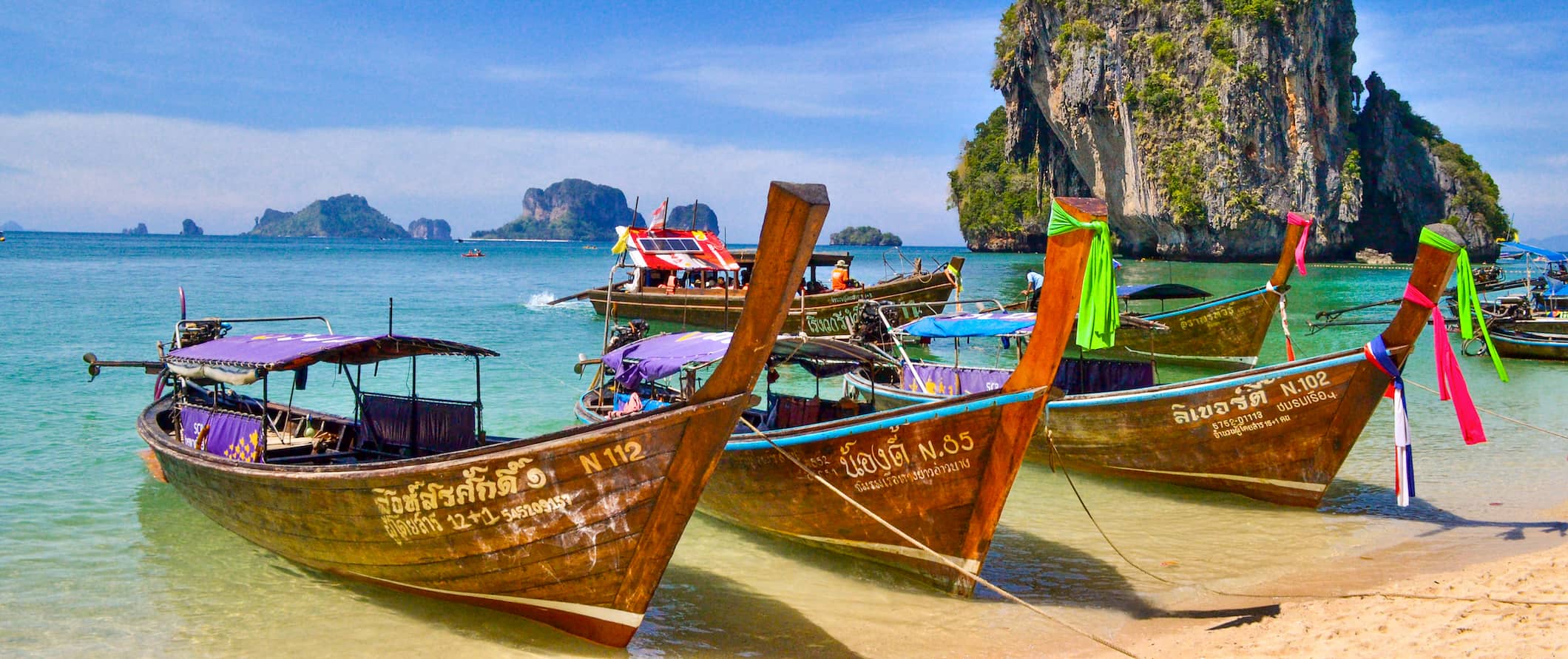
Accommodation – Accommodation in Southeast Asia is really cheap, making it the perfect place to travel if you are on a budget. Hostels are plentiful, as are budget guesthouses and hotels. It’s also very cheap to splash out here if you’re in need of some luxury.
Generally, you can find hostel dorm rooms for as little as $6-8 USD in Cambodia and $3-6 USD in Laos. In Thailand, 4-6-bed dorm rooms are $8-12 USD, while in Vietnam you can expect to pay $5-7 USD. In Indonesia, prices range between $5-10 USD for a 4-6-bed dorm room. Expect to pay at least $15-20 per night for a private room with air conditioning. Free Wi-Fi is standard in most hostels, free breakfast is common, and many hostels even have pools. In more remote areas, hot water isn’t common so make sure to check in advance if that’s an issue for you.
Simple guesthouses or bungalows throughout Southeast Asia generally cost $12-20 USD per night for a basic room with a fan (sometimes air conditioning) and hot water. If you want something nicer that includes a more comfortable bed and a TV, expect to pay $25-35 USD per night.
For backpackers, budgeting around $10 USD per night for accommodation is pretty safe no matter where you go in Southeast Asia. If you’re looking for a higher-end hotel room with more amenities, expect to pay $20-50 USD per night for a room. Anything over that is luxury territory.
Camping is available in certain areas, usually for just a few dollars per night for a basic tent plot without electricity. However, this is about the same price as hostels so it’s not really any cheaper.
Food – While each country’s cuisine varies, overall, Southeast Asian food is aromatic, spicy, and flavorful. Typical spices and herbs include garlic, basil, galangal, cilantro, lemongrass, kaffir lime leaves, chilies, and fish sauce. No matter what region you’re in, you can expect to find a variety of curries, salads, soups, noodle dishes, and stir-fries.
Rice and noodles are central to Southeast Asian food, while the meat is usually pork, chicken, fish, or seafood, which is everywhere on the islands and coastal areas.
While traveling Southeast Asia, street food is the most popular food and cheapest option. On average, these meals cost $1-5 USD. You find these stalls throughout this region lining most streets and every market. They are ubiquitous in the region. In Singapore, street food (from “hawker stands” as they’re known there) costs around $4-5 USD for a meal. Even if you go into small local restaurants, the price doesn’t increase that much.
Food that costs $2 USD at a street stall generally only costs $4-6 USD at a local restaurant. If you went into a restaurant in Thailand, you’d pay around $3-4 USD for a pad Thai that would have cost $1-2 USD on the street.
In Cambodia, street food is around $1-2 USD, while restaurants charge around $3-5 USD for a dish like amok (a coconut milk dish) or luc lac (pepper gravy beef).
Western meals, including burgers, pizza, and sandwiches usually cost around $7-10 USD. But these generally aren’t that great. If you want something that actually tastes as it does back home, expect to spend at least $10-12 USD for your meal.
While cheap, alcohol can take a bite out of your budget if you’re not careful. Those $1-2 USD beers add up! Wine and cocktails are more expensive, generally around $3-5 USD. A cappuccino is typically around $2 USD. Bottled water is plentiful and costs less than $1 USD.
There’s a growing cutting-edge foodie scene in the region and, if you want to splurge, you can do so on some really good meals. Big cities like Bangkok, KL, and Singapore, all have world-class Michelin star restaurants as well some incredible fusion restaurants.
Since dining out is so cheap in the region, there’s no point in grocery shopping unless you’re looking to get some pre-made salads or fruits. Additionally, a general lack of kitchens in most hostels and hotels makes it difficult to cook even if you wanted to. If you do purchase your own groceries, expect to spend around $25 USD per week for basic groceries like local produce, rice, and some meat (while avoiding expensive imported items like cheese and wine).
Backpacking Southeast Asia Suggested Budgets
On a backpacker budget of $45 USD per day, you can stay in hostel dorms, eat out at local markets and street stalls, limit your drinking, do mostly free activities, minimize paid activities, and use public transportation to get around. You’re not going to be able to splash out but you’ll be able to live the typical backpacker experience without really stressing over expenses.
On a mid-range budget of $85 USD per day, you can stay in budget hotels or private hostel rooms, eat more restaurant meals, do more paid activities like cooking classes, take some taxis, and enjoy a few more drinks. You won’t live large, but you won’t be missing out either.
On an upscale budget of $150 USD or more per day, you can stay in nicer hotels with more amenities, eat out as much as you want, do more paid tours including private tours, hire a driver, fly between destinations, and basically do whatever you want. The sky is the limit with this kind of budget!
You can use the chart below to get some idea of how much you need to budget daily, depending on your travel style. Keep in mind these are daily averages — some days you’ll spend more, some days you’ll spend less (you might spend less every day). We just want to give you a general idea of how to make your budget. Prices are in USD.
Southeast Asia Travel Guide: Money-Saving Tips
Backpacking Southeast Asia is cheap. There’s little opportunity to spend a lot of money since everything is already so inexpensive unless you intentionally are trying to splash out on fancy meals and high end hotels. The two reasons why most travelers end up overspending is that they eat a lot of Western food and drink way too much. If you want to save money while traveling in this part of the world, cut down on your drinking and skip the Western food. While country guides have more specific ways to save money, here are some general ways to save money in Southeast Asia:
- Stay with a local – Accommodation is cheap in Southeast Asia but nothing’s cheaper than free! Use Couchsurfing to stay with locals who have extra beds and couches for free. You’ll also meet great people who can show you around and share their insider tips and advice.
- Book tours and day trips as a group – You have more negotiation power when you’re with a group of people buying multiple spots or tickets. Traveling alone? Meet a friend at a hostel and see if they want to join the same tour as you. I’ve met some great friends over the years doing this and highly recommend it.
- Don’t book in advance – Don’t book any tours or activities before you get to your destination. They’ll be much cheaper when you arrive as you’ll be able to negotiate a lower price as you’ll find companies are often offering the same tour and competing. Anything you see online is more expensive than you need to pay!
- Eat on the street – The street food is the best food. The food is the best and cheapest you’ll find. It’s a great way to try new foods and get to chat with locals as well. This is where locals eat so if you want insight into local culture, good food, and savings, eat the street food. Look for where locals are eating to ensure that it’s safe to eat.
- Bargain hard – Nothing is ever at face value here. Bargain with sellers as most of the time, the price they’ve quoted is way higher. There’s a haggling culture in the region so play the game and save some money. It’s important not to convert it in your head to your own currency because it will usually sound cheap even though you might still be getting ripped off. You’ll never get the local price, but you might come close!
- Minimize your drinking – Drinks really add up. Even with cheap drinks, if you’re not aware, you’ll end up spending more money on beer than on food and accommodation. If you want to drink, head to the supermarkets, drink at the hostel, or check out the local happy hours.
- Pack a water bottle – A water bottle with a purifier comes particularly in handy in Southeast Asia since you can’t usually drink the tap water. Save money and thousands of plastic bottles and get a bottle that can purify the tap water for you. My preferred bottle is LifeStraw as it has a built-in filter that ensures your water is always safe and clean.
Where to Stay in Southeast Asia
I’ve been traveling Southeast Asia since 2005 and have stayed in hundreds of places. Here are some of my favorite places to stay in Southeast Asia:
- The Siem Reap Pub Hostel (Siem Reap)
- Onederz Siem Reap (Siem Reap)
- Mad Monkey Siem Reap (Siem Reap)
- Onederz Sihanoukville (Sihanoukville)
- Monkey Republic (Sihanoukville)
- Onederz Phnom Penh (Phnom Penh)
- Sla Boutique Hostel (Phnom Penh)
- The Magic Sponge (Kampot)
- Indigo House Hotel (Luang Prabang)
- Sa Sa Lao (Luang Prabang)
- Sanga Hostel (Pakse)
- Nana Backpackers Hostel (Vang Vieng)
- Dream Home Hostel (Vientiane)
- Traveller Bunker Hostel (Cameron Highlands)
- De’Native Guest House (Cameron Highlands)
- Kitez Hotel & Bunks (Kuala Lumpur)
- Sunshine Bedz Kuala Lumpur (Kuala Lumpur)
- Ryokan Muntri Boutique Hostel (Penang)
- Mad Monkey Hostel (Bangkok)
- D&D Inn (Bangkok)
- Kodchasri B&B (Chiang Mai)
- The Royal Guest House (Chiang Mai)
- Green Leaf (Khao Yai)
- Lonely Beach Resort (Ko Chang)
- The Sanctuary (Koh Phangan)
- Na-Tub Hostel (Koh Phangan)
- Pineapple Guesthouse (Phuket)
- Dream Lodge
- The Pod Capsule Hostel
- The Scarlet
- Under the Coconut Tree Guesthouse (Hoi An)
- Fuse Beachside (Hoi An)
- Pretty Backpackers House (Da Lat)
- Hanoi Old Quarter Hostel (Hanoi)
- Luxury Backpackers Hostel (Hanoi)
- The Hideout (HCMC)
- City Backpackers Hostel (HCMC)
How to Get Around Southeast Asia
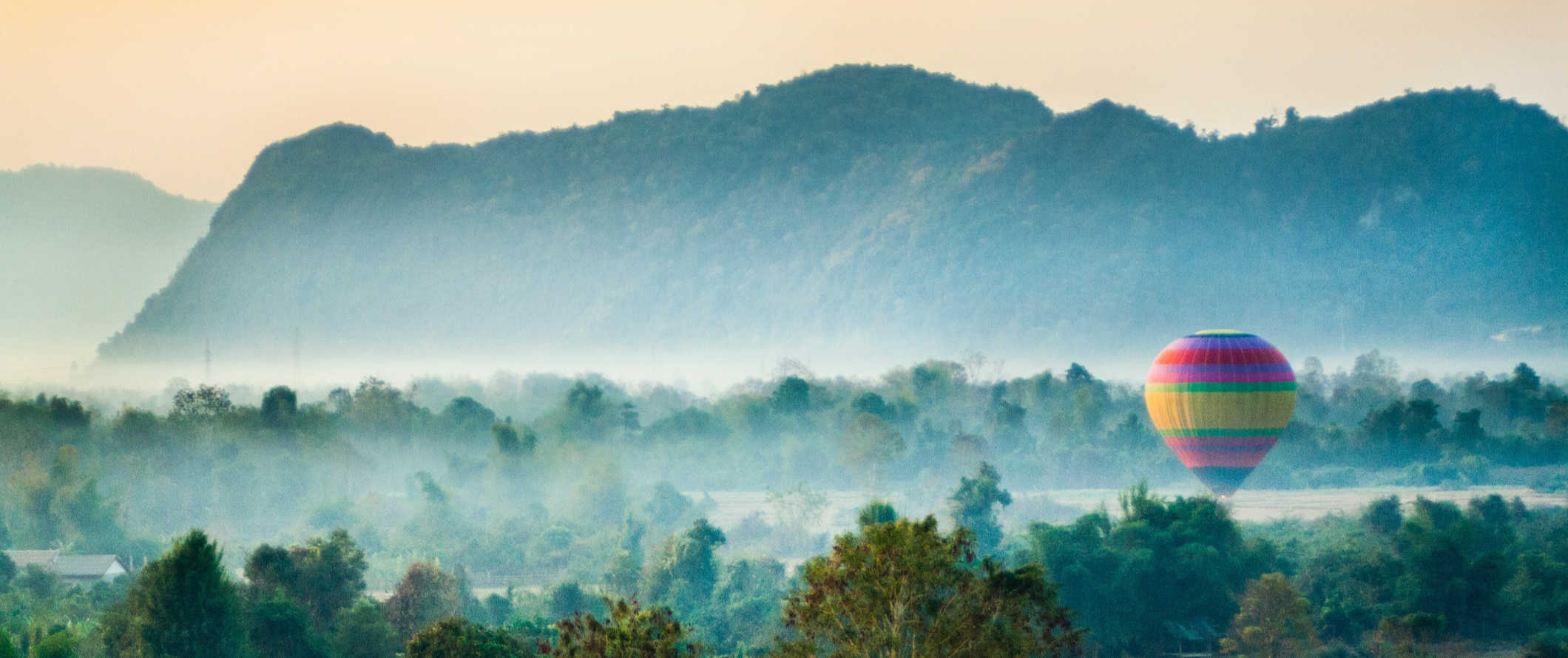
Public transportation – Public transportation costs from a few pennies to a few dollars, with Singapore and Malaysia offering the most comprehensive public transportation systems. In Thailand, local buses cost around $0.25 USD per trip, while the Metro and Skytrain in Bangkok cost $0.50-1.50 USD per trip. In Cambodia, a bus ticket in Phnom Penh costs just $0.40 USD per ride.
Major cities generally have subway systems but mostly you’ll be using the bus or shared taxis to get around.
Tuk-tuks (small, shared taxis with no meter) are available around much of the region and require a bit of haggling. They usually have 3-6 seats and generally cost more than public transportation but are faster. To find a reputable driver, ask your accommodation as they usually know someone. Tuk-tuk drivers can often be hired for the day for a discounted rate (this is what a lot of people do to visit the Killing Fields and Angkor Wat in Cambodia, for example).
Taxi – Taxis in the region are generally safe, though it’s not uncommon to have to haggle. Scams to rip you off aren’t uncommon either, so always ask your accommodation to call you a taxi whenever possible so you know you’ll get a reputable company.
In Singapore and Indonesia, taxi drivers do put on the meter. In Bangkok, you can get taxi drivers to use the meter, but if you’re hailing one in a tourist area, he might try to avoid using it. In Vietnam, the meter is sometimes rigged, but if you can get a reputable company like Mai Linh, you won’t have any problems.
Ridesharing – Grab, DiDi, and Gojek are Asia’s answer to Uber. They work the same way: you hire a driver to take you somewhere via the app, and you can pay via the app or in cash. It’s often more affordable than a regular taxi, though drivers are a bit unreliable as the practice is not as widespread here as in other parts of the world.
Just keep in mind that some drivers are driving motorcycles so be sure to double check what kind of vehicle is picking you up if you don’t want to ride on the back of one.
Bus – The easiest and cheapest way to travel around Southeast Asia is by bus. The backpacker trail is so worn that there is a very well-established tourist bus system to take you anywhere. Buses costs vary between $5-25 USD for a 5-6 hour journey. Overnight buses cost $20-35 USD depending on distance (they often have reclining seats so you can get a decent sleep).
You can check ticket prices and book tickets for all the different bus companies across Southeast Asia at 12go.asia.
Train – Train service is limited in the region and not something to really consider when you travel Southeast Asia. You can take a train up and down the coast of Vietnam and there’s some limited scenic rails in Malaysia. Thailand is the only country that has an extensive train system that lets you travel all its regions (and onward to Singapore) from Bangkok.
The train prices in Southeast Asia are determined by distance and class. Night trains with sleeper cars are more expensive than day trains. The night train to Chiang Mai from Bangkok takes twelve hours and costs $27 USD for a sleeper seat. However, that same train during the day is $8-9 USD. In Vietnam, trains run up and down the coast and cost $60 USD from Hanoi to Ho Chi Minh City.
Flying – The cost of flying around Southeast Asia has come down in recent years due to the rise of low-cost airlines. Scoot, Jetstar, and AirAsia are the biggest. Nok Air has a lot of flights within Thailand , and VietJet Air is popular in Vietnam . Lion Air serves Indonesia , but its safety record is really spotty and I personally would not fly them. If you book early, you can save on fares, as most of the airlines offer deeply discounted fare sales all the time, especially Air Asia.
Just make sure that the airport these budget airlines fly into isn’t too far out of your way (transportation from the secondary airport sometimes negates the savings from using the budget airline itself).
Also, keep in mind that you usually must pay to check your baggage on these cheap flights. If you wait to pay for your luggage at the gate, you end up paying almost double. Travel carry-on only to avoid this added cost.
All in all, I only recommend flying if you are pressed for time or find a super cheap deal. Otherwise, stick to the bus.
Hitchhiking – Hitchhiking in Southeast Asia is safe, though popularity of the practice varies by country (it’s more common in Malaysia, but not so much in Cambodia). Dress respectably, smile while making eye contact with drivers, and use a cardboard sign to tell people where you’re headed. Be prepared for long bouts of no pick-ups, especially if you’re traveling through more rural areas. Pack plenty of water and food. Also, make sure the people picking you up understand you’re hitchhiking and not flagging down a taxi.
Hitchwiki is a great resource for hitchhiking tips.
Car rental I don’t recommend renting a car in Southeast Asia. Rental cars are expensive ($40 USD per day or more) and the roads here are in poor shape. I would never drive around the region.
When to Go to Southeast Asia
The best time of year to visit Southeast Asia is from November to April when temperatures are milder (though temperatures vary drastically by region). It may be mild in Thailand in January and hot in Malaysia but in Northern Vietnam, it’s cold! Also, one of the biggest mistakes people make is not taking into account the rainy season. In some cases it won’t make a big difference but definitely does if it’s a beach trip.
In Indonesia, the best time to visit is April to October. Temperatures average 24-30ºC (75-86ºF), and the weather is mostly dry. July to September is the peak holiday season and when you can expect to pay the highest rates. December to February is the rainy season.
In Malaysia, January-March and June-September are the best time to visit, as these months have the lowest average rainfall. It is still hot and humid during this time though. The rainy season is from October to December. Singapore’s climate/weather is much like Malaysia’s.
In Vietnam, the weather varies by region. In Central Vietnam (including Hoi An and Nha Trang), January-May is the best time to visit because it is dry and the temperatures average 21-30°C (70-86°F). June to August is also a decent time to visit. If you want to stick around Hanoi, March to April is great, or October to December (for mildest temperatures). The rainy season is May-September.
Thailand has three seasons: hot, hotter, and hottest. It’s always warm, though the weather is nicest between November and February (which is also peak tourist season). Bangkok is “coolest” and driest during this time (but still averaging a hot 29°C/85°F each day). April and May are the hottest months, and the rainy season is June-October. The gulf islands get pretty rainy from August to December.
The dry season in Cambodia is from November-May and the cool season is from November-February (and when most people visit). Temperatures during this time are still high, but humidity is lower. Laos has the same cool season as Cambodia, with the dry season running from November-April.
In the Philippines, it’s mostly warm all year long with an average daily high of 26°C (80°F). There are rainy and dry seasons and temperatures are hot and dry from March-May and cooler December-February. The best time to visit is between January-April when it’s less humid. Monsoon Season is July-October.
For more information on when to go to places, visit the specific country guides.
How to Stay Safe in Southeast Asia
Southeast Asia is an incredibly safe place to backpack and travel — even if you’re traveling solo and even as a solo female traveler. Violent crime is super, duper rare. Petty theft (including bag snatching) is the most common type of crime in Southeast Asia, especially around popular tourist landmarks. Always keep your valuables out of reach on public transportation and in crowds just to be safe. Never leave your valuables unattended while at the beach and always keep a hold of your purse/bag when out and about as bag snatching is common.
That said, outside touristy areas, theft is really rare. Heck, it’s pretty rare in touristy areas too! But a little vigilance goes a long way and it’s better to be safe than sorry.
There are some common scams around that you’ll want to be aware of, such as the motorbike scam. This involves a bike rental company trying to charge you for damage to the bike that you didn’t cause. To avoid this, always take photos of your rental before you leave so you can protect yourself from baseless claims.
Another common scam involves a tuk-tuk driver taking you somewhere you didn’t want to go in hopes you’ll buy something from the shop/restaurant he dropped you off at (he gets a commission if you do). Simply refuse to buy anything and demand to go back to where you were — or find another driver.
For other common travel scams, read this post about major travel scams to avoid in the region .
Solo female travelers should feel safe here, though it’s generally a good idea to avoid walking around alone at night just to be safe. It’s always a good idea to carry some extra cash to get home in a taxi if you need to. Additionally, always keep an eye on your drink at the bar and never accept drinks from strangers. Be sensible when it comes to dating while traveling and meeting people in public places. As I’m not a woman, please check out some solo female travel blogs to get the best insight.
Overall, the people who get in trouble here tend to be involved with drugs or sex tourism. Avoid those two things and you should be fine. Keep in mind that it’s not always obvious how old someone is or if they’re a sex worker so be mindful when getting involved in romantic interactions. Also, penalties for drug use in this region are stiff so even if you’re here to party, skip the drugs.
Always trust your gut instinct. Make copies of your personal documents, including your passport and ID. Forward your itinerary along to loved ones so they’ll know where you are.
For more in-depth coverage of how to stay safe in Southeast Asia, check out this post that answers some frequently asked questions and concerns.
The most important piece of advice I can offer is to purchase good travel insurance. Travel insurance will protect you against illness, injury, theft, and cancellations. It’s comprehensive protection in case anything goes wrong. I never go on a trip without it as I’ve had to use it many times in the past. You can use the widget below to find the policy right for you:
Southeast Asia Travel Guide: The Best Booking Resources
These are my favorite companies to use when I travel. They consistently have the best deals, offer world-class customer service and great value, and overall, are better than their competitors. They are the companies I use the most and are always the starting point in my search for travel deals.
- Skyscanner – Skyscanner is my favorite flight search engine. They search small websites and budget airlines that larger search sites tend to miss. They are hands down the number one place to start.
- Hostelworld – This is the best hostel accommodation site out there with the largest inventory, best search interface, and widest availability.
- Agoda – Other than Hostelworld, Agoda is the best hotel accommodation site for Asia.
- Booking.com – The best all around booking site that constantly provides the cheapest and lowest rates. They have the widest selection of budget accommodation. In all my tests, they’ve always had the cheapest rates out of all the booking websites.
- Get Your Guide – Get Your Guide is a huge online marketplace for tours and excursions. They have tons of tour options available in cities all around the world, including everything from cooking classes, walking tours, street art lessons, and more!
- SafetyWing – Safety Wing offers convenient and affordable plans tailored to digital nomads and long-term travelers. They have cheap monthly plans, great customer service, and an easy-to-use claims process that makes it perfect for those on the road.
- LifeStraw – My go-to company for reusable water bottles with built-in filters so you can ensure your drinking water is always clean and safe.
- Unbound Merino – They make lightweight, durable, easy-to-clean travel clothing.
Get the In-Depth Budget Guide to Thailand!

My detailed 350+ page guidebook is made for budget travelers like you! It cuts out the fluff found in other guidebooks and gets straight to the practical information you need to travel around Thailand. You’ll find suggested itineraries, budgets, ways to save money, on and off-the-beaten-path things to see and do, non-touristy restaurants, markets, bars, safety tips, and much more! Click here to learn more and get your copy today.
Southeast Asia Travel Guide: Related Articles
Want more info? Check out all the articles I’ve written on Southeast Asia travel and continue planning your trip:

The 4 Best Hostels in Singapore
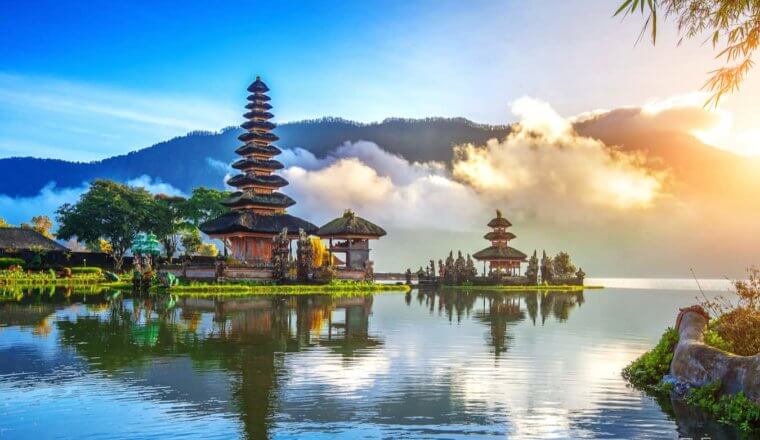
The 6 Best Hostels in Bali
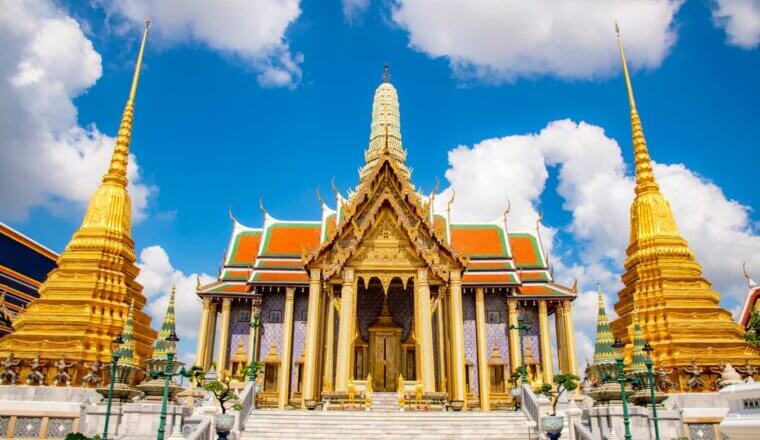
The 22 Best Things to Do in Bangkok
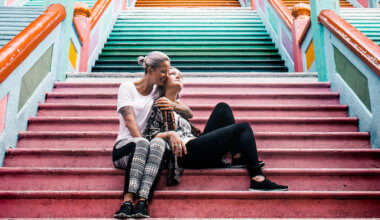
5 LGBTQ Travel Tips for Asia

Is Southeast Asia Safe for Travelers?
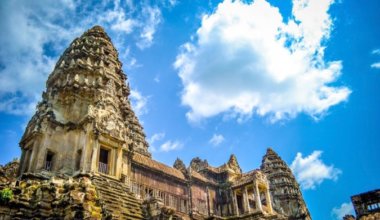
Backpacking Cambodia: 3 Suggested Itineraries for Your Trip
Get my best stuff sent straight to you, pin it on pinterest.
- Where To Stay
- Transportation
- Booking Resources
- Related Blogs

- China Daily PDF
- China Daily E-paper

China-Vietnam border tourism boom seen over recently concluded holiday

NANNING — Vuong Van Thanh, a tour guide from Vietnam, recently led 19 compatriots across the Beilunhe Bridge connecting the Vietnamese city of Mong Cai with China's Dongxing for a one-day tour of the border city in the Guangxi Zhuang autonomous region.
Separated from Mong Cai only by a river, Dongxing facilitates close interactions between border residents of China and Vietnam. It is also a popular tourist destination for Vietnamese tourists looking to experience Chinese customs and cuisine.
"Our guests are very interested in Chinese food and think it is very distinctive. This time, they have come for a special chicken soup," the tour guide said.
According to data from Fliggy, one of China's leading travel platforms, outbound travel experienced a peak in bookings during the recent May Day holiday, with bookings for travel services seeing strong growth of nearly 100 percent. Thailand, Malaysia, Singapore, Vietnam, Indonesia and other Southeast Asian countries were among the popular destinations for outbound tourism from China.
One-day tours to border cities such as Dongxing and Pingxiang, including shopping in supermarkets, buying small household appliances and sampling delicious foods, have become popular among Vietnamese tourists in recent years.
The May Day holiday is a statutory break in both China and Vietnam, and it is also a peak season for cross-border tourism for people from the two countries.
The general border inspection station in Guangxi expects that more than 140,000 inbound and outbound passengers traveled through Dongxing Port this May Day holiday, and Youyiguan Port likely saw more than 45,000 inbound and outbound passengers.
"During the May Day holiday, more than 200 tour groups are expected to have entered and exited the country in a single day. In order to cope with the peak passenger flow, we promptly communicated with Vietnamese travel agencies and inspection departments to obtain transit information of tour groups in advance, so as to reduce waiting time for passengers and provide a better travel experience for them," said Huang Yeqiang, who works for the Dongxing entry-exit border checkpoint.
"During the May Day holiday, our agency's more than 20 Vietnamese-speaking tour guides were all booked, and they were simply too busy," said Ye Xiaozhou, deputy general manager of Pingxiang South International Travel Agency Co Ltd, adding that cross-border tourism is recovering rapidly.
Self-driving tours are also a new trend in cross-border tourism between China and Vietnam.
During the holiday, Pingxiang Peace International Travel Service Co Ltd organized a cross-border self-driving tour involving 13 vehicles and 29 people, which visited Hanoi, Thanh Hoa, Halong Bay and other places in Vietnam.
"We hope to cooperate with more Vietnamese travel agencies and domestic car clubs, so that more Chinese self-driving tour enthusiasts can travel to Vietnam through Friendship Pass, enjoy exotic scenery, taste special delicacies and experience folk customs," said Liang Yunyan, general manager of the travel agency.
Cross-border tourism has flourished with the deepening of tourism cooperation between China and Vietnam. The two sides have worked together to explore new forms of cross-border tourism and promote the construction of cross-border tourism cooperation zones.
The China-Vietnam Detian Waterfall cross-border tourism cooperation zone, which began trial operations on Sept 15 in the border city of Chongzuo in Guangxi, has witnessed an increase in the number of tourists from both countries.
The zone also rolled out a series of events to attract tourists during the May Day holiday, including talks and interactive activities.
- College of Arts & Sciences
- Graduate School of Education & Counseling
- Current Students
- Parents & Families
- Faculty & Staff
Cambodia & Vietnam: Angkor Wat and a great food journey Hanoi to Battambang
Open gallery.
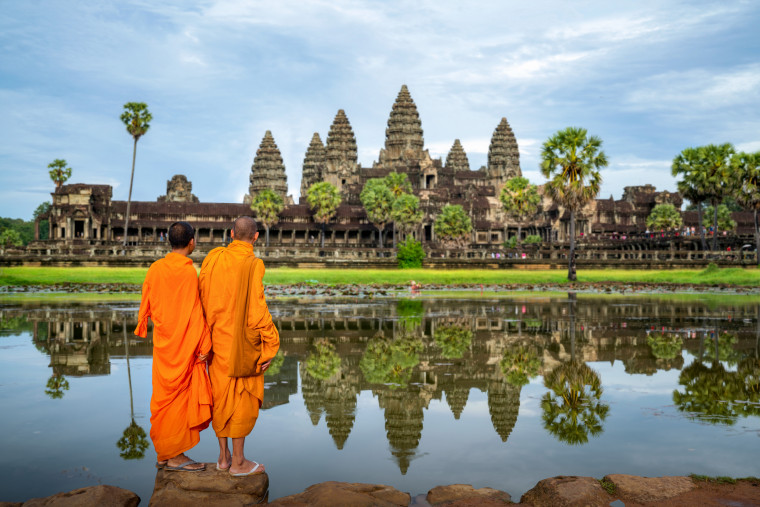
February 16 - March 1st, 2025 (Tentative)
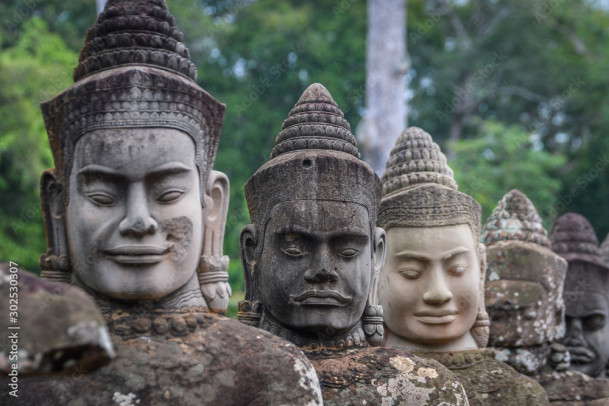
If you are interested please fill out this Interest Form . We will contact you as soon as the price is finalized and registration is open.
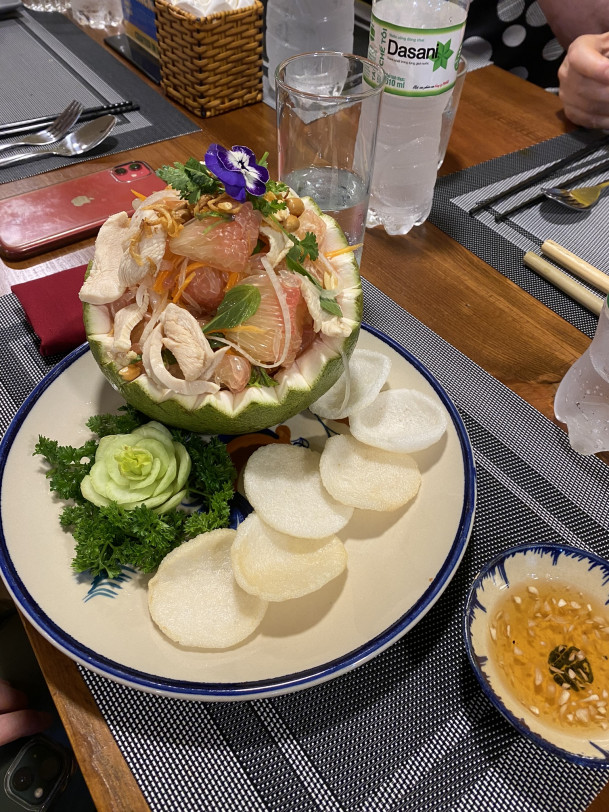
LC is located in McAfee on the Undergraduate Campus. MSC: 57
email [email protected]
voice 503-768-7900 fax 503-768-7900
Andrew McPheeters Associate Vice President for Community Education and Travel Programs [email protected]
LC Lewis & Clark 615 S. Palatine Hill Road MSC 57 Portland OR 97219
- Financial Aid

IMAGES
VIDEO
COMMENTS
Discover the stunning landscapes, culture, cuisine and events of Vietnam with e-visa and visa exemption. Explore the must-see sites, travel tips, virtual tours and more on the official tourism website of Vietnam.
Explore Vietnam's natural beauty, cultural diversity and dynamic cities with Lonely Planet's expert tips and advice. Find the best time and places to visit, attractions, transportation, visa requirements, money and costs, and more.
Discover Vietnam's diverse attractions, from beaches and islands to cities and caves, with this guide from Lonely Planet. Find out where to go, what to see and how to plan your trip to this fascinating country.
Learn about the weather, visa, culture, food and more before you travel to Vietnam. Find out how to book ahead, respect religious spaces, eat like a local and avoid pitfalls in paradise.
vietnamtourism.gov.vn. Official website of the Viet Nam National Authority of Tourism.
Learn everything you need to know about travel to Vietnam in this comprehensive guide. Discover the best places, activities, food, culture and tips for your trip to this amazing country.
Vietnam is a country with a countless of destinations to explore, and this Vietnam travel guide highlights some of the most popular ones. North Vietnam 1. Hanoi. Hanoi, the capital city of Vietnam, is known for its rich history, vibrant culture, and bustling street life. Visitors come to explore its charming Old Quarter, taste delicious street ...
Vietnam. The jungles and monsoon forests of Vietnam are diverse ecosystems that are alive with unique wildlife. Trekking is a popular activity here, particularly the mountains of Sapa and the primeval landscape of Cuc Phuong National Park. For a more urban escape, take a guided food tour of Ho Chi Minh City, making sure to squeeze in visits to ...
Tourism in Vietnam is a component of the modern Vietnamese economy. In 2019, Vietnam received 18 million international arrivals, up from 2.1 million in the year 2000. The Vietnam National Administration of Tourism is following a long-term plan to diversify the tourism industry, which brings foreign exchange into the country. ...
Vietnam (Vietnamese: Việt Nam) is a country in Southeast Asia with great food and a wealth of natural and cultural attractions. Despite the turmoil of the Vietnam War (called the American War in Vietnam), Vietnam has emerged from the ashes since the 1990s and is undergoing rapid economic development, driven by its young and industrious population. It remains less developed as a tourist ...
Vietnam. The jungles and monsoon forests of Vietnam are diverse ecosystems that are alive with unique wildlife. Trekking is a popular activity here, particularly the mountains of Sapa and the primeval landscape of Cuc Phuong National Park. For a more urban escape, take a guided food tour of Ho Chi Minh City, making sure to squeeze in visits to ...
See ways to experience (216) 2023. 12. Vietnam Museum of Ethnology. 6,601. History Museums. Admission tickets from $5. Discover the cultural heritage of Vietnam's ethnic groups through indoor and outdoor exhibitions, including traditional homes, textiles, and a water puppet theater.
Costs of Traveling in Vietnam. Travel on a budget in Vietnam, from $110 − $240 USD weekly per person, mid-range $280 − $830 USD, and high-end from $750 − $1250 USD. However, costs depend on factors like accommodation, transportation, and activities. We did not include flights. Check flight prices here.
Dalat attracts tourists seeking a serene escape with its breathtaking landscapes, vast pine hills, and vibrant flowers. Check out these top 15 destinations in Dalat in 2023. This is a detailed guide to the 2-week itinerary in Vietnam. The article includes detailed information on maps, routes, destinations, and costs for 2 weeks in Vietnam.
There's a lot to love about travelling in Vietnam, which stretches from the soaring mountains and fascinating ethnic groups of the north to the endless rice paddies and vibrant waterways of the Mekong Delta in the south, with more than 3000km of glorious coastline in between. Throw in a good transport infrastructure of buses, trains and flights ...
4. Phong Nha-Ke Bang National Park. Phong Nha-Ke Bang National Park. One of the best places to visit in Vietnam for caving, World Heritage-listed Phong Nha-Ke Bang National Park is a dramatic karst mountain formation honeycombed with huge caverns, which are home to superb stalactite and stalagmite displays.
Vietnam Travel Guide. Last Updated: April 29, 2024. From the stunning views of Sam Mountain and Ha Long Bay to the man-made artistry of the sacred temples and pagodas to the rice terraces and beaches, Vietnam is stunning. There's no denying that backpacking Vietnam (or simply traveling here on a vacation) is an experience filled with natural ...
Wherever we travel, it's the flavors we remember best. A crusty bánh mì or streetside pho, seafood cù lao hotpots and (scarily addictive) coffee with condensed milk. Vietnam tours are tasty, plain and simple. We won't just drop you in Halong Bay and call it a day. Our local leaders will introduce you to rice farmers in Sapa and fishermen on the Mekong Delta. They'll guide you through ...
Despite its tropical climate, Vietnam can be cold during winter months. In the northern town of Sapa, temperatures can drop into the 40sF between September and April. Contrastingly, highs in the South of Vietnam can reach 90 degrees. As you travel across Vietnam, you will experience a change in climate and this is important to note when packing.
Include a stay at Mekong Home on your tailor-made vacation to Vietnam created by Audley's travel experts. Skip to content. You can find all your favorites in the menu. MENU. Location: US. Change location. Back. UK / International; Canada; MyAudley; Favorites; Call toll-free until 5pm EDT. 617-223-4521. 617-223-4120 or
You may also be interested in: Four Seasons Resort The Nam Hai, Hoi An awarded a Five-Star rating by Forbes Travel Guide Vietnam's Tourism Arrivals Rebounding According to Statista.com,* Vietnam ...
12. Enter the world's largest cave in Phong Nha. Phong Nha-Ke Bang National Park in north central Vietnam is a lost world of jungles and caverns, including the world's largest, Hang Son Doong. The scale of this wonder of nature is simply mind-blowing - a 747 airplane could fly through the cave's main tunnel.
Passing Thru Travel. Exploring 10 Lesser-Known Spots in Thailand, Vietnam, and Beyond - Hidden Gems of Southeast Asia 2024
A comprehensive budget travel guide to Southeast Asia with tips on things to do, ways to save money, transportation, accommodation, and more. ... and marine life give you an appreciation for the natural beauty in Vietnam. Tours from Hanoi start at around $110 USD for two-day trips and increase from there. I love the colorful grottoes, hanging ...
Self-driving tours are also a new trend in cross-border tourism between China and Vietnam. During the holiday, Pingxiang Peace International Travel Service Co Ltd organized a cross-border self ...
Cambodia & Vietnam: Angkor Wat and a great food journey Hanoi to Battambang ... Associate Vice President of Community Education & Travel Programs: [email protected] or 503-768-7936. Copy Link; L&C Travel. L&C Travel. Expedition Leaders; Quotes from Travelers; Travel Insurance; Faculty Overseas Fund; Past Events, Trips, and Photos;